
Travel
Passion Lilie
Homegrown Cotton
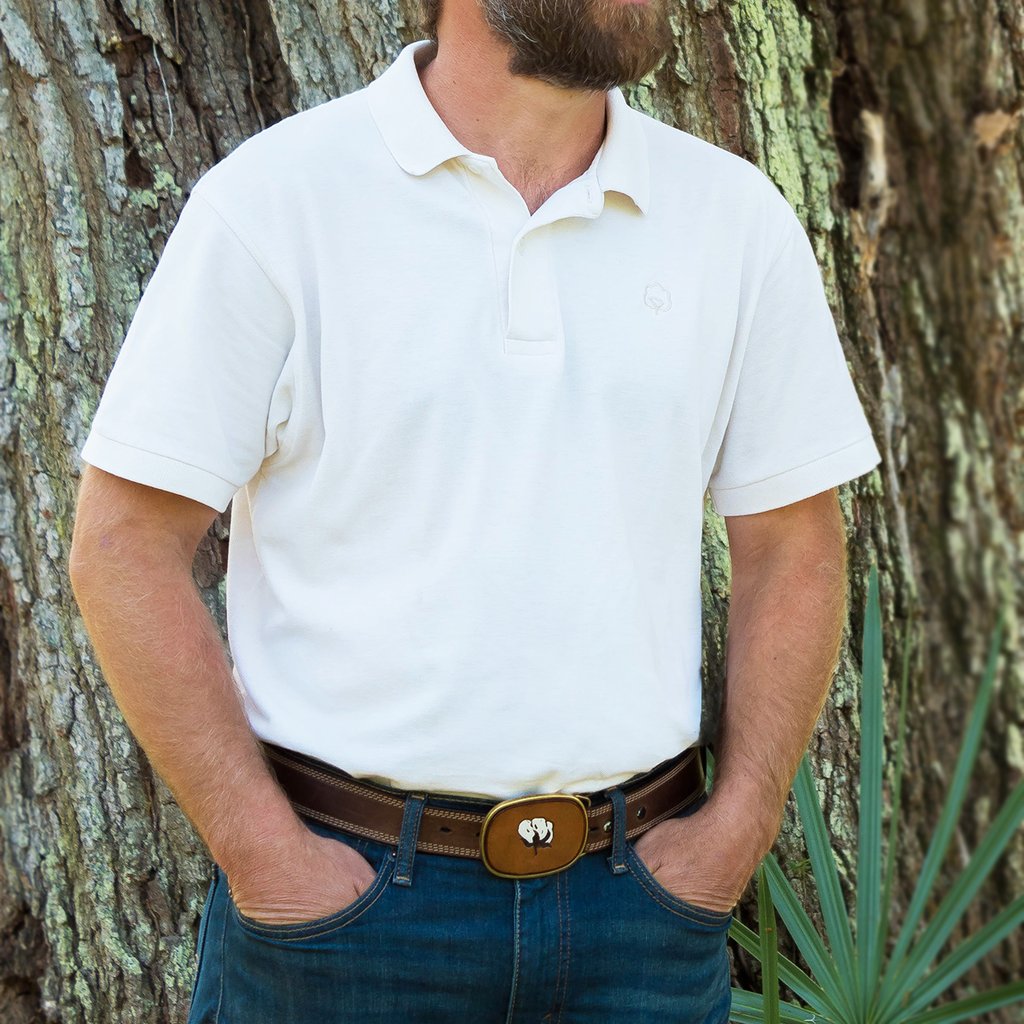 Cotton polo shirts for men, made by eighth generation cotton farmer who “thought there was a way to produce a high quality cotton polo shirt utilizing locally grown cotton. By the farmer producing the cotton and the finished garment there is full trace-ability back to the field from which it was grown. Every step of the production process is done as local as possible to minimize our carbon footprint and to support the many local businesses involved. We use all natural, environmental friendly dyes and our Natural Shirt has no dye or bleach, just raw cotton. The final cutting and sewing of our shirt is done only 40 miles away from the farm on which it was grown. We hope you enjoy your shirt grown and sewn in South Carolina and appreciate your support of our products. Note: cotton is not organic.
Cotton polo shirts for men, made by eighth generation cotton farmer who “thought there was a way to produce a high quality cotton polo shirt utilizing locally grown cotton. By the farmer producing the cotton and the finished garment there is full trace-ability back to the field from which it was grown. Every step of the production process is done as local as possible to minimize our carbon footprint and to support the many local businesses involved. We use all natural, environmental friendly dyes and our Natural Shirt has no dye or bleach, just raw cotton. The final cutting and sewing of our shirt is done only 40 miles away from the farm on which it was grown. We hope you enjoy your shirt grown and sewn in South Carolina and appreciate your support of our products. Note: cotton is not organic.
Maelu
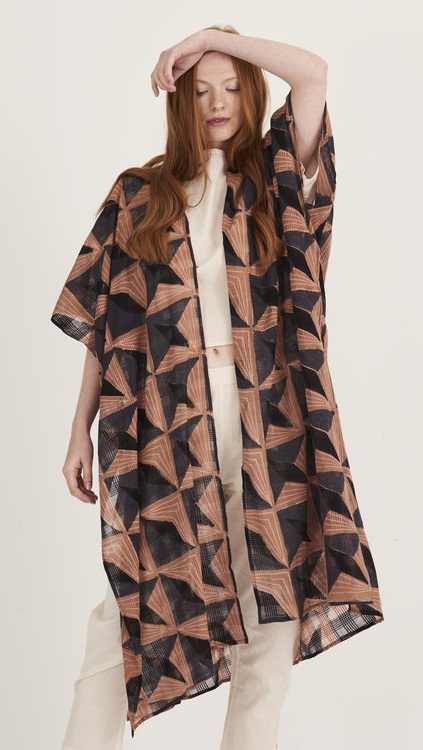 Flowing clothing for women with gorgeous tradition design—apparel, kaftans, kimono, and oversize scarves. I just want to order everything, it’s all so beautiful and easy to wear. “Maelu is an ethical women’s apparel line handmade in India using traditional artisan techniques such as block printing, hand weaving and screen printing. We focus on sustainable textiles made with natural fibers and vegetable dyes. “Wooden blocks are hand carved out of teak wood and then applied with natural dyes before being stamped on cotton or silk. Our natural dyes are made with a variety of materials including jaggery, pomegranate skins, alum and indigo bush. Each color and design in the pattern requires a different block, resulting in an incredibly intricate process. After being stamped the printed fabric is laid out in the village field to dry in the sun and set the color. The fabric is then steamed, washed and ironed to permanently fix the colors.”
Flowing clothing for women with gorgeous tradition design—apparel, kaftans, kimono, and oversize scarves. I just want to order everything, it’s all so beautiful and easy to wear. “Maelu is an ethical women’s apparel line handmade in India using traditional artisan techniques such as block printing, hand weaving and screen printing. We focus on sustainable textiles made with natural fibers and vegetable dyes. “Wooden blocks are hand carved out of teak wood and then applied with natural dyes before being stamped on cotton or silk. Our natural dyes are made with a variety of materials including jaggery, pomegranate skins, alum and indigo bush. Each color and design in the pattern requires a different block, resulting in an incredibly intricate process. After being stamped the printed fabric is laid out in the village field to dry in the sun and set the color. The fabric is then steamed, washed and ironed to permanently fix the colors.”
Is Homebiotic Mold Remover Safe to Use?
Question from Cheryl
Hi Debra,
Do you have an opinion about a product called Homebiotic which you spray in your home to help eradicate toxic mold?
Thanks for your help.
Debra’s Answer
According to their website, “Homebiotic contains only purified water and natural probiotic bacteria from healthy soil, which each have years of study and are completely safe for humans and pets.”
I don’t see anything toxic here.
Do Toxic Chemicals Permeate Milk Cartons?
Question from Melissa
Hi Debra,
Thank you for your wonderful website. I have noticed that certain small grocery stores in our area tend to have a very heavy cleaner/deodorant smell. We popped into one this evening for a quick carton of milk, and when I got in the car I realized that the carton had the odor of the store – and the odor even transferred to my hand after I carried it to the car. Is it possible that the chemicals permeated the milk carton and contaminated the milk, or are paper milk cartons sealed well enough to prevent that?
Debra’s Answer
That’s a good question.
According to How A Milk Carton is Made , “Milk containers are made from paperboard coated with a waterproof plastic, generally polyethylene.
Polyethylene can block chemical gases—it is frequently recommended for wrapping mattresses, for example—however the thickness of the layer makes a difference. I’m thinking that the thickness of the coating on a milk carton is thinner than a sheet of plastic.
I can’t say for sure because I couldn’t find any tests on this. I don’t drink milk myself. When I did I purchased organic milk in glass bottles. That’s clearly the safest choice.
If you can taste the scent in the milk, don’t drink it. Since milk generally doesn’t taste like the surrounding environment, logic would tell me that the seal on the paper is both keeping milk in and keeping the environment out.
Toxic free stain repellant for a couch?
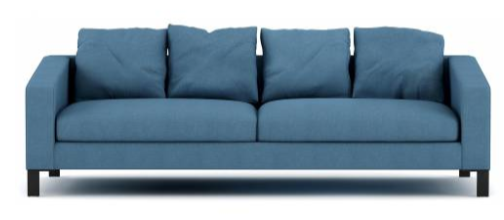
I received this question from a friend of mine who publishes a magazine:
What can I recommend to a reader who has a new couch and is afraid of day-to-day stains and wants to avoid Scotchguard?
I replied:
First, is it a new toxic-free couch?
If not, it’s already got some kind of stain repellant on it.
Scotchguard changed it’s formula, so it’s no longer as toxic as it once was.
If it’s a natural couch:
1. I would just put something on it like a blanket or throw to protect the sofa. That’s what I did.
2. AFM Safecoat makes a product called SafeChoice Carpet Lock-Out.
“This one-of-a-kind product is designed to perform two functions: to seal in the outgassing of harmful chemicals found in carpet fibers and to help repel dirt and stains.” You can also apply it to fabric as a stain protector. I’ve used this on carpet and it’s very effective.
It turned out that the sofa in question was a toxic couch, but I wanted to pass on this toxic-free fabric protection product.
Permethrin Remediation?
Question from Arash
Hi Debra,
I’ve used your site as a great resource over the past few months and my first go-to. I thank you for all you do.
I couldn’t find an answer to this and if you have any info maybe others would find it helpful too.
I’ve found out that the previous owners of our new house had permethrin sprayed on all the floorboards, top side and bottom, and the stairs too.
This was done over 20 years ago, but I don’t know how much of it will have soaked right into the wood and maybe (on the upper floors) into the drywall of the floor below.
Having failed to find much info on whether it offgasses and to what extent, I decided to just assume it does still off gas.
Also, apparently the dust under the floorboards will have soaked up a lot of permethrin, so dust coming through ceiling light fittings and up through floorboards is definitely a problem even if off gassing is not.
I was just wondering if you had any advice on how best to address this.
I’m thinking maybe HDPE or LDPE sheeting all over the floorboards and taped around the perimeter of each room to seal it all in. Then new flooring on top. Marmoleum or solid wood would be healthiest but they can’t be floated so would have to be nailed into the floorboards thereby breaking the plastic seal. Or glued to plywood which has formaldehyde issues.
Also unsure how to address the dust/vapor movement through the ceiling light fittings… maybe fire proof lighting as that creates a bit more of a barrier but not a complete one.
Not to mention the stairs, I don’t know how practical it would be to seal them all in with LPDE / HDPE. And the under-stairs storage which houses the gas/elec meters etc can’t really be sealed using plastic so don’t know what to do there.
Any and all advice would be very gratefully received.
Thanks Debra.
Debra’s Answer
First, Marmoleum IS available floating and so are hardood floors so that IS an option if you want it.
And second, your Permethrin exposure is not particularly a problem.
Permethrin is widely used on clothing for protection from ticks. “Exposure risk of permethrin-treated clothing to toddlers is 27 times below the EPA’s Level of Concern (LOC).” Permethrin Fact Sheet.
Not only is Permethrin not particularly toxic, you have time on your side. Here is a great article about what happens to pesticides over time: NATIONAL PESTICIDE INFORMATION CENTER: Pesticide Half-life.
About Permethrin it specifically says:
Each pesticide can have many half-lives depending on conditions in the environment. For example, permethrin breaks down at different speeds in soil, in water, on plants, and in homes.
- In soil, the half-life of permethrin is about 40 days, ranging from 11-113 days.
- In the water column, the half-life of permethrin is 19-27 hours. If it sticks to sediment, it can last over a year.
- On plant surfaces, the half-life of permethrin ranges from 1-3 weeks, depending on the plant species.
- Indoors, the half-life of permethrin can be highly variable. It is expected to be over, or well over, 20 days.
Well over 20 days. You’ve had 20 years. It’s highly doubtful there would be any Permethrin left in your home at this time.
Toxic-Free Moulding
Question from Nikko
Hi Debra,
I am looking for baseboard, chair rail moulding (White). MDF is supposed to have formaldehyde in it …not sure if they have done without. What is the best to use with little to no off gassing?
Thanks.
Debra’s Answer
I’ve purchased a fair amount of baseboard and crown moulding in my life and am about to purchase more.
I’ve always purchased wood moulding at places like Lowe’s and Home Depot.
Here’s a little summary of materials used to make moulding I borrowed from Lowes
- MDF (Medium Density Fiberboard) is a high-grade, composite material. Moulding products tend to come primed, making it easy to paint.
- Primed Finger Joint Products are available in Pine and Poplar wood. This engineered moulding is made by fitting smaller pieces together to create one long board. Finger Joint moulding looks best when painted.
- Poplar is a favored material by design professionals. The crisp grain lines and rich wood tones accept paint and stain, making it a perfect wood type for any room.
- Pine adds a distinct character to a room. The lines from the grain and occasional knots can create interest and texture.
- Fir offers two distinct grain patterns. Mixed Grain (MG) offers coarse, wide, and light to dark patterns. Vertical Grain (VG) has a more consistent and tighter grain pattern and less color variation. This wood should be stained to bring out its natural beauty.
- Oak moulding is typically milled from Red or White Oak, which are among the hardest and most durable wood species. Both have great grain appeal and are easy to sand, cut and finish. Your choice of stain color can really enhance the character of this material for a style that is all yours.
- Aspen is a light, soft wood that is typically used for more ornate moulding profiles. It has a straight grain and fine uniform texture.
- Polyurethane moulding is made from high-density polyurethane that won’t warp, rot or split. This product will create detailed patterns without the expense of wood. It’s lightweight for easy handling, saws like wood and comes preprimed and ready to paint.
- Polystyrene prefinished moulding is lightweight and simple to cut using conventional saws, making installation a one-person job. These mouldings can be installed with construction adhesive or finishing nails and are slightly flexible, making them perfect for walls that aren’t true. They’re also moisture resistant—an ideal solution for kitchens and bathrooms.
- PVC gives you the look of wood with moisture protection, inside or out. Strong and durable, PVC moulding is easy to cut and installs without chipping, splitting or cracking.
Of these, I would say yes to the woods poplar, pine, fir, oak, and aspen.
I would say no to MDF, finger joint, polystyrene, and PVC.
Polyurethane is not particularly toxic in this use, but it is a petroleum product, if you are avoiding petroleum.
You should be able to find actual solid wood moulding anywhere moulding is sold.
Lead exposure everyday item- Tumble DRYER
Question from Carissa
Hi Debra,
Thanks for your amazing website and I am long time reader. It has helped me make a few decisions.
I am in a huge quandary at the moment and am wondering if I can get your opinion. I admit I do suffer from OCD and one of my contamination obsession is lead and chemical stuff. It is a lot better, finding a balance is tough and even tougher with 2 kids below 3 (a pending newborn coming soon!).
We have a recently purchased a European made dryer from a famous brand (MIELE) and I noted the back of the dryer has 6 bolt like fittings that are made of brass. I know about lead leaching from brass items, especially keys, as it is used as a lubricant for machining brass and the lead concentrate on the surface for that reason.
I use the dryer all the time to dry our babies’ clothes which will contact these brass bolts. And then babies will obviously chew on their clothes. I can’t test the bolts as they are embedded to the machine’s drum.
We also have new vinyl trims on our floor which tested at 300ppm lead. I cannot remove them without spending thousands of dollars replacing flooring. Our house is cleaned frequently.
I am wondering if these two scenarios will be something to be concerned about? I can’t do anything about the vinyl trims except for making sure I wipe over them weekly with water (chemicals will degrade the vinyl). I can sell the dryer but it will be at a huge financial loss. Just hoping for some advice on how to deal with these two situations with limited finances. Thank you so much!
Debra’s Answer
I understand your situation and concern.
We live in a world where it is impossible to reduce our total exposure from all sources to zero by using source reduction. While the first action to take is always remove toxic exposures at the source, when that is impossible, there is something else to do: detox.
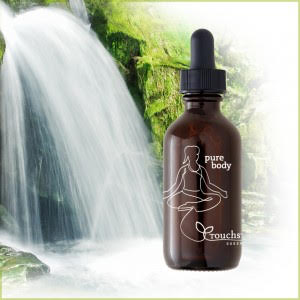 I highly recommend that you take a product called PureBody Liquid Zeolite. It gently removes lead and other heavy metals from your body. Your babies can take it too. There are many zeolite products on the market. This is the only one I use and recommend.
I highly recommend that you take a product called PureBody Liquid Zeolite. It gently removes lead and other heavy metals from your body. Your babies can take it too. There are many zeolite products on the market. This is the only one I use and recommend.
Taking liquid zeolite puts my mind at ease, knowing that I am doing something to help my body eliminate the lead and other heavy metals that I can’t avoid. These heavy metals stay in our bodies and accumulate because our bodies can’t eliminate them on their own. It’s easy, affordable, tasteless and good protection.
Is This No-VOC Engineered Wood Flooring?
Question from SM
Hi Debra,
I found this no-VOC engineered wood flooring, and I wonder if it is what they advertise: because they UV-cure the acrylic, there is no offgassing. I wonder if this could be similar to a Safe Coat on the floors:
https://www.eddiebauerfloors.com/about-our-floors
If not, are you aware of any truly VOC free engineered wood products?
Thanks so much!
Debra’s Answer
Well this is an interesting flooring.
In general, I don’t recommend engineered floorings because they are made from strips of wood glued together.
But the flooring is made from hardwoods over a birch core, manufactured without formaldehyde glues or solvents, and has a UV-cured acrylic layer.
Clearly they have an intent to have this flooring be good for Indoor Air Quality.
Actually these floorings are made by a hardwood flooring company that looks pretty amazing on their website: revelwoods.com
I tried to call them to get more information, but there was only a machine.
I would look into these flooring more closely before making a decision. but so far, so good.
Choosing and Using Dryer Balls as an Alternative to Toxic Scented Liquid Fabric Softener or Dryer Sheets
Question from JC
Hi Debra,
I’d like to begin using dryer balls to reduce static cling in our clothing. I’m guessing they are al not created equal. Can you point me in the right direction as to what to look for, brand recommendations, how many to use per load?
Thanks for helping keep the laundry process clean!
Debra’s Answer
First, I’m sure many of my readers are applauding you for wanting to stop using toxic scented liquid fabric softeners and dryer sheets.
Before I respond about dryer balls, I first want to tell you about static cling.
Static cling is the result of synthetic fabrics, such as polyester, nylon, and acrylic. These fabrics are made from petroleum, and running them through the dryer creates static cling.
Natural fibers do not create static cling. So if you are wearing natural fibers (as I do), there is no need to do anything to reduce or eliminate static cling because natural fibers don’t produce static cling.
There are many wool dryer balls available today. I just searched on “organic wool dryer balls” and there are plenty to choose from, so I would opt for organic rather than natural wool.
How many to use per load? It depends on the size of the load. For small loads, use 2 to 4. For large loads, use 6.
But my best recommendation is to simply switch to wearing only natural fiber clothing. Not only are natural fibers more comfortable and better for your health, there is no fabric softener needed.
NOTE TO THOSE WHO ARE AFFECTED BY NEIGHBORS’ SCENTED FABRIC SOFTENER: Try offering them some wool dryer balls. Don’t suggest they find and purchase some, GIVE them some dryer balls as a gift and ask them to use them. They just might like this alternative and it will save them money.
Supah Star Dark Chocolate Superfood Bars
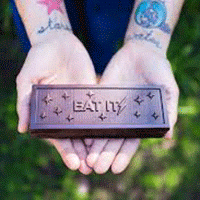 I found this chocolate when I visited a local organic farm-to-table restaurant. It was the only chocolate they sell. And I understand why. It’s made from whole food wildcrafted cacao. DELICIOUS. Handmade with 100% organic ingredients.“Enjoy 6 of the world’s most nutrient dense foods (Goji Berries, Coconut, Hemp Seeds, Chia Seeds, Maca Root & Cacao) that support and nourish all the systems in your body…Every ingredient in our chocolate is as close to a whole food as it can be. We do NOT use emulsifiers (thickening agents) or fillers. Lots of bars have tons of other stuff in them to stretch out the Cacao…making the true experience of the Cacao dull and bringing a major focus to the sweetness only. The actual Cacao we use is exquisite…..like all our ingredients. Read more about the Cacao we use here. The Cacao that we use is WILDCRAFTED…very unique in this day and age of high tech agriculture and farming. We can taste the difference and are very grateful it’s available to US to pass on to YOU. It also has a higher mineral content and nutritional integrity.” Sweetened with coconut sugar. Best chocolate I’ve found yet!
I found this chocolate when I visited a local organic farm-to-table restaurant. It was the only chocolate they sell. And I understand why. It’s made from whole food wildcrafted cacao. DELICIOUS. Handmade with 100% organic ingredients.“Enjoy 6 of the world’s most nutrient dense foods (Goji Berries, Coconut, Hemp Seeds, Chia Seeds, Maca Root & Cacao) that support and nourish all the systems in your body…Every ingredient in our chocolate is as close to a whole food as it can be. We do NOT use emulsifiers (thickening agents) or fillers. Lots of bars have tons of other stuff in them to stretch out the Cacao…making the true experience of the Cacao dull and bringing a major focus to the sweetness only. The actual Cacao we use is exquisite…..like all our ingredients. Read more about the Cacao we use here. The Cacao that we use is WILDCRAFTED…very unique in this day and age of high tech agriculture and farming. We can taste the difference and are very grateful it’s available to US to pass on to YOU. It also has a higher mineral content and nutritional integrity.” Sweetened with coconut sugar. Best chocolate I’ve found yet!
American Blossom Linens
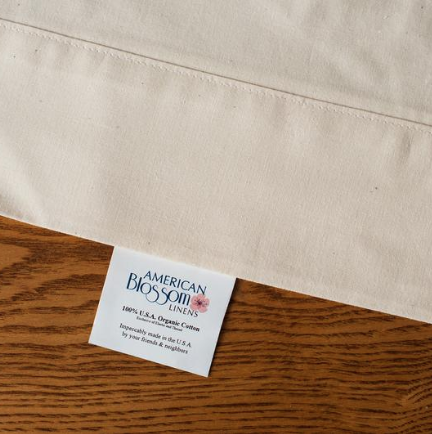 The only bed sheets made completely in the USA from 100% USA organic traceable cotton. See a lovely and informative diagram of how organic cotton is grown. Responsibly crafted by families with decades of textile heritage. Everything from growing to spinning to weaving to finishing is documented on their website. For adult and crib size mattresses.
The only bed sheets made completely in the USA from 100% USA organic traceable cotton. See a lovely and informative diagram of how organic cotton is grown. Responsibly crafted by families with decades of textile heritage. Everything from growing to spinning to weaving to finishing is documented on their website. For adult and crib size mattresses.
PureGreen 24 Antimicrobial Disinfectant
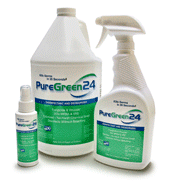 “A proven natural antimicrobial disinfectant and deodorizer that offers rapid efficacy…kills the deadliest of superbugs, yet also kills everyday household germs….an EPA registered, broad spectrum antimicrobial disinfectant and deodorizer with unique 24 hour residual effectiveness…PureGreen24 has an EPA IV toxicity rating; the lowest rating assigned by the Federal EPA. PureGreen24 is Natural, non-flammable, non-corrosive, and odorless without the fumes or skin irritation associated with traditional disinfectants. PureGreen24 is strong enough to kill the most dangerous viruses (Norovirus) and bacteria (MRSA) in a hospital environment, yet EPA registered for use on children’s toys at home. PureGreen24 is Pet safe too.” Made from water, citric acid and silver ions.
“A proven natural antimicrobial disinfectant and deodorizer that offers rapid efficacy…kills the deadliest of superbugs, yet also kills everyday household germs….an EPA registered, broad spectrum antimicrobial disinfectant and deodorizer with unique 24 hour residual effectiveness…PureGreen24 has an EPA IV toxicity rating; the lowest rating assigned by the Federal EPA. PureGreen24 is Natural, non-flammable, non-corrosive, and odorless without the fumes or skin irritation associated with traditional disinfectants. PureGreen24 is strong enough to kill the most dangerous viruses (Norovirus) and bacteria (MRSA) in a hospital environment, yet EPA registered for use on children’s toys at home. PureGreen24 is Pet safe too.” Made from water, citric acid and silver ions.
Peaceful Fruits
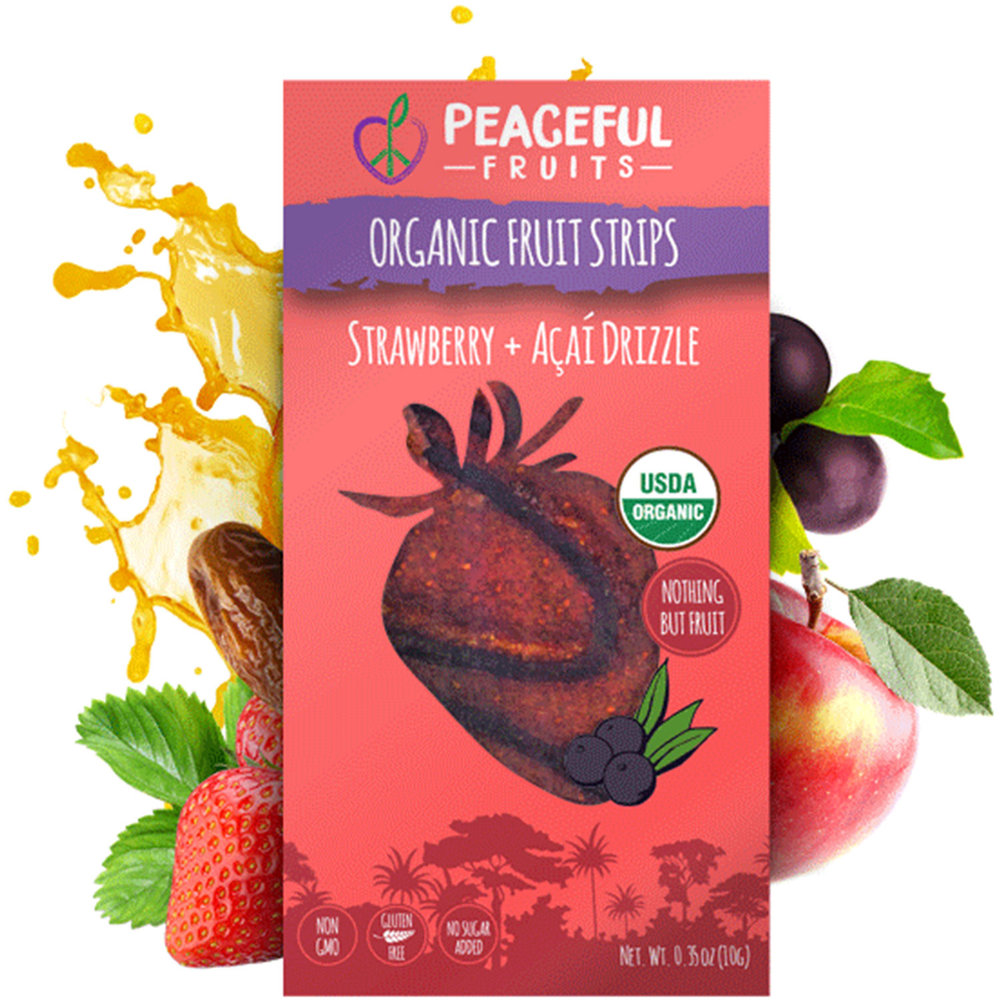 Portable packaged one-serving dried fruit strip snacks that are organic fruit, organic fruit, and nothing but organic fruit. See what’s in other fruit snack. A week’s worth of creative flavor combinations will keep your interest when you feel like a snack. Most contain açaí to boost nutrition of usual fruits.
Portable packaged one-serving dried fruit strip snacks that are organic fruit, organic fruit, and nothing but organic fruit. See what’s in other fruit snack. A week’s worth of creative flavor combinations will keep your interest when you feel like a snack. Most contain açaí to boost nutrition of usual fruits.
Shopping for Toxic-free Products at IKEA
Question from Dawn
Hi Debra,
Does anyone know about Ikea stuff? They claim some of their things are non voc etc. Does anyone have any actual experience though with buying anything new from them?
Irina: I did research on ikea before, and they officially used to claim (I haven’t checked for a while) and I read from other non toxic connoisseurs that IKEA has some of the highest standards for testing their products for toxicity and exceeding the set standards as well as not using flame retardants on their furniture. It was confirmed back then that their white basic dishes do not have lead or other heavy metals. The quality and durability of their furniture specifically is still often questionable though that’s my 2 cents.
Nancy: I have many pieces from Ikea. Solid wood and steel items are fine. And easy to put together….
Louise: On Debra’s suggestion, I got a lovely IKEA non-irritating green polypropylene (sp?) fake Christmas Tree in November. Love it so much am keeping it up year round, decorating each season with seasonal fun!
Eleanor: Does IKEA use fire retardant chemicals in their furniture? I know several companies have stopped using fire retardants.
Kathie: Take a look at Ikea Hemnes furniture. Solid pine. I have several pieces of the Hemnes. It might work for you.
Karen: I also have the Hemnes pieces and they are fine.
Marni: Same here.
Debra Lynn Dadd: Yes I have purchased things from IKEA for my own use and recommended them to clients but only some pieces are suitable and those are made with solid wood and they have a very light acrylic finish on them that has no odor. But then there are other pieces that are made from synthetic fabrics and particleboard so you have to read that the descriptions carefully. I want time I had the thought of going through IKEA and choosing all the furniture that I thought was acceptable. Would anybody like me to do that?
Melissa: Yes, I would greatly appreciate you recommending which pieces to purchase. Im on a limited budget and need a new couch, headboard, and dressers. Ikea fits my budget and my state of mind!!
Dottie: Debra Lynn Dadd, that would be great!
Debra’s Answer
First, here is Ikea’s Chemicals & Substances fact sheet.
Read it and you will see:
- no BPA in anything, not even the cash register recipts
- no brominated flame retardants. “We never add any chemical flame retardants to our products if not required to do so by national legislation. To avoid adding chemical flame retardants, we strive to use materials with inherent flame retardant properties instead, such as natural wool.”
- no PVC
- no phthalates in children’s products and food containers
- formaldehyde is “substantially reduced” but not completely eliminated
- no fluorinated (water-repellant) chemicals in shower curtains, umbrellas and ponchos
- no chrome in leather
- no “CMR” substances—may cause cancer, mutation or are toxic to reproduction.
- ban on lead, cadmium and mercury content
- ban on the use of azodyes in textiles and leather
And they invite customers to contact them if there are any questions.
Now, all that said, it’s been my experience that I have to read the labels CAREFULLY and understand materials to make sure I don’t buy a product that I consider to be toxic.
A great thing about IKEA is that they very clearly disclose all their materials on their website and on labels, so if you understand materials, you can figure out what’s toxic and what’s not. And this is why I am working so hard on Zero Toxics, so you have a place to look up materials and find out if they are toxic.
[Just as an aside one of the things I am running into is that manufacturers seem to be more willing to disclose materials now but they are less willing to explain what those materials are and their toxicity. That’s another reason why Zero Toxics is needed].
Someone mentioned HEMNES above, so I will use that as an example.
HEMNES BED FRAME WITH TWO STORAGE BOXES
Down below the product (you may need to scroll, there is a row of tabs)
Click on “Materials and Environment”
You’ll see that the frame is made from solid pine. Perfect. It has an acrylic lacquer finish. They have used this finish for years. I have purchased pieces with this finish with no problem. I’ve recommended it to clients and have had no complaints. It is made from petroleum, so if you need to stay away from materials made from petroleum, do not purchase any products from IKEA with this finish.
But then you get to the storage boxes, which are made from particleboard which ARE outgassing formaldehyde because IKEA has not banned formaldehyde.
MANY of their furniture pieces are made with particleboard.
So in this case, if you are OK with finish, you could purchase the frame, but not the store boxes, and I would consider that to be fine. I have, in fact, purchased an IKEA bed frame with no problem. And have purchased them for clients too.
You also need to watch out for stain, which may have VOCs.
I can’t possibly go through every product at IKEA and look at each one.
Many of the products I’ve purchased in the past are no longer available.
Here is one of my favorite products: SNIGLAR CRIB
Look at this product description: solid beech, solid beech, solid beech. And nothing else. Unfinished. They say the fabric is nylon but don’t say the filling on the mattress, Hmmmm. In any case, I would buy this crib and put a Naturepedic crib mattress in it and be perfectly happy.
In addition to the bed frame, I’ve also purchased a down comforter, cotton curtains, a kitchen island, glass food storage containers with silicon lids, water bottles, rods on which to hang kitchen accessories, shower curtains, my favorite linen dish towels, and various other items.
I just have to say that I have been shopping at IKEA for many years and have always loved it because I could get solid wood furniture and other natural materials, they have clean simple design, and great prices. But the last time I went there about six months ago I was very disappointed. The amount of natural materials used has decreased greatly and I noticed prices have gone up. That doesn’t mean you can’t find natural materials and bargains, but it is no longer the IKEA I once knew and loved.
Larry and I are actually going to be going to IKEA to look for things for our motorhome tiny house within the next month, so when I’m there I’ll take a look around and see what I can find and will add those items here.
If you have any products you are considering, post them here and I will translate for you.
A New Refrigerator That Doesn’t Outgas
Question from Irina
Hi Debra,
Hi there! I’m shopping for a new fridge, and I’m looking at the descriptions, ALL of them so far have prop 65 warning, which I’m not happy with, plus some of them smell terrible, like a toxic factory inside when I checked some out at stores.
Are there any refrigerators that are made with non toxic materials at all? Without the prop 65? Please share anything you know about this. Thank you.
Brenda: this site may have some suggestions. A Non-Toxic Kitchen
Leidy: I got a French door LG this past summer. The electrical readings are very very low (bought on advice of an EMF engineer guy) and there is no wifi feature. I am somewhat sensitive to smells and offgassing and I got zero smells coming from outside or in the fridge. It probably does have a prior 65 warning though. Most things do….but I think sometimes it is not fully in context?
Irina: Thank you for sharing your experience! I went with an LG French doors, no water dispenser (I hate those things filled with mold) and it was one of the better smelling ones. I was told that all of them have prop 65 warning.
Debra Lynn Dadd: One of the problems with the Prop 65 warning is there could be a tiny piece inside where you are not exposed to it and it’s not outgassing because the toxic substance is a particle and they still have to out the warning. But the bigger problem is the amount of plastics used in the interior that are outgassing. Here are a number of posts about choosing refrigerators from my Q&A, including How I Found My New Refrigerator.
Irina: Thank you! Thankfully, the one I ordered was the only one left so it’ll be a floor model it thankfully already did not have the smell at the store, I was super happy about that.
Alberto: my wife suffers from MCS pretty bad. We just went through a total kitchen renovation. We purchased Electrolux. I am familiar with most kitchen appliances as I am a Chef by trade. We’ve had it for several months now and without incidents, a great product.
Larry: Prop 65 was developed by ANTI-environmentalists. The original idea was sound: Call out bad stuff in the marketplace to protect consumers. What happened instead was a law that states that ANY published study ie real, not real, double blind or on the neighbors kids and duplicated or NEVER duplicated that indicates a precancerous condition for any ingredient has to be listed. So they get to use questionable (non) science to call out nearly every molecule in existence as a way to make the law unworkable and generally ignored (as it should be in its current form).
Irina: I am aware of the flaws with the prop 65 yet in combo with the offgassing odors fr the fridges which are by the way worse than ever! It made me triple concerned. I’m just so glad that there’s a group like this with people who are like minded and knowle…
Debra Lynn Dadd: Thanks Larry. I totally agree and didn’t know this background. Now I understand why it’s so unworkable. As a resident of the State of California I vote they just abolish it!
Irina: So our new fridge has been here for a couple of nights and I have to say I’m in love with it! No off-gassing at all and no reactions of any kind! The only parts that smelled a bit were all removable cheaper plastic/vinyl shelving, which we removed and placed outside and they aired out in a few hours we cleaned everything with my vinegar and essential oil mix and there was no toxic smell left. Thanks everyone for sharing your experience and recommendations!!! I really appreciate this knowledgeable group.
Bio-Hue Artist Colors
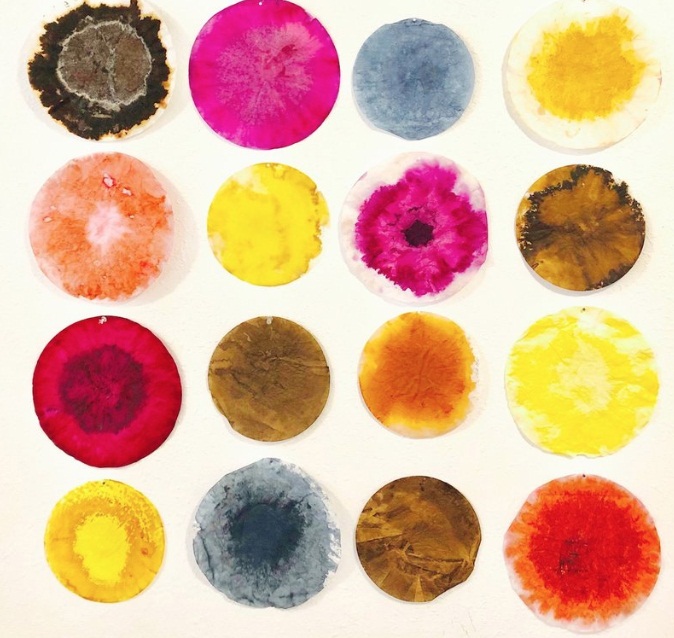 Dye based, watersoluble artists colors that can be used as watercolor paints or ink. An all natural product, free of synthetic preservatives. “Engaged by the promise of artist colors from natural pigments, Judi has been on the alchemical journey ever since. She forages, purchases or grows the materials for the art materials as mindfully and sustainably as possible. The inks and watercolors are made from the fewest ingredients possible allowing the beauty and personality of the source material to come through.” I am enchanted by these colors. This is where art should begin. Look at these colors.
Dye based, watersoluble artists colors that can be used as watercolor paints or ink. An all natural product, free of synthetic preservatives. “Engaged by the promise of artist colors from natural pigments, Judi has been on the alchemical journey ever since. She forages, purchases or grows the materials for the art materials as mindfully and sustainably as possible. The inks and watercolors are made from the fewest ingredients possible allowing the beauty and personality of the source material to come through.” I am enchanted by these colors. This is where art should begin. Look at these colors.
Kiriko
 Very well made and designed canvas waist work apron, made in the USA of 100% cotton with aged copper rivets and leather straps (removable for easy washing). Truly a work apron with several pockets that are perfect for carrying an assortment of tools. “Our premium 12.5 oz selvedge denim is a reproduction of an archived fabric manufactured for Levi’s 501 xx. These are colored using the same indigo dyeing technique that will fade beautifully with wear. ”
Very well made and designed canvas waist work apron, made in the USA of 100% cotton with aged copper rivets and leather straps (removable for easy washing). Truly a work apron with several pockets that are perfect for carrying an assortment of tools. “Our premium 12.5 oz selvedge denim is a reproduction of an archived fabric manufactured for Levi’s 501 xx. These are colored using the same indigo dyeing technique that will fade beautifully with wear. ”
I Sleep Simple
 The simplest beds and bedding—mattresses, toppers and pillows—made from “premium natural materials, handmade by apprenticed craftsmen…contains no fillers, additives or questionable chemicals…With 35 years of experience, we’re able to source the quality materials from producers in the U.S. and Indonesia. Our in-house, hands-on craftsmanship means we oversee and care for your product from start to finish. The simplicity of our raw materials and process allows us to be transparent – ask our team any thing about our products and how they’re made.”
The simplest beds and bedding—mattresses, toppers and pillows—made from “premium natural materials, handmade by apprenticed craftsmen…contains no fillers, additives or questionable chemicals…With 35 years of experience, we’re able to source the quality materials from producers in the U.S. and Indonesia. Our in-house, hands-on craftsmanship means we oversee and care for your product from start to finish. The simplicity of our raw materials and process allows us to be transparent – ask our team any thing about our products and how they’re made.”
Tushy
Does Ecos Air Purifying Paint Make Toxic Chemicals Stick To The Walls?
This past week on my Zero Toxics Facebook Group there was a question about ECOS Air Pure Air Purifying Paints.
I have used many ECOS paint and varnish products, but I’ve never used their “air purifying” products, and I just had a thought about them. They have trade-secret “inert minerals” that “trap” various harmful toxins and “transform each wall in your home into a massive indoor air filter.” This sounds good until you realize that this means THE HARMFUL TOXINS NEVER LEAVE. I wondered what group members think about this, and if anyone has used these products.
Since I can’t write a lengthy response on Facebook that includes multiple images and links, I thought I would respond here and link there.
This is actually a very good question.
I read everything on the webpage and then called ECOS and spoke with Julian Crawford, CEO of the company that is the US Distributor of Ecos Paints. I interviewed him in 2014 when I was doing Toxic Free Talk Radio (listen to our interview here)
Julian answered all of my questions and explained very clearly that the paint TRAPS the chemicals and then HOLDS them on the walls, thereby removing them from floating freely in the air where you can inhale them. The chemicals DO NOT release back into the room.
The web page says “VOC-neutralizing.” To me that means make something that was previously toxic becomes neutral. To ECOS this means that the room becomes neutral of toxic chemicals.
They consider applying this paint turns your room into a giant air filter. And it does, to a degree. It passively and silently is removing chemicals 24 hours a day to the capacity of the paint to hold the chemicals. How long it takes for the paint to reach capacity depends on how much VOCs are in the room. I have always been an advocate of removing chemical exposures as the first choice, but I also know there are times when it’s not possible to remove. A paint like this just might be perfect for a rented apartment, for example, where neighbors are sending toxic VOCs your way. But I would also have on hand a dedicated air filtration unit that removes both particles and VOCs to turn on when you need it.
Here are the reductions in chemicals present in the air of a room following the application of this paint (to read more, Click on tab “Data Sheets” then “APP Performance Test”.
I also noticed that ECOS is participating in the “Declare” program of the International Living Future Institute.
Below is the ECOS Declare statement that lists all the materials that are used in this paint. I’ve rewritten the ingredients along side because I find this format difficult to read.
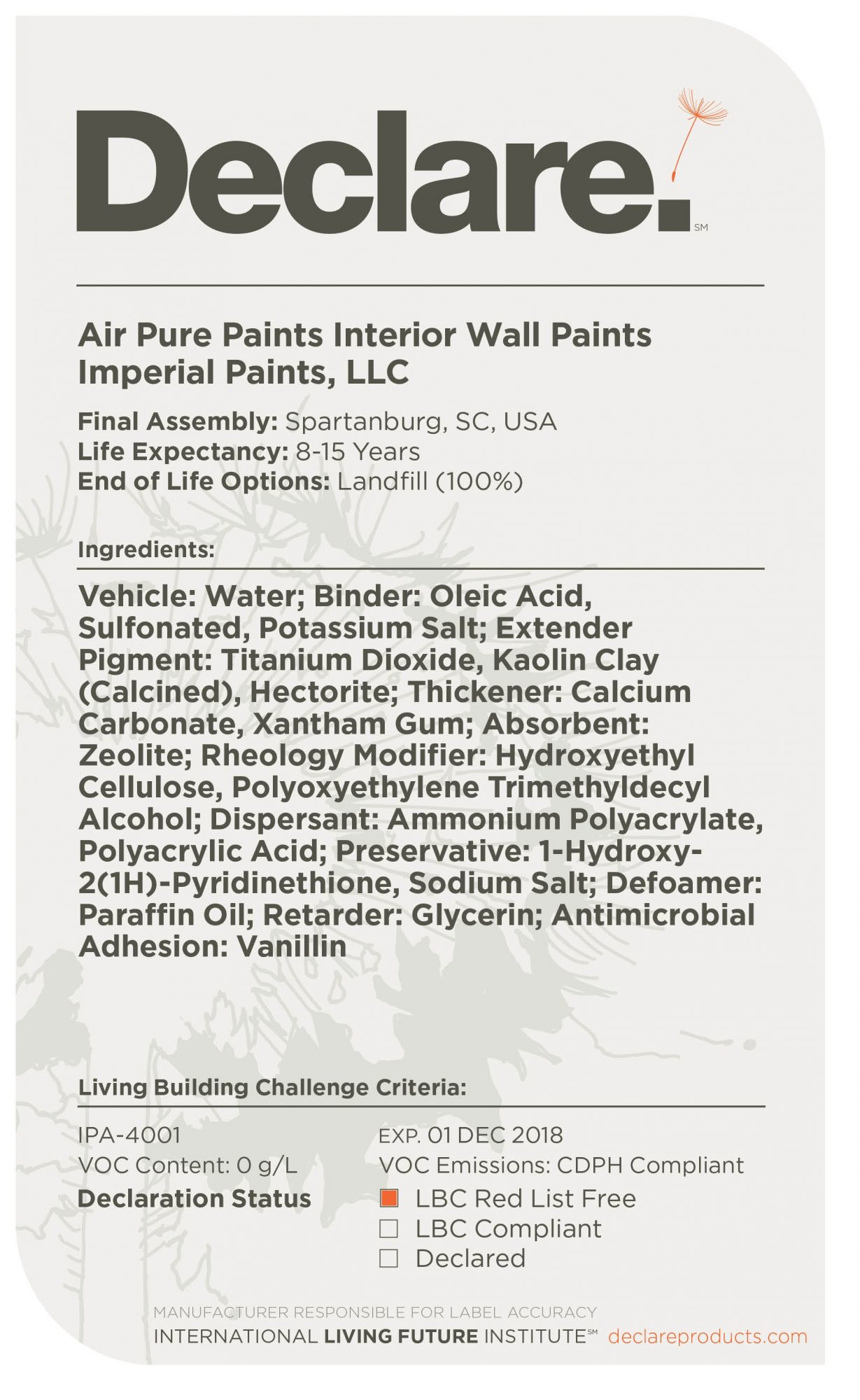 Vehicle: Water
Vehicle: Water
Binder: Oleic Acid, Sulfonated, Potassium Salt
Extender Pigment: Titanium Dioxide, Kaolin Clay (Calcinated), Hectorite
Thickener: Calcium Carbonate, Xanthan Gum
Absorbant: Zeolite, Rheology
Modifier: Hydroxethyl Alcohol Cellulose, Polyoxyethylene Trimethyldecyl Alcohol
Dispersant: Ammonium Polyacrylate, Polyacrylic Acid
Preservative: 1-Hydroxy-2(1h)-Pyridinethione, Sodium Salt
Defoamer: Paraffin Oil
Retarder: Glycerin
Antimicrobial Adhesion: Vanillin
This is an interesting list of ingredients. Ecos does not claim their paints are “natural,” they claim their paints are “odorless.” Julian sent me a box of samples of all their different types of paints and finishes before our interview in 2014 and they certainly were odorless. But if you have a personal need to eliminate petroleum, this isn’t your paint.
It’s interesting to me that on one hand there are petroleum ingredients and on the other hand there are edible food ingredients such as sodium and potassium salts, xanthin gum, and zeolite.
In addition to air purifying paint, ECOS also has
- Air Purifying Primer
- Air Purifying Varnish
- Anti-Formaldehyde Paint
- Anti-Formaldehyde Radiator Paint
See them all at ECOS Air Purifying Products.
Flosspot
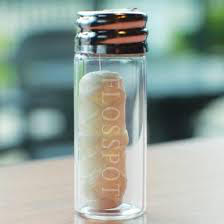 This is the best dental floss I’ve found. Materials are natural and biodegradable and it comes in a refillable glass jar. No plastic here of any kind. There are two types. Flosspot is made from silk worm silk floss with a coating of candelilia wax for a smooth glide between teeth. Flosspot Gold is silk made from corn husks, coated with candelilia wax, and a ginger-mint flavoring. Both are certified by the USDA as biobased products.
This is the best dental floss I’ve found. Materials are natural and biodegradable and it comes in a refillable glass jar. No plastic here of any kind. There are two types. Flosspot is made from silk worm silk floss with a coating of candelilia wax for a smooth glide between teeth. Flosspot Gold is silk made from corn husks, coated with candelilia wax, and a ginger-mint flavoring. Both are certified by the USDA as biobased products.
The Date Lady
 I love dates as a sweetener. Now you can get all the deep sweetness of certified organic dates in a syrup that is easy to use. Comes in it’s own squeeze bottle. “The organic dates in this delectable syrup were sun dried on palm trees deep in the Coachella desert. The fruit from this arid climate results in a golden brown nectar with notes of rich butterscotch that you might want to eat on… everything.”
I love dates as a sweetener. Now you can get all the deep sweetness of certified organic dates in a syrup that is easy to use. Comes in it’s own squeeze bottle. “The organic dates in this delectable syrup were sun dried on palm trees deep in the Coachella desert. The fruit from this arid climate results in a golden brown nectar with notes of rich butterscotch that you might want to eat on… everything.”
Once Again Nut Butter
 A line of nut butters from peanut to hazelnut, some organic, others not. The difficult thing about natural nut butters is they separate. This company has made the first certified organic peanut butter that doesn’t separate.” It’s stabilized, like supermarket peanut butter, but uses organic palm oil instead of unhealthy fats. Like other stabilized peanut butters it contains sugar, but if you want a peanut butter that tastes and spreads like a favorite supermarket brand, but is all organic, this is it. And if you are a fan of that chocolate-hazelnut spread, here’s an organic version (first ingredient organic sugar). These might not be the healthiest nut butters, but if you’re going to eat them, here’s an organic alternative.
A line of nut butters from peanut to hazelnut, some organic, others not. The difficult thing about natural nut butters is they separate. This company has made the first certified organic peanut butter that doesn’t separate.” It’s stabilized, like supermarket peanut butter, but uses organic palm oil instead of unhealthy fats. Like other stabilized peanut butters it contains sugar, but if you want a peanut butter that tastes and spreads like a favorite supermarket brand, but is all organic, this is it. And if you are a fan of that chocolate-hazelnut spread, here’s an organic version (first ingredient organic sugar). These might not be the healthiest nut butters, but if you’re going to eat them, here’s an organic alternative.
Known Supply
Seventh Generation Disinfecting Spray (and Other Alternatives)
Question from JC
Hi Debra,
Thanks for all your efforts to keep everyone safe and healthy!
I was wondering about using the Seventh Generation Disinfecting Spray (lavendar scent) on my son’s mattress where he was sick recently.
His skin would not come into contact with it directly and it dries quickly, but I wanted to double check with someone more knowledgeable regarding its safety!
Thanks again!
Debra’s Answer
Here are the ingredients for this product from the Seventh Generation website
ACTIVE INGREDIENT:
Thymol (present as a component of Thyme Oil): 0.05%.
OTHER INGREDIENTS:
- Water
- sodium lauryl sulfate
- copper sulfate pentahydrate (bluestone)
- citric acid
- sodium citrate
- essential oils fragrance††
Compressed air (propellant).
- Coriandrum sativum (coriander) fruit oil
- cymbopogon martini (palmarosa) oil
- eucalyptus globulus leaf oil
- lavandula angustifolia (lavender) oil
- lavandula hybrida (lavandin) oil
- mentha viridis (spearmint) leaf oil
- pelargonium graveolens (geranium) extract
- pogostemon cablin (patchouli) oil
- vanilla planifolia flower extract
- vanillin
†† Linalool is a component of this fragrance
OK so first, let’s note that the active ingredient is Thyme Oil. That’s what is doing the disinfecting. Just search on “thyme oil” and you’ll find many articles on it’s effectiveness as a disinfectant. So you could simply buy thyme oil and spray it on his bed and it would be like using the herb in food, but stronger. And there are other essential oils that could be used for disinfecting as well.
But back to the product you want to use.
I don’t see any ingredients that are particularly toxic here, they are just unnecessary to do the disinfecting.
I’m not sure about how they have worded the fragrance ingredients. There seems to be an “essential oil fragrance” that contain Linalool along with other essential oils. And then they list some other essential oils. So I’m not really sure about all this fragrance. And linalool might cause skin rashes but…
I don’t have a toxic reason to tell you not to use this product,
My only reasoning is simpler is always better.
Here’s another interesting post I came across while researching this:
KITCHEN STEWARDSHIP: EPA Says Natural Disinfectant as Effective as Bleach
High Cotton Ties
Bryr Studio
2NFrom
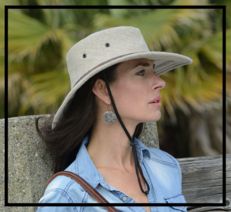 Beautiful handcrafted hats for women and men, bags and accessories made from “upcycled bits of leather, silk, hemp, organic cotton, and precious findings, along with a diversity of fine fabrics, leather, and locally sourced materials from their Northern California Fibershed. This exclusive, limited edition handmade collection is a fine balance of craft and art .” These really are works of wearable art.
Beautiful handcrafted hats for women and men, bags and accessories made from “upcycled bits of leather, silk, hemp, organic cotton, and precious findings, along with a diversity of fine fabrics, leather, and locally sourced materials from their Northern California Fibershed. This exclusive, limited edition handmade collection is a fine balance of craft and art .” These really are works of wearable art.
Recycled Nylon Nontoxic?
Question from Jason
Hi Debra,
I was wondering is clothing with recycled nylon in it such as Tracksuits,outwear jackets &etc are they safe to wear? Reason i ask is i am intrested in buying this Rain jacket https://www.patagonia.com/product/mens-torrentshell-rain-jacket/83802.html.
Thanks.
Debra’s Answer
Here’s a page from Patagonia about their recycled nylon.
Nylon is made from petroleum but it not a major chemical of concern. So I wouldn’t call this fabric “toxic” but it may not be suitable for some people sensitive to petroleum.
My greater concern for a product such as this is waterproofing. Patagonia is a very conscious and responsible company that is working hard to eliminate toxics in an industry where waterproofing has historically been very toxic.
The description says they use ” H2No® Performance Standard ”
You can go to this page to see all their materials and this page to see H2No® Performance Standard specifically. It has a lot of data about how they test for waterproofness but doesn’t say anything about the chemicals, nor does it claim to not be toxic,
I think I’ll give Patagonia a call and see how far I can get with them about full disclosure or materials.
I’ll report back next week.
For now, recycled nylon OK, waterproofing UNKNOWN.
UPDATE 12 March 2019
As promised above, I did call Patagonia customer service at 800) 638-6464.
I have not recommended Patagonia clothing in the past because of their use of toxic waterproofing. While Patagonia has taken many steps to improve the environmental impacts of their products, human health does not seem to be as much a priority.
If you do want to purchases a Patagonia product, please call customer service and find out what type of waterproofing is used on the product, which is NOT clearly disclosed even on website descriptions.
So this particular jacket description says that it has a DWR (durable water repellant) finish. Sounds like it will keep you nice and dry, but what they don’t tell you is that DWR waterepellants are made from fluorinated chemicals (think Teflon).
I went to their Durable Water Repellant page . It says, “Patagonia has long relied on a DWR with perfluorinated compound (PFC) but we have been searching diligently for an alternative because of its harmful environmental impacts.” No mention of health effects to their customers.
Then later on the page they say “And for the Fall 2019 season, we are pleased to introduce our first products that use PFC-free chemistries.”
Customer service told me the above statement applies to only a few products, and this jacket in question is NOT one of them. So it has PFC waterproofing.
READ MORE ABOUT PERFLUORINATED CHEMICALS (PFCs) ON ZERO TOXICS KNOWLEDGE BASE.
Choosing a Toxic-Free Range
Question from Andie
Hi Debra,
So grateful for you and loving your new website! Congrats!
My question: we desperately need a new oven and don’t know what to do!
Is it safer for us to purchase a floor model, that’s been sitting in an open room for a time? Or will it still outgas when it’s home and used for the first time(s)?
Really do not know what to do about ovens and this issue. Thank you!
Debra’s Answer
I wish I could just tell you to go purchase a certain brand but haven’t found one yet that has been designed to be toxic-free. This is one of those items where I need to educate the industry. That’s part of why I’m establishing my Zero Toxics website.
The last time I purchased a stove, I purchased a floor model at Lowe’s. And it was fine.
The last time I purchased a refrigerator was at a Sears Appliance Outlet. Just type that into your favorite search engine and your local outlet will come up. Also try Sears Scratch and Dent Appliances.
These appliances have been returned or refurbished or scratched during shipping. They all work just fine but have minor imperfections. I bought my last washer/dryer at a Sear Appliance Outlet store too.
So that would be the first place I would go.
Fruit & Vegetable Wash Safe?
Question from LM
Hi Debra,
I buy organic produce but I still feel like I have to wash it. Are the “non-toxic” fruit and vegetable washes safe? I’m reading the ingredients for a popular one by ECOS that sells at my local food co-op and the ingredients are:
- Water
- Alcohol Denatured. (corn-derived solvent)\
- Decyl Glucoside (plant-powered surfactant)
- Potassium Sorbate (food grade preservative)
- Citric Acid (plant-powered pH adjuster)
Comments? Thanks Debra!
Debra’s Answer
I can’t make a case for this product being “toxic.” It certainly doesn’t contain any of the major chemicals of concern. So in that sense I would have to call it toxic-free.
But here’s my concern. It’s basically an industrial product made from industrial ingredients. Yes the source material for these ingredients are plants, and they appear to be organic (at least there is an organic logo on the label, though nothing says “organic” in the ingredients list.
So these plants are put into a factory and broken down in some way into industrial ingredients that are then combined in a factory into a wash that you are going to push on your organic vegetables and fruits.
Just look at this for a moment. You’ve purchase organic produce. Now you are going to clean it with industrial ingredients. The first ingredient is water. Hmmmm. What kind of water. Probably tap water. If you are buying organic produce you probably are using filtered water. We don’t know what their water is. They are not telling us.
Is this really a necessary product? What is it that you want to remove from your organic produce with this product?
I just rinse my organic produce with filtered water. I’ve never used produce washes and don’t find them necessary.
UPDATE 3/17/19
I just found a very long list of certified biobasaed fruit and vegetable washes.
If this is a product you are interested in, this list would be a good place to compare what percentage of their ingredients are not petroleum.
Nature’s Fabrics
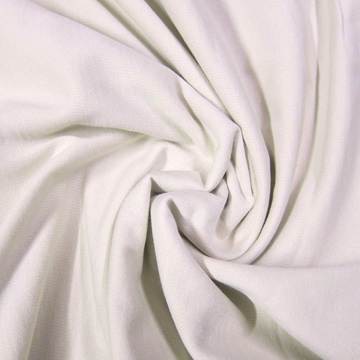 A great selection of natural fiber and fabrics, including cotton, hemp, wool, and bamboo, many organic. They also carry some synthetics, so choose appropriately. Many weaves and colors and some hard-to-find natural fiber blends, such as heavy cotton/hemp fleece. “We are a small family business living on a farm in NW PA. We strive to bring you the finest fabrics at reasonable prices.” The ordering process is a little awkward. To find description and price, find the fabric you want and click on “add to cart” to get to the description page. Then choose a “cut” and a quantity. So, for example, if you chose 1 yard and quantity 3, they will send you 3 continuous yards.
A great selection of natural fiber and fabrics, including cotton, hemp, wool, and bamboo, many organic. They also carry some synthetics, so choose appropriately. Many weaves and colors and some hard-to-find natural fiber blends, such as heavy cotton/hemp fleece. “We are a small family business living on a farm in NW PA. We strive to bring you the finest fabrics at reasonable prices.” The ordering process is a little awkward. To find description and price, find the fabric you want and click on “add to cart” to get to the description page. Then choose a “cut” and a quantity. So, for example, if you chose 1 yard and quantity 3, they will send you 3 continuous yards.
Blue Q
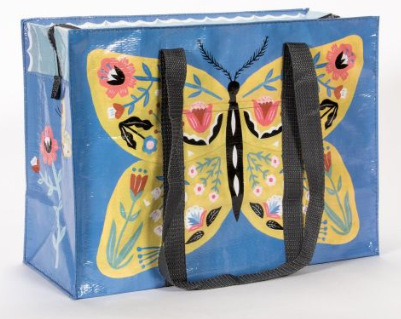 Totes and other bags made from 95% recycled polyethylene rice sacks (don’t know the other 5% but it’s nothing that I can smell). These bags are unusually fun and functional. I have a shoulder tote and I love it. The nontoxic material is waterproof so it protects the contents of the bag when it’s raining, the totes are generous in size with a big zipper that is easy to open and close, and straps long enough to carry on my shoulder. I take mine to the farmer’s market every Sunday. Bold colorful designs. NOTE: There are other products on this site. I am only recommending the bags.
Totes and other bags made from 95% recycled polyethylene rice sacks (don’t know the other 5% but it’s nothing that I can smell). These bags are unusually fun and functional. I have a shoulder tote and I love it. The nontoxic material is waterproof so it protects the contents of the bag when it’s raining, the totes are generous in size with a big zipper that is easy to open and close, and straps long enough to carry on my shoulder. I take mine to the farmer’s market every Sunday. Bold colorful designs. NOTE: There are other products on this site. I am only recommending the bags.
Dizolve
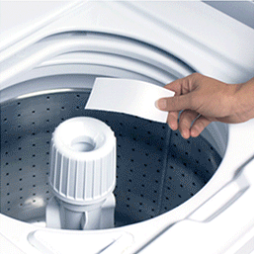 A simple movie-timed sized strip “loaded with eco-friendly, ultra-concentrated cleaning power” brings nontoxic detergent to laundry. Ingredients were chosen specifically to be free of toxics—no dyes, chlorine, dioxane, parsons. Fragrance-free option.
A simple movie-timed sized strip “loaded with eco-friendly, ultra-concentrated cleaning power” brings nontoxic detergent to laundry. Ingredients were chosen specifically to be free of toxics—no dyes, chlorine, dioxane, parsons. Fragrance-free option.
POH Personal Oral Hygiene
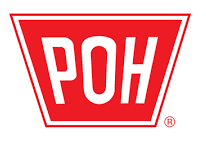 Dental floss and toothbrush used by Preventive Dentists. “These are Dentists who have studied the science and art of preventing disease from ever taking hold in the mouth. These Dentists do not want to fill another cavity, or pull another diseased tooth…The science behind our toothbrushes and dental floss was developed by a Medical Doctor, not a Dentist. The products depend on this science…Our toothbrush bristles are very thin with carefully polished tips. This makes the bristles very soft and gentle, compared to other toothbrushes. Since this part of the toothbrush is actually what is useful, we focus our attention there…Our floss is very different, too. Its many thin strands of nylon enable our floss to disrupt and disorganize the bacterial plaque, which is the key to preventing tooth decay and gum disease.” One of my longtime readers recommended this method. She has been using it with success for years. Products are made from nylon.
Dental floss and toothbrush used by Preventive Dentists. “These are Dentists who have studied the science and art of preventing disease from ever taking hold in the mouth. These Dentists do not want to fill another cavity, or pull another diseased tooth…The science behind our toothbrushes and dental floss was developed by a Medical Doctor, not a Dentist. The products depend on this science…Our toothbrush bristles are very thin with carefully polished tips. This makes the bristles very soft and gentle, compared to other toothbrushes. Since this part of the toothbrush is actually what is useful, we focus our attention there…Our floss is very different, too. Its many thin strands of nylon enable our floss to disrupt and disorganize the bacterial plaque, which is the key to preventing tooth decay and gum disease.” One of my longtime readers recommended this method. She has been using it with success for years. Products are made from nylon.
Toxic-Free Living as an Act of Love
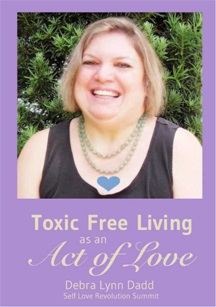 In 2015 I was invited to speak at a summit called Self-Love Revolution. Of course, I spoke on the subject of Toxic Free Living as an Act of Love.
In 2015 I was invited to speak at a summit called Self-Love Revolution. Of course, I spoke on the subject of Toxic Free Living as an Act of Love.
Since it’s Valentine’s Day this week, I thought I would offer you the giveaway as a Valentine’s gift.
I hadn’t read it since then, but I loved reading it just now. It warmed my heart and I want to share it with you.
Here is an excerpt from the ebook.
What Self-Love Means to Me
I want to tell you a story about something that laid the foundation for me about what love is. It happened many years ago, in 1985, when I was 29 years old. It was one year after my first book about toxics in consumer products was published—actually it was the first book about consumer products ever published.
Now I have to correct this story. I told it one way in the Self Love Revolution Summit interview, but as I am working on this giveaway, I am realizing some of the detailed were incorrect in my memory that day.
I was living in San Francisco at the time, not Marin County, and I decided to go for a drive. Some days, you know, you just feel like you just have to take the day off. And I got into my sporty little Volkswagon GTI and I just started driving.
I drove north over the Golden Gate Bridge and just started driving the backroads up into Sonoma County where they all have the vineyards, and I ended up in a little bookstore. As I was looking at books in the bookstore, a book fell off the shelf into my hand. It fell off the shelf into my hand, honestly.
The book was The Road Less Traveled by M. Scott Peck. And I bought it. I thought, “If the book is going to fall off the shelf into my hand, I better buy it and I better read it.”
I just want to share a little portion of the book to you because it touched my heart. And here it is:
When we love something, it is of value to us. And when something is a value to us, we spend time with it, time enjoying it and time taking care of it.”
Observe a teenager in love with his car and note the time he would spend admiring it, polishing it, repairing it, tuning it. Or an older person with a beloved rose garden and the time spent pruning and mulching and fertilizing and studying it.”
When we love, our love becomes demonstrable or real only through our exertion, through the fact that for that loved one, we take an extra step or walk an extra mile.”
Love is not effortless. To the contrary, love is effortful.
I have probably read this a hundred times in my life. I always come back to this. The book is still available. It’s such a beloved book. It’s a classic book.
I had never heard anything like this before. I always thought love was romantic. It’s what you see in the movies and it happens between a man and a woman or a mother and a child or something. But this was such a universal definition that it’s like . . . when you really love, when you truly, deeply love, it sparks you to want to care for that which you love.
And so if you don’t love yourself, you won’t take care of yourself. It’s really love that is the motivating thing within you that makes you want to be the best that you can be, to make you want to take care of your body, to make you want to do all those self-exploration things, to find out who you are and how you can be a better person. It comes from love. And we all have that. And so health comes from loving yourself and taking care of yourself is the result.
You feel better and then you get reinforced and you want to continue to do the actions once you start taking them.
It turns out that love has many health benefits, including:
* longer life
* fewer colds & flu
* better blood pressure
* healthier eating habits
* better stress management
* less depression
* less pain
* faster healing
And more…
Here are some articles with more information on love and health:
THE GOOD INSIDE: 5 Surprising Health Benefits of Love
WEB MD: 10 Surprising Health Benefits of Love
New Survey Asks California Women About Consumer Product Use to Determine Exposure to Toxic Chemicals

A new study is looking to survey about six hundred women across California about their use of consumer products “to better learn the types of products women use, how often women use them, and how women choose the products they use. This information will help us understand exposures to chemicals in consumer products.
Responses will be used to help the State of California learn how to protect people’s health.
If you live in California and would like to participate in the survey, click here.
I just took it myself. Just taking the survey actually made me more aware of what I use and don’t use. They also ask question about things like what you look for in making your product choices, which gives you an opportunity to look at that too. They included “scent” as a reason you would purchase but not “unscented.” I typed in unscented because I think they will consider “scent” to mean because you want scent, not scent/unscented as an issue. Ah later they ask if the personal care products you use are scented, fragrance-free, or not sure.
They also ask where you purchase your products (natural food store wasn’t included but there was a space where I could type it in).
Doing this survey really showed me how few products I actually use and also showed me how many products-of-concern there are.
Coracao Chocolate
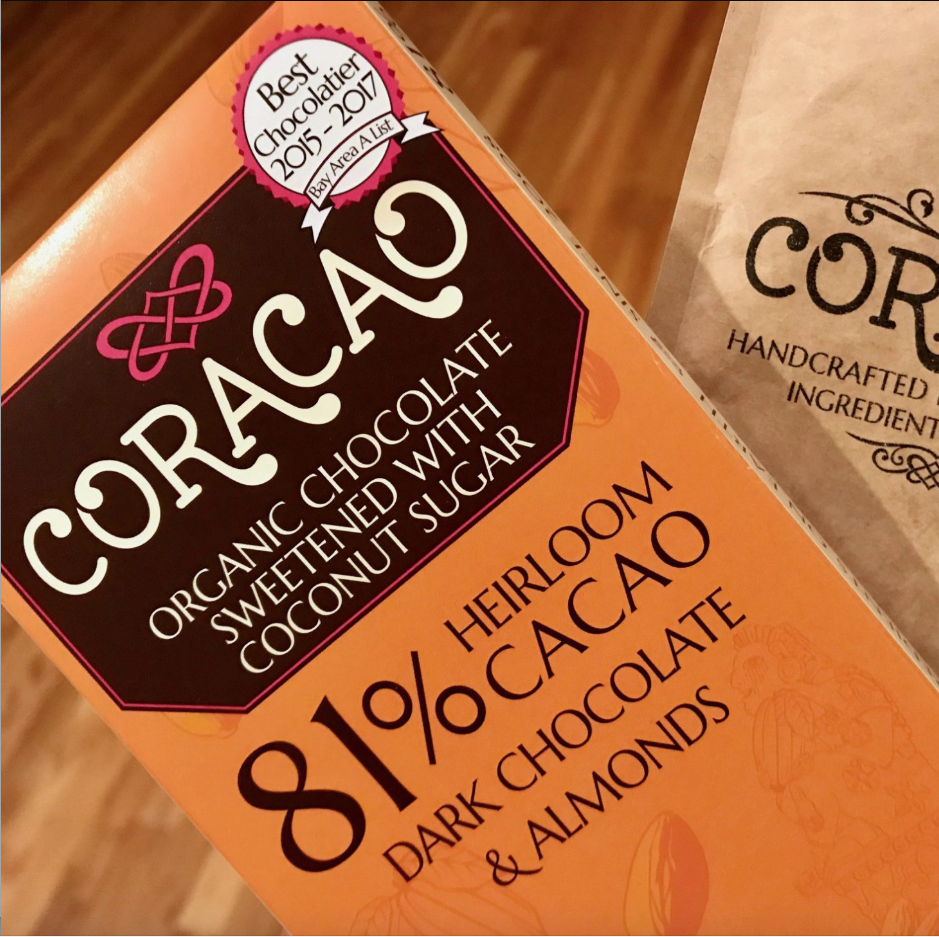 I found these chocolates at my local community food store, who often carries products not found elsewhere. Simple and delicious organic HEIRLOOM chocolate sweetened with coconut sugar. 81% dark heirloom chocolate comes in bars in several flavors, and they also have boxes filled with pieces in flavors you would recognize from a candy store. Great for gifts.
I found these chocolates at my local community food store, who often carries products not found elsewhere. Simple and delicious organic HEIRLOOM chocolate sweetened with coconut sugar. 81% dark heirloom chocolate comes in bars in several flavors, and they also have boxes filled with pieces in flavors you would recognize from a candy store. Great for gifts.
Cria
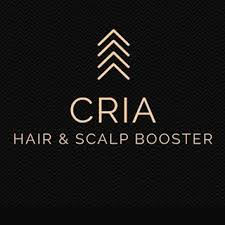 This is a unique and interesting product designed to “combat hair loss and hair thinning and improve overall hair health.” It’s made with only four natural ingredients, including an herb from the Amazon rainforest. “When applied to the scalp, CRIA’s powerful antioxidants neutralize the toxins while the essential nutrients nourish the follicles. CRIA’s Sesame Oil in particular, supports blood circulation. This helps balance the body’s PH, rejuvenate your weakened follicles, minimize hair thinning and create new hair with every application.”
This is a unique and interesting product designed to “combat hair loss and hair thinning and improve overall hair health.” It’s made with only four natural ingredients, including an herb from the Amazon rainforest. “When applied to the scalp, CRIA’s powerful antioxidants neutralize the toxins while the essential nutrients nourish the follicles. CRIA’s Sesame Oil in particular, supports blood circulation. This helps balance the body’s PH, rejuvenate your weakened follicles, minimize hair thinning and create new hair with every application.”
Alex Crane
Aizome Bedding
 Sheets and pillowcases “developed in Japan with dermatologists to give your body and skin a restful sleep experience free of any synthetic materials or irritants.” It is entirely organic and made from only two plants [cotton and indigo] without hidden extras: No polyester, no heavy metals, no micro-plastics, no formaldehyde, no gross stuff.” This bedding eliminates toxic dyes while still giving you color and style. Their blog the-bed-blog has posts about toxic dyes.
Sheets and pillowcases “developed in Japan with dermatologists to give your body and skin a restful sleep experience free of any synthetic materials or irritants.” It is entirely organic and made from only two plants [cotton and indigo] without hidden extras: No polyester, no heavy metals, no micro-plastics, no formaldehyde, no gross stuff.” This bedding eliminates toxic dyes while still giving you color and style. Their blog the-bed-blog has posts about toxic dyes.
Shop Vustra
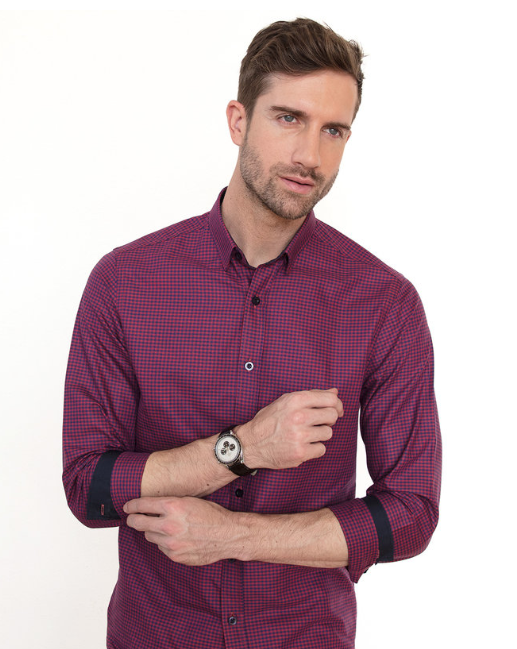 100% organic, premium quality shirts for men. “We only use low impact organic dyes, pure, soft at first touch 100% GOTS certified organic cotton and every stitch is organic too! we ensure that our shirts are made with fashion-forward European style and feature the most intricate style details. Our entire collection is made with 100% premium Italian and Turkish organic cotton that looks and feels luxurious. Our collection showcases colors and textures which are carefully developed to provide timeless, elegant and yet stylish options so you can choose to wear fashion with values.”
100% organic, premium quality shirts for men. “We only use low impact organic dyes, pure, soft at first touch 100% GOTS certified organic cotton and every stitch is organic too! we ensure that our shirts are made with fashion-forward European style and feature the most intricate style details. Our entire collection is made with 100% premium Italian and Turkish organic cotton that looks and feels luxurious. Our collection showcases colors and textures which are carefully developed to provide timeless, elegant and yet stylish options so you can choose to wear fashion with values.”
Least Toxic Spray Foam Insulation?
Question from Lora
Hi Debra,
What would be the least toxic whole house spray foams to use for insulation. the type you would spray in your exterior walls (and interior?). the type that expand when you spray in walls. my husband just wants to get something from home depot or lowes and i’m really stressing about this and possible off-gassing for years as i have MCS.
What should I use?
Debra’s Answer
Here are some answers to your question that I found online, written by green building experts.
BUILD DIRECT: Is There an Eco-Friendly Spray Foam Insulation?
This post pretty much answers the question with a well-explained NO. However another expert has a different viewpoint
GREEN BUILDING ADVISOR: Are There any “Green” Non-VOC Spray Foams?
This expert asserts that the finished, cured spray foam is NOT harmful to health but the installation of the foam is hazardous. And she admits that some foam is incorrectly installed and therein lies the problem.
MY CHEMICAL-FREE HOUSE: Zero VOC Insulation
Here you will find all the Zero VOC options, both blow-in and batt. Great review with the pros and cons of fifteen options. I think you’ll find your answer here.
That said, readers, if you have any suggestions from your own experience, please post them here.
Organic Attire
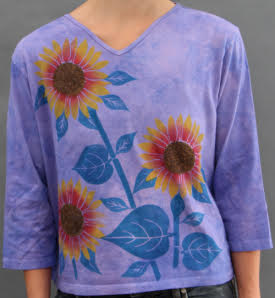 I found this small business at my local Gravenstein Apple Fair. I saw a black shirt with autumn leaves falling whimsically down the front and then was delighted it was made from organic cotton. It’s one of my favorite shirts of all time. This artist-owned and operated business provides their customers “with beautiful and unique clothing made in a sustainable manner. Comfort is also a prerequisite.” Beautiful and comfortable, Yes. This clothing is just that. Much information about their printing methods and materials. Dedicated organic, natural and nontoxic. Clothing for women only.
I found this small business at my local Gravenstein Apple Fair. I saw a black shirt with autumn leaves falling whimsically down the front and then was delighted it was made from organic cotton. It’s one of my favorite shirts of all time. This artist-owned and operated business provides their customers “with beautiful and unique clothing made in a sustainable manner. Comfort is also a prerequisite.” Beautiful and comfortable, Yes. This clothing is just that. Much information about their printing methods and materials. Dedicated organic, natural and nontoxic. Clothing for women only.
Lead-free door knobs
Question from Terry
Hi Debra,
Do lead free door knobs exist?
Debra’s Answer
This is a very difficult question.
To answer this question thoroughly you would need to know:
* the types of doorknobs available
* the materials used to make each type
And then you would need to review each one and choose those that are not made with lead.
Alternatively, you could test each doorknob for lead using an XRF machine.
But neither of these methods are practical.
There are thousands of available doorknobs, and materials disclosure is not required by law.
One man tested all his doorknobs for lead using XRF. After finding out they all tested high, it turned our they were plated with nickel. “The XRF analyzer was seeing through this layer to the lead beneath. Likely this lead would never transfer to our hands, unless the nickel wears through.” http://blog.mikemccandless.com/2010/06/finding-lead-in-your-house.html
And even if the lead DID get on your hands lead does not go through skin into your body.
BUT if you were to touch a doorknob with lead and then you picked up a sandwich, the lead would get on the sandwich. If you then ate the sandwich, the lead on the sandwich would get into your body and you would have a lead exposure.
So that would be the exposure. You would touch something that contains lead, like a doorknob, then eat some fried chicken and lick your fingers and then you would be exposed to lead.
There’s a great website called “How Products are Made”, which gives the history, materials and manufacturing information on a wide variety of products we use every day. I looked up Doorknob. In the past, doorknobs were made from wood, glass, china, or bronze. Today more doorknobs are made of metal. The most common type of metal is brass. But we don’t touch the brass—doorknobs are coated with various inert metals and electroplated with semiprecious materials.
I could find only one article that expressed any concern about Lead in doorknobs:
https://windowanddoor.com/article/marchapril-2010/is-lead-hardware-a-concern
And only one website that sells “Lead-free” door knobs.
https://www.houseofantiquehardware.com/lead-free-crystal-knobs-pulls. Even though one blogger stated, “lead-free door knobs are readily available,” I couldn’t find them anywhere else but here.
In the forty years I’ve been researching things toxic and toxic-free this is the first time it has come up as an issue. I always just buy whatever doorknobs I like. It’s not the greatest exposure to lead.
Wash your hands before you eat (as you should do anyway because of germs) and any lead your hands may have picked up along the way will be gone.
Puritas Furniture Company
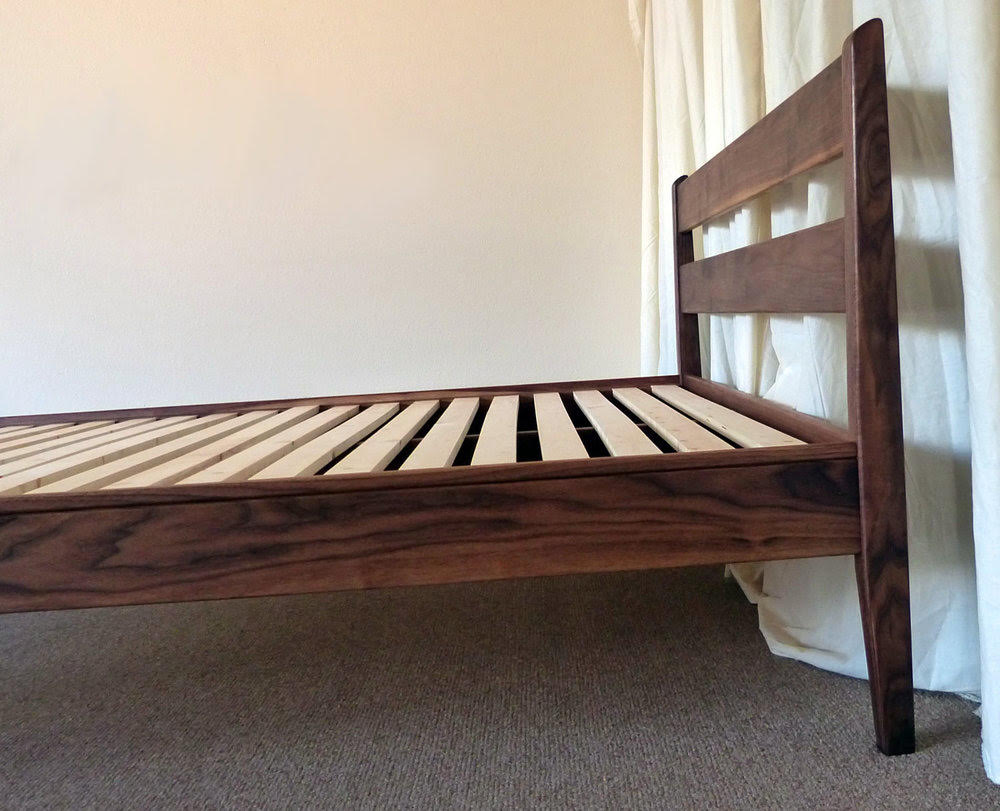 Solid wood slat bedframes made by a small, low impact, family owned woodworking and design studio immersed in and inspired by the beauty of the natural world. ”We believe it is a revolutionary and deeply caring act to support local and regional craftspeople and the communities in which we all live. We strive to provide you with beautifully designed and finely crafted classic hardwood furniture while keeping the footprint low…Our hardwood lumber comes from carefully managed North American forests from producers who follow the strictest standards in order to ensure long term viability through sustainable harvesting and management practices. Our native west coast softwoods are sourced from carefully managed private lands and we can accommodate requests for reclaimed and salvaged wood options as well…We promote the use of non-toxic finishes and healthy environments with our preferred finish being an all-natural, zero-voc combination of beeswax, linseed oil, and pine resin that is not only non-toxic to the maker and the end user, it is also easier on the environment in it’s raw ingredients and production.”
Solid wood slat bedframes made by a small, low impact, family owned woodworking and design studio immersed in and inspired by the beauty of the natural world. ”We believe it is a revolutionary and deeply caring act to support local and regional craftspeople and the communities in which we all live. We strive to provide you with beautifully designed and finely crafted classic hardwood furniture while keeping the footprint low…Our hardwood lumber comes from carefully managed North American forests from producers who follow the strictest standards in order to ensure long term viability through sustainable harvesting and management practices. Our native west coast softwoods are sourced from carefully managed private lands and we can accommodate requests for reclaimed and salvaged wood options as well…We promote the use of non-toxic finishes and healthy environments with our preferred finish being an all-natural, zero-voc combination of beeswax, linseed oil, and pine resin that is not only non-toxic to the maker and the end user, it is also easier on the environment in it’s raw ingredients and production.”
Dr. Cowan’s Garden
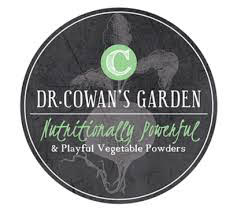 “Nutritious & delicious vegetable powders” made from “organic or beyond-organic vegetables…Some of the healthiest people who ever lived – from Native Americans to traditional Africans – consumed a large diversity of plants. Our vegetable powders make it easy for you to diversify your vegetable consumption…Miron violet-glass jars filter the aging wavelengths of light to protect the vibrancy of our powders for years.” I can’t wait to try these powder made from diverse varieties. How can I resist three-beet powder!
“Nutritious & delicious vegetable powders” made from “organic or beyond-organic vegetables…Some of the healthiest people who ever lived – from Native Americans to traditional Africans – consumed a large diversity of plants. Our vegetable powders make it easy for you to diversify your vegetable consumption…Miron violet-glass jars filter the aging wavelengths of light to protect the vibrancy of our powders for years.” I can’t wait to try these powder made from diverse varieties. How can I resist three-beet powder!
Creative Cables
A Wild Soap Bar
Terra Thread
 A diverse collection ofaffordable bags made at a Fair Trade Certified Factory using family grown Organic Cotton. “We start with 100% organic cotton, then, we color our fabric using GOTS certified dyes. All of our products are made in a Fair Trade Certified Factory. We guarantee fair wages, good working conditions, no child or forced labor, and a democratic workplace for our bag makers.” Lead-free zippers.
A diverse collection ofaffordable bags made at a Fair Trade Certified Factory using family grown Organic Cotton. “We start with 100% organic cotton, then, we color our fabric using GOTS certified dyes. All of our products are made in a Fair Trade Certified Factory. We guarantee fair wages, good working conditions, no child or forced labor, and a democratic workplace for our bag makers.” Lead-free zippers.
Soapply
Rising Springs
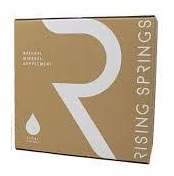 Spring water delivered to your door. “Tested pure to parts per quadrillion (a million billions!). Zero contaminants of any kind…The only natural source water in the US packaged as a natural mineral supplement – whole, live and mineral-rich…Rising from 2.2 miles deep under its own tremendous and constant pressure.”
Spring water delivered to your door. “Tested pure to parts per quadrillion (a million billions!). Zero contaminants of any kind…The only natural source water in the US packaged as a natural mineral supplement – whole, live and mineral-rich…Rising from 2.2 miles deep under its own tremendous and constant pressure.”
New Study Finds Toxic Nonstick Chemicals in Oral B Dental Floss
A new study from the Silent Spring Institute and Public Health Institute found higher levels of PFHxS (perfluorohexanesulfonic acid), a PFAS, in women who flossed with Oral-B Glide compared to those who didn’t. Other brands of floss may also use these chemicals (which may or may not appear on the label).
“This is the first study to show that using dental floss containing PFAS is associated with a higher body burden of these toxic chemicals,” lead author Katie Boronow, a scientist at Silent Spring.
My interest in this study is it shows that even small exposures to toxic chemicals not only can but DO end up in bodies in measurable amounts.
Last year the State of Washington and the City of San Francisco banned use of PFAs in single use food service ware.
USA TODAY: Oral-B Glide Floss Tied to Potentially Toxic PFAS chemicals, Study Suggests
HEALTHLINE: Is Oral-B Dental Floss Really Toxic? What You Need to Know
Toxic-Free Dental Floss
First I just want to say that dental floss is not one of your greatest exposures to toxic chemicals. It’s not a product I’ve focused on in the past.
Note in the comments below one reader wrote it saying she had contacted P+G, who sent her a document that shows PFAs are NOT an ingredient in their Glide dental floss. The study did not even look at the ingredients in the product. It was rather a study that showed that select group of people who had PFAs in their body used Glide dental floss. So we can’t say that there are PFAs in Glide dental floss.
But if you are concerned about this possible exposure, let me give you my thoughts about products that are unlikely to contain PFAs or any other industrial chemicals as ingredients.
Rather than simply give you a list, I want to show you my process of how I came up with this list.
First I went to my new Zero Toxics Products + Materials Matrix. Even though I haven’t written the ratings specifically for dental floss yet, these ratings do show how I think about products and how I quickly evaluate products that are likely to be toxic-free.
Here are quick notes of what the ratings would be for dental floss:
ZERO TOXICS “A+” RATING
Dental floss made from certified organic product where all materials and the manufacturing facility and process are certified organic.
ZERO TOXICS “A” RATING
Dental floss made from certified organic or sustainable materials that come from renewable plants or animals, or abundant minerals.
ZERO TOXICS “B” RATING
Dental floss made from renewable plants or animals, or abundant minerals. Toxic chemicals may be used to some degree in production or processing. May contain residues of toxic contaminants such as pesticides or pollutants.
ZERO TOXICS “C” RATING
Dental floss made from petroleum-based ingredients. May not be suitable for people with Multiple Chemical Sensitivities or other high-risk groups.
ZERO TOXICS “D” RATING
Known to cause illness or injury with repeated exposure over time—products or materials made with one or more chemicals of concern.
ZERO TOXICS “F” RATING
Known to cause immediate harm and may even lead to death—made with one or more chemicals of concern
Here are some dental flosses I looked at, with their Zero Toxics Matrix ratings and materials given in their descriptions:
B – Eco-Dent Gentlefloss Premium Dental Floss, Mint
100% vegan waxed, no information on material used for floss itself
B – Dental Lace | Silk Dental Floss with Natural Mint Flavoring
This one is made from 100% silk and Candelilla wax.
B – Desert Essence Tea Tree Oil Floss
Coated with natural beeswax with added antiseptic tea tree oil, material of floss unknown
B – RADIUS – NATURAL SILK FLOSS
Made from 100% silk and Candelilla wax.
B – COCOFLOSS Coconut-oil infused luxury dental floss
This one is made from microfibers infused with coconut oil. Says right in the description “no PFA.”
B – Dr. Ginger’s All Natural Coconut Oil & White Charcoal Dental Floss
Made with coconut oil, xylitol and white charcoal, no information given on fiber of floss.
The above list all happened to end up with my Zero Toxics “B” rating.
It seems that many mass market brand dental flosses may contain PFAs to make them glide between teeth more easily. Any brand that does contain PFAs would fall into my Zero Toxics “D” rating—not an immediate poisoning but could build up to be dangerous over time with regular use.
This isn’t a complete review or writeup on all dental floss, just something quick to get started with if you are considering changing your brand of dental floss.
Round Cake Pan That Is Non Toxic
Question from Naomi
Hi Debra,
I have been looking for a round glass cake pan like the ones Pyrex used to make but they do not seem to be available anymore from any company. I found a ceramic one on Amazon. I tried to search this company on your website but did not find any info. Can you let me know what you think of it ? If you have any other suggestions, please let me know
https://www.greenlife-cookware.com/about
For us, healthy cookware isn’t an option, it’s a necessity. That’s why we only use Thermolon™, the first 100% natural ceramic non-stick coating.
Traditional non-stick coatings are manufactured with chemicals that are harmful to you and the environment. When overheated, these coatings release toxic fumes. Thermolon™ is high heat resistant, which means it won’t chip or peel when overheated the way traditional coatings do.
At GreenLife™, we value the health of you and your family. That’s why we made it our mission TO CREATE PRODUCTS 100% FREE OF PFAS, PFOA, LEAD and CADMIUM.
Thanks so much.
Debra’s Answer
This looks like it might be close to what you are looking for. It’s 3 quarts, which I think is too big, but you don’t need to fill it.
https://www.bedbathandbeyond.com/store/product/3-quart-borosilicate-glass-baking-dish-in-clear/1044168773?skuId=44168773&&enginename=google&mcid=PS_googlepla_nonbrand_bakeware_online&product_id=44168773&adtype=pla&product_channel=online&adpos=1o4&creative=224484706032&device=c&matchtype=&network=g&mrkgadid=558423881&mrkgcl=609&rkg_id=0&gclid=Cj0KCQiA-JXiBRCpARIsAGqF8wWzgYfkOGjI8ld9RhzDRB7CGfRnqJkeSQMKVL4EBb24CgCXa52ChPgaAlZzEALw_wcB&gclsrc=aw.ds
Try searching on “glass baking dish” rather than “cake pan” and you’ll find quite a few.
I took a look at Thermolon back in 2008, and found that the ingredeints are a trade secret, but it “is based on silica, which of course originates from sand.” Other raw materials in the coating are oxygen and carbon. During the process of making Thermolon, the carbon is eliminated. So it’s basically some type of glass. I had a pdf they sent me with a statement about the composition of the finish, but it has gotten lost over the years. I’ll research it again and see if I can find out more.
Thermalon may be fine. I just don’t know because the materials are a trade secret/
Toxic Airstream Trailers
For years I’ve been hearing that Airstream Trailers are less toxic that other brands of trailers.
That may have been true at some time in the past, but it’s not true today.
Over the weekend Larry and I went to an Airstream showroom and the toxic odor in the new models was terrible.
Airstream trailers have a classic aluminum frame with a very beautiful design, but the materials used in today’s Airstream interiors are the same toxic materials used in other trailers.
So if you want an Airstream, look for an old one and renovate the interior with nontoxic materials. Don’t get a new one.
Safety of Motorhomes
Question from Kim G
Hi Debra,
I’m looking into purchasing a Class C motorhome (as a tiny home on wheels) for full-time travel but I’m concerned with the level of toxic materials used in construction. I’ve thought of purchasing an older model so that I can do renovations with non-toxic materials but I’m not quite sure where to begin my search.
Any advice on the topic of motorhomes is much appreciated!
Debra’s Answer
Well as it happened, Larry and I were just discussing the same thing this week! So we put this on the top of our to-do list and I can give you some up-to-the minute information.
We went out looking at motorhomes at a large RV dealer so we could see a lot of options.
It sounds like you already know that you want a Class C.
We had already looked at some new motorhomes and found them to be too toxic. But then we looked at some that were 2007 returns that had been take out of rental service and each one of them was acceptable to me. So the materials were about 11 years old.
I didn’t like the design aesthetic, so we would be remodeling anyway, but it wasn’t toxic.
So if anyone reading this wants to buy a relatively nontoxic home-on-wheels, look for a motorhome circa 2007 or earlier. None of the motorhomes I looked at had any fragrance, cigarette smoke, pesticides, pet smell or other human-use odors that I could detect, so this is a viable option.
We’re going to continue our search on lots and on Craig’s List. EBay also has them but I wouldn’t buy one sight-unseen. You can’t tell if there’s something toxic from looking at a photo.
WHY WE ARE LOOKING AT MOTORHOMES INSTEAD OF TRAILERS OR TINY HOUSES
We’ve been researching all these options for almost two years now.
There are a lot of factors that go into choosing a tiny house vs a trailer vs a motor home.
The main thing that has kept us from moving forward with a tiny house or trailer is where to park it. You can’t park them on the street. You have to park them in a trailer park, which can cost $1000/month or more depending on where you are. And we’ve checked out trailer parks. Virtually all of them had people cooking outdoors with lighter fluid, the smell of which was all over the trailer park at dinner time.
On the other hand, you can park a motorhome on the street and sleep in it for up to 72 hours. You can park them in parking lots. You can purchase unbuildable land and park them on your land. There is a lot more freedom regarding where you can put them.
In our case, we will be parking ours on family property near Larry’s mom’s house. And then when the time comes when we will no longer need to live here, we can just drive off and still have a place to live while we establish our new home. And we’ll be able to just drive around all we want while we look for the best place to live for the next chapter of our lives.
A motorhome just seems more do-able.
So that’s where we are with this.
And yes, we’ll be ripping out the interior and remodeling. Although, if we get an older model and the built-ins are real wood…that would be ideal.
Lovesac Furniture
Question from Melissa
Hi Debra,
I recently saw a Lovesac piece of soft furniture, and wanted to know about the materials it is made from. They are textiles, REPREVE, repurposed from plastic bottles, and Durafoam, a premium blend of shredded recycled foam. They make a “Sac” and a sectional couch. They are designed for life with a lifetime warrenty. Costco is offering special Couch bundles for its customers.
Thank you for your help!
Debra’s Answer
This is a very clever and affordable design. As for the materials…
REPREVE is a good example of material that is “green” because it’s recycled but it’s not nontoxic for everyone.
The company has recycled more than 10 billion plastic bottles by turning them in to “performance fiber,” which is great for the environment. But while their website says much about how many plastic bottles they’ve recycled and all the major brand names that are using their fabric, it says nothing about the actual fabric, like what the bottles are made from or if the fabric has any finishes applied.
I happen to know from other research that the bottles are made from PET. As a material, PET is interesting because it has two names. It’s called PET when it’s a plastic and polyester when it’s a fiber. REPREVE calls it neither, it just says it’s made from recycled plastic bottles.
You can read more about PET here.
NASA found that PET doesn’t outgas, and health effects are negligible, however, if you are sensitive to materials made from petroleum, this fabric may not be for you.
Durafoam is simply polyurethane foam that may have unknown additives of various kinds, including fire retardants (it’s very flammable).
What is Shredded Durafoam?
Shredded Durafoam is a Lovesac trademarked unique blend of high, medium, and low-density open-cell polyurethane foam. To assure the most comfortable sitting experience, Durafoam is guaranteed never to go flat.
[Apparently the word “Durafoam” is copyrighted for a number of different foams used to make different types of products. So this is not a broad definition of Durafoam. If you see this term again on another product, it’s probably a different mix of chemicals.]
This product doesn’t look to be particularly toxic-conscious.
It’s not something I would recommend, but I can’t make a definitive case for it being toxic either, since I don’t have all the information about the materials needed to make that call.
When I see something unknown like this, I pass. Companies with really good quality toxic-free materials bend over backwards to tell us about those materials. I don’t see that going on here.
Shopping for Shutters + New Nontoxic “DURAWOOD” Wood Composite Material
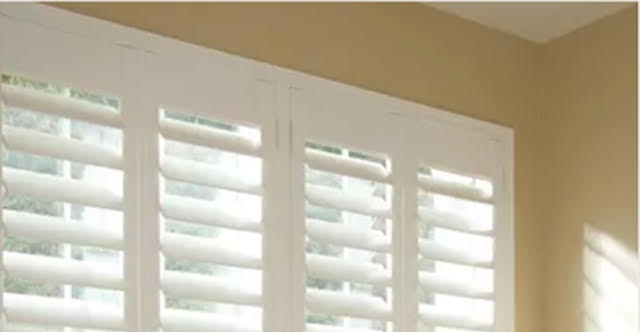
These shutters from Smith & Noble are made from a new nontoxic wood composite—they’re nontoxic and affordable.
I’m very excited to write this post today because it is the first post that contains links to my new Zero Toxics Knowledge Base. These links give you more information about the material, so I can link to that materials information again and again from different posts. Eventually you will begin to become familiar with materials as you read. Be sure to click through as you read.
One of the reasons why I love to do what I do is because my readers come to me all the time with products I don’t know about and ask me if they are toxic-free.
Often I point out toxic materials and reject the product, but yesterday one of my ongoing consulting clients (who doesn’t buy anything without running it by me first), brought some window shutters to me to check out. At first they looked suspicious, but they turned out to me wonderful, and opened the door to a whole new world of possibilities for affordable toxic-free products.
The description on the Smith & Noble website said “Eco Wood Shutters…These beautifully styled shutters are crafted to bring you all the beauty of wood alongside long lasting superior strength. Made from sustainable materials and featuring a tough poly coating that contains no VOC’s..Patented poly coating resists staining to ensure longevity in any environment.”
Eco wood..the beauty of wood…sustainable materials…sounds like wood but the description doesn’t actually say wood.
So I called customer service for my client and asked about it.
“Yes, It’s wood,” they said, “It’s a wood composite.”
“But this doesn’t make sense, “ I said. “Wood composites outgas toxic chemicals like formaldehyde. Why would they put a zero-VOC finish on a wood composite?”
“I’m pretty sure they made the composite with no toxic chemicals.”
“I need to know for sure what this composite is made of.”
“Well, I don’t know so you should just get our real wood shutters rather than the DuraWood.”
Ah ha! A brand name. I hung up from customer service and looked up DuraWood.
Yes yes yes!
Turns out that DuraWood is a wood and plastic composite that has the look, smell and feel of wood but has the durability of plastic. The great part is the plastic is polyethylene , which is one of the least toxic materials on the planet.
The finish is zero VOCs because it’s not a finish at all. It’s “poly” (polyethylene).
You can go online and type in “durawood” and you will find all kinds of products made with this materials.
I haven’t yet seen a sample of this material, but on paper it checks out as toxic-free.
Smith & Noble also sells Durawood blinds , which would be another affordable choice.
COMMENTARY ON PRODUCT DESCRIPTION
This is yet another example of businesses giving insufficient information on the health aspects of the product.
The material is actually nontoxic, but they don’t tell us that. I had to call customer service and even they didn’t know what to say to me. I had to research the material myself.
It would have been so much better if they would give full disclosure, tell us about the materials, and show us it’s OK for us to use.
Shopping for Pumpkin Pie + 6 of my favorite ways to celebrate pumpkin
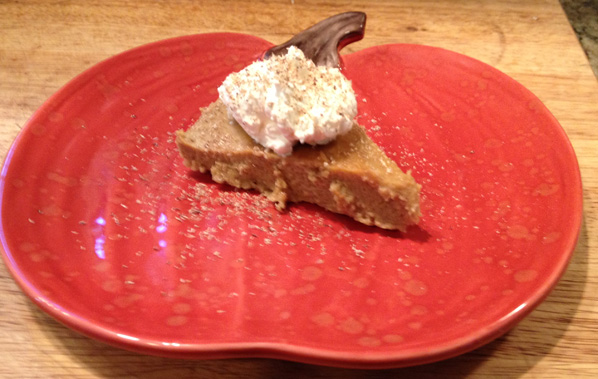
Last night Larry and I went shopping for a pumpkin pie.
Usually I make something pumpkin, but this year I’m so immersed in working on my new website that it was enough to make the organic turkey and and gluten-free cornbread stuffing and yams and cranberry sauce sweetened with local apples and green bean casserole. So I thought we could just buy a pumpkin pie this year. And I’m living with Larry’s family at the moment, so want to make a Thanksgiving dinner that will be familiar to them.
So we went to Whole Foods because I thought they might have house-baked pumpkin pies, but they didn’t. They had two brands of packaged pies. One was not even organic and had a lot of additives that don’t belong in pumpkin pie. The other was gluten-free and vegan and the second ingredient was tofu, so that was not an option for me because I don’t eat soy. Plus it was $20 for a smaller-than-usual pie.
We actually ended up purchasing a huge pie made with organic pumpkin from Costco, which seems to carry more and more organic food every day. Eleven-inch pie for only $7.99. And none of the additives found in the Whole Foods pie.
Times are changing. Whole Foods is no longer Whole Foods. Their basic operating principles are gone.
Next year I’ll go back to baking my own, but it was interesting to see what is going on in the world of pumpkin pie.
Here are some recipes I’ve shared in the past for pumpkin. I highly recommend the Pumpkin Pie for Everyone if you want something close to the standard pie, but try some of the others too. All yummy.

Pumpkin Pie for Everyone
The ingredients are so simple, practically everyone can eat it. There’s no crust (though you could add one if you want) so there are no grains, and there is no sweetener of any kind (though it tastes remarkably sweet!). And it’s so delicious you won’t miss the usually-soggy crust or the sugar. It’s my favorite pumpkin pie ever! RECIPE >>>

Twice Baked Pumpkin
You probably know twice baked potatoes…I roasted the pumpkin, fluffed up the roasted pumpkin with a fork in its shell, added butter and molasses, and some toppings, and baked it again. The result was “awesome”, according to my taste testers. Both preferred this to pumpkin pie and so did I. You get to see the pumpkin in its natural shell and natural state, not pureed, but as nature made it. A wonderful celebration! RECIPE >>>

Twiced-Baked ”Pumpkin Pie”
This tastes like pumpkin pie but is made with a very sweet little squash called “Sweet Dumpling.” If you can find this squash where you live, it’s the best squash. It’s very smooth and creamy and SWEET. So no added sweetener of any kind is needed. RECIPE >>>
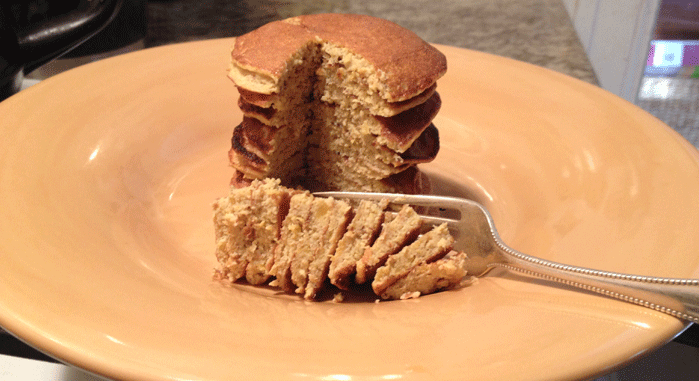
Amazing Pumpkin Pancakes
If you’ve roasted a pumpkin for pie and have some pumpkin puree left over, make these pancakes for breakfast. It’s a real pancake made only with pumpkin, eggs and spices, but it has the texture of a pancake and tastes like a pancake. RECIPE >>>
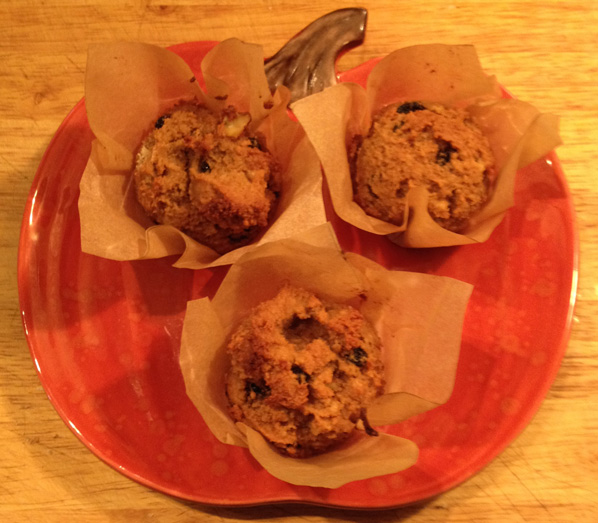
Pumpkin Muffins
These low-carb, gluten-free muffins are moist, delicious, and easy to make. Almond flour instead of wheat flour gives them extra protein. RECIPE >>>

Pumpkin Hummus
Had some roasted carnival squash and cooked garbanzo beans, and thought I would try the two together. Delicious! Autumn in a bowl. RECIPE >>>
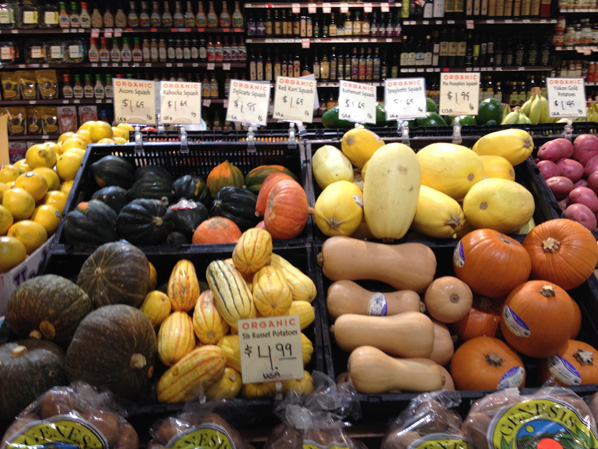
How to Roast A Pumpkin . . . And Other Winter Squashes
Please use real roasted pumpkin in these recipes—not canned pumpkin. It’s easy to roast a pumpkin or any winter squash! RECIPE >>>
Oxford Dictionary Word of the Year is…TOXIC

Well! The world is catching up with me. After forty years of talking about things toxic…the Oxford English Dictionary chose “toxic” as the Word of the Year!
The Oxford Word of the Year is a word or expression that is judged to reflect the ethos, mood, or preoccupations of the passing year, and have lasting potential as a term of cultural significance.
There was a 45% rise in the number of times the word was looked up on the Oxford Dictionary website.
Read more about the word and how the idea of “toxic” is permeating our world here:
San Francisco “Worst Air Quality in the World” Yesterday
You may have heard in the news yesterday or this morning that San Francisco had the worst air quality in the world.
So I just wanted to let you know I’m OK and what is was like here.
Yesterday was day 9 of smoky skies. Larry and I had been staying pretty much indoors for a week and decided to go out to lunch. It seemed in the morning that the sky was clearer than it had been.
But as we were driving around for several hours, I kept saying, “you know, it looks like the smoke is getting worse.” Until finally we both were not feeling well, so we came home to the news that the air quality here was now worst in the world.
There is something called the Air Quality Index that rates how polluted the air is.
We were in the HAZARDOUS range.
Here’s our local San Francisco Bay Area map:
We just stayed in our bedroom with the door closed and turned up our EnviroKlenz air filter the highest setting. We were so relieved to have this filter.
For the past forty years I have made a point to always live where there is clean air. So I can go outdoors anytime I want and be able to breathe. This past week and especially yesterday I haven’t had that option because the air outdoors was worse than the air indoors.
But the EnviroKlenz Mobile air filter did it’s job. We were protected, I slept well, and this morning I’m feeling fine and up working. It’s still smoky outside, but here next to the filter, I can breathe.
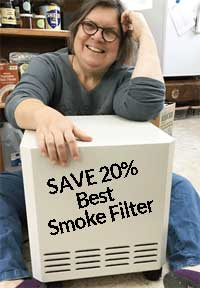 The air quality is down to UNHEALTHY this morning, here.
The air quality is down to UNHEALTHY this morning, here.
But this is exactly why I think everyone needs an air filter. And one that removes both particles and gasses. If I didn’t already have this air filter, yesterday I would have really wished I had it.
[This morning I’ve been here in my office writing without the air filter for about two hours. After sleeping in the bedroom with it overnight I was feeling really good. Now after two hours of being indoors without the air filter my lungs are irritated and it’s getting hard to breathe. My eyes are burning, I have a headache, getting tired and sleepy…I’m going to the bedroom now to get the air filter and bring it to my office. I really need two air filters, one for each room.]
I’ve arranged a 20% discount on EnviroKlenz Mobile air filters for you, through Tuesday.
Why Buy Organic Turkey

Willie Birds Organic Turkey was the choice of gourmet food purveyor Williams-Sonoma this year. And my choice for my Thanksgiving dinner.
Last week I wrote a post about choosing my Thanksgiving turkey.
This week I want to give you more information I just received from the Organic Consumers Association about why you shouldn’t buy the standard supermarket turkey.
I did make a decision about my turkey.
I chose a local organic Willie Birds turkey, which was the choice of Williams-Sonoma this year. In their catalog, these turkeys are about $10/pound + shipping. I ordered one down the street from where I live for $2.49 a pound. Same turkey.
Here’s more information about turkeys:
ORGANIC CONSUMERS ASSOCIATION:What Turkey Producers Don’t Want You to Know
Thanksgiving Turkey 2018
Last year I wrote a long post about all the different choices we have for Thanksgiving turkeys.
After doing this research I decided to purchase a locally-grown heritage turkey from a 4H project and wrote about that experience as well at My Thanksgiving Organic Heritage Turkey—A Shining Example of a Toxic Free Product.
This year I am considering my choices yet again.
Again, here where I live I can purchase a fresh heritage turkey and organic and, of course, conventional turkeys.
This year I’m on the fence between buying another heritage turkey or buying an organic turkey.
Here’s what I’m thinking.
Last year I wanted the experience of a heritage turkey. I was willing to spend $9 a pound for that experience. But I didn’t know what the turkey would be like, and I didn’t want to deprive my family of the usual turkey experience they were expecting, so we actually had two turkeys.
An organic turkey is half the price and it’s organic, but it’s what is called a “broad-breasted white”—a hybrid breed that have been created to produce a lot of breast meat. This year I’ve been eating a lot more heirloom and heritage foods so the thought of eating a hybrid turkey seems much less appealing to me.
But stil, it’s better than a conventional turkey. It’s organic.
My choices for organic here are to buy one of two brands:
- Willie Bird Organic is our very local brand. In fact, they are almost in my back yard. They were one of the first companies to go natural with their turkeys years ago. Their organic birds are limited and local and not on their website. But my the butcher at my local independent grocery offered to order one for me when I asked. Willie Bird Organic Turkeys are being shipped by Williams-Sonoma this year.
- Mary’s Organic Turkeys are being sold by my local organic food co-op. This brand is very highly regarded in my town and sold at all the best places. On their website you can order a conventional turkey, a free-range turkey, an organic turkey or a heritage turkey. Again these are very local and you can’t order delivered-to-your-door, but check out their website and see how they are raising their turkeys and look for something similar in your local area.
I haven’t decided yet which turkey I’m going to choose, but I have to show you my dream turkey. My favorite restaurant—SHED in Healdsburg, California— is offering these turkeys for special order, starting at about $200.
They are from Good Shepherd Poultry Ranch in Kansas. They DO ship turkeys, chickens, ducks, and geese. The primo primo primo restaurants here serve these birds, Naturally bred, sustainably raised, and humanely harvested. Again check their website and see what they are doing and look for local. They are the oldest continuous strain of standard-bred heritage birds in North America.
See more turkeys on the Meat & Poultry page of Debra’s List.
New Study Shows Organic Food Really Does Reduce Risk of Cancer

There are many lists on the internet about why you should choose organic food. They say things like
- No synthetic pesticides
- No GMOs
- No herbicides like glyphosate
- No sewage sludge fertilizer
- No obesogens that can make you fat
And more.
But now there is a new study from France in which a team of researchers evaluated the diets of almost 70,000 adult volunteers over a period of several years.
The volunteers were categorized into four groups based on how often they consumed organic foods, including fruits, vegetables, meat, fish, cooking oils. Even processed food was included.
The researchers collected data for several years. Then they made note of those who did and did not develop cancer. The results were dramatic.
Volunteers who reported eating the most organic food were 25% less likely to be diagnosed with cancer. The greatest reductions of risk were seen in post-menopausal breast cancer and non-Hodgkin’s lymphoma.
I agree this is a likely outcome. A basic law of toxicology is “no poison, no poisoning.” That sounds obvious but people don’t seem to understand that eating or drinking or breathing poisons that cause cancer are likely to result in cancer. Thus people smoke even though there is a warning label on the package.
I go out of my way and spend more money to eat the best local, seasonal, fresh organic food. I just ate yummy organic roasted carrots from my farm market and just made the rounds this morning to find out who’s selling organic turkeys for Thanksgiving.
Organic is worth it. 70,000 French citizens just proved it.
Portable Heaters with Metal Housings
I originally wrote this post in 2010. Not much has changed since then in terms of types of heaters, but I’ve updated it to bring the links to products up to date.
Readers, I’d love to have some comments with the brands of heaters you are using and like.
I had someone ask this week about portable heaters. I had written that I have a “ceramic heater” with a metal housing and she didn’t know what a ceramic heater was, or what to look for. So I’m going to give you a little review here of different types of portable heaters that come with metal housings, including pictures, so you know what your options are.
First, though, I want to say that with any portable heater with a metal housing, there will likely be an initial odor from the finish that is not fully cured. These finishes are heat cured during manufacture, but there can be residual outgassing as the finish is dry to the touch, but not fully cured. Once the finish is fully outgassed, you can use these heaters with no problem.
About outgassing heaters…From reading your comments, I see that some of you are not outgassing them long enough. It requires a lot more than a few hours. I gave mine to a friend to use all winter. Others have just run the heater outdoors or in the garage. How long you need to outgas the heater depends on the model and even within specific models there are differences. Just heat it until it doesn’t smell any more. But for some types of heaters we’re talking about 100 hours or more of heat before the smell goes away.
You can buy some of these heaters used, like on eBay or try your local Craig’s List. A used heater will already be gassed out and you’ll save money too.
You may not be able to find a heater on your local store shelves that does not smell initially. But if you bake it out, the smell will eventually burn off and you will have a good serviceable heater. There are some heaters you can buy online that are unfinished.
Ceramic “utility” heaters
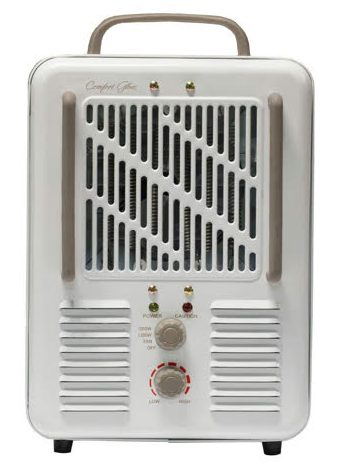 I have two ceramic heaters with metal housings that I purchased more than ten years ago. But I have not been able to find them recently in stores. They are still working now, twenty years later.
I have two ceramic heaters with metal housings that I purchased more than ten years ago. But I have not been able to find them recently in stores. They are still working now, twenty years later.
I’ve noticed now that the ceramic heaters in metal casings are called “utility heaters.” Here are some that say “all metal construction” in their description.
There are a lot more. The way I found these was I did a Google search on “utility heater” and it gave me Goggle search results for utility heater. I just started clicking and reading descriptions. Sometimes I had to read descriptions from several different vendors to find out they had metal housings.I’ve found this year that if the housing is metal, they say so in the description. If it doesn’t say metal and look further into the Q&A, it always says plastic if someone asks. So look for “metal” or “steel” in the description.
These utility heaters are the least expensive heating option, around $40. They are not beautiful [although the 2018 models are getting more stylish], but they will heat your room.
My experience with buying this type of heater is that they don’t have much odor right out of the box, You might need to run it a day or two to burn offf any odor, but it hasn’t been a problem for me.
Radiator heaters
 These are oil-filled heaters that look like old radiators. The oil is completely sealed in and should not leak. I have one and it works very well to heat up one room. And it’s totally silent. Has no fan.
These are oil-filled heaters that look like old radiators. The oil is completely sealed in and should not leak. I have one and it works very well to heat up one room. And it’s totally silent. Has no fan.
This type of heater is notoriously bad about outgassing. This is the one that requred an entire winter to outgas, But once I outgassed it, it’s been a great, reliable heater for more than twenty years. It was worth the effort.
These are made by many different brands.
Baseboard heaters
Baseboard heaters are filled with water or other substances.
One reader wrote that she moved into an apartment with 50-year-old baseboard hot water/oil heaters that also contained glycol, which was leaking. She and her cat got very sick. So that’s something to watch out for.
Another reader wrote that she installed Cadet Soft Heat baseboard heaters throughout her house and there is no odor. I just looked at their website again and they also have wall heaters and garage heaters which look to have metal housings, but they don’t say in the description. So this is something to check if their products interest you. The baseboard heaters have metal housings.
Infrared Radiant Heaters
 The heat produced by infrared heaters and the heat produced by the sun are very much alike. The heat we feel on our planet is infrared heat produced by the sun. In contrast to most heaters, Infrared heaters do not heat the air in the area and do not cause circulation of the warm air–instead, they heat objects directly. The rays produced by an infrared heater penetrate the skin and warm your body beneath the skin.
The heat produced by infrared heaters and the heat produced by the sun are very much alike. The heat we feel on our planet is infrared heat produced by the sun. In contrast to most heaters, Infrared heaters do not heat the air in the area and do not cause circulation of the warm air–instead, they heat objects directly. The rays produced by an infrared heater penetrate the skin and warm your body beneath the skin.
They are the heat source for far-infrared saunas.
A reader recommended radiant heaters from Radiant Electric Heat. They have stainless steel models “which produces no chemicals, dust particles, odors or fumes.” Their portable stainless steel model has no finish—just stainless steel. The company is experienced working with people with MCS.
- StainlessSteel model s DME Certified
- Non-allergenic, perfect for chemically sensitive or people with acute allergy or sinus conditions
- Built-in thermostat for accurate control of your comfort
- Internal tip-over switch for your safety
- Silent – Clean – Odorless – Economical – Reliable
Warm Your Body Instead of Your Home
I can’t pass up this opportunity to remind everyone that you can save a lot on your heating bills by warming your body instead of the air around you. It takes a lot more energy to warm the air in a room than it does to warm your body. Many body warmers need no energy at all!
- Put on a sweater or scarf or even a wool vest. In the winter I wear flannel shirts with tank tops underneath, sweatshirts, sweaters scarves, wool sock. Long underwear is great!
- Drink hot liquids. Skip the hot chocolate and find herbal teas that you like that you can sip all day, or vegetable soup or bone broth.
- Snuggle with a loved one under a blanket. Body heat is great!
Fragrance-Free Laundromats in San Francisco
Here’s a great idea whose time has come: fragrance-free laundromats!
The link below goes to a post on a blog for an acne clinic. Their concern is acne, not fragrance in general, but since fragrance on clothing from scent in detergent causes acne, they’re on board to live fragrance-free.
“laundry detergent is a major factor in the acne-safe lifestyle. so while we all are making the effort to purchase acne-safe detergent, the cloggy residues from prior machine users can still be getting on our clothes. frustrating!”
SKIN SALVATION: Fragrance-free Laundromats in the San Francisco Bay Area
Home Iron

While I was looking for an image of a woman’s hands ironing I was struck by how many paintings of women ironing exist, going back a good 100 years. So here’s a bit of art to elevate the act of ironing.
I’m moving this post up to present time (originally published 17 March 2008) because there is a new related question and I wanted to include these comments.
One of the commenters decided not to purchase a new Rowenta iron for the reasons stated in her comment. And she’d like to know what other brands of home irons you all are using and recommend.
So readers, over to you. What do you use for an iron? I’m still using my old Rowenta.
Question from bebe
Is there a specific type or brand of iron you recommend?
Debra’s Answer
The only recommendation I have for irons from a toxicity viewpoint is to stay away from nonstick finishes. Get an iron with a shiny finish and you’ll have no problems.
That said, I personally have a Rowenta iron, which costs more, but it’s a lot heavier, which means it’s easier to iron, because YOU don’t have to press as hard. I’ve had it for years–longer than my husband, so that’s more than 20 years–and it’s still working great.
Because I’m in San Francisco for three months, I just bought a cheap $20 Black & Decker steam iron at Target because I didn’t want to risk losing or breaking my Rowenta in transit. It has a shiny bottom too, but is not as heavy.
New IKEA MAUSUND MATTRESSS
Question from Concerned Mom
Hi Debra,
I noticed that Ikea recently came out with a new latex/cotton/wool mattress called Mausund. We are preparing to move to Europe and will need to buy mattresses for our three young children and this mattress is available there. It appears as though the materials in the US and EU version of the mattress are similar. Would this be a ‘safer’ option for my young kids to sleep on (ages 3, 6 and 9)? No one has any diagnosed allergies or sensitivities, I simply don’t want them sleeping on mattresses that off gas harmful chemicals. The price of the mattress in the EU is more reasonable than here, making it within our budget. Thanks.
Debra’s Answer
Well this is an improvement for IKEA but the materials list doesn’t quite match the description.
The first thing you read on the MAUSUND page is
“You’re right to be fussy about what you sleep on. Natural materials like natural latex, coconut fiber, cotton and wool provide comfort and pull away moisture. This makes for a pleasant sleeping environment with a cool and even sleep temperature.”
But when you click on the “Materials and environment” tap, here’s what it says about what the mattress is really made from:
Ticking/ Ticking/ Lining: 100 % cotton
Filling: Wool wadding
Ticking, side/ Piping/ Handles/ Total composition: 53 % linen, 47 % viscose/rayon
Comfort material: 85 % natural/ 15 % synthetic latexAt least 50% (weight) of this product is made from renewable materials.
Product possible to recycle or use for energy recovery, if available in your community.
All the cotton in our products comes from more sustainable sources. This means that the cotton is either recycled, or grown with less water, less fertilizers and less pesticides, while increasing profit margins for the farmers.
The fabric on the TOP is cotton. Not organic cotton but less pesticides, and it’s a fabric, so much if not all of the pesticides are removed during processing.
Wool is also not organic, but it’s unprocessed so anything applied to the wool (unknown) would still be there.
The fabric on the sides is linen and rayon (a manufactured fabric that starts as bits of natural fibers).
The filling is latex, but natural latex, not organic, and 15% is synthetic.
Oops! They missed the coconut fiber ?????
So up to you. It’s not a mattress I would recommend, but it’s a lot better than a synthetic mattress.
If this is what is available and affordable, it’s a “better” choice. But I have concerns about the unknowns in the wool, and mostly about the synthetic latex, which is made from petroleum.
Brentwood “Hybrid” Mattresses
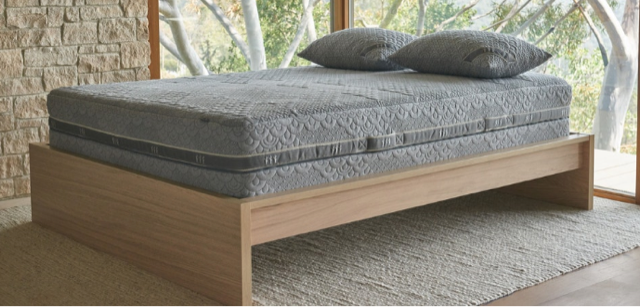
Question from Teresa
Hi Debra,
Do you know anything about BRENTWOOD HOME – CRYSTAL COVE MATTRESS OR CEDAR MATTRESS, THEY ALSO HAVE ONE THAT HAS SOME BAMBOO IN IT.
Debra’s Answer
First, it was difficult to find ALL the materials used in an organized way that was easy to find. There was no materials page, for example, as is found now on other sites.
Nowhere could I find the material used to make the covers. Looking at the photos, the covers appear to be a synthetic material.
They also refer to their mattresses as “hybrid,” which I am assuming means they are part natural and part synthetic.
And they are not GOTS certified organic, though it appears their cotton is.
I took a look at:
BRENTWOOD HOME – CRYSTAL COVE MATTRESS
This mattress is “completely vegan” but made with polyurethane memory foam.
BRENTWOOD HOME – CEDAR MATTRESS
This one is made from “all natural and organic materials.”
BRENTWOOD HOME – CYPRESS BAMBOO GEL MATTRESS
This one is basically a polyurethane foam mattress.
Again materials information was incomplete, so I couldn’t make a full assessment.
If you are looking for a vegan mattress, Naturepedic now makes one, 100% GOTS certified organic.
Test Your Polyurethane Foam for Toxics at Duke University
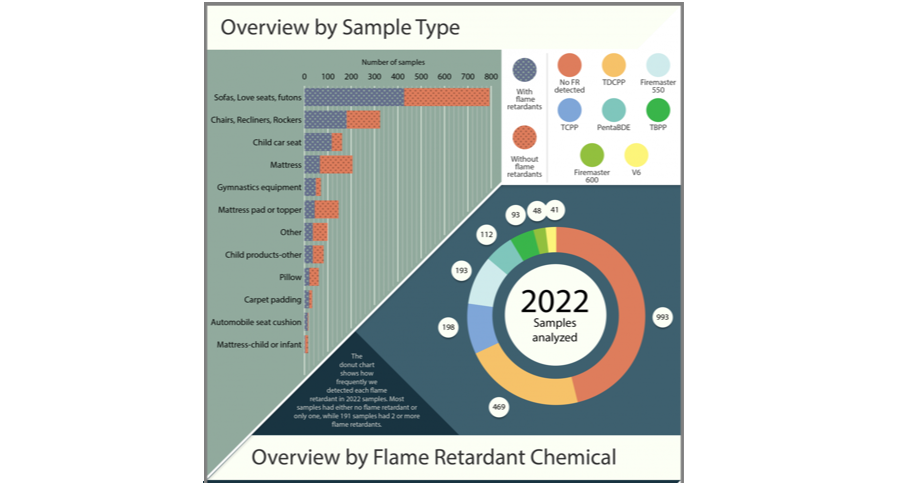
Note in this chart that most flame retardants found by this Duke University study using samples from homes were in child care seats (more than half), then sofas, love seats and futons, with chairs, recliners and rockers coming in at a close second, with about half containing fire retardants. This doesn’t mean the others are safe. There are other toxic chemicals in polyurethane foam. This study measures only fire retardants.
This reader had foam from a memory foam bed in her home through the Foam Project at Duke University.
Any US resident can submit a sample of polyurethane foam (PUF) from furniture, child car seats, or any other product containing PUF using the submission form on our website. After completing the form, samples can be mailed to us at Duke University, along with the unique ID number generated from the submission form. Individuals are notified by email upon receipt of their foam sample in the laboratory. Our laboratory will analyze the sample for the presence or absence of 7 common flame retardant chemicals. Approximately 6-8 weeks later, we will mail back a report detailing our findings, along with a fact sheet about the 7 common flame retardants. We can answer any additional questions you may have after receiving your results.
Hi Debra,
I received results from Duke university where they test peoples foam to see what flame retardants are in it.
My sleep number bed bought about 2010 has FM 550, Firemaster 550. Has brominated and organophosphates.
It said a recent study showed some of the components bioaccumulate and act as a thyroid hormone disrupter.
I have thyroiditis and nodules, and mild hypothyroidism.
I had slept on Coleman air mattresses with PVC vapors prior to sleep number.
I sent them 2 samples, a foam pad beneath the topper and the topper fabric with foam inside.
I have a mattress protector that is waterproof on it made with polyurethane and fabric. Could this block the flame retardant?
Debra’s Answer
I can’t give you a definitive answer about the polyurethane film blocking the fire retardant, but here’s what I can tell you.
The answer to the question is about porosity.
The polyurethane film used for waterproofing has a pore size of 0.03 micrometers to 10 micrometers (a micrometer is one millionth of a meter)
Micro-porous coatings and membranes rely on an interconnected network of tiny holes (pores) introduced by various means into an otherwise impermeable polymeric structure. Sheets of polymers can be produced with common salt incorporated which is washed out afterwards to leave voids/pores. Such holes (or pores) are too small to allow water droplets to pass through, but are large enough to allow water vapour to pass through. Micro-porous structures work, as do tightly woven structures, because of the large difference in size between individual water molecules present in water vapour and water droplets of rain, each of the latter consisting of many millions of water molecules held tightly together by surface tension forces. Micro-porous membranes typically weigh 10–20 g/m2and should be durable and resistant to laundering, chemicals and UV degradation.
SCIENCE DIRECT: Micro Porosity
So the question would be, what is the size of the vapor of the fire retardant? And that’s what I don’t know.
But I think this would be an interesting thing for someone to research.
If we could get a more exact number for the porosity of the polyurethane film and the sizes of various vapors, then we could calculate what types of chemical vapors could be blocked by polyurethane film.
Safety of Plastic Drinking Glasses

Question from Lyle
Hi Debra,
I have two new sets of plastic drinking glasses.
The first is hard plastic; the second is a cheaper and lighter plastic. All of the glasses have either cracked or have turned white from the hot water in my dishwasher.
Are there harmful chemicals in the plastic now that they have been changed from their original materials? Should I toss them and returned to glass? Thanks so much.
Debra’s Answer
It would be impossible for me to assess this.
So I would say return to glass.
Guava Family Lotus Crib/bassinet

Question from Akh
Hi Debra,
I was trying to search your site. Not sure if this has been asked but have you reviewed the Guava Family Lotus Crib/bassinet? It is the only portable one I have found that in greenguard certified but not sure if it is really non-toxic.
Debra’s Answer
I actually can’t assess this product because no materials are given that I could find.
The website makes many claims but no substantiation.
GREENGUARD certification does NOT mean “nontoxic.” It means that the product emissions fall below an established standard for a limited list of chemicals.
If you need this type of bassinet it may be the least toxic brand available, but without materials disclosure, I can’t assess it.
Toxic Hotel Room? Ask for Different One

My room at the Kimpton Marlowe Hotel in Cambridge MA, overlooking the Charles River
I just spent four nights at the Kimpton Marlowe Hotel in Cambridge MA. I always stay at Kimpton hotels when I can because they have “eco” policies. These don’t always translate into toxic-free actions, but I consistently find their hotel rooms to be less toxic.
So I was surprised when I walked into my room on Thursday night and the air quality was so bad I could hardly breathe. I put down my luggage and went downstairs to dinner. When I came back I decided the smell was intolerable and I would not be able to sleep in the room.
I went downstairs to the reception desk and told the woman there what was happening. She immediately got keys to another room and went upstairs with me to my room. She took one whiff and said, “There’s something wrong. The air is not supposed to smell like this.”
She took me to the new room (upgraded to a room with a view) and the air was perfect. And it was perfect for my entire stay.
I don’t know if they are filtering this air in addition to ventilation, but the air quality was just exceptional there for a hotel room.
The next evening when I came to my room after being out for the day, there was a beautiful plate of perfectly ripe berries and grapes and a bowl of mixed nuts waiting for me, with a note of apology for the inconvenience.
Now that’s service.
Have Air Filter—Will Travel
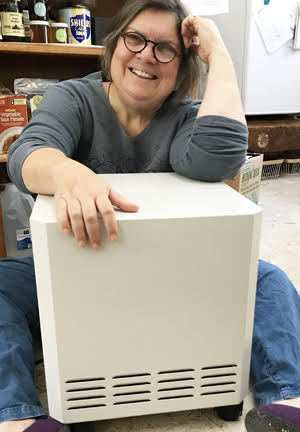 Wednesday I’m leaving on a road trip to Los Angeles, where I will be staying in a standard hotel room for five nights while I attend a retreat for the business course I’ve been taking this year.
Wednesday I’m leaving on a road trip to Los Angeles, where I will be staying in a standard hotel room for five nights while I attend a retreat for the business course I’ve been taking this year.
I’m bringing along my EnviroKlenz Mobile Unit Air Purifier to use in the hotel room.
Next week when I get back I’ll report on how well it worked to reduce all the toxic emissions typically found in hotel rooms.
Say tuned…
18 September 2018
The EnviroKlenz Mobile Unit worked great on our road trip to Los Angeles.
We stayed at the Crown Plaza hotel right next to LAX airport (not our choices, attending a conference) and we had no problems with air quality at all in our room, because we had our air purifier along.
The room itself was not the worst hotel room I’ve ever stayed in, but it did have all the standard toxic materials and fragrance piped into the hall ways. But we just plugged in the EnviroKlenz Mobile Unit, turned it on, and within minutes the air quality was completely comfortable for us.
And it was easy to take with us on a road trip. This is going to be standard equipment for us now for road trips. Now I just need to get EnviroKlenz to make one small enough to take on a plane.

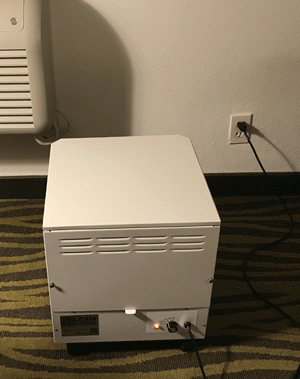
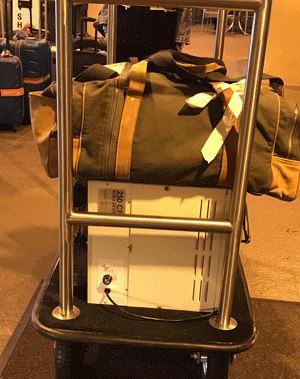
It fit well in the back of our Prius. It’s no wider than a car seat.
It didn’t take up much room in the hotel room.
It was easy to put on the luggage cart (we laid the unit on it’s side to prevent it from rolling off the cart).
What’s it Like to Live in an RV?

Inside the luxury Airstream trailers at AutoCamp, where you can spend the night in a travel trailer and see what it’s like.
Question from Bonnie
Hi Debra,
I have some health issues and have been stuck in Mi for 10 years. I have an older home and am going to sell. I am considering a RV full time for a couple years.
Just want to get out and live again.
Does anyone here live in one?
I know new ones are toxic but what about a 4 years old one? If it had a lot of real wood cabinets etc would it be doable? There are so many models that look nice and could be comfortable. Just a thought.
Debra’s Answer
This is something Larry and I are considering also and have been researching for the past year or so. You’re smart to ask lots of questions and find out as much as you can before making this decision.
I’m interested, too, in the experiences of people who have done this.
I can tell you some things we are doing.
1. Can you live in a space that small full time?
What we’ve been doing is working on reducing our stuff. This is a process. It’s not something you are going to do overnight. I think everyone has way more stuff than we actually use. We’ve released a lot of things we weren’t using and we still have more.
2. What is essential to have for your way of life?
For the past year Larry and I have been living in two small rooms: a bedroom and an office. But we also have access to a whole house with a kitchen and bathroom and garage and garden and everything else. Coming from a 1600 square foot home this is a big difference. For me, I need space to work. I prepare my own food, so I need a kitchen.
3. Do you really want to travel around to a different location on a regular basis?
I love to travel. I would love to travel and bring my home with me so I have everything I need and know I have a toxic-free environment at the end of the day. But Larry and I have also taken a fair number of road trips in our 30 years together and when you are moving from place to place frequently you are in a strange place over and over. You have to find everything and get oriented over and over again.
Some of you may remember the year Larry and I drove across the country in his Mercedes powered by vegetable oil. That was a fun adventure, but every day we had to arrive in a new city and find some vegetable oil. It was fun at first, but then got tiresome.
I think if we were to do this, we would pick and place and stay for a while and then pick another place. But I’m not sure I want to be a nomad. I like having a home base. I like belonging to a community. I like building relationships.
I would strongly recommend to anyone considering this to take a road trip in a car or van and see what it’s like. Some people clearly thrive on this, and other’s don’t.
4. Can you get an RV that is nontoxic or retrofit a used one to meet your needs?
It can be done. I know Larry and I can do it because we’ve been remodeling houses nontoxic for 30 years. But can YOU do it? Do you have the knowledge and resources and skills?
We just recently found AutoCamp , which is a small chain of “hotels” made up of Airstream trailers. They have them in Guernville, California, on the Russian River, Santa Barbara, and Yosemite. You basically get to have the Airstream trailer experience overnight.
Larry and I live 20 minutes from Guerville so we drove over there last week and looked around. It was beautiful. Like walking into a luxury California-wine-country version of summer camp. We couldn’t go inside a trailer because all of them were booked for the night. We’re going to LA this week and tried to stay at AutoCamp in Santa Barbara, but they were completely booked for the night we would be passing through. We’re going to LA this week and tried to stay at AutoCamp in Santa Barbara, but they were completely booked for the night we would be passing through. Read about how we peeked inside an Airstream trailer at AutoCamp Santa Barbara on our way home from LA.
Here some articles about the realities of life on the road from different viewpoints:
LOS ANGELES TIMES: The beautiful Airstream myth and painful RV reality of life on the road
A SMALL LIFE: Things I Wish I Knew Before Living Full-Time in an Airstream
AND THEN WE SAVED: Living Tiny: Seth And Drea’s Airstream – Home Tour
There are lots more. I searched for “airstream living” to find these, since we’re specifically considering an Airstream only (for aesthetic reasons but also because they are exceptionally well-built and originally the least toxic).
Toxic-Free Tomorrow Happens From What You Do Today

Larry and I love to watch movies together. Our cable TV service comes with more than a thousand free movie, so we’ve been exploring them.
Over the weekend we watched a Disney movie from 2015 called Tomorrowland. In the film there is a land of tomorrow that exists in kind of a parallel universe to today, and the whole story is about the characters trying to get back there.
There is a cool magic button that takes you to Tomorowland temporarily when you touch it.
But the great thing about this film for me was a machine that was monitoring the future, so when characters would say something, the machine would instantly show a different future.
And that just reminded me how making small changes can lead to big effects and change the future.
Making a choice to be nontoxic forty years ago started with a decision and then making a choice to buy the one nontoxic product I could find—Bon Ami Polishing Cleanser—led not only to regaining my own health but helping countless others do the same.
When we look around it can seem like the world is pretty toxic sometimes, but from my viewpoint spanning forty years we have come a long way. Still much more to go, but I see progress.
The more we choose toxic-free products, the more we tell others about them the more momentum we create as well as more demand.
And soon it will be tomorrow and the world will be toxic-free.
Here’s a great article to read on how even slight changes in what we think and do can result in different outcomes: How a Little Choice Can Impact Your Entire Future and Change Your Life.
Proposition 65 Warning on Readers Eyeglasses
I’ve been wearing reading glasses for years. I have prescription glasses too for driving, but readers work fine for reading and they are inexpensive. I like to have a pair in my purse, a pair at my desk, and a pair next to the bed, and that adds up when you are buying prescription glasses.
Over the years I have purchased a lot of reading glasses and have done some research on the plastics used for frames.
However, I have never seen a warning label on eyeglasses of any kind until Labor Day weekend when I tried to order a pair of glasses online from readers.com. I got all the way to checkout and was just about to click on the “buy” button when the warning above came up.
What???? I had just purchased a different pair of glasses from readers.com a few days before and there was no warning. but now here it was.
I just called Readers.com and they told me they are required by law to post this warning in the State of California. Not all of their readers contain nickel or BPA, but some do so they put the warning on all. She also could not tell me what specific plastics were used in the plastic frames.
So my problem with this is
1. This is not a useful warning label because these substances known to the State of California to cause cancer may or may not actual be in the product to which the warning label is attached, and
2. We can’t find out by asking the retailer what the materials are for any specific pair of glasses, so we can’t determine if the warning labels apply to this particular pair or not.
The representative from Readers.com also said that if I went to another website and there was no warning label, that doesn’t mean the glasses do not contain nickel or BPA, it just means they didn’t put the warning label as they are required to do by law.
This warning label applied this way just isn’t helpful and isn’t a warning label at all.
I’m already in the process of doing more research about this. We should be able to buy a pair of glasses and know what material is in contact with our skin for hours on end every day. It may be perfectly fine, but the point is, we should be able to know.
New Toxic Mattress Report From MADESAFE
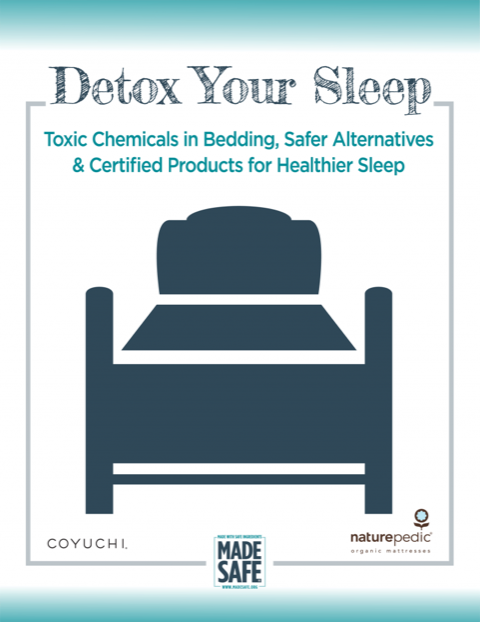 The nontoxic certification organization MADESAFE issued a new report last week called Detox Your Sleep: Toxic Chemicals in Bedding, Safer Alternative & Certified Products for Healthier Sleep . It was sponsored in part by Naturepedic, manufacturer of mattresses and Coyuchi, manufacturer of bedding.
The nontoxic certification organization MADESAFE issued a new report last week called Detox Your Sleep: Toxic Chemicals in Bedding, Safer Alternative & Certified Products for Healthier Sleep . It was sponsored in part by Naturepedic, manufacturer of mattresses and Coyuchi, manufacturer of bedding.
I want to tell you what’s good about this report and what—in my opinion—it’s missing.
The strength of this report is it’s research into the toxic materials. It contains about 20 pages about toxic materials used to make mattresses, with more than 200 scientific references. It’s a great reference for why we need to sleep on something other than the standard mattress.
But then, only three pages were devoted to the safer mattress materials.
And then three pages on chemicals in bedlinen. Formaldehyde on bedsheets, our most intimate contact with toxic chemicals was mentioned in passing without mentioning any health effects (formaldehyde causes cancer, among other problems).
From my viewpoint, this report really doesn’t tell us how to choose mattresses or bedding, only what the problem chemicals are and the MADESAFE certified brands. Even when you click through to the MADESAFE website, there is no standard for mattresses (beyond their usual does not contain their list of toxic chemicals), nor any description of the choices.
My biggest concern here is that the certified mattresses listed—Naturepedic, Happsy, and Avocado (in progress—are all presented as if they are the same, yet they are VERY different mattresses. Naturepedic and Happsy are both GOTS certified organic mattresses and Avocado is not. See my comparison of Naturepedic and Avocado here.
This gives a false impression that Avocado (and other mattresses that will be certified in the future) are as “made safe” as Naturepedic and Happsy when then are not. I know that often consumers look at a certification and think that all certified products are created equal. This is at least one example where they are not.
Still this report is worth reading if you are interested in the toxic chemicals used to make standard mattresses.
What I Learned About My Health When I Spent the Day in the Emergency Room

At about 3 an on 23 August 2018, while lying in bed peacefully, suddenly—with no warning—the room started spinning violently. Within seconds my body was nauseous and sweating.
Finally the attack subsided and I fell asleep for a few hours. But as soon as I awoke the spinning started up again. We didn’t know what was happening or what to do, so Larry put me in the car and rushed me to the Emergency Room.
It was the first time in my life I had ever been to an Emergency Room for medical care. I had taken other people, but I had never been the patient.
As much as I have a natural orientation to healthcare, I have to say, that day I was very grateful for emergency care.
The Emergency Room really is designed for emergencies. And that day I was having an emergency. My head was spinning, I couldn’t eat anything without vomiting it back up, I couldn’t drink anything and I didn’t know what the problem was. Making an appointment with my doctor and waiting in the office waiting room wasn’t enough that day. I needed help NOW.
We walked in with me crying and saying over and over. “I need to lie down, I need to lie down.” And they put me in a bed right away. Within minutes they were drawing blood and had hooked up an IV.
The first thing they determined was my body was extremely dehydrated . And it was. Over the course of the day they gave me five bags of saline. No time to consider what might be in that saline or the plastic bag or anything. My body needed fluids.
They did blood tests for diabetic complications (that wasn’t it).
They did a CAT scan to see if I had a brain tumor. Fortunately I didn’t. But I do want to mention something here. After I wrote in last week’s newsletter that I had dizziness. a reader wrote the following to me:
I want to tell you i have been into alternative health and organic foods for over 40 years, i am 68 years (young live on a farm) and a few months ago i started throwing up and then i passed out. my kids took me to the hospital and they said i had a brain tumor = not cancer and that it probably was there for 20 years and just got too big and hit my brain.
The tumor was on the back of my right ear and down below -exactly where the cell phones and cordless phones sit. I had a cell phone since they were invented and always used a cordless phone. In Europe they know cell phones are bad, but like the tobacco people lied for years the cell phone people lie and say they cause no problems since the tumor was exactly where the phones sit, i have no doubt what caused it. I had much much prayer and got a miracle but i would warn your readers about the dangers of these phones. thanks marianne
Finally, after eliminating the emergency possibilities they determined that I had simple vertigo, gave me a shot of a steroid and sent me home.
I’m going to tell you more about vertigo in another post, but here’s what I want to tell you about my health.
My body was tested all day long. They gave me two rounds of blood tests and a CAT scan, and hooked me up to an electrocardiogram, and when all was said and done, they basically had determined I AM HEALTHY except for this transient episode of vertigo.
This was actually a surprise to me because I often have attention on what is wrong with my body instead of what is right.
And then I had a big realization.
I now have been living toxic-free for 40 years. And even though my body is not perfect, I realized that at age 63 I AM HEALTHY in the sense that:
- I am alive (my mother died when she was 51 from cancer and my younger brother at 58 from prescription drugs)
- All my body systems are go: I can breathe, my heart is beating, my intestines digest food, my liver detoxes, etc
- All my senses are functioning, so I can taste, smell, see, hear, feel.
- I have energy to get up in the morning and work about 12 hours a day and then go out in the evening with Larry
- I can sleep at night. I can wake up in the morning.
- If something goes wrong, my body has resilience to set things right.
And I am getting HEALTHIER EVERY DAY instead of older and more decrepit. I don’t look 63. People think I’m about 45.
This is the result of 40 years of living toxic-free. I’m younger and stronger and healthier than people my age around me who are complaining about their illnesses and dying of cancer.
A few days later I had another realization.
There actually is a higher level of health available than can be achieved by living in a toxic home and getting standard drug-based medical care. Or even using alternative medicine and prevention. It’s above and beyond anything that can happen as long as one lives in the toxic world.
I made a little chart and it looked like this:

I realized that a toxic-free lifestyle—over time—results in a condition of health that is regenerative and transcendent to the level of physical, mental, and spiritual health we experience in our modern industrial society. It’s so different that I’m calling it “transcendent health.”
Instead of feeling like toxic-free living is moving away from toxics, I’m feeling more like I am moving toward health on a level I’ve never experienced before. And I believe this is what is ahead for everyone who continues to live this way. At first it’s about reliving immediate symptoms, but there are much more benefits down the road.
This is not something I ever expected I would experience.
I’m actually healthier at age 63 than I have ever been in my life and healthier than other people I see around me. And anyone can have this.
Wow.
The Dangers of Dehydration and Why It’s Important to Drink Enough Pure Water
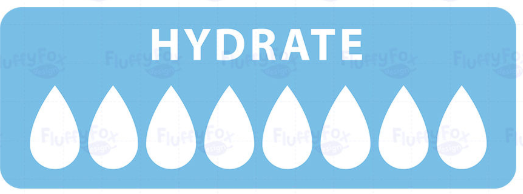
Last week I ended up in the Emergency Room with my head spinning, nausea, and sweating. By the end of the day the doctors determined the problem was vertigo, but the first thing they observed was that my body was very dehydrated. Over the course of they day they gave me five bags of saline.
This really surprised me because I thought my body was hydrated. I literally drink water all day long. I have a glass bottle of pure water sitting on my desk all the time and I am sipping it whenever I am at my desk. But here I was, in the emergency room, dehydrated.
BASIC HYDRATION
While trying to find out how many ounces of saline (water and salt) is in an IV bag, I came across this article that begins “a lot of question about hydration can be found through the IV protocol that is followed by hospitals.” Indeed, if you are admitted to an emergency room or hospital for just about any reason, the FIRST “treatment” you are given is an IV. That’s how important hydration is.
I’m just going to quote the article here (I’ve added my own bold and underline for your convenience):
The purpose of an I.V. is to supply extra water to a dehydrated patient and/or to assure that the daily water and salt needs or “maintenance needs” are met for patients unable to take them by mouth. Naturally, there are circumstances through which the patient would not be physically able to drink water but; for the sake of staff convenience AND to enhance the billable goods, the I.V. protocol is followed for almost everybody. I’m quite sure that the fact that most Americans are chronically dehydrated makes an automatic I.V. make a whole lot of sense.
Although the amount of I.V. fluids infused depends largely on size and the needs of the patient, it is typically between 1.5 and 3 liters (50-100 ounces) a day for the average adult.That’s 6.24 – 12.5 cups of water per day! Rest assured, the medical professionals KNOW that we need 50-100 ounces of water just to hydrate in a
sedentary state.
Funny how physicians fail to emphasize the need for lots of water OUTSIDE of the walls of the hospital. When was the last time you drank 50-100 ounces of water? If you need 50-100 ounces of water just to sustain hydration in a SEDENTARY state, imagine how much more water the body needs when it’s actually moving around while you’re living life!
Many patients “lose” their symptoms when they’re (finally) hydrated using I.V. fluids! Hmm…
Health authorities usually recommend eight 8-ounce glasses of water a day, which is 64 ounces or a half gallon. Barely enough to stay hydrated for a sedentary lifestyle. My doctor told me divide my weight by 2 and drink that number of ounces (for me that’s more than a half gallon but still only enough for sedentary hydration).
So drink more water! And be sure to drink [clean purified water]=lnk-to-pureeffect-on-dberaslist so you are adding hydration to your body without adding toxic chemicals.
My doctor told me a little trick. She said that your urine should be the color of “lemon water”—very light yellow. The darker the yellow of your urine, the more dehydrated you are. So just keep an eye on this and drink water accordingly.
In rare cases, too much water can be harmful. Hyponatremia occurs when your body takes in too much water, diluting vital salt levels in the blood. But you would have to greatly exceed the amount of replacement water your body needs for this to occur.
I find it helps to MEASURE out the water so you know how much you drank.
This is a basic, basic, basic necessity for health. I can’t emphasize it enough!
IS YOUR BODY DEHYDRATED?
This is a slightly edited version of a post I wrote for my Toxic Free Body blog, which is no longer live. The entire blog is available as an ebook at Toxic Free Body.
When I used to live in Florida, the daily temperature was about 88 during the day and the low 82 at night…plus it was humid…so itit was pretty much hot hot hot and sweaty day and night.
And when you go indoors, the air conditioner was dehumidifying the air, pulling even more water out of your body.
Clearly, if you aren’t drinking enough water to replenish, your body is getting dehydrated.
Bodies have a high percentage of water as an essential element of life. Where our bodies can survive two to three weeks withou food, they survive only two to three days without water.
Detoxification is occuring 24/7 in our bodies and we need to assist that process by supplying our body with adequate water to do the job. There is an old adage in natural health care: “The solution to pollution is dilution!”
When the body is dehyrdrated it tends to hold on to toxic chemicals rather than releasing them and toxics become imbedded more easily. Out in nature we can see that a flowing river is better that a stagnant pond if you want a boat to move from one point to another, Drinking adequate amount of fresh water helps the river of your bloodstream to keep moving.
Your intestinal system needs a tremndous amount of water to digest food and keep the process of elimination moving. Water helps our elimination systems work and can reduce constipation to keep the bowels moving properly. While you are constipated, wastes filled with toxic chemicals are sitting in your intestines. Toxic chemicals in those wastes are reabsorbed into your body through intestinal walls. instead of being eliminated from your body as they should. Lack of water only makes constipation worse.
 Beyond this, almost any symptom you can name can be associated with dehydration! Headaches, muscle ache or pain, muscle cramps, blood pressure problems, fatigue, anxiety, and the list goes on and on! There is a great book called Your Body’s Many Cries for Water: You are Not Sick, You are Thirsty! that thoroughly discusses the importance of hydration for health and the symptoms that can result from dehydration.
Beyond this, almost any symptom you can name can be associated with dehydration! Headaches, muscle ache or pain, muscle cramps, blood pressure problems, fatigue, anxiety, and the list goes on and on! There is a great book called Your Body’s Many Cries for Water: You are Not Sick, You are Thirsty! that thoroughly discusses the importance of hydration for health and the symptoms that can result from dehydration.
Excuse me for a moment, I’m going to go drink a glass of water!
Ahhhhhhh! That’s better!
During the summer months in particular, it’s important to drink plenty of water.
Here are some tips to help your body absorb and utilize the water you drink.
1. Don’t wait until you are thirsty to drink water. By the time you feel thirsty, your body has lost more than 1 percent of it’s water. It’s better to drink water regularly throughout the day to replenish vital stores. Carry bottles of water with you. Glass bottles, please! No plastics. Keep a bottle of water sitting on your desk.
2. Maintain adequate electrolytes. Adequate salt and potassiium are critical to proper hydration and many can benefit especially in hot weather. A low salt diet may be necessary for some health conditions but the proper balance of minerals is necessary for proper health. I have seen many people who have turned their health around with proper mineral intake. If you are drinking a lot of water, you need to supplement sodium and potassium.
3. Eat lots of fresh, raw, green vegetables and fresh fruits. Salad is the perfect food for summer! Leafy greens contain lots of water and have all the necessary nutrients needed to assimilate that water. Fresh juicy fruits are another good source of both water and nutrients.
MORE RESOURCES
MYERS DETOX: Dehydration Causes Pain and Disease
TOXIC FREE TALK RADIO: Are You Drinking Enough Water For The Sweaty Days Of Summer?

Is Your Head Spinning? How A Simple, Natural Adjustment Handled my Vertigo in Half an Hour

Vertigo is like the Tilt-A-Whrl ride at the amusement park. Your environment is spinning around and around and up and down at the same time. But you can’t choose to get on the ride or get off. It’s totally out of control.
Last week I ended up in the Emergency Room after I woke up at 3 am with the room spinning violently. nausea, and sweating. By morning I still couldn’t walk or drink or eat without vomiting, so Larry took me to the Emergency Room.
After a day of tests the doctors said I was suffering from vertigo. And because I knew nothing about vertigo, I want to share with you what I’ve learned.
First, there are apparently different types of “dizzy.” When I said, “I’m dizzy,” the doctor asked. “Are you lightheaded or is the room spinning?” Ah, that was very clear. I had experienced lightheadedness in the past, which is a feeling you are about to faint when you stand up too quickly or take too many deep breaths. This was different. I was experiencing “room spinning.” If you’ve never experienced this, you will recognize it if you ever do, now that you know it’s a condition.
Vertigo is a feeling of motion when there is no motion. It’s like that amusement park ride called Tilt-A-Whirl where the platform goes around but it also tilts. It’s violent. You can’t stand up. It’s very much like being in a little boat in stormy seas. Everything is moving and you can’t control it. You just hold on.
CAUSES OF VERTIGO
Vertigo can be the result of a number of causes. It’s not a disease, it’s the result of a condition.
When I came to the Emergency Room the first thing they did was hook me up to an IV to start hydrating my body. Because “very common cause of vertigo” is dehydration. And, in fact, my body was dehydrated. Over the course of the day they gave me five bags of saline. [Just as an aside, when I woke up with the room spinning I grabbed Larry, who was lying next to me, screamed “the room is spinning” and then immediately asked repeatedly for water until he brought it to me.]
But it can also be caused by alcohol, epilepsy, heat stroke, hypothermia, insulin, shortness of breath kidney failure, trauma, infection, stroke or poisoning.
Clearly the doctors could see I had vertigo, but they didn’t know the cause. It could be anything from dehydration to kidney failure.
By the end of the day they had given me emergency medications to stop the dizziness, which I was grateful to have, but that’s all. They gave me a prescription for a drug to stop the dizziness, but didn’t tell me anything about how to prevent dizziness in the first place. So I had to do my own research.
By this time I had been told that a common cause of vertigo is a disturbance in the vestibular system of the inner ear. Herein lies the body’s balance system that tells you which way is down and senses the position of your head. It is filled with little crystals. During the course of life, the little crystals can move out of their location and then no longer function to balance. This can be caused by many factors.
So I suspected that dehydration may have triggered the attack, but it seemed like there were other factors.
VERTIGO AND TOXIC CHEMICALS
First I wanted to know if vertigo could be the result of by toxic chemical exposure (of course). So I looked that up. And actually there are associations between vertigo and industrial chemicals. There is even a word—ototoxic—that refer to chemicals that affect functions that belong to the ear, including hearing and vertigo. An audiologist recommends people should protect themselves from hydrocarbon, asphyxiant and heavy metal exposure.
- Hydrocarbons are basically any substances made from petroleum, particularly those that are volatile, such as paint fumes, synthetic fragrance, cleaning products, and the like
- asphyxiants are a gas or vapor that can cause unconsciousness or death by suffocation due to lack of oxygen. Carbon monoxide, methane and propane are all iasphyxiants.
- Heavy metals include lead, arsenic, mercury, chromium, and others.
So if you are creating a toxic-free home, you are also helping to prevent vertigo, or improve your vertigo if you have it.
MY TYPE OF VERTIGO AND WHAT I’M DOING TO END IT
After the doctors ruled out that my vertigo was not from a brain tumor, kidney failure or many of the other possible causes, I began to observe what made the spinning start and stop.
Once my body became more hydrated, the spinning lessened enough that I could observe the spinning stopped when I was laying down and started again when I sat up or stood up. It would also start when I would turn my head from side to side while lying down. And so I began to see that my vertigo was related to position, so it made sense that the problem was those little particles in my inner ear being out of place.
There seem to be standard chiropractic adjustments that can be done, but one of my readers sent me an article and video about a simple procedure I can do at home. It was developed by a ear, nose and throat doctor. She said none of her patients she has given it to ever came back for further treatment.
I have been doing this once a day almost daily for almost a week and every day I have less vertigo. As I write this, I have no attention on vertigo as I go about my day. Last night it was only slight as I got out of bed. I’m going to continue to do this procedure every night until I no longer have any vertigo.
CBS DENVER: Colorado Doctor Finds Way To Treat Common Vertigo
This video also has a really good explanation of what is going on with the particles in the inner ear that are causing vertigo.
I’ve concluded that there are natural ways to control vertigo and possibly even eliminate it altogether. Now I don’t have to be concerned about it and can get on with life.
To Live Toxic-Free is a Basic Need of Life

Each of us has our own unique reasons for wanting to choose toxic-free products. But I just discovered that in addition to our individual motivations, collectively as human beings we actually have a deep need to protect ourselves from the harm inherent in toxic chemical exposure.
There is something you may already be familiar with called Maslow’s Hierarchy of Needs . It was first proposed in 1943 by Abraham Maslow, a psychology professor at Alliant International University, Brandeis University, Brooklyn College, New School for Social Research, and Columbia University. His work stressed the importance of focusing on the positive qualities in people, as opposed to treating them as a “bag of symptoms,” His Hierarchy of Needs theorizes that human beings are motivated by an urge to fulfill basic human needs beginning with such basic needs as food and water and culminating with being fully themselves. Above is a diagram of his original hierarchy, but later in life Maslow expanded the model to include other needs as well.
I’ve known about Maslow’s Hierarchy of Needs for many years, but looking at them again recently I noticed that we all have a need to be SAFE, and that is so basic that it comes right after our need for food, water, warmth and sleep. Included in that need are health and well-being, and to be safe against accidents and illnesses and their adverse impacts.
We’re actually “wired” to resist that which might harm us.
When we choose toxic-free products we are fulfilling oura basic human need to be safe.
More and more it is becoming clear to me in my own life the importance of having these “bottom of the hierarchy” needs securely in place. These are the necessities of life. Without them the nourishment of food and the hydration of water we can do nothing. Filling these foundation need of biological necessities and safety, we then have a firm foundation for life on which we can build to live the life of our dreams.
Air Pollution Causes a Huge Reduction in Intelligence

According to a new study, “air pollution causes a “huge” reduction in intelligence, indicating that the damage to society of toxic air is far deeper than the well-known impacts on physical health.”
The study found that, ” high pollution levels led to significant drops in test scores in language and arithmetic, with the average impact equivalent to having lost a year of the person’s education.”
“They found the longer people were exposed to dirty air, the bigger the damage to intelligence, with language ability more harmed than mathematical ability and men more harmed than women.”
This study was done regarding pollution in outdoor air, but indoor air pollutants are similar and would have similar effects.
This makes sense to me because many chemicals are known to affect the central nervous system and in doing so affects brain function.
Again, another reason to remove sources of indoor air pollution from your home and have an air filter on hand and available when needed.
THE GUARDIAN: Air Pollution Causes “Huge” Reduction in Intelligence, Study Reveals.

Sun Organic Farm
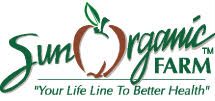 This is your basic bulk organic foods–grains, beans, dried fruits, coffee, nuts. All ingredients, not packaged food products. But what a selection! You’ll find things here you won’t find at your natural food store. Many varieties of beans and dried fruits, and “a grand selection of high quality certified organic herbs, spices and seasonings”–99% of everything on this site is certified organically grown.
This is your basic bulk organic foods–grains, beans, dried fruits, coffee, nuts. All ingredients, not packaged food products. But what a selection! You’ll find things here you won’t find at your natural food store. Many varieties of beans and dried fruits, and “a grand selection of high quality certified organic herbs, spices and seasonings”–99% of everything on this site is certified organically grown.
How Toxic-Free Do I Need to Be?

This post has been coming on for weeks. But you know, sometimes you have to watch things unfold and then you have the big realization. I finally had the big realization over the weekend, so finally I can post this post.
It started with an interesting conversation during a consultation.
A woman wanted me to look at several products she was considering purchasing, give her my opinion about how toxic they are, and if they did have some toxic exposure, could she still use them since she had an EnviroKlenz Mobile Unit air purifier.
I just want to share my reply with all of you.
First, I actually think everyone should own an air filter. I used to not think this, however, since going through the big fire last fall and also living in an area where smells of all kinds come wafting by even though the air is generally very clean, I do think that it’s wise to have an air filter on hand in case it is needed. [Weeks after I wrote this, I finally purchased my own EnviroKlenz Mobile Unit after the wind shifted one day and we got a lot of smoke from this year’s fires.]
The general recommendation for good indoor air quality is to start by reducing pollutants at the source. Which means, remove any products you can that are contributing to indoor air pollution with products that are not polluting. Even if you have an air filter, it’s best to reduce the amount of pollution it needs to filter, as your media cartridges will last longer.
Another caveat I just want to mention is that filtered air is not the same as natural air. It’s better to breathe filtered air, but the best air is clean natural air. There are just other factors to natural air that are not present in the filtered air. So if you are in a situation where you need to be breathing filtered air, get out in nature whenever you can. Even I, living where I do in an area where there is very clean air, I still drive out to the ocean that has very very clean air full of negative ions and other beneficial factors. I call this “live” air.
So then there is the fact that when you are filtering air or reducing indoor air pollutants at the source, you are only doing this at home. Once you step out your door, you are out in the toxic world, breathing toxic air. Toxic in varying degrees depending on where you live and if you are driving in traffic or walking on a store, etc. But almost anywhere is likely to be more toxic than your home.
I explained to my client that there are several levels of how to consider toxic exposure.
- At the most immediate level you would look at a product and evaluate the materials it is made from to see to what degree they may be toxic. A product might be completely toxic-free, or have one toxic ingredient or several, or the toxicity may be low or high.
- Then there is the amount of toxic exposure you get overall in life. You have your home, which might be zero toxic like mine or some percentage toxic, and then there is “beyond home” which is certainly more toxic. And you might spend different percentages of time there. I would say that for me, I spend more than 50 percent of my time in my home and even when I go out I’m in a clean air place and there are few toxic exposures in the natural food store and the farmer’s market and other small shops and restaurants I usually go to. But for other people, it might look like 50% at home during non-work hours, then sitting in traffic, then working in a toxic office building. After I created a nontoxic home many years ago my next steps were to move out of the city into a forest and create a home-based business so I wouldn’t have to community or work in an office building.
- And then you need to consider your own level of need. If you have MCS, you really need your home to be as toxic-free is you can possibly make it. If you want to reduce your toxic exposure for other reasons, you have a little more leeway.
You don’t have to reduce your toxic exposure 100%. It’s impossible anyway. Our bodies have detoxification systems that can handle a certain amount of exposure. The problem is they get overloaded. And as we reduce our exposure, our bodies continue to detox and health gets better because the amount of exposure we have begins to be more in line with what our bodies can handle.
So this really is individual for everyone.
The big question my client wanted to know was could she buy furniture she liked that had some toxic elements to it because she was running her air filter.
I told her in my home I wouldn’t do that but it’s a process. You don’t create a toxic-free home overnight. An air filter can be a great tool while you are transitioning because it WILL remove a lot of the pollutants being created by your carpet and your bed and your particleboard kitchen cabinets and all those other things until you learn what’s toxic in your home and can replace them.
But I also understand her desire to have things that are the style that she’s accustomed to. It was an adjustment for me to stop wearing the fashionable clothes I was accustomed to. My red lipstick was one of the last items to go because 40 years ago they didn’t have all the pretty colors of natural lipstick we have now.
In the end we decided that having a few items in her house that were somewhat toxic (but not the worst offenders) would be OK with her air filter running, We just looked at the fact that she is being exposed to toxics outside of her home and put those products on the side of the ledger with the “beyond house” toxic exposures.
It all comes down to what you need to do or what you are willing to do, and what you can afford to do.
My commitment is to reduce toxic exposures as much as I can and I will be as creative as I need to be, spend whatever money I need to spend, do whatever research I need to do and go to any lengths to minimize my exposures to the max. But I also choose to go out in the world and fly in airplanes and sleep in hotels and eat in restaurants. And then I come home to my toxic free environment. It’s a balance.
In a way, my client choosing her sofa for comfort even though it may still contain some toxic components is much like me going out into the world. It’s an “informed exposure”—a risk we are willing to take, like crossing the street.
It all comes down to balance. Toxics in, toxics out. Our bodies will process a certain amount. Don’t overload. If you’re exposed, then spend time away from toxics so your body can detox.
An air filter can help achieve that balance.
* * *
In the weeks that followed I had other similar questions.
But there’s a variation on this theme, and that is the so-called “nontoxic” certifications that certify that the product has passed certain tests and therefore are safe. You’ve seen them: GREENGUARD, MADESAFE, Oeko-Tex 100, Floorscore, the CARB standards for formaldehyde…and the like.
The problem with these certifications is
- they are only testing a limited number of chemicals and
- they are testing these chemicals down to a level
But that doesn’t mean that they are testing all the pertinent chemicals for that particular product and it doesn’t mean that they are testing down to the level that is acceptable to your particular body.
From my viewpoint, there is a false sense of security. Consumers look at these seals and think the product is “not toxic.” But not toxic by what standard? And what else might be in the product in addition to what is tested, which is not tested?
Just this morning someone sent me info on the “healthiest” carpet pad made of GREENGUARD-certified memory foam. No, I would not recommend that.
But these certifiers seriously think that these products are OK because they are “lower emissions” than other similar products.
Better. But better enough?
* * *
 Then this week another woman was asking me about remodeling her kitchen and replacing kitchen cabinets. And then someone commented on her question and said he was living with toxic kichen cabinets too because he couldn’t afford to replace them. I’m thinking about all this and then…
Then this week another woman was asking me about remodeling her kitchen and replacing kitchen cabinets. And then someone commented on her question and said he was living with toxic kichen cabinets too because he couldn’t afford to replace them. I’m thinking about all this and then…
Over the weekend Larry and I were driving to a different farmer’s market than we usually go to because I wanted to buy some organic olive oil directly from the farmer. For all the fake olive oil on the market, I am fortunate to be surrounded by producers of olive oil. I can go walk in the groves if I want to, I actually drive by some of these groves on a regular basis, so I know where the olives and the oil come from.
So we were driving and I suddenly remembered that when I first learned that toxic chemicals in my home were making me sick, my first instinct was to remove all the toxic chemicals from my room. I was living with my father at the time, so I only had control over my bedroom. But I took all my polyester clothes out of the closet, removed all my books, removed my furnture, my bed and my mattress and all my bedding. I pulled up the carpet. All that was left was four walls and a cement floor with dried paint spatters all over it.
I was not concerned with how it looked. I was concerned with getting my body away from toxic chemicals. It was only later that I learned that in every case of poisoning the first step is to get the person away from the poison or get the poison away from the person.
It takes exposure to a poison for it to cause a poisoning. I know that sounds obvious, but it is forgotten every day. And “toxic” is just another name for poison.
So when I speak to you, my viewpoint is wanting not to reduce your exposure to toxic household products. I want to eliminate your exposure to toxics in your home. Just as I did in my own home. Just as I continue to do every day.
The goal is zero toxics.
That doesn’t mean I actually achieve this goal every moment of every day. But any time I can eliminate a toxic exposure—by any means—I will. That includes leaving a place if necessary, removing things if necessary, ending relationships if necessary…
And that’s really how I feel about how toxic-free I need to be. How toxic-free you need to be is up to you.
* * *
I want to make one more point.
We talk about “toxics” but in actuality toxic chemicals are poisons.
There are two types of poisons: acute and chronic.
Acute poisons cause immediate symptoms and are the reason for poison control centers.
Chrinic poisons create health effects over time, after being exposed day-in-and-day-out.
Let’s take formaldehyde, for example. Formaldehyde has been in use for a long time.
Here is an early warning label for formaldehyde what would have appeared on a bottle of formaldehyde:
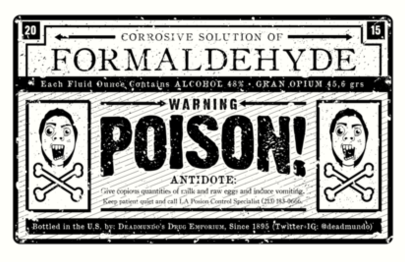
Here are some current warning labels for formaldehyde: used in a workplace setting:

Here is the warning label for formaldehyde for a consumer product such as particleboard kitchen cabinets or permanent press bedsheets, both of which are continuously emitting formaldehyde into the air in your home.

I didn’t forget to put the warning label there. There isn’t one.
The same formaldehyde that is an acute poison is also in consumer products at levels that act as chronic poisons when you are exposed to them day after day.
This is what we are dealing with.
Years ago when I was very sick from toxic chemical exposure and struggling to get well, I kept eliminating exposures and eliminating exposures and still wasn’t getting well. But I wouldn’t give up my perfect shade of red lipstick. And finally I decided OK I have to do this. And that was it. It was the last exposure I needed to breakthrough and stop overwhelming my body. I’ve seen this over and over where there is one thing someone won’t give up and when they remove that exposure their health turns around.
The moral of this story is: eliminate as many toxic chemicals as you can.
My order of priority is: first, toxic-free, then functional, then beautiful.
I always choose the least-toxic option available. When I’m at home, I pretty much eat organic, for example. When I’m traveling I’ll seek out organic but it may not always be available. So then I’ll eat food with pesticides, knowing they will leave my body within a few days. But I never eat junk food. I just don’t eat if all there is available is fast food. That’s just one example of my level of choice.
Again, we each need to make our own choices about the degree of toxic exposure that is necessary to have good health or prevent toxic harm in our own bodies. Lots more information that will help you make these decision will be coming soon when I launch my new website Zero Toxics at the end of September.
My Temporary Toxic-Free Corner Kitchenette

A few days ago a reader comments on last week’s post Thermafoil Kitchen Cabinets and Offgassing saying:
I feel duly chastised. We too, moved into our home and didn’t check the cabinets.
We removed old carpet throughout entire home which cost a fortune to redo with tile. We completely re-did (3) toxic bathrooms, and removed tons of toxic cabinetry from the garage which was being used as a workshop. We simply ran out of money.
After we moved in, I discovered the previous owner had put these kitchen cabinets in himself approx. 5 years prior. When opening the cabinets I saw that the back part looked thin and like an mdf. Yes, mortified…
But kitchens are expensive to remodel and we had to stop somewhere.
When finances permit, I’d love to rip out these cabinets. In the meantime, I’ve gotten better living here so I will go out on a limb and say I don’t think I’m being too poisoned by them. Hence, we air out the house often and use air purifiers. For now, it has to suffice.
And I replied:
For me (and I’m not saying you have to do this), I have always operated on “get rid of the exposure first and then figure out how to replace the item with something nontoxic.” Even if that means not a beautiful kitchen, but just a make-do one.
As I’ve written before, currently I’m living with Larry’s family, helping to care for his 85-year-old mom after her husband’s death last year. She’s totally happy to share her kitchen with me, but the logistics just weren’t workable. I’m using a room in a separate building on the property for my office, and Larry built a kitchen for me in the alcove.
Perhaps “kitchen” is not exactly the right word, but it’s a food preparation area with a sink unit I got from IKEA, an apartment-size refrigerator, an island with a butcher-block top and an induction burner. I prepare most of our food here. And some used wood shelves. Investments was less than $500 and all totally nontoxic. Mostly used.
So if it were me, I would rip out your toxic kitchen and be safe, and rebuild as you can afford to.
I’ve been wanting to write about my kitchen but it’s not quite done (needs some sufficient lighting and a beautiful spice rack is in progress from Larry).
Larry put this together for me on a shoestring budget in an alcove of a room we share for an office.
We started with a wall unit from iKEA that has a sink, countertop and shelf, under $200. I’d give you the link but couldn’t find it online so maybe they are no longer selling it.
Then we installed some wooden shelves above. We just got the brackets and wood shelving at a local hardware store. No finish.
We had to do some plumbing to connect to the pipe on the other side of the wall.
We got a used apartment-sized refrigerator in perfect condition (outgassed) from a young couple who were moving and had to sell it that day. $50.
It’s sitting on top of a low wood table (you can’t see it in the picture) that was left by the roadside. Free.
The butcher block island we brought from our house in Florida. Originally about $200 from IKEA but I consider it free because we had been planning to sell it.
Around the left corner there is a tall and wide solid wood shelving unit that we got free just for hauling it away.
We already had the induction cooktop from our kitchen in Florida, and our dehydrator (which at the moment is dehydrating organic peaches from the farmer’s market), and our toaster oven. If we need a full size oven we use Larry’s mom’s oven in the main house.
All of this for less than $500. Perfect? No. Workable? Yes. And totally toxic-free.
It can be done when toxic-free is your priority.
I want to be clear this is temporary. I’ve also remodeled some beautiful full-size toxic-free kitchens.
But the point is, I make toxic-free my first priority. Always. And so my exposure to toxic chemicals is extremely low and infrequent.
New Fragrance Studies from Anne Steinemann + A Call for Ingredient Disclosure for Fragranced Consumer Products

This week Professor Anne Steinemann, who has been a champion for the elimination of scented products, has released some new studies that are very interesting
Fragranced baby products (both regular and “green”) – nearly all products emitted chemicals classified as hazardous, with no significant difference between the regular and green products.
Essential oils (both regular and “organic”) – all essential oils emitted chemicals classified as hazardous, with no significant difference between the regular and organic products.
Regulation of fragranced products – no law requires disclosure of all ingredients in a consumer product in Australia, or of any ingredients in a mixture called “fragrance”.
Here’s another paper related to fragrance from a different source. This one is about the need for more ingredient disclosure for fragranced consumer products.
And here’s another from Professor Steinemann on indoor air quality at a university:
Indoor air quality at a University – the green building had some of the highest levels of pollutants
California Fires Releasing Radioactive Particles in Smoke

As if breathing smoke itself wasn’t enough, this morning I read a disturbing personal account of one man’s measurements of radioactivity in the smoke coming from our California fires.
As horrific as this season’s fires have been so far, with all the destruction of homes and loss of lives, what disturbs me most is what I have just recorded in my logs, photos and readings. At the peak of the fires and smoke just a few days ago, the readings were significantly higher – – and not by just a little. I recorded a peak reading of 1,333 cpm on the morning of July 31st, and had multiple readings above 1,000 cpm during that period. And, none of the fires is even close to us this time. The likely source of much of the smoke here is a fire near Yosemite National Park, over a hundred miles away. I suspect heavier concentrations of smoke would yield higher results.
Has the vast bulk of the 40 million population of California just been unknowingly exposed to high concentrations of radioactive particles? What are the constituents of these particles? How hazardous are they? It was recently widely reported that radiation from Fukushima, in the form of Cesium-137, was detected in small quantities in California wines. There can be little doubt that Cesium-137 from Fukushima has also been absorbed by all the vegetation here, and when burned, is re-released.
FINDING THE MISSING LINK: California’s Wildfires and Nuclear Radiation—A Personal Story
So what do we do?
1. Filter our air during smoky times.
2. Take PureBody Liquid Zeolite, which can remove radioactive particles from your body. If all the vegetation in California is absorbing radioactive particles, then all the food grown here is absorbing them too.
Is there Glyphosate in Your Breakfast Cereal?

Following last week’s stunning news that a California jury ordered Monsanto to pay $289 million in damages to a man dying of cancer, which he says was caused by his repeated exposure to large quantities of Roundup and other glyphosate-based weed killers while working as a school groundskeeper, Environmental Working Group released the results of their testing of breakfast cereals for glyphosate.
“Glyphosate, an herbicide linked to cancer by California state scientists and the World Health Organization, was found in all but two of 45 samples of products made with conventionally grown oats. Almost three-fourths of those samples had glyphosate levels higher than what EWG scientists consider protective of children’s health with an adequate margin of safety. About one-third of 16 samples made with organically grown oats also had glyphosate, all at levels well below EWG’s health benchmark.”
I’d like to phrase this from a different viewpoint.
45 samples of conventional-grown oats:
43 samples contained glyphosate
31 of the samples had glyphosate levels higher that what is considered safe
16 samples made with organically-grown oats
5 samples contained glyphosate
all were lower than what is considered safe
This tells us that if you eat organic, it’s more likely than not that you won’t be eating glyphosate. But even if you do, it will be at levels considered by EWG to be below the safe levels for children.
EWG: Breakfast With a Dose of Roundup?
Click on link above for more about the testing and a chart of the levels found in various brand-name samples.
Beyond Toxic-Free Industrial Products

I spend a lot of my time (as you know) working on finding and writing about toxic-free, manufactured industrial products because that’s where most people shop.
But for many years now, I’ve actually been living this “other” life that is beyond industrial products. It’s the next level of living toxic-free. Much more difficult and not available everywhere, but oh so rewarding.
I actually started envisioning living this way in 1987 but gave up because I couldn’t find it. But now thirty years later…
Here’s how I spent last Sunday
I spent most of my day going to our local “farm market” (that’s what they call it here, not “farmer’s market”) and also our annual Gravenstein Apple Fair, which celebrates the harvest of the Gravenstein Apples, unique to our area.
Both of these experiences made me very happy I live here as they take my experience of toxic-free living well beyond the action of choosing products without chemicals from store shelves. They take me back to LIFE.
THE CHANGING OF THE SEASON AT THE FARM MARKET
About 30 years ago I began to study nature, and one thing I learned was about the changing of the seasons. On our civil calendar “The First Day of Autumn” has been fixed September 21, but it’s not. The Autumn Equinox that falls on that day is the middle of autumn.
I had an ancient calendar that marked a date in early August as the end of summer and the beginning of autumn and there was a festival to celebrate it. That this time of year was the end of summer and the beginning of autumn was kind of theoretical to me because it is always hot in August wherever I’ve lived, but I could see small indicators.
I’ve now been going to the farmer’s market every Sunday for almost a year, and this week, I really saw that ‘autumn is a comin’ in’. The Gravenstein apples are here, as well as Gravenstein cider and a tent telling you where you can use the community apple press to press your apples for juice. The multicolored cherry tomatoes are gone. My farmer who has been providing gorgeous cherry tomatoes and bell peppers and Persian cucumbers said good-bye to me this week. He won’t be back until January. The entire spectrum of foods in the fields is changing.
While tomatoes are ending, cauliflower is just beginning. I can’t resist these baby cauliflowers. So tender and sweet.

We don’t see this change of season in the supermarket. But it’s very real at my farmer’s market and on my plate.
We’re moving into the time of harvest. I’m working hard now to bring in the “harvest” of the work I’ve been doing all year to move my work to the next level with a new website. I can start to see the new website now. Structure is up. I’m starting to organize data. I’ve found someone to help me with the technical challenges and we were started work on that yesterday. I’m working full speed ahead.
Eating seasonal, local, organic food is part of my “practice” of living toxic-free. It goes beyond reading labels to avoid toxic chemicals in industrial products, to the next level of aligning with life itself.
For the past two weeks we’ve been sampling different varieties of peaches. We’ve been putting each variety in separate bags with their names on them to get to know them. The farmer explained how the best peaches were the first peaches picked from the outside of the tree where they get the most sun and that the following week that week’s varieties would be coming from the inner branches and new varieties would be being picked from the outside of other trees.
Imaging my surprise when I brought these peaches home and cut them open and there was a sunset of colors inside the peach! Not just white or orange, but white and orange and deep red and purple. I though I would pull a photo off the internet with these colors and couldn’t find one. But this week we bought a whole entire box of peaches, and as I was peeling peach-after-peach I discovered the deep turn of color comes from ripeness. I had just never before eaten a peach that was actually ripe. But it’s only ripe like this for moments. The next day they begin to rot.

AND THEN WE WENT TO THE GRAVENSTEIN APPLE FAIR
This was the first time I’ve been to this particular fair and it moved me deeply.
First, it was a city fair, so it wasn’t at a fairgrounds, it was in a park, under oak trees. There were local craftspeople, food tents set up by local restaurants and children showing and explaining their 4H animals, and bands providing music. The entire fair was the city in microcosm. And Gravenstein apples—apple pie baked by the ladies of a local Church who bake the pies every years, apple fritters, apple cider, boxes of apples, bags of apples—all Gravenstein everything. One food stall offered a grilled cheese sandwich made with slices of Gravenstein apple, local blue cheese and local honey. Apples, apples, apples!
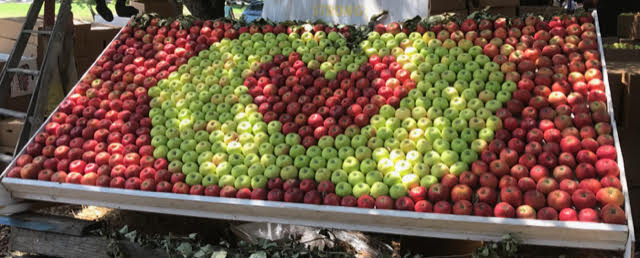
Of course, Larry and I walked in an immediately bought a piece of pie to share. I looked up and everyone around me was eating pie made with our local apples, baked with the loving hands of our local women, and tears came to my eyes. This is what creates community. Once of the reasons I left Florida was because I was once told not to bring homemade food for refreshments to a meeting—only packaged foods. Sitting under the oak trees eating apple pie with my community made me feel part of the community, not only in the moment, but part of it’s history past and future.

I had to include this photo above of the disposal area. It’s more that trash and recycling. It was landfill, recycling, compost, and pig food.
But of course. This is a farming community. And so our fair had woodcarving and historic farm equipment and “agrarian games” (I didn’t see those, but I’m thinking they may be like the Scottish Highland games, which are competitions of skill based on things actually done in local work life).
Here the food is seasonal, local, and organic with full disclosure. You can’t buy Mindful Meats online. They are local. And you can call up all these farms on this chalkboard and they will proudly tell you all about how they grow and raise their food. No secrets here.

This is how life should be!!!!! Everywhere.
Enough. I think you get the idea. I feel like I’ve come home.
As we were walking to our car I said to Larry, “This fair is in agreement with me. It’s just how I would design it. And I am in agreement with it. This is where we belong.”
And he agreed.
Safe Pesticide for Spiders?

Question from Michelle
Hi Debra,
I ask this question in the light that we are fighting brain cancer. We are also fighting spiders.
We have done everything possible around the house-changing lighting cans, switch plates, stuffing windows with molding, diatomaceous earth and we are still getting spiders.
I called Ecola and although they pushed their standard pesticide which we will never use, they also mention a “green version” made with “essential oils.”
I asked for the ingredients and they are as follows: thyme oil 20%, 2-phenethyl propionate 14%, rosemary oil 8 % and a combo of polyglyceryl oleate, isopropyl alcohol, wintergreen oil, and isopropyl myristate 58%.
Do you consider this a safe, non-toxic alternative? Thank you very much for your advice and help.
Debra’s Answer
First I want to just be clear that I can’t tell you if any product is “safe” for you.
I can tell you if it contains ingredients that are known to be toxic.
But there is a difference between the ability of a substance to cause harm and whether or not it will cause harm FOR YOU. Many factors about your body can affect how sensitive or tolerant you are to a substance or how well you r body can withstand whatever danger may be present.
That said, here’s what I can tell you about these materials.
Thyme oil, rosemary oil and wintergreen oil are essential oils. They are concentrated oils from plant sources. Some people who are sensitive to these oils react to them, but they are not toxic, per se.
2-phenethyl propionate is a natural substance found in peanuts. It is considered a “low risk pesticide” in the US and can be used here without registration. It is commonly used in natural pesticide products.
Polyglyceryl oleate is not considered be toxic or harmful.
Isopropyl alcohol is rubbing alcohol. It is generally made from petroleum when used as an ingredient. It is not expected to be toxic or harmful.
isopropyl myristate is composed of of isopropyl alcohol and myristic acid, a common, naturally occurring fatty acid. It is not expected to be toxic or harmful.
Based on this information, I would say this is likely to not be harmful. It does not, for example, contain known carcinogens.
It’s about as “not harmful” as a pesticide can be, That said, your body may not tolerate this and other products in ways not accounted for by toxicology.
If I needed a pesticide for spiders, I would use this.
Health Effects of Gas Stoves

I saw a blog on Treehugger that environmental engineering professor Shelly L Miller tweeted a whole rush of scientific papers on the health effects of air emissions from gas stoves, so I had to run right over to her Twitter page and get them for you. Imagine my surprise when I arrived on her page and Twitter said Shelly “follows you.”
As a home cook I am a fan of using gas over electric, and thought I was doing OK because I kept my stove well-adjusted. But when I started checking my indoor air with a real-time monitor, the VOCs spiked every time I cooked something on the stove.
Now here’s the scientific data about how that’s harmful to health.
BTW, I’m no longer cooking with gas. I either use my induction burner in my tiny kitchen or my mother-in-law’s electric stove.
NOTE some of these links are unclear, but I’ve just put everything here as I found it. I’ll continue to add to this list and feel free to add studies you find in the comments.
From Shelly Miller’s:
Induction stoves a great option for consumers to move towards a fossil-fuel free home, plus it eliminates a huge source of pollution (NO2, CO, particles) in the home. #healthyhome #indoorairpollution
7 Aug 2018
Get ready, I’ll be posting a bunch of references/studies on the association between adverse respiratory health and gas stoves #sciencetwitter #indoorairpollution #healthyhomes
8:46 AM – 8 Aug 2018
From the #SixCities study: strong evidence for causal effect of 2ndhand smoke on increased respiratory illness and exposure to gas stoves associated with reduced pulmonary function – all in children. https://www.atsjournals.org/doi/pdf/10.1164/arrd.1984.129.3.366 …
8:51 AM – 8 Aug 2018
Respiratory symptoms were more common in children exposed to a gas stove. “Respiratory Symptoms in Children and Indoor Exposure to Nitrogen Dioxide and Gas Stoves” | American Journal of Respiratory and Critical Care Medicine https://www.atsjournals.org/doi/abs/10.1164/ajrccm.158.3.9701084 …
8:53 AM – 8 Aug 2018
Women who used gas for cooking had increased risk of asthma-like symptoms and had reduced lung function and increased airways obstruction compared to those who did not use gas https://www.sciencedirect.com/science/article/pii/S0140673696900094 …
8:56 M – 8 Aug 2018
Children from households with gas stoves had a greater history of respiratory illness before age 2 and small but significantly lower levels of FEV1 and FVC corrected for height https://www.atsjournals.org/doi/abs/10.1164/arrd.1980.121.1.3 …
9:02 AM – 8 Aug 2018
#openaccess and shows the impact of using ventilation while cooking Shelly L Miller added,
9:05 AM – 8 Aug 2018
In homes using gas stoves, children whose parents reported using ventilation when using the stove had higher lung function and lower odds of asthma, wheeze, bronchitis compared to homes that never used ventilation or did not have ventilation available
9:05 AM – 8 Aug 2018
OK thats enough on gas stoves & respiratory health for now. Over 25 years ago when I was a PhD student at Berkeley talking to an EPA scientist about the most important #indoorairquality issue, and he said: gas stoves, because the association with adverse health is clear.
9:16 AM – 8 Aug 2018
And yet another study showing CO2 levels in offices above 1000 ppm causes lower cognitive functioning. Great study @j_g_allen Shelly L Miller added,
9:17 PM – 9 Aug 2018
Exploding Glassware and Other Hazards of Tempered “Safety” Glass
This morning I received an email asking for a brand of glass that doesn’t shatter.
The reader had just had a Duralux glass shatter into “a thousand pieces” in her daughter’s hand.
This is not the first time I’ve heard about various glass items spontaneously shattering.
But I have never never never in 40 years of using only glass glassware of various types…I have never had a glass shatter in my hand or sitting on a shelf or in any other way, shape or form.
So I decided to look this up in the internet and see if it had been investigated as a hoax.
The first thing I found was an informative blog post from another mom who had experienced shattering with the same type of Duralex glass. She had done some research and had found a reference that explained there is a phenomenon by which toughened (tempered) glass may spontaneously break without any apparent reason.
Then amazon had more than two dozen reviews with similar stories of shattering.
Here’s another discussion group where many users had theirs shatter and many others had no problem.
But for those that had the glassware shatter, they all say the same thing: it shattered into a million pieces, “not like any glass I’ve seen break before.”
There’s no mention of any kind of hoax.
As I continued to research I found this shattering is not limited to glassware, it’s any kind of tempered glassused to make any kind of product (see the video).
Ironically, it’s called “tempered safety glass” and is designed to break into those tiny pieces instead of big shards of glass that are even sharper. [How and why tempered safety glass was developed CHICAGO WINDOW EXPERT: Safety Glass: Is it Really Safe?]
Apparently microscopic imperfections during the manufacturing process eventually grow for days, months and years — long after a customer buys the glass product.
So what can we conclude from this?
Glass has been used for centuries to make household items. Really. It’s a pre-industrial material. When I was in Cologne, Germany I visited the Ancient Glass collection and was awestruck by the beauty of this handmade glass.
Glass is not toxic unless toxic metals are added (such as leaded crystal glassware).
Glass can break. Tempered glass can shatter.
When I was much younger, glass was universally used as a packaging material. But shampoo bottles would slip out of soapy hands and break, which is why all shampoo and many other products are now packaged in plastic.
But I have never had any glass spontaneously break that I’ve ever used. Of course, some glass items break if I drop them.
Perhaps it’s because I tend to buy glass items that are more heavy duty. I’m looking around on my desk and I have a tumbler made of recycled glass that is about 1/4” thick. I’m not going to drop it on the floor as a test, but I’m thinking if it did, it would break into a few large pieces. Likewise my water bottle is very heavy glass. I have had a few delicate pieces, but they don’t last long because they break if they are not handled very carefully.
My conclusion is we shouldn’t abandon glass altogether, but we need to learn a lot more about it to be able to use it wisely and safely.
There are many risks in life. Just because a glass might break doesn’t mean we should never use glasses. That would be like saying one is never going to ride in a car or cross a street because there are accidents. But we take precautions to reduce risk.
More to come about glass…
Window Air Conditioner Without Odor?

Question from Bonnie
Hi Debra,
I have owned Kenmore window ac over the years – no chemical odors.
I have a new one and now is 3 months old – still has the new smell chemical.
Could you post to ask others if they found one that has less odor. Thank you.
Debra’s Answer
OK posted. Readers, any recommendations for a window air conditioning unit that doesn’t smell like plastic?
Cloth-covered Ethernet Cable
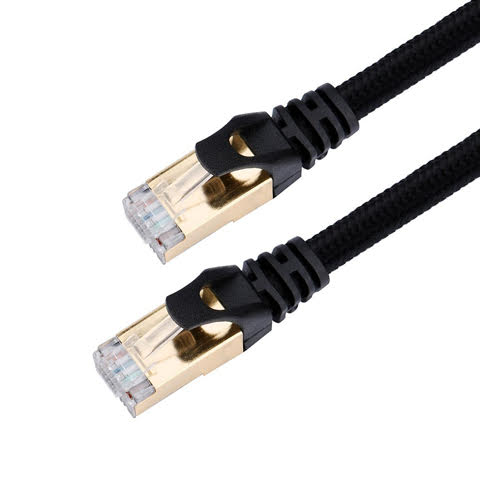
This cloth-covered ethernet cable is available online.
Question from Lindsey
Hi Debra,
Can you tell me if you know of a lead-free Ethernet cable? There are cloth-covered extension can red (links found on your site) & cloth-covered USB but I can’t find any Ethernet cables. Thank you!
Debra’s Answer
Here’s one: Vandesail Cat7 Ethernet Cable, Cat 7 RJ45 LAN Network Cable, High Speed Durable Nylon Braid STP.
It’s nylon. Not perfect, but no lead. 🙂
Also here is a “cable sash” you can use to cover PVC cables or bundle cables together. And another cable sleeve with a zipper. Both nylon.
I have been known to wrap cords with wired floral ribbon, which comes in pretty colors. The wire in the ribbon helps it stay in place.
Car Floor Mats Exposure
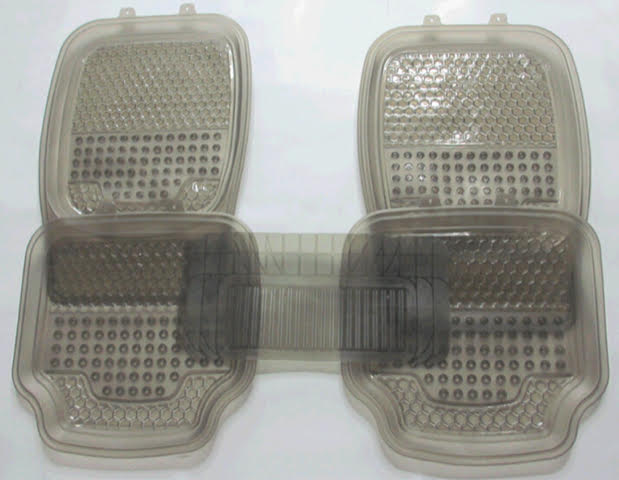
Question from Catherine
Hi Debra,
I just arrived in California to attend a weddinga nd my sister lent us a truck she has used in her business, so it’sa little rough.
My husband drove my two young daughters to the beach and hiking in it. I finally jumped in it when I was hit with a strong PVC (I think that was what is is) chemical odor and could smell it coming from the plastic floor mats. I had no idea that such toxic mats were in the vehicle, and to know my two kids were being driven in it for hours over a few days. I was so upset. The mats are apparently years old and no one else seemed bothered by them but me, butt hey smelled so strong I was hit with the odor when the door was opened.
My first question is are my children in danger from their exposure? Do I need to clean their shoes etc?
And how do you handle family who think your concerns are silly or when they don’t take your concerns seriously?
Debra’s Answer
I also don’t like the smell of floor mats, but let’s take a look at what they are actually made from before we figure out the danger.
Here’s a couple of paragraphs from an article about materials used to make floor mats and liners.
What are the all-weather floor mats and liners made of?
In order to withstand punishing year-round weather conditions and serious spills, the all-weather floor mats and liners are made from durable materials. Most of the all-weather floor mats are crafted from heavy-duty rubber, which can survive serious abuses virtually unscathed. However, the lighter-duty Catch-All Floor Mats use a thick weave of nylon rather than rubber, but they can still be washed off with a hose.
Floor liners are also made from ultra-durable materials, many of which are proprietary fabrications by the different companies. For example, Husky Liners developed a rubberized-plastic material called polydurathene, which is guaranteed not to crack, splinter or break for 99 years. What’s more, the scientists at Xtreme created Xynet, a resin with the look and flexibility of rubber. Xynet is impervious to the most common chemicals found in and around your vehicle, such as motor oil, gasoline and even battery acid.
That said, I searched specifically for “PVC auto floor mats” and they came right up.
So let’s assume they are PVC.
I’m not worried about your children having this one exposure. The problem is being exposed to these chemicals day-in-and-day out. I would be much more concerned if you told me your children were sleeping every night on a crib mattress with a vinyl cover.
Cleaning their shoes won’t do much by now.
How do you handle your family? All I know to do is education. I’m actually working on putting together some materials that I hope will be more convincing for people who are not yet aware that they need to be concerned about toxics.
I don’t have floor mats in my car. If you think you need them, those made from nylon would be the least toxic. Or I might cut some natural sisal mats to fit.
Readers, any recommendations?
How to clean wood kitchen cabinets?

Question from Colleen
Hi Debra,
I have original Scheirich wood kitchen cabinets in our kitchen. How do I go about cleaning and fixing water damage on the front of the cabinets below the sink and cleaning grease and greasy fingerprints off them. I don’t know what type of finish is on them. Can anyone help? I have MCS and anything with fragrance cause migraines and breathing problems. Thank you!
Debra’s Answer
The first thing I would do is contact the manufacturer to find out the standard care instructions and then figure out how to do the same thing in a nontoxic way. But looking online it seems like this brand is no longer being sold.
Here’s a whole pinterest page about “restoring mid-century wood cabinets”.
I had to smile when I saw this.
I grew up in a mid-century suburban house. My parents bought it in 1962 when I was 7 years old for $19,000. Now those homes are about $500,000.
Here’s an article about cleaning kitchen cabinets using Murphy Soap.
However, Murphy Soap contains fragrance. I see you can substitute unscented liquid castile soap for Murphy’s Soap.
Maybe my friend Gina will jump in and tell us how she cleans wood cabinets. She’s been a professional natural cleaner for as long as I have been writing about toxic-free products. Gina!!! Come help!!!
JUST AN ASIDE: While I was researching this I came across an EWG review of Murphy’s Oil Soap. Fragrance is NOT listed on their list of known ingredients (though it does say citronella oil) and it says “ingredient disclosure: poor” All they need to do is go to the Murphy’s Oil Soap website to find out there is fragrance. This is just one example of why I do my own research and don’t rely on EWG.
Be Prepared to Purify Your Indoor Air in a Crisis

A view from the east bench taken about 1 p.m. Sunday, Aug. 5, 2018, shows ozone-heavy skies in the Las Vegas valley. (Kevin Janison | KSNV)
One of my most favorite readers sent me an article last week about air filters—one of those 10 tips articles that someone writes who doesn’t know anything about the subject. She thought I should write something on this topic, so here I am.
I agree that during a crisis—whether it be a fire, nuclear attack,or any calamity—outdoor air could be compromised. And last summer I had that experience first hand when I was mere miles from the Sonoma County Firestorm. I had to leave my home in the middle of the night and go to the beach to breathe, just a few nights after I arrived in California.
And now here we are in fire season again in California. At the moment we are fine. But you never know when there will be smoke or where it will go.
The photo above was taken Sunday afternoon in Las Vegas—445 miles as the crow flies.
When the smoke arrives, it’s too late to get an air filter.
 I was a Girl Scout when I was younger. And the Girl Scout motto is “Be Prepared.” The idea is, obviously, if you learn what to do in life or in an emergency before it happens, you’ll suffer less, or you may not suffer at all.
I was a Girl Scout when I was younger. And the Girl Scout motto is “Be Prepared.” The idea is, obviously, if you learn what to do in life or in an emergency before it happens, you’ll suffer less, or you may not suffer at all.
Air filtration is just one of those things you just need to be prepared for.
And you only have seconds to get air filtration going when you need it most:
- Between 30-180 seconds of oxygen deprivation, you may lose consciousness.
- At the one-minute mark, brain cells begin dying.
- At three minutes, neurons suffer more extensive damage, and lasting brain damage becomes more likely.
- At five minutes, death becomes imminent.
- At 10 minutes, even if the brain remains alive, a coma and lasting brain damage are almost inevitable.
- At 15 minutes, survival becomes nearly impossible.
AIR IS THE MOST ESSENTIAL THING TO LIFE
Q&A: The Greatest Danger to Firefighters Isn’t the Fire—It’s Cancer from Toxic Smoke
Plastic-Free, Silicone-Free or Latex-Free Braces Or Retainer
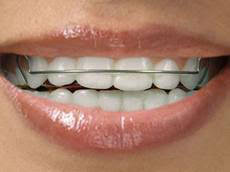 Question from Liz
Question from Liz
Hi Debra,
Thank you so much for all of the great information! I’m on the hunt for metal free and plastic/silicone/latex free braces or retainer.
I found a few silicone options but silicone doesn’t seem to work for me!
Any ideas?
Thanks so much!
Debra’s Answer
I don’t have any personal experience with braces or retainers.
Readers, any ideas?
Having said that, I just found an excellent article about materials used for retainers and braces at NOW: Is Mouth Gear Safe, Considering All That Plastic?.
They recommend asking your dentist for a retainer made of “somewhat pricier polypropylene.”
Is your objection to ALL plastic or the toxic plastics? Polypropylene is much less toxic than others.
My Almost Toxic-Free Honeymoon Weekend

The “Peace” room at the Living Light Inn in Fort Bragg, California
Over the weekend Larry and I went on a little 2-day “honeymoon” to celebrate 31 years of being together.
I’ve been getting questions about travel lately, so I thought I’d give you a real life “case study” of how we put our vacation together and what happened.
The Lodgings
When I want to go somewhere I’m always looking for a room that is as nontoxic as possible at an affordable price. For me, I expect to pay around $150/night. I’ll go a little higher for something special and I’m always happy when I can get a room for less, but I would rather pay more and be more comfortable than save money and be less comfortable.
When we were younger we would just get in the car and drive and stop wherever we wanted to stop and find a room. We had some great experiences doing that. One night—it was a Saturday night—we were in Monterey, California, where there are just no rooms on Saturday nights. We were standing in a hotel lobby, calling on a pay phone. I hung up the phone from “No Vacancy” #3 and the women at the next pay phone around poked her head around the divider and said, “Excuse me, are you looking for a room? I just had a cancellation.” We got a $500 room for $250. How could we not stay there. The room was beautiful and right on Montery Bay. We could open the window and look down at the water.
But now, with smart phones and online booking, we either book in advance, or I use hotel.com as we get close to an area. If you book last minute, you can get really good prices, but you run the risk of no rooms. One night, again, years ago, we had to drive half way across Nevada before we could get a room.
I generally start by looking for a bed and breakfast instead of a conventional hotel. They are just too toxic. Except in Fort Bragg and along Hwy 1 up the coast there, there are many, many small places to stay where the rooms are right on the cliffs overlooking the Pacific Ocean. So in that case, I would stay in a commercial hotel to get that view and that air.
We decided to spend the night in Fort Bragg on our trip. We had driven up Hwy 1 from Point Reyes, California to Victoria BC Canada on an earlier honeymoon, so this was a re-enactment of a trip we had taken before together. After living in Florida for fifteen years, I just wanted to reconnect with this land and the redwood trees and the ocean.
It took me about five minutes to find the Living Light Inn. It’s “Eco-Friendly Lodging.” That’s a photo of our room above. It’s an attic room on the third floor (no elevator). All wood paneled, with a view of the organic vegetable garden out the window. The ocean is only about four blocks away, so the air is magnificent. It’s just your average bed and carpet on the floor, but everything is so old that there are no toxic chemicals. No fragrance on the sheets from detergent, no fragrance in the bathroom from soap. We were totally comfortable.
This place has many many many glowing reviews. Most of the rooms have white walls and wood floors and are very bright an airy.
The only down side for me was that it was just a bit more funky than I like. The bathroom had a plastic shower enclosure and shelves that looked like exposed wood framing. But these were small things in comparison to the overall experience. This is not a luxury hotel. It’s good, clean rooms with clean air.
This is a vegan establishment. They have a kitchen that guests can use to prepare their own food, with a refrigerator and blenders and all the tools you might want to prepare vegan food.
They serve a vegan breakfast, which was interesting to me. I drink organic coffee with organic cream in the morning. They weren’t sure if the coffee was organic and the cream was rice milk. I was expecting plates of beautiful organic fruit. That’s vegan. But it was pretty much all packaged industrial food. But vegan.
The thing I really learned from this experience is that different people have different priorities. This establishment was “eco” and “vegan” and it expressed their understanding of those viewpoints. But they don’t have a “toxic-free” viewpoint and few places do. I need to do more work on this, to bring more awareness to lodgings about how they could really be toxic-free in addition to whatever else they are doing.
The Food
We started our trip with breakfast at the Cape Fear Cafe in Duncans Mills. I had overheard someone recommending it to a friend and wanted to try it. Very good.Since it was about 10:30 by the time we got there, Larry and I split a breakfast of veggie scrambled eggs with potatoes and toast and then we split a lunch of green salad with tandoori chicken and mango chutney on top.
Food choices is a big subject. Over the years I’ve come to having a line that I will not cross. I can’t say “I will only eat organic food” because often there isn’t any to choose. But I can usually find restaurants that serve dishes made from fresh ingredients, no additives, no cans, just real food. These places often use white refined flour and sugar and salt, but otherwise the ingredients are pretty good. That’s my line. My minimum. I won’t eat fast food or most packaged or canned food. I’ll just wait for the next meal if there is nothing else, or find some raw fruits or vegetables.
Cape Fear Cafe isn’t organic, but it could easily be as there is plenty of organic food in the area. Still, it was a very good meal.
Driving Hwy 1 the roadside services are few and far between. So when we got hungry again we stopped at the Black Point Grill in the Sea Ranch Lodge. Sea Ranch is an interesting place, worth a stop and a look around. I remember when Sea Ranch was built, starting in 1963. It was quite innovative then. The idea was to have people live in an ecosystem and preserve the natural beauty of the area. And they have accomplished and maintained that for almost fifty years now. There is no landscaping around the houses. Every house has weathered wood siding. Each house is unique. There are vacation rentals or you can stay at the Lodge. Lodge rooms start at $279/night, but it is well worth the cost. Staying here is an iconic California experience.
The food at the Black Point Grill was delicious and we were happy to see that they are vegetarian-friendly. I’m not a vegetarian but my diet is mostly plant-based, so I was happy to be able to order corn chowder and a chickpea veggie burger that was really delicious. Again not organic but they use “the freshest local ingredients.”Oh, I take that back. Some organic. The baby greens in the salad were organic.
When we reached Fort Bragg we asked the innkeeper for recommendations and she steered us to Mayan Fusion. This was a GREAT restaurant for us. It’s Mexican with a Mayan twist so the flavors were a bit different. They had a lot of nice entrees but we were able to stay on our diet by ordering salads and sides of rice and beans. Lest you think that sounds boring, we were delighted with how inventive and tasty they were. Homemade corn tortillas. And for dessert we had a Mayan chocolate ice cream with chilis, which is one of my favorite flavor combinations so we had to splurge. Larry and I rarely order dessert, but if we see something super-special, we always split it.
One of the things I love about the food in Fort Bragg is that they are very local-oriented. They really get what it meats to eat local. There are a number of local purveyors, so, for example, the Mayan chocolate ice cream was made especially for Mayan Fusion by the local ice cream maker Cowlicks. And the coffee ice cream at Cowlicks is made with a special blend from the local coffee roaster, and is unique to the ice cream. Cowlicks also has an ice cream made with a local mushroom called Candy Cap that tastes just like maple. Of course I had to try that and it really does taste like maple. Really really delicious. And the most popular breakfast spot, Eggheads, uses Canadian bacon smoked at the smokehouse down the street. You get the idea.
On Saturday morning I woke up looking for organic coffee. Since the innkeeper couldn’t guarantee their coffee was organic, he sent me down to Headland’s Coffee, his personal favorite coffee house. I walked in, wondering if it was organic. I looked at the list of “hot drinks” on the wall. It said “coffee” but not organic. And then I saw it. There was a whole rack of coffee bean dispensers and every single one said “organic.” I paid for my coffee and took my paper cup over to the double row of thermoses and every single one was organic. A dozen varieties of organic coffee! All brewed and waiting for me to try. If I lived in Fort Bragg, I would try a different one every morning.

After coffee, we tried to go to Eggheads,
but the wait was an hour. So we went down the street to the dedicated organic restaurant Cafe One. It wasn’t crowded, but the food was great. We had a Mexican breakfast of scrambled eggs on a corn tortilla with beans and rice and salsa. And a beautiful plate of assorted organic fruits, each cut carefully and arranged beautifully on the plate. The decor was unremarkable, but the food was delicious and I really appreciated their commitment to being organic through and through.
For lunch we went to Rhody’s Cafe at the Mendocino Botanical Gardens. We actually had planned to walk around the
Botanical Gardens, but it’s about a 2 hour walk and we didn’t have time. But the lunch was great. Lots of organic and local food. I had lentil soup and hummus with pita chips and dipping vegetables. Plates were decorated with edible flowers and herbs. We ate in an outdoor patio with a view o
f the gardens. Just lovely.
On the way home we stopped at a roadside stand and got the most fragrant strawberries! We at the whole basket.
The Sights
The main purpose of this honeymoon was simply to be together, enjoy each other’s company and have an adventure. We love to just go someplace and see what there is to see.
So driving up the coast we stopped at a secluded beach Larry had found and wanted to show me. It’s a public beach but it has kind of a secret entrance through a grove of redwood trees that you could easily miss if you didn’t know it was there.
We stopped at Sea Ranch and looked around.
We stopped in the town of Mendocino,
which used to be one of my favorite places of all time. Charming street of Victorian buildings on a bluff overlooking the ocean. There used to be wonderful shops there but no more. It’s all tourist shops now. I remember when Mendocino first became popular. A single restaurant opened, Cafe Beujoulais, became so outstanding that it became a destination. I remember their ads in local newspapers said simply, “Cafe Beaujolais. Mendocino. Worth the trip.” And it was. They had astonishing food for
1977. I went. And so did many others. And shops opened. And Mendocino became Mendocino. But that’s gone now.
As I get older—I’m 63 now—I’m noticing with some sadness parts of my life that used to be there and I expect to still be there are now gone. Like Mendocino. Like Thomas Bros road maps. They are no longer sold in bookstores because maps are in your phone. But last week we were out in the rural part of Sonoma county and lost reception. We needed a paper map. And I couldn’t buy one at my local bookstore. I could go to AAA and get a folding map, but Thomas Bros maps are books of maps of individual areas so you can really see them. A smart phone may be smart, but only if you have reception. A paper book you can take anywhere.
On Saturday morning we walked around the downtown area of Fort Bragg. It’s both sides of the street around one square block. It’s not for tourists. These are shops that carry the everyday items people need living far far far from the nearest mall or Walmart. And it reflects their viewpoint. Clothing is pretty much all natural fiber. There’s a cooking store with real cooking tools for the kind of cooking you do when your food comes from the farmer’s market or the forest or the ocean. A bookstore is all about connecting with nature. It’s just REAL.
And we loved it.
There’s a lot to see and do on the north coast of California. Lots of clean air. Lots of organic food. Lot’s of inns to stay in, in all price ranges. You can even bring your RV and park it in one of the RV parks that are almost right on the beach.
There’s still some summer left. Get out and explore!
Smoke in Sunny California Skies

Question from Stephanie
Hi Debra,
First of all, I love all your emails and personal notes about you and Larry. Now I’m concerned if the fires are affecting you in any way. I know the smoke must be very bad. It is terrible here, by Modesto, and we aren’t even close to any fires!
I did want to say again, and I have meant to respond to readers questions, about which air filters are the best. EnviroKlenz 100%!!!!
I started with Foust in the 1980’s, and have bought very expensive and cheap ones ever since. I could never really tell a difference until I got the EnviroKlenz Mobile Unit.
Everyone that lives in smokey areas should have an EnviroKlenz Mobile Unit in their home. Everyone.
I have 2 Mobile units and I’m purchasing another one for my niece next door with 2 little boys. The air can be thick with smoke outside, and I turn my unit on full blast, shut all windows, (and our home is not airtight), but I cannot smell the smoke at all. Nothing. It is absolutely wonderful!
It has helped me with smoke, with chemical exposures, and just having better air to breathe. I wish I had more time to give you more specifics Debra, but I don’t.
However, I did want to see how you and Larry, and his family are doing. And also to tell you about EnviroKlenz, so people will know what filter is best to get help with this smoke!! I highly recommend it.
It is the ONLY air purifier I recommend after 40 years of searching.
I would definitely recommend a person purchase the EnvirKlenz Mobile UV Model. I have both models. Two times we had water leakage in an older Mobile Home with water inside the walls. Both times we put our UV Model in the area, turned it on full blast, and had No Problems with mold. We even had a mold inspector out to check the boards and inside the walls. No Problem.
I would also like to add that when we had the chemical exposure in our home I had a brand new 02 Air Purifier and an AirPura Air Filter. In 5 days, I had both running full blast in the room, and they did not touch the toxic smell at all. I called Debra, and I received the original EnviroKlenz Mobile unit and within 24 hours the smell was almost gone, and within 48 hours we could breathe good air with no toxic smell whatsoever. No Problems since.
I also had our home checked for EMF’s by a professional. The AirPura had horribly high EMF’s and I kept it right next to my bed. No wonder I couldn’t sleep! The EnviroKlenz Mobile Unit EMF’s were next to nothing. I can sit right next to it, No Problem.
I also want to relate our experience with the EnviroKlenz Breathing Masks. My husband takes care of our 3 acre Almond orchard doing all weeding, etc., by hand since we do not use chemicals. It is a dirty, dusty job. Before we purchased the EnviroKlenz Breathing Masks he would get sinus headaches, be all stopped up, red eyes, the whole works whenever he worked in the field or yards. Now he always wears the Breathing Mask when he’s outside working and he has absolutely No Problems.
I continue to be impressed with EnviroKlenz. The smoky air in the California skies is terrible right now where I live, but at least I can come inside my home and be able to breathe because of the EnviroKlenz Air Filter. Truly amazing!
Take Care.
Always fond thoughts of you.
Wishing you cool sea breezes,
with Love,
Stephanie Mills
Debra’s Answer
Thanks so much Stephanie.
We’re fine for the moment. We’re south of the Mendocino fires. But it’s clearly fire season now and we all need to be ready.
I also want to mention that EnviroKlenz also has a face mask that works a lot better than the usual particle face masks. I have mine ready and at hand in case it gets smokey here.
It utilizes the EnviroKlenz patented earth mineral technology which has the ability to chemically dismantle a wide range of undesirable chemical compounds. The fibers of the mask can filter out many common particulates. Reduces exposures to fragrances, VOCs, pollen, dust, dander, odors, and more.The mask itself is odor-free.
Toxic-Free Finds at TJ Maxx
I like to save money as much as all the rest of you, so I’m happy to report that I often do find toxic-free items at discount places like Ross Dress for Less, Marshall’s, and TJ Maxx.
One of my most favorite pieces of clothing of all time—a 100% boiled wool vest with embroidery—I got for $2 at Ross.
So when I needed to buy a waste basket the other night, Larry and I went down to TJ Maxx. Here are three items I we found that I felt were worth mentioning.
All at my local TJ Maxx.
Toxic-free products are everywhere. You just need to know how to identify them.

Desk Mat
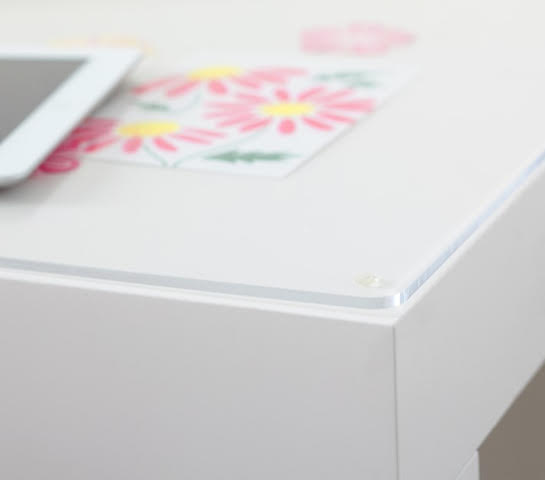
This desk mat from Pottery Barn is made of acrylic plastic.
Question from Jackie
Hi Debra,
Hello, I am so tempted to buy this Large Desk Mat from Pottery Barn . I know I shouldn’t because it is made of acrylic. Would you happen to know of something better? Leather is pricey and this is for my 7 year old son who has ADHD symptoms.
Thank you.
Debra’s Answer
This is easy.
Just get a piece of glass to put on the desk top.
Tell them at the glass store what you are using it for and the size of the desk and they will give you the right type of glass and cut it for you.
Does Odorox Technology Remove Fragrances in Homes and Cars?
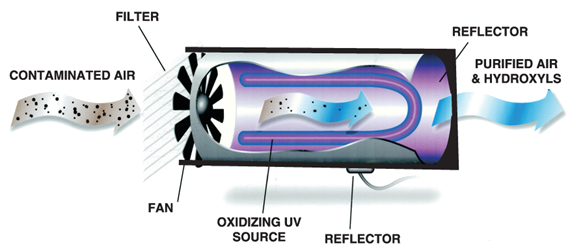
Odorox uses elements found in nature to break down fragrance and other odors in indoor air.
Back in 2011, a reader asked about Odorox, a new technology that claimed to completely remove fragrance from fabrics, surface, beds, curtains, upholstery, and other materials that are difficult to remove fragrance from.
I didn’t have any experience with it, but I posted her question and asked if anyone had any experience, and got zero responses.
Today I got a consulting call about Odorox. Same situation. A woman moved into an apartment and everything is scented and she can’t get the fragrance out.
She wants to know…does it work?
Does anyone have any experience with this service?
Odorox is a “hydroxyl generator” that uses hydroxyl molecules to break down the chemical bonds to destroy odor molecules.
I would have to do more research to offer any comment on this, but I didn’t want to wait to ask if anyone has any experience using it. Does it work?
Thank you! Just leave a comment with your reply.
New Legislation Aims to End Product Labeling and Right-to-Know for Toxics

I just learned this morning that on June 6, 2018, Sen. Jerry Moran (R-KS) and Reps. Adam Kinzinger (R-IL) and Kurt Schrader (D-OR) introduced S. 3019/H.R. 6022, the inaccurately labeled “Accurate Labels Act.”
The bill is designed to comprehensively preempt the ability of states and municipalities to require the disclosure of ingredients in consumer products that communicates the presence of harmful chemicals, such as carcinogens or reproductive toxins.
The bill would likely overturn numerous state and local laws (and potentially some federal programs) including mercury warning labels, cleaning product ingredient disclosure, disclosure of toxic flame retardants in furniture, disclosure of dangerous chemicals in children’s products, and California’s Safe Drinking Water and Toxic Enforcement Act (Prop 65).
In a press release regarding this legislation, Women’s Voices for the Earth provided some good statistics about the need for ingredient transparency:
- A 2015 survey of 1,000 U.S. moms found that 73% of those surveyed, “often do research to understand the safety of ingredients to which their family is exposed.”[i]
- In a 2013 survey consumers reported ingredient transparency as a “very important” or “important” factor in purchase decisions like food and beverage (82%), beauty and personal care (82%), and household products (82%) [ii]
- A 2012 survey of consumer attitudes found that 86% of people polled believed “ingredient transparency “ is one of the most important issues for companies to address.[iii]
- A 2015 Harris poll found that 60% of women in the United States report that they read labels on personal care products and avoid products that contain certain chemicals. [iv]
While I personally feel that Proposition 65 is too vague and confusing to be an effective warning, I do think we should have the freedom to have good warnings and the right to know. And we should have MORE information about toxics in products, not less.
If you want to take action to stop this legislation, now is the time.
State Labeling/Warning Preemption Bill Summary
WOMEN’S VOICES FOR THE EARTH: Stop the Chemical Industry from Undermining Your Right to Know
[i]Influence Central (2015) It’s Not Easy Being Green: Navigating the Kaleidoscope of Green Moms. Available online: http://influence-central.com/ic/wp-content/uploads/2015/04/IC_NavigatingKaleidoscopeofGreenMoms.pdf
[ii]http://www.globescan.com
[iii]http://www.theregenerationroadmap.com/files/reports/TRR_Rethinking_Consumption.pdf
[iv]https://cdn.shopify.com/s/files/1/1817/5539/files/Kari_Gran_Green_Beauty_Barometer_Results_2016.pdf
Safe Hotels for MCS

Question from Milena
Hi Debra,
Glad to find this website. I recently got married to a man who suffers from MCS in a very severe way. We want to travel, to any place in the world, to have some vacations. Do you know any hotels we could be using, anywhere?
Thank you!!!
Debra’s Answer
There used to be a directory of hotels for MCS that I believe no longer exists.
Here are some posts where I’ve already written on the subject:
FINDING HOTELS THAT ARE NON-TOXIC
LEEDS CERTIFIED NAPA VALLEY HOTEL
FILTERED WATER WHILE TRAVELING
HOUSTON PLACE TO STAY ? SAFE? SAFER?
Hotels continue to be a toxic industry. I stay in B&Bs when I can.
Readers, if you have stayed someplace you consider safe, please put it in the comments.
Here’s a place in Berkeley, California that especially caters to MCS: The North Berkeley Hils Homestay.
Which Of These Unscented Dish Soaps Would You Use?
Question from Sicili
Hi Debra,
I was wondering if you could please tell me which one of the three dishliquids you would use if you were choosing between , Better Life unscented, Attitude fragrance free and Seventh Generation free and clear? Thank you so much for your time. I hope you have a nice day 🙂
https://www.cleanhappens.com/products/dish-it-out?variant=14099968516
https://www.attitudeliving.com/baby-dishwashing-liquid-fragrance-free-p/13179.htm
https://www.seventhgeneration.com/free-and-clear/dish-detergent
Debra’s Answer
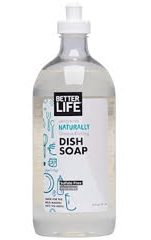 Better Life Unscented
Better Life Unscented
100% plant-derived cleaning agents
From coconut and corn
No SLS (sodium lauryl sulfates), SLES, ethoxylates, petroleum solvents, synthetic fragrances, dyes, parabens, or triclosan. No harsh chemical residue. Just the good stuff.
Other Ingredients
Purified water, potassium cocoate (natural castile soap), lauryl glucoside (plant derived), caprylyl/capryl glucoside (plant derived) glycerin (vegetable), disodium coco-glucoside citrate, aloe barbadensis leaf extract, tocopherol (vitamin E)
Non-toxic and biodegradable
Safe around kids, pets, and the planet
Never tested on animals
Kind to waterways and marine life
Made in the USA with solar energy
Better Life is a privately-owned company.
Better Life Unscented Dish Soap on online.
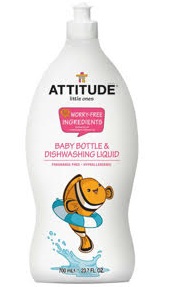 Attitude Baby Dishwashing Liquid
Attitude Baby Dishwashing Liquid
We promise to use only the safest and purest ingredients.
Aqua/water/eau, coco glucoside, myristyl glucoside, lauryl glucoside, sodium chloride, sodium gluconate, sodium citrate.
ADVANTAGES
- Free of carcinogen ingredients and by products (IARC group 1 & 2)
- Free of 1,4-dioxane and ethylene oxide, tested by independent laboratory
- Certified eco-friendly by EcoLogo, the most recognized certification in North America
- CO2 neutral: no contribution to climate change
- Fragrance free
- Hypoallergenic
- Vegetable-based and biodegradable (OECD 301)
- Free of EDTA and NTA
- Not tested on animals
- Vegan product
- Septic tank safe
- Made in Canada
- I can find who owns Attitude or anything about them
- .
Attitude Baby Dishwashing Liquid at online.
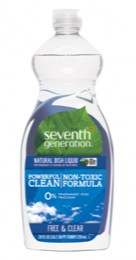 Seventh Generation Natural Dish Liquid
Seventh Generation Natural Dish Liquid
Though this Seventh Generation product is plant-based and free from fragrances and dyes, the company is now owned by Lever, so I have less trust about the integrity of the product. Lever is not dedicated to making toxic-free products. So I wouldn’t use this one for that reason, especially since there are other choices available.
* * * * *
Either of the first two would be fine with me. The Attitude product is simpler and has fewer ingredients, the Better Life product has the added benefit of aloe and vitamin D, but otherwise their ingredients are very similar and they are both plant-based and fragrance-free. If I had to choose one, I’d go with Better Life, because they are more transparent about who they are and they are clearly motivated by purity of product. And I like that they use solar energy. I work in a solar-powered office. 🙂
Mercury in Orthotics
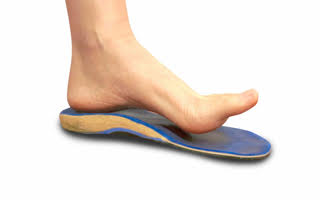
Question from Cindy
Hi Debra,
I have been wearing orthotics in my shoes for the past 5 years. Recently, I found out that the owner of the company could no longer provide his orthotics, because the rubber in the middle layer of this product contains mercury, and has been banned. I have been able to walk pain-free in these orthotics, so am dismayed, but I am also concerned if the mercury is capable of leaching out into my foot. I wear these everyday, all day. Am I in danger of mercury poisoning?
Thank you so much.
Debra’s Answer
First of all, I went searching online, but couldn’t find any reference to mercury in orthotics. FYI here’s a list of materials used to make orthotics. Mercury isn’t included. This doesn’t mean YOUR orthotics do not contain mercury, it just isn’t common.
And you mentioned it was in the middle layer. So you would have had no skin contact. The mercury would have had to have been outgassing for you to be exposed, in which case you would have inhaled it.
There are many types of mercury, from the elemental particle to oxidized vapor, and each will enter your body and move through it in different ways, with different effects.
I doubt this mercury has had any effect on your health, but if they have banned it, there is a reason.
I would suggest you go back to them and ask what form of mercury was used and why it was banned.
Then you could go online and look for the toxicokinetics for that type of mercury.
You can look up this kind of information for any chemical by searching for “toxicokinetics” name of chemical”.
Toxicokinetics is a description of the routes by which a chemical enters the body, the rate of entry, and what occurs to metabolize and excrete the chemical once it is in the body.
As long as you know the exact chemical in the exposure, you should be able to find it’s toxicokinetics.
A Tale of Three Bagels
 Enriched wheat flour [flour, malted barley flour, reduced iron, niacin, thiamin mononitrate (vitamin b1), riboflavin (vitamin b2), folic acid], water, sugar, yeast, dehydrated onion, wheat bran, cornmeal, salt, wheat gluten, preservatives (calcium propionate, sorbic acid), grain vinegar, rice flour, monocalcium phosphate, cornstarch, mono- and diglycerides, polysorbate 60, soy lecithin, potassium iodate, onions.
Enriched wheat flour [flour, malted barley flour, reduced iron, niacin, thiamin mononitrate (vitamin b1), riboflavin (vitamin b2), folic acid], water, sugar, yeast, dehydrated onion, wheat bran, cornmeal, salt, wheat gluten, preservatives (calcium propionate, sorbic acid), grain vinegar, rice flour, monocalcium phosphate, cornstarch, mono- and diglycerides, polysorbate 60, soy lecithin, potassium iodate, onions.
And there it was: soy lecithin. It’s an ingredient you’ll find in a lot of chocolate bars, but I didn’t expect it in a bagel. I guessed the other ingredients were probably there, but this was an unusual circumstance. I thought I could eat a little Sara Lee bagel and get away with it. But I couldn’t.
This onion bagel was the joy of Larry’s day so I wanted to find a better bagel.
First I went to a local bagel shop. They didn’t have their ingredients posted, so I asked. I was told they didn’t know the ingredients. They just bake the bagels. Apparently it all comes in a mix or something, they aren’t actually mixing ingredients at this location. I’m not sure this is legal to not have the ingredients available for a food item, but that is not the issue here. We couldn’t find out the ingredients to see if the bagels contained fat or not. When we asked this specifically we were told, “We don’t know so don’t buy the bagel.” Talk about difficulty getting a list of materials used to make a product…
Then we went to a local independent grocery where we often shop. They had bagels in bulk bins that we could buy individually, but no ingredients. But there was an attendant at the bakery counter. We asked her and she said “These are authentic New York bagels. They only contain flour, water, yeast and salt.” And she picked up the phone and called the bagel maker to confirm.
We bought those authentic New York style bagels and loved them, The Sara Lee bagels didn’t even taste like bagel and were more like bread than bagels.
Now, you are probably asking why I didn’t buy organic bagels. Well, I tried. The first place I looked was my local organic food store. But they didn’t have any. We used to buy bagels at the farmer’s market made from organic hand-ground whole wheat flour and they were out-of-this-world delicious. But they are no longer being made.
So for the moment our best choice is fat-free, additive-free bagels. But they are a tiny part of our whole food intake, which revolves around whole organic foods, more than half purchased at the farmer’s market.
I’m telling you this story just because I mostly live in the world of natural food store and farmer’s market. It was actually shocking to me to look back at industrial food and experience what it is made from, how it tastes and what it does to my body, and to see how difficult it was to get the ingredients of food products.
Just a little slice of life to show the range of choices.
Now that I’ve had my bagel digression, I’ve decided I’d rather eat my whole organic food. The day after I wrote this I bought a loaf of hand-ground whole grain organic bread made from heirloom Italian grain. Oh so much better!
Linen Sheets + Making the Bed

Rough Linen is having a sale on many items right now.
As you may know, Larry and I moved across the country from Florida last September. Last week we accomplished the momentous milestone of moving to a storage unit half the size, so I thought I’d celebrate by looking for my linen sheets.
Turned out they were in a bag I had brought into the house and stuffed in the closet months ago, but I was happy to find them.
I had one white linen sheet I had inherited from my great aunt, one white linen pillowcase I had received as a gift from Life Giving Linen and one natural linen duvet cover I had purchased at Macy’s last year on sale. At the time I had thought we would be doing a lot of traveling, so I bought a king size duvet cover with the idea that we could put it on top of any hotel bed and sleep between linen sheets. We haven’t yet done that, but we did try to use it as a duvet cover on our queen wool comforter and that didn’t work very well.
Meanwhile I had been looking at buying this Sheet Set from Rough Linen that is currently on sale. The description explained that it had two flat sheets to save money. It occurred to me that also made sense because my problem with sheet sets has been that the bottom fitted sheet wears out much faster than the top sheet and pillow cases, and with two flat sheets I could alternate which one is on the bottom and the sheets would last longer. In fact I think the two sheets should be numbered or have some indentification symbol on them so you can alternate them easily. Of course, we would all need to learn to make mitered corners, but it’s not difficult.
But before I could get to mitered corners, it was late and there were no sheets on the bed, so we just laid the linen duvet cover on top of the mattress and used the comforter with the cotton flannel cover that fit and I used the white linen pillowcase and it worked perfectly! My body so loved laying on that linen again! I could feel my body releasing tension. And then the flannel cover was cozy and warm. Just perfect, perfect perfect. Just laying the sheet over the mattress is working very well. No corners to fold and it actually stays in place better than the fitted sheet.
I highly recommend that you consider linen sheets if you can afford them. They are worth saving up for and will last longer than cotton,, especially if you alternate two flat sheets as I described above.
As it turned out I didn’t buy the sheet set because I was happy with the combination of the bits and pieces I already had. But one day I will buy a set of linen sheets and sleep happily ever after.
UPF/UV Coating on Clothing
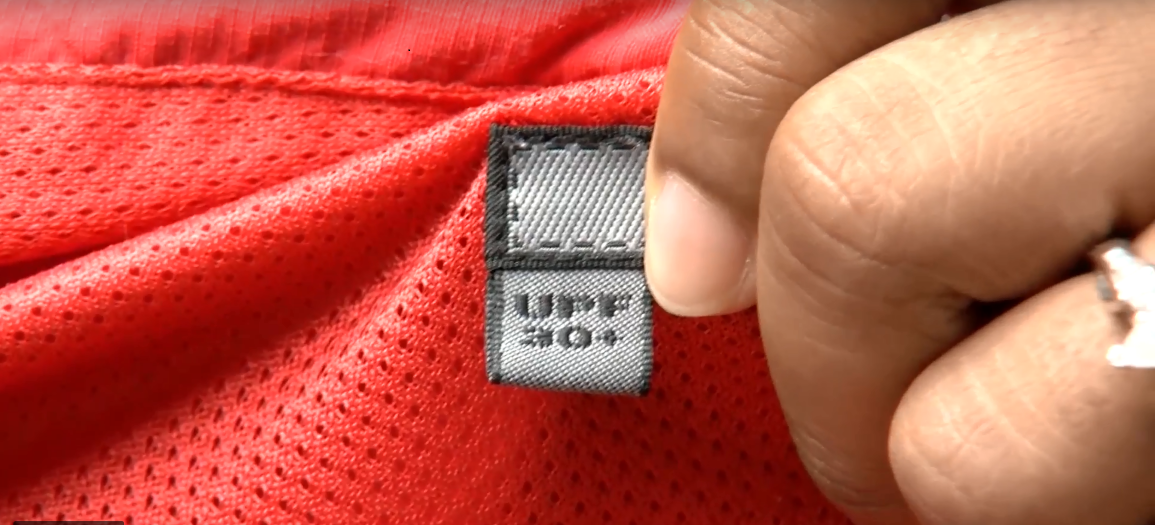
Question from Dean
Hi Debra,
Are you aware of any health dangers posed by UPF/UV treatments on clothing?
Thanks!
Debra’s Answer
First let me explain what this is.
You’ve probably heard of SPF with regard to sunscreen. That stands for Sun Protection Factor and measures the amount of time it takes for skin exposed to the sun to redden.
UPF is a similar measurement for fabric, which indicates the amount of UV radiation that penetrates a fabric and reaches the skin. To learn more about the UPF rating system and choosing UPF clothing, see this excellent article from REI: How to Choose Sun Protection (UPF) Clothing.
Now to answer your question.
Sun protection fabrics are generally made from synthetic fibers. Those that have chemical additives don’t seem to be disclosing what those chemicals are. The only UPF additive I could find was nanoparticles of titanium dioxide.
I generally don’t recommend synthetic fibers and don’t recommend chemicals that do not disclose what they are.
There are many guidelines that explain how to choose clothing that offers some protection without wearing synthetics or unknown chemicals. Any dark, tightly woven natural fiber will offer protection.
Here’s an article with more information: SUN & SKIN NEWS: Dress to Protect: 5 Things that affect How Well Your Clothes Block UV Rays
Polyester-free Umbrella
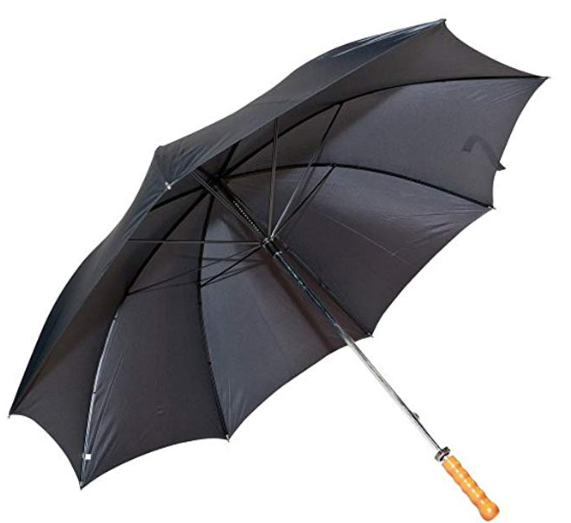
Black Oversized Nylon Umbrella from online
Question from Sue in TX
Hi Debra,
I am allergic to polyester. I used to be able to buy nylon umbrellas from Totes, but they switched to 100% polyester (at least I have not been able to find an existing Totes umbrella, at this time, that is not 100% polyester). I have searched online, for any brand, and I cannot find a nylon umbrella. Thank you for any help!
Debra’s Answer
I had no problem finding nylon umbrellas. Here’s a whole page of nylon umbrellas at amazon.com.
But while I was looking I found an interesting article about the construction of umbrellas at QUORA: Why are umbrellas made of nylon? Isn’t there a more waterproof material that could be used?
Umbrellas may disclose the basic material they are made from, but often don’t tell you they are waterproof because they are coated with Teflon or “most often” a polyurethane film.
Apparently the most common material now for umbrellas is Pongee, which is usually silk, but can be a synthetic material by the same name.
In purchasing an umbrella, try to find out if waterproofing chemicals or films have been added.
Winter Coat

Geirger of Austria Classic Black Women’s Boiled Wool Jacket at Alpenstyle
Question from Bonnie
Hi Debra,
I have an old winter coat I have been using for years that is finally going bye bye. I need to replace it with a new one but have not had much luck over the years. I am allergic to down. Anyone have any luck with this?
Debra’s Answer
Readers, what suggestions can you offer?
I live in a fairly temperate climate, so I’m usually warm enough with several layers of cotton shirts and sweaters and scarves. I haven’t owned a winter coat in years.
But I did find a website called AlpenStyle that offers “outerwear for women [and men] manufactured by companies that reflect the best fabric quality and styling of European sweater pullovers and cardigans, coats and jackets. AlpenStyle carries three of the most prominent ladies’ outerwear clothing lines: Icelandic Design, Geiger of Austria and Skjaeveland. AlpenStyle specializes in these three producers of fine clothing because all three provide incredibly high quality products, all reflect that particular look associated with European clothing and because all three are companies with high integrity offering natural fabrics that feel good to the touch and stand the test of time.”
These are not inexpensive, but are very well made and designed to last. Plus sizes too.
What do you all do for winter coats in cold climates?
New Scratch-and-Sniff Postage Stamps Should be Banned

I finally got a whiff of the new scratch-and-sniff postage stamps at my local post office this morning.
Though I knew they were coming, I hadn’t written about them before because “scratch-and-sniff,” well, I didn’t know for sure if that meant one needed to scratch them before you could smell them.
But now I can tell you with certainty that they DO smell before scratching, just like those perfume inserts in magazines.
The scent actually upset my stomach and triggered me to rush to the nearest store to get something to eat/
To me, this is just an unacceptable infringement on my human rights.
Last week I wrote about a 2016 ruling a woman’s chemical sensitivity was a disability under the American’s with Disabilities Act (ADA) because it interfered with the major life activity of breathing.
The ruling outlines accommodations employers may need to make in the workplace for those with fragrance allergies, which go so far as to ask or require other employees to abstain from wearing or using scented products.
But it’s not just about allergies. Synthetic fragrances emit toxic chemicals . We are all being exposed now to yet another source of toxic chemicals for “fun.”
I don’t want scented stamps in my pile of mail, but I can’t opt-out of the exposure without opt-ing out of the United States Postal Service, which I have a right to use as a citizen of this country.
Please don’t buy these stamps. And encourage others to not buy them too. And how can we get the Post Office to stop selling them?
The masquerade of synthetic-fragranced products as “natural”
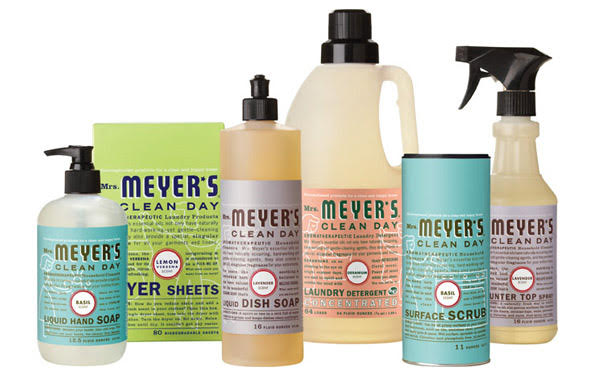
Question from Jane
Hi Debra,
You are one of our “household gods” and have been for many years. It is such a relief to find a source of information about chemical sensitivities and allergies that is non-judgmental and so widely and wonderfully informative!
My specific concern right now is Mrs. Meyer’s products, especially her laundry products. I have only moderate MCS, but I cannot use Mrs. Meyers at all. Several years ago, I actually had to get up in the middle of the night and change our sheets because they had been washed with her detergent.
The company makes so many claims to be fresh and natural, and yet their scents do not smell at all natural to me! For example, I know real live honeysuckle and its beautiful scent. Mrs. Meyer’s version of “honeysuckle” is not what I recognize as the real thing!
Yet I read and hear, on YouTube especially, people I would think of as intelligent just rhapsodizing about Mrs. Meyers products and, worse, convincing other people to buy and use them! What are the long-term effects of exposure, especially to children, of these highly fragranced, super-hyped items?
I know you share a longstanding concern about fragranced personal care and household items. But this line of products is marketed with such sweet promises that they make me think of the scene in the Disney film Snow White, when the witch looks at the beautiful apple she has prepared for Snow White, and we see a skull and crossbones take shape over that lovely red surface. Isn’t this what is happening here?
Thank you for any comments you can make!
Debra’s Answer
It’s not a secret that Mrs. Meye’s products contain synthetic fragrances. They disclose this right on their Ingredient Glossary.

Note they are not organic, so whatever pesticide is in the natural material gets concentrated into the essential oil. My standard is ONLY certified organic essential oil (and if you see anything otherwise on my website please let me know so I can remove it).
I agree with you that this is exactly like the poison apple from Snow White.
There has been a period of time where our product purchases have been influenced by how well advertising appeals to us, rather than what we need and rather than evaluating the product. I think we’ve all be there. I know I personally have made an enormous shift from buying things because advertising convinced me to buy, to buying based on my real needs to sustain my own life and health and planet.
It’s a whole different mindset to consider how to sustain a life, but that is the question Larry and I discuss every day. Will making a particular choice contribute to sustain ourselves, our health, our relationship, our ecosystems, or will it contribute to their destruction. This is the basis of our life together.
A reader asked me the other day with so much information available, that often conflicts, who do we listen to? For me, it’s not WHO, it’s WHAT is the result of using that information in my life.
Larry and I sometimes talk about using toxic chemicals for glamour, fun, and profit. A face covered with toxic cosmetics is no longer beautiful to me, bright blue food doesn’t make me want to eat it. Give me a farmer’s market and linen sheets and essential oils and water fresh from a spring and I will be very happy and deeply satisfied.
Now, about Mrs, Meyers. I think the biggest problem here is that their message and their ingredients are not aligned. And that is a problem of Truth in Advertising. They are making you believe that the product is natural and pleasurable when it’s not. There are laws about this.
Here’s a website where you can report companies making bad claims, take legal action, and more (or so they say, I have no experience with them): TruthIn Advertising.org
I could spend all day reporting false claims but I would rather spend my time educating consumers and making more known companies that are making true claims and using toxic-free materials.
There! I did have a few comments on this.
Dharma Trading Company
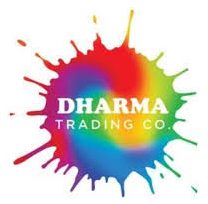 This is one of my local California stores that has been around a long time—1969! They are basically a fiber art supply store, so there are a lot of things you may not be interested in, but I’m listing them here because fiber arts are about putting art on fabric and clothing, and they carry a good selection of natural fiber fabrics, clothing and other dyeables that can be used “undyed.” They have many types of cotton fabrics, including some organic and even 100% cotton for making sweat clothes, hemp and hemp blends, linen and linen blends, and many silk fabrics. Also extra wide natural fiber fabrics undyed for curtains or bedlinens. Clothing for babies, kids, women and men include such things as undyed cotton tank dress for only $16 and cotton sweat pants and sweat shirts for under $20. Clothing is not organic, but no dye and all sewn with cotton thread. Plus bags, wallets, totes. Yarns, lace, ribbons. Almost anything and everything. And they sell all kinds of dyes and markers (not all nontoxic) to make your own creations.
This is one of my local California stores that has been around a long time—1969! They are basically a fiber art supply store, so there are a lot of things you may not be interested in, but I’m listing them here because fiber arts are about putting art on fabric and clothing, and they carry a good selection of natural fiber fabrics, clothing and other dyeables that can be used “undyed.” They have many types of cotton fabrics, including some organic and even 100% cotton for making sweat clothes, hemp and hemp blends, linen and linen blends, and many silk fabrics. Also extra wide natural fiber fabrics undyed for curtains or bedlinens. Clothing for babies, kids, women and men include such things as undyed cotton tank dress for only $16 and cotton sweat pants and sweat shirts for under $20. Clothing is not organic, but no dye and all sewn with cotton thread. Plus bags, wallets, totes. Yarns, lace, ribbons. Almost anything and everything. And they sell all kinds of dyes and markers (not all nontoxic) to make your own creations.
Good Things Boutique
 This is the online boutique of the daughter of one of my long-time readers, who has done a fine job of putting together collections of organic cotton and ethical clothing for women and men. Read product descriptions to choose items that meet your specific needs.
This is the online boutique of the daughter of one of my long-time readers, who has done a fine job of putting together collections of organic cotton and ethical clothing for women and men. Read product descriptions to choose items that meet your specific needs.
Duralex
Wisconsin Goes Fragrance-Free
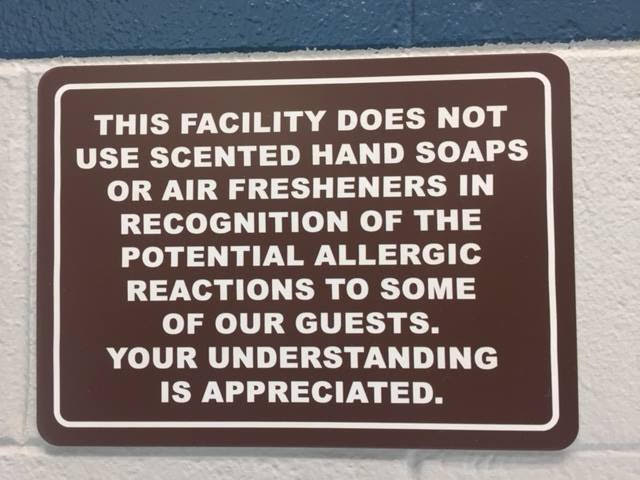
The above sign was spotted in a roadside rest area in restroom, maintained by the state of Wisconsin.
Other public places could do the same.
This may be a response to a 2016 ruling a woman’s chemical sensitivity was a disability under the American’s with Disabilities Act (ADA) because it interfered with the major life activity of breathing.
The link in the above paragraph outlines accommodations employers may need to make in the workplace for those with fragrance allergies, which go so far as to ask or require other employees to abstain from wearing or using scented products.
I remember when smoking cigarettes was first banned in public places and now it is widespread. So I am optimistic the same will happen with fragrance.
Toxic Free Paper Notebooks

These are the recycled paper notepads I use from Staples. (I don’t like spiral-bound notebooks).
This week I received TWO emails asking about paper office products after not receiving one questions about them in almost forty years of doing this work.
I’ve never addressed this because I’ve never noticed a need to. I buy various recycled paper pads at Staples and I’ve never noticed an odor.
Bonnie wrote this to me:
I have been sorting my old papers which I keep in paper 2 pocket folders. 2 types have solid colors, one with a smooth surface, the other less smooth. I have manila folders which I assume are safe. I have a bank of America folder which is glossy. Also have spiral college ruled paper notebooks. The front are solid colored and the back looks like cardboard.
The back has an odor. I was thinking to buy paper only next time. Are any of these toxic? Thank you.
This is from Mary:
I had been using Mead’s 5X7 150 page notebook to keep track of what I eat, how I feel, etc., but they smelled strongly of disinfectant and I had to air each one out page by page over many days.
I found these notebooks at OfficeSupply. They have no odor. I thought maybe your readers might like to know about them. I don’t knotice an odor with things like steno pads but I needed this style. They are only 120 pages though.
Anyone else having trouble with paper notebooks?
And anyone else have favorite sources for notebooks with no odors?
Natural Treatments for Dry Skin
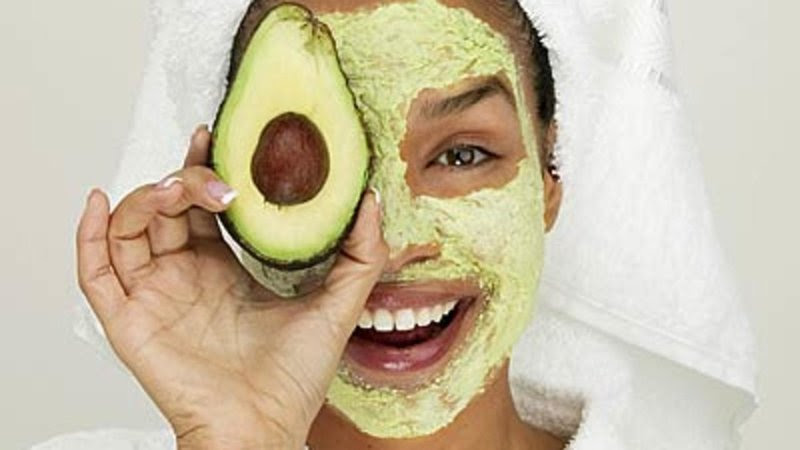
A few weeks ago I sent out a survey and at the end I gave respondents the opportunity to be sent the survey results.
A few days ago I sent the survey results to anyone who wanted them, and soon received this reply:
Still reading the wonderful compilation (and have to do other things today – will get back to it tonight) –
But I was saddened by the woman with severe MCS who is completely isolated. The comment that was really sad was she said her skin is shriveling up because she can’t use any lotions.
I hope you can write to her, or write a piece at some point, not only about the wonderful unscented products out there (I use Griffin Remedy in Bulgarian Lavender, but I know they make a completely unscented – not masked – product), but she could be using organic coconut oil, or extra virgin olive oil, or just some fresh avocado on her skin. Lots of choices besides purchased products!
And most of the good texture in our skin comes from what we eat, not what we put on it. She could be getting more essential fatty acids in her diet I would guess.
So grateful for the work you do so people don’t have to suffer so much!
Love, D
I don’t have dry skin, so I don’t have personal experience with this. But something did come to mind.
Years ago I used a product that was made with a base of honey and it was my favorite skin care product ever. It had some other natural things mixed with it, but I could feel the healing properties of the honey. If I cut my finger, I put honey on it to help it heal. So I would suggest honey, or honey thinned with water.
Ah! I just looked this up and found:
Honey is a natural humectant, meaning it draws moisture from the air into the skin and ensures it’s retained it in the layers where it’s needed most for penetrating, long-lasting hydration. Try it: Spread one teaspoon raw honey on clean, dry skin, and let sit for 15-20 minutes. Rinse with tepid water.
Another post says honey is full of antioxidants and is great for slowing down aging.
I suggest getting raw organic honey because it will be more “alive” than supermarket honey.
If you do have dry skin, leave a comment on what you use that might be tolerable for someone with MCS.
Thank you.
Choosing Kitchen Storage Containers
Question from Washed Cat
Hi Debra,
I’ve recently moved & am in the process of sorting the pantry. I’ve been looking for storage containers which are the safest to use but are lightweight. I’m finding that glass & ceramics are to heavy for modern kitchen shelving but what are the alternatives? I’ve read your articles on stainless steel & containers made from wooden materials are difficult to find. I’m looking to store flours, sugars, lentils & pasta / spaghetti. Do you have any suggestions?
Debra’s Answer
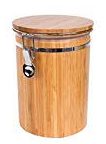 Here one made of bamboo that I easily found online. It only comes in one size (5.5-Inch Diameter x 7.6-Inch H) but it’s intended for bulk storage of coffee, tea, beans, spices, noodles and other dry food. Includes a removable, food grade plastic lining.
Here one made of bamboo that I easily found online. It only comes in one size (5.5-Inch Diameter x 7.6-Inch H) but it’s intended for bulk storage of coffee, tea, beans, spices, noodles and other dry food. Includes a removable, food grade plastic lining.
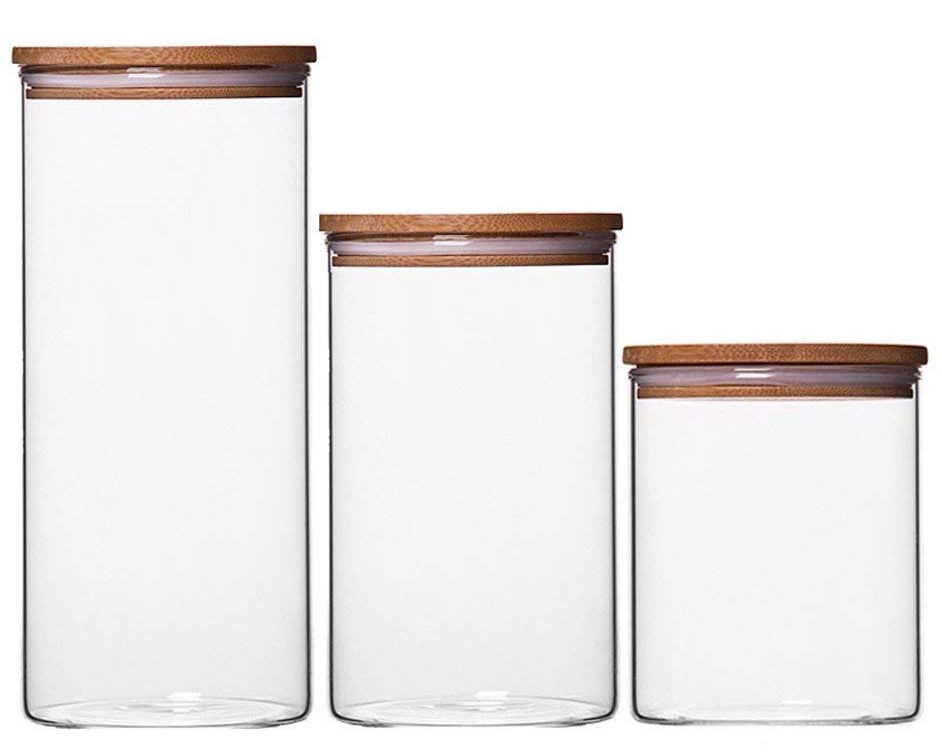 Here’s another one that is glass with a bamboo lid, also online. Looks to be a rather lightweight glass rather than a heavy glass like a jar.
Here’s another one that is glass with a bamboo lid, also online. Looks to be a rather lightweight glass rather than a heavy glass like a jar.
If you want wooden containers, look for bamboo. There are many affordable products now made from this fast-growing wood.
Resources for Electromagnetic Fields (EMFs)

I put together this list of resources for you regarding EMFs because they are a health concern of equal magnitude to toxic chemical exposure and I want you to get information from experts that are more trained and experienced in this field than I am.
It is especially important to know about EMFs because simultaneous exposure to EMFs and toxic chemicals makes the toxic chemicals even more toxic.
…we have hundreds of pollutants in the air we breathe (indoors and outdoors), the water we drink, the food we eat, and the products we touch. Depending on a number of factors, some or most of these potential toxins can enter the bloodstream. Under full body high power flux RFR, these toxins can penetrate the various blood-organ barriers normally impermeable to them. Other types of barriers can be penetrated as well, and the protective compartmentalization of the body can become very dysfunctional. However, to display the full extent of these adverse effects in safety studies, where the RFR is functioning as a promoter/enabler, experiments are required to include these other toxic stimuli in combination with the RFR.
— “Radio Requency Radiation (RFR) as a promoter/Enabler of Adverse Health Effects”
So in addition to creating a home that is free of toxic chemicals, I also encourage you to learn about EMFs and create a home that minimizes EMF exposures as much as possible.
Here are some resources recommended to me by experts. Please let me know if you know of additional resources that should be added to this list.
FORUMS WHERE YOU CAN ASK QUESTIONS:
https://www.electricsense.com/forum/
es-forum.com
WEBSITES:
http://ehtrust.org/
http://emfanalysis.com/
https://www.saferemr.com/2016/04/cell-phone-and-wireless-technology.html
http://www.es-uk.info/
http://www.emfrelief.com/
https://search.mercola.com/results.aspx?q=EMF#stq=EMF
https://maisonsaine.ca/english/
METERS, SHIELDING and OTHER EMF-REDUCING PRODUCTS:
INTERVIEWS I’VE DONE WITH EMF EXPERTS ON TOXIC FREE TALK RADIO:
- ORAM MILLER: EMF Basics: Radio Frequencies
- ELLEN MARKS: You Have a Right To Know About the Dangers of Cell Phones
- Dr. DEVRA LEE DAVIS, M.P.H., Ph.DHow Cell Phones Harm Your Health and How to Stay Safe
- ELLEN MARKS: Berkeley’s Proposed Cell Phone “Right to Know” Ordinance
- RICHARD H. CONRAD, PhD: Living With Electromagnetic Hypersensitivity (EHS)
- OLLE JOHANSSON: Health Effects of Modern Man-Made Electromagnetic Field and Functional Impairment Electrosensitivity
- SUZANNE AND JAMES MCCONNELL: Protect Your Health From EMFs with Clothing That Shields Your Body
- ELLEN MARKS: Cell Phones, Brain Tumors, Labeling and Your Right to Know
- ORAM MILLER: Watch Out for Wi-Fi in Everything
- DR. RYAN MCCAUGHEY AND DR. RONG WANG: How to Protect Your Body From Your Cell Phone
- LAWRENCE J. GUST: How Bau-Biology Can Help Cure Your Sick Home
- ANDRE FAUTEUX: Electrosensitivity and Smart Meters
Independence from Toxic Chemicals

Tomorrow is Independence Day, so I’m taking a holiday from website work this week to celebrate one of my favorite holidays of the year.
Independence Day has a special meaning for me because I am descended from nine Patriots who fought in the Revolutionary War for our freedom. My grandmother and great aunts were members of the Daughters of the American Revolution, so in my family, freedom was something to be honored and celebrated.
Some years ago I wrote a piece about independence that I want to share with you today. Every year I bring this out again, because independence as a concept is so important to me, and particulary independence from toxic chemicals in consumer products.
* * * * *
For me, Independence Day is about more than having a picnic and going to the fireworks (usually we have both picnic and fireworks, but today it looks like we might be rained out). It’s a time to bring my attention again to the concept of independence in my own life, and for the nation in which I live.
I love the Declaration of Independence.
“We hold these truths to be self-evident, that all men are created equal, that they are endowed by their Creator with certain unalienable Rights, that among these are Life, Liberty and the pursuit of Happiness.”
This is the idea that our country was founded on. This is the idea that men and women fought for and gave their lives for, that we should have Life, Liberty, and Happiness.
Life is not just an individual human being alive. Life is the whole of life that supports each individual organism. We have not just the right, but in the words of our forefathers, the unalienable right to be alive as individuals and to have all of Life there to support our individual lives.
Today, the primary attention of our nation is on the industrial economy. How different things would be if our first priority as a nation was to ensure that Life is sustained.
What is independence?
Here is part of a dictionary definition:
- not subject to control by others : self-governing
- not affiliated with a larger controlling unit
- not requiring or relying on something else
- not looking to others for one’s opinions or for guidance in conduct
- not requiring or relying on others (as for care or livelihood)
- showing a desire for freedom
Each entity must have the freedom to be independent, the freedom to govern themselves. to make decisions in their own best interest and in the best interest of all Life. Each individual person, each individual relationship, each individual household, each individual business, each individual community, each individual town, each individual state, each individual nation. We must claim independence for ourselves and grant it to others.
At the same time, we must recognize that we are also interdependent, that our life, liberty and happiness depends on every other living organism having their life, liberty, and happiness. Every one. Birds and trees and fish and butterflies and all other living things in addition to humans.
We are both our independent selves as individuals AND interdependent with all the rest of life.
This is what I remind myself of on Independence Day.
USHISTORY.ORG: The Declaration of Independence Has the full text of the Declaration, along with profiles of the signer, Thomas Jefferson’s account of the writing of the Declaration, and more.
THE CO-INTELLIGENCE INSTITUTE: Interdependence, Interdependence Days and Declarations of Interdependence Discusses independence and interdependence and gives a history of Declarations of Interdependence, along with links to them.
* * * * *
Now I also want to say that independence has everything to do with living toxic free. Manufacturers need freedom to make toxic-free products and we need freedom to choose them.
We CAN be free from the harmful effects of toxic chemcials by exercising our human right to make the choices that lead to that freedom. We can make our own choices to have life, liberty, and happiness.
Happy Independence Day!
Naturepedic Crib Mattress Questions
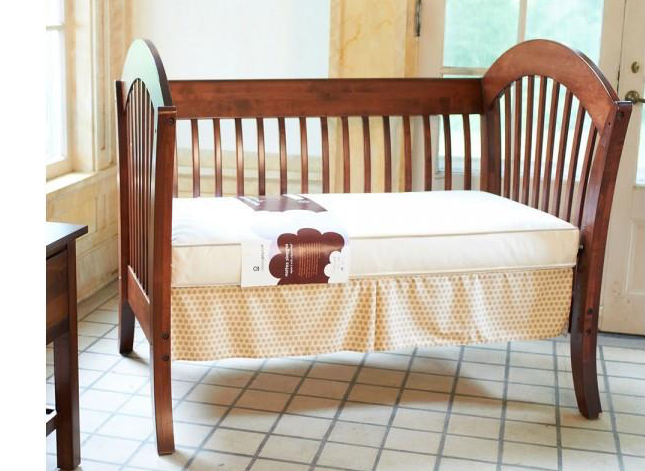
Question from Sophia
Hi Debra,
I’m looking to purchase a Naturepedic crib mattress and want to ask you your opinion.
What is the best nontoxic option between the two following options?
option 1) The ‘polyethylene’ fabric that coats the Organic Cotton 2 in 1 Ultra/Quilted Crib Mattress ( U.S. Patent No. 9,259,096. Other patents pending.)
https://www.naturepedic.com/our-products/baby/baby-crib-mattresses/quilted-series/organic-cotton-2-in-1-ultra-quilted-252-crib-mattress
option 2) the organic waterproof Pads featuring “Drysleep TM” technology which is a “polyurethane waterproof barrier”?
https://www.naturepedic.com/info/drysleep
If you’re able to describe the differences between the two and the relative pros and cons it would be much appreciated.
Also, is there any point to getting an organic natural fibre mattress when you have to put a plastic mattress protector on top to make it waterproof? Why not get a normal mattress and just wrap it in polyethylene ?
Thanks so much!
Debra’s Answer
To answer your toxicity question, both polyethylene and polyurethane film (not polyurethane foam) are about the same in terms of toxic exposure: infinitesimal. If I had to choose one to be less toxic it would be polyethylene because it is a very simple plastic and Naturepedic’s polyethylene is made from non-GMO sugar cane, not petroleum.
A few years ago, Clean Production Action developed The Plastics Scorecard, which evaluates the hazardous effects of various plastics. Polyethylene is one of the “most benign” plastics.
To answer your other question, I asked Naturepedic founder Barry Cik to explain in his own words. And here’s what he said…
Excellent questions. Let’s go through this step-by-step:
A. Why should a crib mattress be waterproof?
Babies have accidents. Whether it’s urine or bigger messes or spilled milk or whatever, if the mattress is not totally waterproof and easy to clean, you’ll be growing a garden filled with microbes, bacteria, etc. This is not a healthy environment for a baby.In former times, you put straw down for the baby to sleep on. And when the straw was no longer usable, you took away the straw and put down new straw. But we don’t live in that world any longer. Today everyone wants a mattress, and the mattress must last for a long time. So there is no choice but to waterproof the mattress if you want to maintain hygienic conditions.
B. What’s the most non-toxic waterproofing for a crib mattress?
Polyethylene wins hands down. According to a review of polymers (plastics) done by Clean Production Action, the conclusion for polyethylene is “For each manufacturing step, no core chemical inputs are chemicals of high concern as defined by GreenScreen Benchmark 1.” (See the attachment)In Naturepedic products, the waterproofing is food-grade polyethylene, which means that it meets the FDA standard for food-contact, and, further, it’s made from sugarcane. As well, the sugarcane is non-GMO.
C. So why is polyurethane used in some products?
There is no polyurethane in any Naturepedic mattresses. All Naturepedic mattresses are waterproofed with polyethylene. But there are some other products that can’t use polyethylene for waterproofing. In particular, waterproof protector pads that are continuously put into the washing machine and dryer fall apart quickly if waterproofed with polyethylene. So, for waterproof protector pads, Naturepedic uses a clean polyurethane, free of many toxic chemicals (and the polyurethane is not even visible on the surface as it’s a very small amount added to the interior of the pad, just enough to make the pad waterproof). This is approved by the Global Organic Textile Standard (GOTS) and meets the GOTS non-toxic standard.D. If polyethylene is so wonderful, why not just get a regular crib mattress and wrap it in polyethylene?
Some people do exactly that. (I noticed that the question is coming from someone in Australia – and wrapping crib mattresses in polyethylene is done quite a bit in New Zealand and perhaps also in Australia, and this does greatly help in preventing babies from coming into contact with a number of poisons.)
That said, it’s one thing to use polyethylene to shield the baby from various poisons. But, if you can get the whole mattress to be free of all these poisons, why put your baby on a “regular” mattress to begin with, even with the polyethylene wrap?
With Naturepedic crib mattresses, you get the entire mattress approved and certified to the GOTS standard. Naturepedic crib mattresses are not made with vinyl (PVC), phthalates, ethyl vinyl acetate (EVA/PEVA), perfluorinated chemicals (PFCs), polyurethane foam, chemical flame barriers or any other flame retardant chemicals, latex (a potential allergen for babies, even if natural/organic), formaldehyde, pesticides, GMOs, glues/adhesives, etc. And then, as well, the waterproofing is food-grade polyethylene made from non-GMO sugarcane.
Note: The question also refers to the 2-in-1 Ultra/Quilted Crib Mattress. This is waterproof on one side and quilted, but not waterproof, on the other side. This model is made for people who generally want the waterproof side for infants, but then are comfortable using a non-waterproof quilted surface for a toddler. This is a personal decision, but we always recommend using a waterproof crib surface, or a waterproof pad placed over a non-waterproof surface, if there is a chance of leakage into the mattress. As stated up front, we do not recommend taking chances when it comes to hygiene.
Finding Upholstery Fabrics Without Fire Retardants
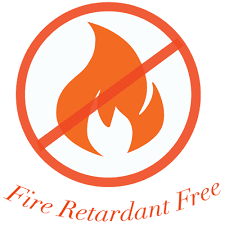
Question from Allen
Hi Debra,
Thanks for dedicating your website to toxic free! I have been looking for a fabric that is not treated with stain finish or fire retardants. It looks like even 100% wool upholstery fabric is treated with FR, at least those from eBay who sell discounted fabric from design houses.
I came across this link and it says, “TB117-2013, implemented in 2015, allows for safer, healthier furniture: Stops furniture fires where they start (on fabrics of upholstered furniture)”. I read this to mean that fabrics are still treated with FR? The only place I’ve found that doesn’t is two sisters, but their fabrics are VERY expensive. Can you confirm?
http://greensciencepolicy.org/wp-content/uploads/2017/03/Buying_FR-free_furniture.pdf
Debra’s Answer
There are two issues here.
First let’s clear up TB117-2013. All it contains is the instructions for doing the flammability test.
Here’s a simple summary of TB117-2013.
The big change is that the flammability test is now done on the COVER instead of the FOAM. So the test can be passed without adding fire retardant to the foam. They still test the cover and foam together, but the burden of flammability is now on the cover, where the smoldering cigarette would fall.
The big benefit is that furniture can now meet the flammability standard without flame retardants. But it does not ban the use of flame retardants.
But here is the problem.
I did a quick search on “wool uphostery fabric” and found, as an example, this link
https://www.insidefabric.com/p-1316741-cheviot-venetian-brown-by-abbeyshea.aspx
Under flame retardants it says “California Technical Bulletin 117 Section E- 2013 NFPA 260 Class 1.”
I’m seeing that on other upholstery sites too, such as this one, which allows you to search by different flammability requirements. https://www.robertallendesign.com/all-products/fabric/shopby/fab_flameretardancy-ufac_class_1.html
I called both retailers. Both said that this means that the fabric will pass the flammability standards listed for the fabric. One said they even have their own lab that tests the flammability of fabrics in-house.
It does NOT mean no flame retardants. In fact, these two retailers did not know how or why the fabrics pass. They could be inherently flame resistant or chemical flame retardants could be added.
In fact, these companies and others have no interest in flame retardants. They both said they would need to call the manufacturer to find out if any given fabric had flame retardants added. It’s not part of their standard database information they keep on fabrics.
Here a short article that summarizes the flame retardant properties of various fabrics.
On the Fabrics page of Debra’s List. I’ve listed websites that sell natural upholstery fabrics and are aware to toxics issues. In addition to Two Sisters EcoTextiles there is also Envirotextitles and Natural Uphosltery. These are the types of places that can help you find the toxic free fabrics you are looking for.
Organic Weave
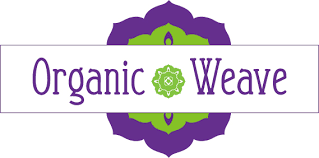 “The World’s Only Certified Organic Rug Company.” Artisan-made wall-to-wall ”broadloom” and area rugs made from certified organic cotton, silk and wool with chemical-free plant-based dyes in a certified organic facility. Also children’s rugs and custom designs. “No odor/offgassing…Organic Weave aims for transparency in everything that we do.” Understands MCS needs. USE coupon code DEBRA5 for a 5% discount.
“The World’s Only Certified Organic Rug Company.” Artisan-made wall-to-wall ”broadloom” and area rugs made from certified organic cotton, silk and wool with chemical-free plant-based dyes in a certified organic facility. Also children’s rugs and custom designs. “No odor/offgassing…Organic Weave aims for transparency in everything that we do.” Understands MCS needs. USE coupon code DEBRA5 for a 5% discount.
EnviroTextiles
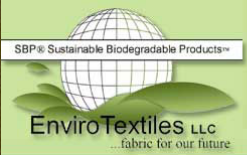 A full range of fabrics made from hemp, plus fabrics made from hemp blended with other natural and organic fibers, including fabrics for clothing and upholstery. Many have no dye. Also hemp yarn, twine, and rope. Basic hemp clothing: t-shirt, hoodie, socks. Towels and tote bags. Samples of fabrics available.
A full range of fabrics made from hemp, plus fabrics made from hemp blended with other natural and organic fibers, including fabrics for clothing and upholstery. Many have no dye. Also hemp yarn, twine, and rope. Basic hemp clothing: t-shirt, hoodie, socks. Towels and tote bags. Samples of fabrics available.
Breathe Easy Cabinetry
 “Cabinetry of the highest quality that is as beautiful on the outside as it is healthy on the inside…constructed of non-toxic, environmentally friendly products, including sustainably harvested wood, formaldehyde-free plywood boxes and non-toxic glues and finishes.” Read materials details here.
“Cabinetry of the highest quality that is as beautiful on the outside as it is healthy on the inside…constructed of non-toxic, environmentally friendly products, including sustainably harvested wood, formaldehyde-free plywood boxes and non-toxic glues and finishes.” Read materials details here.
Love A Bee
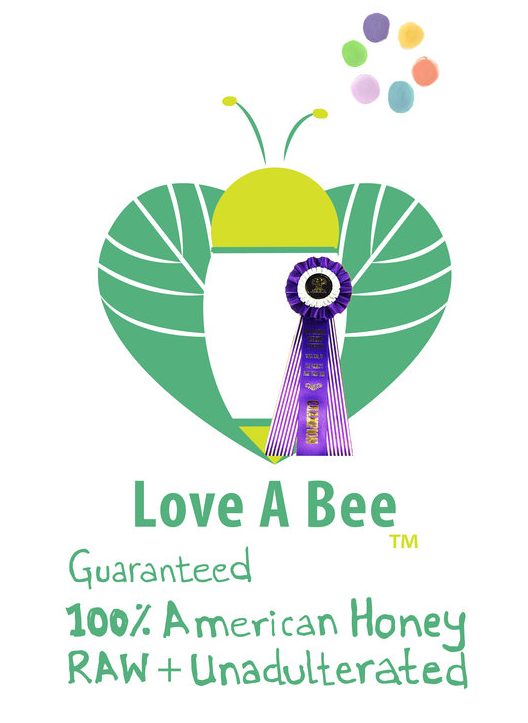 I found this honey at a local farmer’s market and couldn’t resist flavors with names like Bodega Bay Blackberry, Tulare Twist and Wild Mynt. I’ve eaten enough honey to know that every honey has it’s own distinct flavor depending on where the bees are feeding, but these flavors were bold and lively. They literally jumped off the spoon. These honey makers work directly with the beekeepers to develop these concentrated flavors. I bought four jars. “At Love A Bee, our honeys are all varietals that we source from some of the most unique places. For each varietal, we develop a taste profile so when you buy a jar of our honey, you know its color and flavour characteristics (all 100% natural and unadulterated) in advance, and you also know how it links back to its point of origin. We like to think we’re successful at what we do, and our recent (2017) National Heirloom Award proves it.”
I found this honey at a local farmer’s market and couldn’t resist flavors with names like Bodega Bay Blackberry, Tulare Twist and Wild Mynt. I’ve eaten enough honey to know that every honey has it’s own distinct flavor depending on where the bees are feeding, but these flavors were bold and lively. They literally jumped off the spoon. These honey makers work directly with the beekeepers to develop these concentrated flavors. I bought four jars. “At Love A Bee, our honeys are all varietals that we source from some of the most unique places. For each varietal, we develop a taste profile so when you buy a jar of our honey, you know its color and flavour characteristics (all 100% natural and unadulterated) in advance, and you also know how it links back to its point of origin. We like to think we’re successful at what we do, and our recent (2017) National Heirloom Award proves it.”
BGreen Hangers
 Wooden clothes hangers made from fast-growing birch or bamboo. “Our Sustainable Hangers are finished in Low VOC Waterborne finishes and have Powder Coated Hardware. If you live near the ocean, you’ll appreciate the NO-CHROME hook. The Amber colored Bamboo hangers are made without stains by heating the bamboo which caramelizes the fibers. The color goes all the way through the material. “ Sold in packages of 25 or 100.
Wooden clothes hangers made from fast-growing birch or bamboo. “Our Sustainable Hangers are finished in Low VOC Waterborne finishes and have Powder Coated Hardware. If you live near the ocean, you’ll appreciate the NO-CHROME hook. The Amber colored Bamboo hangers are made without stains by heating the bamboo which caramelizes the fibers. The color goes all the way through the material. “ Sold in packages of 25 or 100.
Flick the Tick
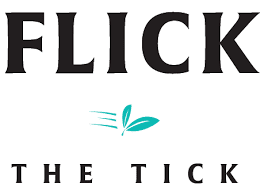 “Flick the Tick is a natural tick repellent made with a custom effective natural oil blend that is DEET-FREE, and smells great! Our special essential oil blend is made to help keep ticks and insects away. Comes in a perfect sized 4oz spray bottle.
“Flick the Tick is a natural tick repellent made with a custom effective natural oil blend that is DEET-FREE, and smells great! Our special essential oil blend is made to help keep ticks and insects away. Comes in a perfect sized 4oz spray bottle.
Active Ingredients: Cedarwood Oil, Citronella Oil, Geranium Oil, Lemongrass Oil & Rosemary Oil
Inert Ingredients: Distilled Water, Vitamin E, & Glycerin”
Mighty No Bitey
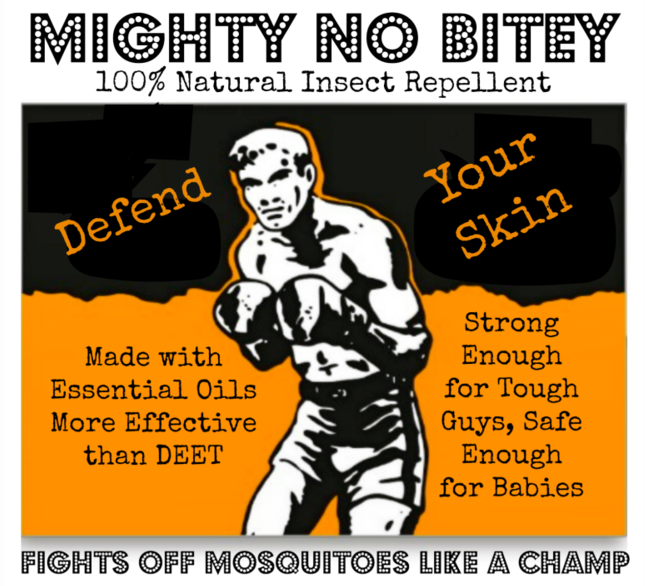 100% organic, non-GMO insect repellent. “The premium natural bug spray that works like a champ!…Reoela mosquitoes, ticks, chiggers and many other biting, stinging insects…Strong enough for tough guys but safe enough for babies…entirely free of all chemicals…contains 7 steam-distilled essential oils and finest non-GMO vegan bases, each of which has added skin benefits and won’t promote sunburn.
100% organic, non-GMO insect repellent. “The premium natural bug spray that works like a champ!…Reoela mosquitoes, ticks, chiggers and many other biting, stinging insects…Strong enough for tough guys but safe enough for babies…entirely free of all chemicals…contains 7 steam-distilled essential oils and finest non-GMO vegan bases, each of which has added skin benefits and won’t promote sunburn.
Murphy’s Naturals
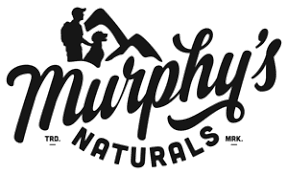 All-natural (but not organic) insect repellent spray made from Oil of Lemon Eucalyptus — “the only plant based ingredient recommended by the Centers for Disease Control and Prevention (CDC). Repels mosquitoes & insects for up to 6 hours: Repels mosquitoes that may transmit Zika virus, West Nile virus, Dengue virus & Chicungunya virus.” Also insect repellent incense sticks and candles.
All-natural (but not organic) insect repellent spray made from Oil of Lemon Eucalyptus — “the only plant based ingredient recommended by the Centers for Disease Control and Prevention (CDC). Repels mosquitoes & insects for up to 6 hours: Repels mosquitoes that may transmit Zika virus, West Nile virus, Dengue virus & Chicungunya virus.” Also insect repellent incense sticks and candles.
A Pretty Comprehensive Overview of Nail Polish—Both Bad and Better
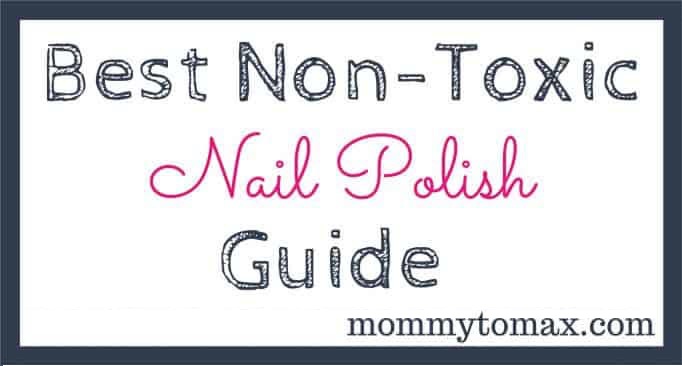
Last week I received an email from a “nontoxic mommy blogger” asking if I would take a look at her upcoming post about nail polish.
I was impressed with her thorough research into the toxic chemicals used in nail polish and her review of the safer brands.
What I didn’t agree with was I felt that she didn’t give enough emphasis to the fact that even the “safe” brands aren’t really safe.
And you know what? She edited her post to include my viewpoint.
I’m really pleased she reached out to me and hope others will too. I’m happy to discuss and review because I want accurate information out in the world.
I’m very happy to see there is a new generation of nontoxic writers coming up who can continue to carry the torch when I’m ready to pass it on.
This is a great piece on nail polish. Well done, Lotus!
Cotton Compression Hose
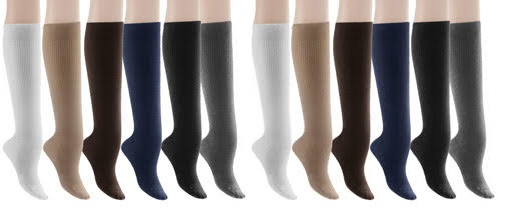
Question from Bonnie Johnson
Hi Debra,
I was just told by my cardiologist that I need to start wearing compression hose to help with a heart issue. Are there any safe ones? Cotton? I have seen some but they are nylon and spandex. Not sure what to do.
Debra’s Answer
There IS cotton compression hose. Here’s one example:
http://www.foryourlegs.com/Sigvaris-151C-Sea-Island-Cotton-15-20-mmHg-Womens-Knee-Highs-p-17688.html
There are also cotton hose liners specifically to wear inside compression hose for comfort.
https://www.brightlifedirect.com/biacare-cotton-liners.asp
They are easy to find online
Just search on “cotton compression hose and websites will come up that sell both.
Can There Be Such A Thing As Nontoxic Nail Polish?
 My guest today is Ginny Cardenas, CEO and founder of Lila Natural Cosmetics, the makers of Scotch Naturals and Hopscotch Kids nail polishes. I met Ginny last month in Baltimore at the Natural Products Expo. We had a rousing discussion about nail polish and how I couldn’t find one I thought was nontoxic enough to recommend. She made some interesting points I want to share with you. Ginny has always valued the importance of safe, yet effective, cosmetics. In 2009, when she took a closer look at the chemical cocktail of ingredients in her daughters’ nail polish—including phthalates, acetates and other toxics—she was shocked. Determined to create a natural and safe alternative to conventional nail polish, she teamed up with a chemist to develop revolutionary water-based lacquers in fun, vibrant colors and a soy-based polish remover. And thus, Hopscotch Kids was born. In 2010, Ginny unveiled Scotch Naturals, the grown-up spin-off of Hopscotch Kids, which caters to an adult demographic with a sophisticated color palette and professional quality results. Passionate about using only the safest and natural ingredients in her products, Cardenas has been at the forefront of natural formulation with innovative technology and bold, fashion-forward colors since the company’s inception. Today, both brands are found in 225 boutiques across the US and internationally.
My guest today is Ginny Cardenas, CEO and founder of Lila Natural Cosmetics, the makers of Scotch Naturals and Hopscotch Kids nail polishes. I met Ginny last month in Baltimore at the Natural Products Expo. We had a rousing discussion about nail polish and how I couldn’t find one I thought was nontoxic enough to recommend. She made some interesting points I want to share with you. Ginny has always valued the importance of safe, yet effective, cosmetics. In 2009, when she took a closer look at the chemical cocktail of ingredients in her daughters’ nail polish—including phthalates, acetates and other toxics—she was shocked. Determined to create a natural and safe alternative to conventional nail polish, she teamed up with a chemist to develop revolutionary water-based lacquers in fun, vibrant colors and a soy-based polish remover. And thus, Hopscotch Kids was born. In 2010, Ginny unveiled Scotch Naturals, the grown-up spin-off of Hopscotch Kids, which caters to an adult demographic with a sophisticated color palette and professional quality results. Passionate about using only the safest and natural ingredients in her products, Cardenas has been at the forefront of natural formulation with innovative technology and bold, fashion-forward colors since the company’s inception. Today, both brands are found in 225 boutiques across the US and internationally. www.scotchnaturals.com (no longer in business) and www.hopscotchkids.com (no longer in business).
TOXIC FREE TALK RADIO
Can There Be Such a Thing as Nontoxic Nail Polish?
Host: Debra Lynn Dadd
Guest: Ginny Cardenas
Date of Broadcast: October 24, 2013
DEBRA: Hi, I’m Debra Lynn Dadd. This is Toxic Free Talk Radio where we talk about how to thrive in a toxic world because there are so many toxic chemicals out there in everything practically that we use, all kinds of consumer products, the air we breathe, just walking down the street, driving a car, lying in bed. There are toxic chemicals all over the place.
But they’re not everywhere. And what this show is about is identifying what’s toxic and what’s not and where you can find safe alternatives and what are less toxic practices, things that we can do differently.
And I’m interviewing the people who are actually [inaudible 00:01:37] in the world and who are promoting less toxic ideas.
So if you continue to listen to this show day after day, or go to ToxicFreeTalkRadio.com and listen to our archives, you’ll see how many people there are out in the world and all the wonderful things that they’re doing and things that you can do too to have your life being more toxic free, to remove toxic chemicals from your life, from your home, from your body, from your workplace.
It can be done. I’ve been doing it for over 30 years living without toxic chemicals and you can too.
Today is October 24, 2013. I’m here in Clearwater, Florida. It’s actually overcast today. And it’s cold. It’s 70°, which is cold for here because we have just spent months having the temperature day and night between 80° and 90°. I’m actually sitting here with a [inaudible 00:02:33] on because our bodies become accustomed to the heat. When it gets down to 70°, it starts feeling cold.
So autumn is upon us here in the southern end of the United States, so I’m very glad. I’m tired of air conditioning.
I get to open my windows now. We even had a little rain yesterday. Very good.
So today, we’re going to talk about nail polish. My guest is Ginny Cardenas. I hope I am saying that right. She’s a CEO and founder of Lila Natural Cosmetics.
I met her at the Natural Products Expo in Baltimore a few weeks ago. We started talking about her line of nail polishes, non-toxic nail polish, which she has a line for kids and a line for adults.
So we debated whether or not how non-toxic her nail polish was. It was so interesting. We covered such a good variety of things that I wanted her to be on the show so that you could hear what she has to say about her product.
Now, I would just say, first let me tell you that I don’t feel that it’s non-toxic enough for me, and I’ll tell you why later. I personally don’t wear nail polish. But this falls into the category for me of, if you’re old enough, you may remember there used to be a commercial on TV for a certain brand of cigarette (which brand escapes me at the moment), but the line went, if you choose to smoke, please smoke this brand. And it had a better filter system or something. There was something [inaudible 00:04:28] about the cigarette.
So I want to say is that my number one recommendation would be no nail polish. And I haven’t worn nail polish for years. My great aunt told me not to wear nail polish and I followed her advice. She said that your nails need to breathe. And nail polish stops that breathing process.
However, I know that some of you want to wear nail polish. And so, as a consumer advocate, what I’m doing is bringing you what I consider to be the best possible nail polish that you could use if you choose to use it. But I still want to say that the best thing to do – what I do is I just get a little buffer from the drugstore and I buff my nails. They get all shiny and they look beautiful.
But I grant that there are people in the world who want to use nail polish. And if you do, Ginny is the one to talk with why it might be okay to do that.
So Ginny, hi. Thanks for being with me after that long introduction.
GINNY CARDENAS: Thank you, Debra. Excuse me. I’m here in the southern half too. We’re in Phoenix, Arizona. Yes, we’re starting to get that cooldown as well, which is beautiful. The windows are open. I’m loving every minute of it. I feel with you.
DEBRA: So Ginny, tell us how you got started. Why did you decide to make less toxic nail polish?
GINNY CARDENAS: I come from a family that was naturally-leaning already. My dad, back in the 70s, when I was born, we lived in this small town, Kingman, Arizona, this tiny little town. And I don’t know how he did this, but he knew so much about all the different toxic chemicals that were out there as well as the type of food that we were feeding ourselves. So, he instilled that in me. I was raised already leaning that direction, already questioning what was in the products I was using.
So when I had my children, I just got a little bit more, probably hardcore, as most pregnant women do, because it’s not about you anymore, it’s about your children. This being is in your body and you’re trying to nourish it the best that you possibly can. And so I never did my nails.
And quite honestly, I wasn’t a huge nail polish person either before that. Every once in a while, I do get my toes done for the summer months, but not really, not much.
And as we were growing up, we didn’t have nail polish salons on every corner like right now. So it just wasn’t done. And I actually never bought it because I would get headaches from the polishes. So I just never had it around. And it wasn’t until the last 10 years that they’re starting to pop up everywhere and everybody’s doing their nails. And it’s cheap enough for us to go.
For me, it was just getting pampered. But again, it was rare that I do it. And it’s only during the summer months.
Well, my girls were growing up. I have a boy who is 15 and then three girls, 12, 10 and 5. I just had my five-year-old. The other ones were like six and eight. They were starting to go to those, what they call, girly girl parties where they take the kids to a party, and then they up do, up do, do their hair and they apply make-up and do their nails. And then they put them in this outfit. And then they strut the runway. These were these birthday parties. It’s not the party that I would chose for my kids to go do, but they were birthday parties.
And my philosophy is at home, we do what we do. But these are treats. And that’s how I thought. I wasn’t happy with the whole make-up aspect of it. But okay, it’s a treat. It’s not something that they do every weekend or every day.
So I went to one of these parties with them. And while they were getting all dolled up, I was walking the internal part, just looking at the products that they were using. And I was blown away.
Now, this was the same exact time that all those recalls were happening in China, with all the toys. And so, it was like everything converged at once.
And so as I was looking at it, a) the products were already expired, b) they were all from China, and c) they were all chemicals. And so the kids would come home, and they get those goodie bags full of dollar junk stuff, which is not something that I go out and buy anyway, so I prefer not them to have it.
And so I’m like, “Girls, I know you want to play. I totally understand. Would you use my products?”
And that had worked for a while. But then all of a sudden, out of the mouth of babes, as it always happens, “But Mommy, it’s not sparkly pink. It’s not sparkly purple.” That’s what they were being drawn to.
And so that forced me to get online and try and find somebody who was doing this and nobody was.
DEBRA: We’ll hear more about what you did after we come back from the break.
I’m Debra Lynn Dadd. This is Toxic Free Talk Radio. And my guest today is Ginny Cardenas. She’s the CEO and founder of Lila Natural Cosmetics. She has two lines of non-toxic nail polish. You can see them at ScotchNaturals.com and HopScotchKids.com.
We’ll hear more about her story and her products when we come back.
DEBRA: You’re listening to Toxic Free Talk Radio. I’m Debra Lynn Dadd. We have a little technical glitch there, but we’re here now. Hi, Ginny. Are you still there?
GINNY CARDENAS: I’m here!
DEBRA: Good. Okay, so then what happened after your daughter asked for sparkling purple? That would be my choice.
GINNY CARDENAS: Exactly! Well, one of them loves purple. The other one loves pink. So you could imagine what our house looks like.
So I got online and said, “You know what? I don’t have that for you, but I will find it for you.” So I got online to look for it and nobody was doing play make-up for kids that was natural. And I was like, “Hmmm…”
And I come from the marketing world, pre-kids. I had been a stay-at-home this whole time. I went to my husband and said, “You know, honey, I think there’s something here.”
So, this started off as trying to find something that they would be drawn to because all the marketing for kids is all that sparkly pink and sparkly purple for the girls. But I didn’t want the products that were out there.
And so it started me creating those products in that packaging. And that’s where Hopscotch Kids comes across.
But when I started to dig further, I found more information about nail polish.
I was always that kid that always stood up for wrong. Sometimes, it gets you in trouble, right? But that’s just always my personality. But I have also found that sometimes when you stand up, you get knocked down really hard. But most of the time, what speaks more volume is if you can’t beat them, you join them.
And so when I saw that there was a technology out there that could revolutionize nail polish and all those women that are being exposed and children that are being exposed to all these nasty chemicals that are in solvent-based polishers, all those things collided together. I was like, “It’s nail polish. It’s nail polish that I need to focus on first.”
Honestly, it’s easy. It’s easy to do the natural make-ups, but it’s not for nail polish.
DEBRA: Nail polish has been one of those things that people have been asking me for for years. And I keep saying, “I can’t find one.”
So before you tell us about the technology of your product and we discuss your product, tell our listeners about some of the toxic chemicals that are in standard nail polish that you didn’t want to use and didn’t want your daughters to use and you don’t want others to use and what their health effects are.
GINNY CARDENAS: Sure. Let me just tell you what makes up the solvent-based polish.
Really what it is, it’s a coating. So it’s a paint just like what you buy off of Home Depot. It’s just created for the nails because basically…
DEBRA: it’s actually made of many of the same ingredients.
GINNY CARDENAS: It is, it really is. And so what you’re finding is they’re solvent-based. And so they use nitrocellulose, which is the stuff that’s used in the nitro cotton. So it’s completely highly flammable. That’s what they used to blow up buildings. So they use that, but it’s a really, really, hard, hard film. And with nails, it needs to bend. So how they dissolve that nitrocellulose is using those ethyl acetates and butyl acetates.
Now, those by themselves are bad. You’re breathing in these things and they’re irritants to your lungs. And so that smell that you’re smelling when it’s drying, it is from the ethyl acetates and butyl acetates that you’re breathing right into your lungs.
And then, to get that flexibility (so now you’ve dissolved it, but you need this nitrocellulose, this film to have some bend, some flexibility), they use phthalates. You probably heard dibutyle phthalate is the big one that they’re using. But they’ve been asked to replace that. Well, they have replaced it, but they replaced it with just another bad phthalate in it.
DEBRA: That’s what they do.
GINNY CARDENAS: And of course, nobody is talking about that yet, but hopefully, soon. But what they replaced it with is another phthalate, which is phthalic anhydride, trimellitic anhydride, glycopolymer, which is a mouthful.
But what it is, is it too, is a really, really [inaudible 00:20:57] I think actually could possibly be worse.
It’s probably not as worse as DBP, dibutyl phthalate, but it’s got a different thing. And what it does is it has an adverse health effect. It’s has a direct irritant effect on the mucosal surfaces in all the exposed humans as well as it has ability to cause immunologic sensitization in a small portion of humans. And you don’t know if you’re that one.
And so you can end up with asthma rhinitis, late respiratory systematic syndrome, a lot of different immunologic syndrome. It’s not a good product.
DEBRA: We’ll find out more when we come back. You’re listening to Toxic Free Talk Radio. I’m Debra Lynn Dadd and we’re talking about nail polish. We’ll be right back.
DEBRA: You’re listening to Toxic Free Talk Radio. I’m Debra Lynn Dadd. We’re talking about nail polish today with Ginny Cardenas. She’s the CEO and founder of Lila Natural Cosmetics and she makes two brands of non-toxic nail polish called Scotch Naturals and Hopscotch Kids. And those are at ScotchNaturals.com and HopScotchKids.com.
So Ginny, before the break, you were telling us about toxic ingredients in standard nail polish. Do you want to continue on with that?
GINNY CARDENAS: Sure, sure. Just that ingredient that they had replaced, it also has some glycol ethers that are in it, and they’ve been shown to reduce sperm count and increase the rate of miscarriage in both animals and in humans at very low concentration.
And that’s the whole thing about that trimellitic anhydride [inaudible 00:27:37] trimellitic anhydride. It’s the smallest doses that end up being the most dangerous. And it’s scary. It’s scary to think that there’s these women who work in these environments.
I mean, if you’re doing your nails at home, open the doors. At least get some air flow going in there. I can never do it, but if that’s what you’re going to do. But think of those women that over the last 10 years, we’ve now [inaudible 00:28:10] of nail salons on every single corner. Most of the people that are working there have just arrived from Vietnam or Korea. They don’t speak our language, but they need to get jobs.
And so those are the jobs that they’re placed into. They, in the nail salons, if the products say for professional use, there is no information on that bottle of what is in that bottle. These women don’t even know what they’re being exposed to.
DEBRA: And also, the customers don’t know what they’re being exposed to either.
GINNY CARDENAS: They don’t.
DEBRA: And I know when I go to the mall – and I do go to the mall. The mall is a great place. [Inaudible 00:28:56] that the mall is a great place to go walking where it’s air conditioned.
GINNY CARDENAS: Right! We have [inaudible 00:29:01] here too.
DEBRA: When I walk at the mall, I pass by the nail salon and you can smell it 30 feet away. And everybody is just walking around. I really think that there ought to be a sign up there that says toxic zone because people walking anywhere near this nail salon are getting exposed to all of these very, very toxic solvents.
GINNY CARDENAS: Completely! And then of course, all those ingredients that are being released, those phthalates that are being released into the air, the ethyl esters and all of it, all of it is just sad. It’s sad that these women are exposed most of the time, six days a week, over 12 hours a day.
And so, what you’re finding in San Francisco, they are the first ones to really – in the Asian community there, there’s an uprising to make it a safer place because they’re suggested to put in these air filtration systems to help get some of that stuff out. But as you know, when you walk past some of these, you know that they’re not using those. It’s not even mandatory to have them in there.
And so they were finding that a lot of these women were having miscarriages, severe migraines after working.
The males that were being born had smaller testicles, which meant that they also had a smaller sperm count in them.
We haven’t seen it like this because there wasn’t this 10 years ago. But now that they are popping everywhere, we’re starting to see how bad this product really is. California is going to be the leader in this industry because what happens is – so visualize the LA skyline. What do you see? Smog.
DEBRA: Smog, yes.
GINNY CARDENAS: Smog is from volatile organic compounds. They call them VOCs. Those are solvents. And so the ETA there was looking at this going, “We can’t remove this. Once it’s up in the air, you can’t remove it.
There’s no way to clean that up. So we either remove what’s causing this issue because it’s not getting better.
It’s only going to get worse.”
And so they went, and the biggest industry that was out there that was causing this issue was the coatings industry. It was the people that were painting the houses, the collision repair centers that were spray painting the cars. Those were the biggest ones.
And so they went after the coatings industry. And the coatings industry kept saying, “No, it’s possible. It’s not possible. We can’t do it. We can’t do it.”
And it was PPG, Pittsburgh Paints, that came up with a water-based technology that removed VOCs, and they went and they said, “Look, we’ve done it.” And so the California government was, “Well, you want to do business in California, you make the move to water-base. It is possible. Somebody has done it.” And then so now, you walk in to Home Depot, what are you buying? You’re buying water-based paint.
DEBRA: Zero VOC paint.
GINNY CARDENAS: Right!
DEBRA: I remember when all of this was happening…
GINNY CARDENAS: Now, who else in the coatings industry? It’s nail polish. So why aren’t they doing it?
DEBRA: Well, because nail polish, even though you and I can look at this and say, “It’s coating and it’s made from exactly the same chemicals as the paint that goes on your walls,” [inaudible 00:33:12] industry is considered part of the beauty industry. And so it has different regulations and things. So they don’t even think of it. But it absolutely should be required that it’s zero VOC nail polish.
And that’s something you have accomplished.
GINNY CARDENAS: Yes. And that’s the first step. I know that you had – and I totally understand and agree. Not non-toxic enough. I agree. I want to make this as safe as we possibly can get it. But as you know, the raw materials that we can work with have not been created yet. There isn’t suppliers out there creating those. And so
I’m doing the best with what we have.
DEBRA: I want to really acknowledge that. [Inaudible 00:34:10] to have you on, Ginny. From our conversation in Baltimore, I could see that that was what you were doing. If there was a better ingredient, you would have used it.
I just want to interrupt for a minute and insert this. And so this is where we get into making choices about products. So the first thing is that most people who want to be non-toxic want to be 100% non-toxic. And that’s my goal, zero toxics. But in our world today, that doesn’t exist because as a lot of you know (as you probably know, Ginny), there have been toxics in every living thing in the world since 1944. They knew in 1944 that there were toxic chemicals in the Arctic Circle, in polar bears and things like that. They knew that in 1944, but didn’t tell anybody. It’s our entire lifetime and longer.
So in order to get zero toxic chemicals, what we would have to do is stop all toxic chemicals and remove all the toxic chemicals from everybody’s body. And I think that actually is possible to be done.
But in the meanwhile, getting from here to there, the process is to reduce the amount of toxic chemicals you can as things become available.
When I started 30 years ago, there was hardly any organic food. But now, I can eat a lot more organic food than I did then. I also know that there are companies, multinational corporations right now, are looking at how they can move their toxic products to be a step less toxic.
And so as much as I don’t think that your product is non-toxic enough for me, I do appreciate how far you’ve taken it.
GINNY CARDENAS: Thank you, Debra. And I completely understand. I’m loving the fact that as a small company, we have the opportunity to be nimble enough to find the forward-thinking people, the chemists out there who are going to want to work with us.
And that’s what you’re finding in all these larger corporations, they don’t innovate. They purchase. They buy.
They gobble up the ones that are coming on. And where is the growth right now? The growth is in the natural space. So that’s why you’re seeing Clorox buying Burt’s Bees. They know.
That’s also one of the biggest movers right now, which is great. I love going to my grocery store now. I don’t have to always go to Whole Foods (although I love Whole Foods or espouse or any of those). I can actually go to my neighborhood Safeway and they have a great selection of all those organic foods. Now, in the personal care aisle, I’m starting to see the natural products that I’m reaching for.
DEBRA: Yes, me too.
GINNY CARDENAS: And so, we are on that. It’s so exciting. It’s so exciting to be where we’re at because –
DEBRA: I think this is the most exciting time. I’ve been doing this for 30 years and this is the most exciting time for me because when I started 30 years ago, I was just grasping for any one or two products I could find. And now, there are so many non-toxic products and so many people are talking about and here are so many businesses like yours that at least move it to be as non-toxic as we can possibly can.
And then we find new understanding. People, the chemical manufacturers are making what are called greener chemicals. There is new technology. There seems to be a lot of agreement (except among certain people) that we should all be moving in this direction because it affects our health, it affects the environment, and that we each need to make the choice as consumers. But we’re getting so much better choices than we’ve ever had.
GINNY CARDENAS: We are. And you know who’s behind some of this too? It’s California. You know what?
They own 10% of everything that gets sold in America. And so, if they make it happen, everybody has to follow suit because that’s where 10% of the consumers are.
And so they’re the ones that forced that coatings industry to change. They’re going to be the ones that are going to force this to change. But also, their Prop 65 is looking at a lot of different chemicals and making them remove them from the shelves completely. It’s fabulous. Love it!
DEBRA: I’m from California.
GINNY CARDENAS: I didn’t know that.
DEBRA: I was born and raised in California and I’ve only lived in Florida for 12 years. But I was there when they stopped allowing the VOCs in the paints. And there are still some states in America that still allow those old paints that were banned in California how many years ago now, 20 years ago or something like that. So yes, I grew up in the San Francisco Bay Area, a very radical place.
GINNY CARDENAS: That’s where my family is from, San Jose, Los Cabos, Berkeley. My mom was in Berkeley in the 60s.
DEBRA: I was in Berkeley in the 60s.
GINNY CARDENAS: Well then you might have known my mother.
DEBRA: Well, I wasn’t very old, but I lived nearby.
Anyway, tell us now about your product and about your new technology and what it doesn’t have in it and how safe it is.
GINNY CARDENAS: Basically, what we’ve done is we’ve completely – we don’t even look at that technology.
I’ve gone and looked at what the automotive industry has done.
Now, the problem [inaudible 00:40:35] is you know that there are still some toxic chemicals that are in water-based. That’s why you want to use a water-based natural paint when you’re painting your house because they are replacing some of those chemicals, which is basically what we’ve done.
So, our technology is 60% to 70% water compared to 60% to 70% solvents. And then our film former, instead of nitrocellulose, we used an acrylic polymer. It’s actually acrylic copolymer because there are so many different polymers that are out there or acrylic polymers that are out there. You need that balance with, again, nail polish, because you need that flexibility.
So we have two or three different polymers. One of them has a hardness to it. One of them is a little bit softer.
One of them is [inaudible 00:41:26] just so we can get some of that flexibility. But we also still need that plasticizer. And that’s what those pthalates are, they’re the plasticizers to get the flexibility. Our plasticizer is a soy resin. So we use soy oil instead of phthalates. And that’s what helps give that flexibility.
And so our polishes dry superfast to the touch. But they still need that same cure time that regular nail polishes do. But what they’re doing is, how it’s drying is the water is just evaporating off of your nails. So you said something about letting your nails breathe. In this water-based technology, your nails do breathe.
DEBRA: That is very good to hear because my great aunt had a drugstore. And what she told me when I was a teenager and I was putting nail polish on my nails all the time is that she warned me, she said that she saw everyday women coming into the drugstore asking for something that they could put on their nails because they were cracked and they were bleeding. She would tell them to just stop wearing nail polish and their nails would heal.
That’s from toxic chemicals. But it’s also because it’s putting on a coating so that they can’t breathe. And so it’s completely destroying the nature of the nail. So it sounds like yours are safer in that regard.
GINNY CARDENAS: Yes. And really, what they’re also doing too is the solvents that are in there are drying out their nails.
When you go and get your nails done, their whole thing is to dry out your nail bed. So they’re actually removing all of your essential oils that are in your nails just so their polish can stay on your nails. And then when they take them off, they’re using an acetone or an acetate, which is just as bad as acetone ([inaudible 00:43:30] non-acetone). It’s drying again even worse, drying out more.
It’s this cycle of your poor nails are never being hydrated, they’re being sealed off and they’re not breathing either. And that’s where you start seeing all those infections happening because your nails are wanting to breathe as well.
And so, our polishes actually love a healthy nail. Our polishes actually work better on a healthy nail. So we’re all about driving oils into your nails and making sure that you’re hydrating your nails and making sure that – even our polish remover is a soy oil.
And so not only are you removing the oil, removing the nail polish off of your nail, but we’re also hydrating it at the same time. So ours is completely different.
I grew up with nails that peeled. I just thought that was normal until I started working with my technology. And then all of a sudden, one day, I looked down and I’m like, “My nails don’t peel.” Well, our polishes, in essence, I can’t say they’re healing the nails, but they’re not damaging the nails.
DEBRA: I can see that. I mean, I’m looking at your website now and it says that they’re solvent-free, phthalate-free, paraben-free, cruelty-free, fragrance-free, toxin-free and biodegradable.
Let me ask you a quick question. You said earlier about that there were all these different kinds of acrylic polymers. Can you elaborate on that a little bit because I look at it and it says acrylic polymer on the label. I’m looking at your ingredients list and it says acrylic polymer.
And then, earlier this week, we had toxicologist, Dr. Steven Gilbert on the show. And he has a book [inaudible 00:45:39] acrylic. And he has health effects of acrylic. And it’s basically a plastic.
But when you said that there are different types of acrylic, maybe we should be considering the health effects of different types of acrylic.
GINNY CARDENAS: What I meant by that is they all do something different. So some of them are harder, some of them are softer, some of them – they give different attributes that you’re looking for.
So I can’t just take any acrylic polymer. They don’t all work. And so that’s one of the things that the chemists (or those that are working in that), they’ll tell you exactly which acrylic polymer because that’s the secret to our sauce. That’s why it’s making it work, it’s because of the specific acrylic polymers that we’re using.
Now, what I love about what’s coming up, which is exciting, it’s just not in my industry yet, in the personal care industry – the industrial industry is where all of our products really come from first. We just use them and we make sure that they’re safe for cosmetic use. We go through the process of showing that they are safe for cosmetics. So all products are industrial grade. That’s where they start.
So in the industrial space, for the natural water-based coatings that are out there, for the houses, people are actually starting to find plant-based coatings that we can use, film formers.
DEBRA: And I would love that. I would totally love that.
GINNY CARDENAS: I would too.
DEBRA: If you have plant-based nail polish, it would be [inaudible 00:47:31]
GINNY CARDENAS: I’m trying. I’m telling you, Debra, I’ve been trying.
DEBRA: But I know that there are plant-based plastics now good for other uses like trash bags and things like that. And so I think that probably, a bio-based polymer that you could use for nail polish is very on the horizon.
GINNY CARDENAS: We are. We are trying to locate it. So if there’s anybody out there that’s actually working in that space and wants to send us some stuff, we’d be so thankful.
But is it going to work within our system too? People will only change, especially in the America – not so in North America, not so much. In Canada, in Europe, we have such a strong presence over there because they’re so much forward thinking. When they think about nail polish or personal care products, they’re about safety first.
The west, here, thinks about the nail art design and how long it stays on. That’s why we have gels now that stay on your nails for two weeks. Yet you’re sticking your hand in something that’s going to cause skin cancer on your fingers.
I don’t –
DEBRA: We need to change our [inaudible 00:48:54], we really do. Ginny, I need to interrupt you because we have less than a minute and I don’t want to cut you off at mid-sentence. Thank you so much for being with me.
I’m sure that if anybody can make a plant-based nail polish, it’s going to be you. And I’m very happy that I had you on the show today so that we could hear about all these other things.
I just really appreciate what you’re doing even though at this point, I can’t yet say that I can recommend your products.
GINNY CARDENAS: I totally understand, Debra. Thank you for everything that you do as a pioneer.
DEBRA: Thank you. And if anybody wants to wear nail polish, the best one you can choose at this point in time is Ginny’s. So go to ScotchNaturals.com and HopscotchKids.com.
You’re listening to Toxic Free Talk Radio. I’m Debra Lynn Dadd and have a great toxic free day.
Toxics Issues Move Forward and Backward in the World
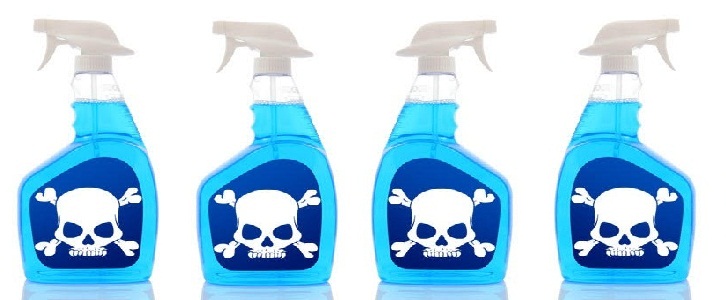
In this morning’s email I received two announcements. One showing progress on the toxics front and then other…what’s the correct word for “opposite of progress”?
Bad news first. The New York Times reported that the federal government is scaling back the way health and safety risks associated with the most dangerous chemicals on the market will be determined.
Under The Frank R, Lautenberg Chemical Safety for the 21st Century Act (signed into law in 2016), the E.P.A. was required for the first time to evaluate hundreds of potentially toxic chemicals and determine if they should face new restrictions, or even be removed from the market. The chemicals include many in everyday use, such as dry cleaning solvents, paint strippers, and substances used in health and beauty products like shampoos and cosmetics.”
“But as it moves forward reviewing the first batch of 10 chemicals the E.P.A. has in most cases decided to from its calculations any potential exposure caused by the substances’ presence in the air, the ground or water…Instead, the agency will focus on possible harm caused by direct contact with a chemical in the workplace or elsewhere.”
On the brighter side. the State of New York now has a Household Cleansing Product Information Disclosure Program, that requires manufacturers of cleaning products to post their product ingredients on Internet web sites by July 2019, with further details to be added by July 2020 and January 2023. Exceptions are allowed for trade secrets.
California already has a similar program SB-258 Cleaning Product Right to Know Act of 2017. This law requires known hazardous chemicals in home and commercial cleaning products to be listed on labels and online.
Manufacturers have until 2020 to disclose ingredients online and until 2021 to list them on labels.
While all of this study of chemicals and disclosure of toxic ingredients is good to do, in the meanwhile each of us can take action to choose products that are not made with these chemicals right now, today. The toxic-free products exist, we just need to choose them.
THE NEW YORK TIMES: The Chemical Industry Scores a Big Win at the EPA
TIMESUNION: Home cleaning products must reveal chemicals, potential health impacts to state
Freenote Cloth
 A classic menswear collection manufactured exclusively in the United States….We source the finest materials and demand the highest level of craftsmanship. Our inspiration comes from real American culture, its timeless style icons, and personal experiences growing up throughout the US of A. Every input of a Freenote garment is considered. We believe the hardware used on a pair of denim is of equal importance to the fabric itself. The sourcing experience is planned and detailed, searching for what we consider to be the best of the best. Our goal is to create quality clothing that is built to last. We want you to be proud of the clothes you wear.” All that said, check material descriptions as there are some blends as well as 100% cotton, Most notable to me is the denim, which is “Raw denim is denim in its purest form – unwashed, untreated and untouched. It is generally more rigid with a crisp look, clean design and durable structure. Raw denim allows the consumer to break in the denim with custom wear patterns and unique fade results.” Check out the “blueprint” item on the menu for information on materials.
A classic menswear collection manufactured exclusively in the United States….We source the finest materials and demand the highest level of craftsmanship. Our inspiration comes from real American culture, its timeless style icons, and personal experiences growing up throughout the US of A. Every input of a Freenote garment is considered. We believe the hardware used on a pair of denim is of equal importance to the fabric itself. The sourcing experience is planned and detailed, searching for what we consider to be the best of the best. Our goal is to create quality clothing that is built to last. We want you to be proud of the clothes you wear.” All that said, check material descriptions as there are some blends as well as 100% cotton, Most notable to me is the denim, which is “Raw denim is denim in its purest form – unwashed, untreated and untouched. It is generally more rigid with a crisp look, clean design and durable structure. Raw denim allows the consumer to break in the denim with custom wear patterns and unique fade results.” Check out the “blueprint” item on the menu for information on materials.
Alluvian
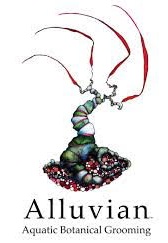 “Aquatic Botanical Grooming—an organic collection of handmade, seaweed infused products that will change the way you groom.” Bar soap, shaving soap, hair soap, alluvial clay, aftershave serum, and more. “Alluvian sources only certified organic and sustainably harvest ingredients throughout our entire product line. Our seaweed varieties are wild harvested off the pristine coast of Maine. Every product is formulated with plant-based oils responsibly sourced from around the world. Like a fine wine, our aromatics are chosen by specific region and distiller to offer our clients depth and a unique sensory experience. Some suppliers are listed. Plastic-free.
“Aquatic Botanical Grooming—an organic collection of handmade, seaweed infused products that will change the way you groom.” Bar soap, shaving soap, hair soap, alluvial clay, aftershave serum, and more. “Alluvian sources only certified organic and sustainably harvest ingredients throughout our entire product line. Our seaweed varieties are wild harvested off the pristine coast of Maine. Every product is formulated with plant-based oils responsibly sourced from around the world. Like a fine wine, our aromatics are chosen by specific region and distiller to offer our clients depth and a unique sensory experience. Some suppliers are listed. Plastic-free.
The Hobo Company
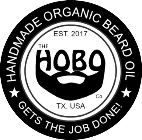 “Exclusive Handmade Organic Beard Oil crafted from the finest premium and organic ingredients.
“Exclusive Handmade Organic Beard Oil crafted from the finest premium and organic ingredients.
The HOBO Company Beard Oil is absolute top quality, Our Ingredients are Safe, natural, nothing hidden and with no nut oils. Our hand crafted Beard Oil consist of Premium Ingredient like Fractionated Coconut Oil (MCT), Golden Jojoba Oil, Hemp Seed Oil, Tea Tree Oil, Orange Bitter Oil and Peppermint Supreme Oils and are Made in the USA!”
Arthur for Men
 “Man sized organic lip balm…More than 3x the size of the average lip balm. Now instead of a bunch of little lip balms scattered everywhere, you can have one super effective, easy to keep track of jumbo sized lip balm.” Manly flavors too…orange, mint, and coffee. Made from certified organic ingredients.
“Man sized organic lip balm…More than 3x the size of the average lip balm. Now instead of a bunch of little lip balms scattered everywhere, you can have one super effective, easy to keep track of jumbo sized lip balm.” Manly flavors too…orange, mint, and coffee. Made from certified organic ingredients.
Kent & Bond
 Small batch organic grooming products for men. “Everything is made with tradition and certified organic ingredients.” Soaps, body wash, beard oil, body salve, and deodorant, all with manly scents from certified organic essential oils.
Small batch organic grooming products for men. “Everything is made with tradition and certified organic ingredients.” Soaps, body wash, beard oil, body salve, and deodorant, all with manly scents from certified organic essential oils.
Wander Wet Bags
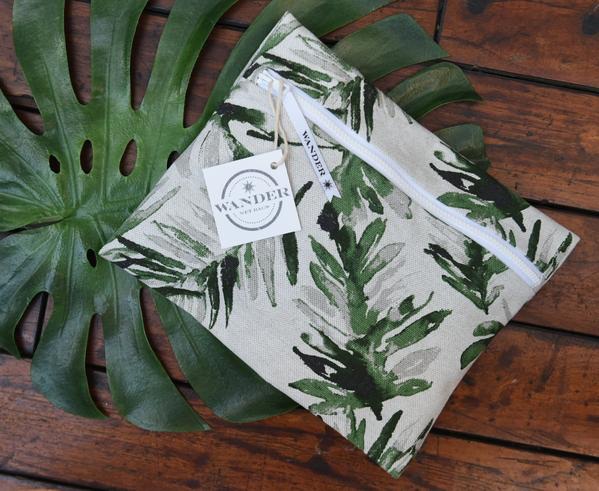 “Super cute, powerfully water-resistant, eco-friendly, wet swimsuit bags.” While these aren’t 100% natural, they are a lot less toxic than a vinyl bag. The owner wrote to me, “The waterproof lining is an eco-friendly polyurethane. It is laminated onto the poly knit fabric using thermo processing rather than using chemical solvents. This breathable and waterproof material is VOC, BPA, and lead free. The exterior lining is made from 100% cotton and is printed with organic inks.”
“Super cute, powerfully water-resistant, eco-friendly, wet swimsuit bags.” While these aren’t 100% natural, they are a lot less toxic than a vinyl bag. The owner wrote to me, “The waterproof lining is an eco-friendly polyurethane. It is laminated onto the poly knit fabric using thermo processing rather than using chemical solvents. This breathable and waterproof material is VOC, BPA, and lead free. The exterior lining is made from 100% cotton and is printed with organic inks.”
Natural Sunscreen 2018

Every year about this time everyone writes about sunscreen, so I I write a new post about sunscreen, too. And I received a question about it this week, so…
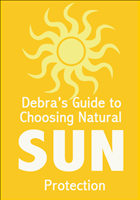 First, please read Debra’s Guide to Choosing Natural Sun Protection. Though I wrote it some years ago, it still has the best advice I can give on this subject: don’t wear sunscreen, and don’t wear sunglasses. But there other things you can do that are very effective. I lived in Florida for sixteen summers and I never had a sunburn.
First, please read Debra’s Guide to Choosing Natural Sun Protection. Though I wrote it some years ago, it still has the best advice I can give on this subject: don’t wear sunscreen, and don’t wear sunglasses. But there other things you can do that are very effective. I lived in Florida for sixteen summers and I never had a sunburn.
Every year I also take a look at EWG’s Guide to Sunscreens. There is a lot of good information here about what’s wrong with sunscreens, but I just don’t agree with many of their recommendations.
I suggest listening to a show I did on Toxic Free Talk Radio called Things You Should Know About Sunscreen, But Probably Don’t. My guest was Michael J. Russ, President of Oceana Naturals, author of Sun Care Decoded . At the time of this interview he was the authorized US distributor for MelanSol 100% natural sunscreen (his website is no longer up, but you can still purchase MelanSol here. Still titanium dioxide, but the rest of the ingredients are 100% natural. If you want to use a lotion, this is the most natural I’ve found.
If you don’t want to use lotion, see Q&A: Natural Sun Protection Without Lotion.
Even Dr Oz says don’t use sunscreen.
And now, scientists warn that wearing sunscreen is “not a reliable way to prevent getting skin cancer.”
Read my guide for sun protection that is both safe and effective.
Is there a PVC-free Kid’s Pool?
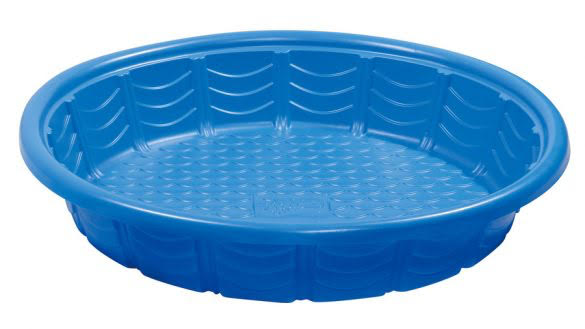
YES! They have hard sides and are made of my favorite plastic—polyethylene!
Question from Romina
Hi Debra,
Do you know of any PVC-free kids pool besides the small hard side baby pools?
My kids are 3 and 5 and looking at a small to medium inflatable pool, but cannot find any option that doesn’t have PVC.
Thanks.
Debra’s Answer
I don’t have kids, but some moms who do have been asking and answering this very question.
I actually found a blog post that said they found a kiddie pool made with one of my favorite plastics—polyethylene! Polyethylne pool toys too! DAILY PEA: A Wading Pool Free of BPA, PVC and Phthalates—Affordable Too.
I had a difficult time finding these online, maybe because they are like an elephant to ship, but I’ve read they are sold at places like Walmart, Target, and Toys R Us, so call around.
Here are more posts about finding PVC-free pools.
THE SOFT LANDING: HOW TO CHOOSE PVC-FREE POOLS, FLOATIES, TOYS AND LIFE JACKETS
RAISING NATURAL KIDS: Safer Pools and Water Toys
Aerotoxic Association Calls For International Investigation Into Health Effects Of Toxic Air In Planes

In July 2015 I interviewed a former flight attendant on Toxic Free Talk Radio regarding aerotoxic syndrome—a condition caused by toxic chemical exposure during airplane flights. TOXIC FREE TALK RADIO: Aerotoxic SyndromeL How Flying in Airplanes can Affect Your Health.
Then in January 2017 I posted a link to the GreenMedInfo investigative report on toxic exposures in the aviation industry and other related documents in Q&A: More on Aerotoxic Syndrome.
In June 2017 I posted even more about the subject in Q&A: More on Toxic Air in Airplanes.
And now, this week, the Aerotoxic Association called for an independent public inquiry into the possible technical solutions to contaminated air on planes. An “Independent Public Inquiry at the International Criminal Court in The Hague into all the evidence, for and against, of the impact of toxic cabin air in aircraft.”
““Our hope is that the court will consider all the evidence on this matter and realise that, based on the precautionary principle, it is vital that the known solutions to this problem in terms of air filtration systems are made mandatory in all aircraft that use ‘bleed air’ for their pressurised cabin air.”
Misleading Claim Number 01350

Our United States government has been quite clear that they don’t want false and misleading statements or impressions made about alleged health or environmental benefits of products. So I’ve been keeping an eye out for misleading communications about the safety of products so I can point out examples to you and we can all learn to be more vigilant about them, and not make misleading claims ourselves.
I found this one today while I was helping a client with some research on an underlayment product. She’s building a new house and her contractor told her that they would be using a specific brand of underlayment beneath the hardwood floors as a moisture barrier. So I went to the website to see what it was made of, and if it would be a problem for my client.
The website clearly stated that the underlayment was make from two pieces of kraft paper laminated together with asphalt. Now asphalt has an extremely strong and toxic odor.
And then I saw the seal above. This website is claiming this product PASSED the CA 01350. I couldn’t find CA 01350 with a quick search, so I called the company. As it turned out I had a typo in my search request and when I later searched using the correct numbers I DID find CA 01350 right here.
I spoke with a manager and asked him, “How does a product that contains asphalt pass an indoor air quality test?”
“It passed for the chemicals that they test for. But that doesn’t mean it doesn’t have an odor,”
“Well, does it have an odor?”
“I can’t really answer that. Some people smell it and others don’t.”
The thing that is misleading about this is not that it didn’t pass the test (although we have no evidence of that, it’s just a claim), but that making the claim that it passed the test gives the impression this is a safe product.
To see if, in fact, indeed somehow a product containing asphalt is nontoxic, I went looking for the list of chemicals CA01350 tests for.
I found Standard Method for the Testing and Evaluation of Volatile Organic Chemical Emissions from Indoor Sources Using Environmental Chambers, Version 1.1 (2010) on the above-referenced page but there was no link to it. I had to cut and paste the title into a search engine to find it. Here it is.
Here’s a list of products that passed CA 01350 for a specific project.
So let’s see now.
The list of products that this applies to begins on page 21: paints, adhesives, caulks, and various products applied with adhesives.
And here is the list of chemicals they test for and their maximum allowable concentrations:
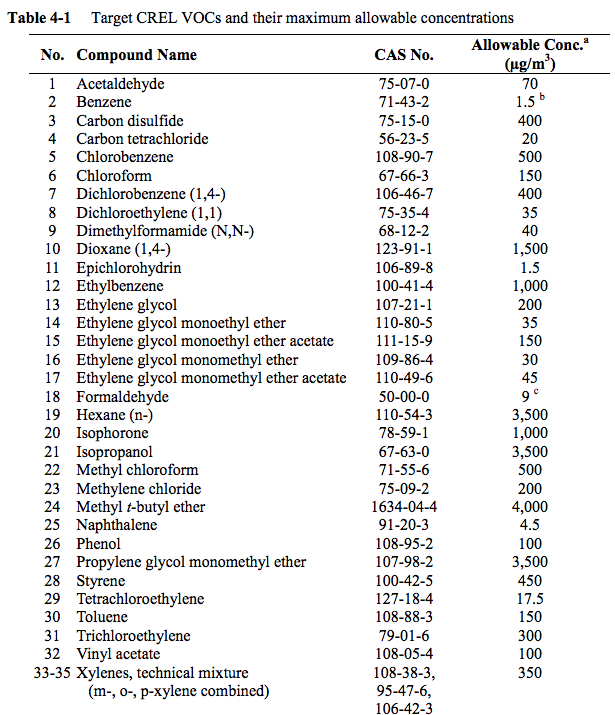
Here’s a short, incomplete list of Toxics Release Inventory (TRI) chemicals emitted by asphalt plants
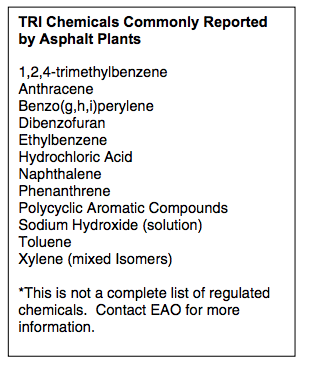
Just read the first few and you’ll see the lists don’t match. And this isn’t the complete list of asphalt emissions.
So we really can’t say that passing CA 01350 means that asphalt doesn’t emit toxic chemicals. It just means that the level of chemicals tested is below the maximum allowable concentrations.
So I’d like to know from you, does the seal at the top of this post make you think this product is safe? And is that misleading?
All of this aside, if they are going to make this claim, they should provide:
- a link to CA 01350
- a link to the actual test results for the product showing that they passed the test.
But even with these two links, I would still challenge this claim, given that the testing is incomplete for the list of chemicals known to be found in emissions.
How Can I Get This Perfume Out Of My Hair?

Question from Alicia
Hi Debra,
I had my hair cut in a salon yesterday and the fragrance from the product they put in my hair will not come out. The scent is driving me crazy.
I spent most of the day yesterday trying to wash it out. I showered, I soaked in the tub. I submerged my hair in a 75% vinegar 25% water solution. I used everything from different non-toxic shampoos to dry shampoo, baking soda, orange juice, tea-tree oil + coconut oil, tomato juice, many different vinegar rinses, and a mint/alcohol tincture, among other things. The smell is only diminished about 50%.
It is musky and smells like a cheap men’s cologne from the 70’s. I fell asleep last night with baking soda in my hair and a winter hat covering my hair. Woke up this morning and tried again. It still stinks. My voice is scratchy from irritation. Help!
Debra’s Answer
Order EnviroKlenz Hand Soap and Deodorizer.
It’s a liquid Castile soap that utilizes the EnviroKlenz patented earth mineral technology to neutralize the odors at the source without the use of masking agents of fragrances.
Need Sensodyne Original toothpaste replacement!!!

Question from Anne
Hi Debra,
Sensodyne Original is being discontinued. I need a NON-MINT flavored toothpaste with the 5% potassium nitrate for sensitive teeth or another de-sensitizer that is just as effective. I live in constant sinus headaches and my teeth are super sensitive. Any specific help would be greatly appreciated!!!
Debra’s Answer
I don’t know of a toothpaste off-hand that meets these qualifications.
Readers, any suggestions?
Densshield Tile Backer Board
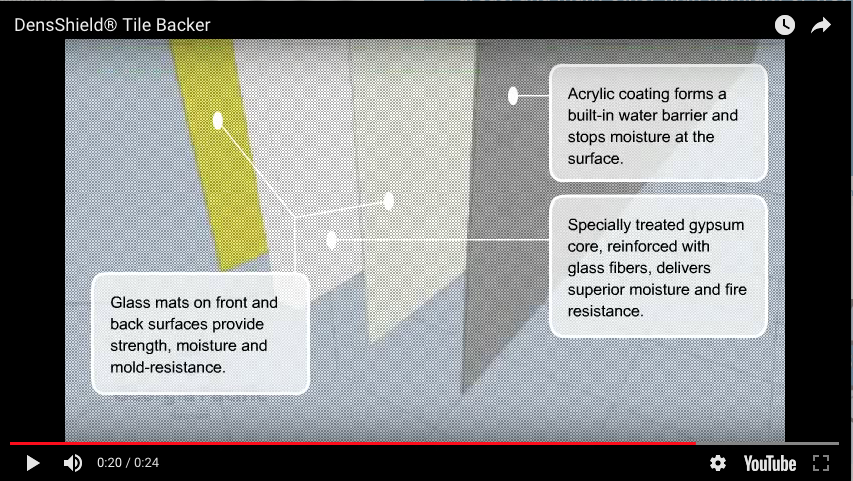
Image from video at https://www.buildgp.com/densshield-tilebacker-board
Question from Janice
Hi Debra,
Does anyone have any information or experience with the Densshield tile backer board? My contractor wants to use this for our bath remodel around the shower walls. Can’t find any info online regarding odors or offgassing.
Any other moisture resistant options for tile backer boards?
Thanks.
Debra’s Answer
I’ve always used Hardibacker or Durock. These are cement boards.
The DensShield website says it’s the first backer board with a built-in moisture barrier, and it’s mold-resistant. Their product video reveals that the moisture barrier is an acrylic coating, and the gypsum core is “specially treated.”
So this tells me that this is NOT cement board, it’s a coated gypsum board. I don’t recommend other coated gypsum boards because they smell horrible and their coatings tend to fail.
I would tell him you want a CEMENT BOARD. That will give you a higher quality, as well as toxic-free installation.
LunchSkins
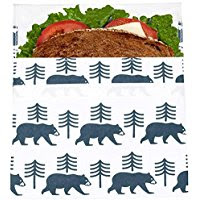 Plastic-free sandwich and snack bags. There are two types. The recyclable and sealable paper sandwich bags are made from “all natural glassine (pure wood pulp) sourced from FSC-certified forests.” The reusable cloth bags (with zipper or Velcro closing) “are made from a quick drying fabric that is coated with a food-safe polyurethane liner. This unique high-quality fabric was originally manufactured for pastry bags used in bakeries, restaurants and home kitchens. Additionally, LunchSkins are grease-proof and moisture proof making them ideal for messy sandwiches and snacks…All LunchSkins products have been rigorously tested by independent, third-party labs for the presence of lead, Bisphenol-A (BPA), and phthalates to comply with FDA-approved food-safe standards and to ensure the safety, quality and integrity of our bags. LunchSkins meet all federal and state (including California) consumer product safety standards.”
Plastic-free sandwich and snack bags. There are two types. The recyclable and sealable paper sandwich bags are made from “all natural glassine (pure wood pulp) sourced from FSC-certified forests.” The reusable cloth bags (with zipper or Velcro closing) “are made from a quick drying fabric that is coated with a food-safe polyurethane liner. This unique high-quality fabric was originally manufactured for pastry bags used in bakeries, restaurants and home kitchens. Additionally, LunchSkins are grease-proof and moisture proof making them ideal for messy sandwiches and snacks…All LunchSkins products have been rigorously tested by independent, third-party labs for the presence of lead, Bisphenol-A (BPA), and phthalates to comply with FDA-approved food-safe standards and to ensure the safety, quality and integrity of our bags. LunchSkins meet all federal and state (including California) consumer product safety standards.”
Khala Cloths
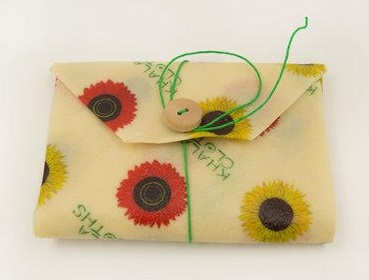 Cloth alternative to plastic wrap. “We take organic cotton-hemp blend fabric and infuse it with either beeswax or 100% plant-based waxes and oils, all with natural tree resin…And when you are done using a Khala Cloth wax wrap, they are washable, reusable, and biodegradable.”
Cloth alternative to plastic wrap. “We take organic cotton-hemp blend fabric and infuse it with either beeswax or 100% plant-based waxes and oils, all with natural tree resin…And when you are done using a Khala Cloth wax wrap, they are washable, reusable, and biodegradable.”
Manatee Bags
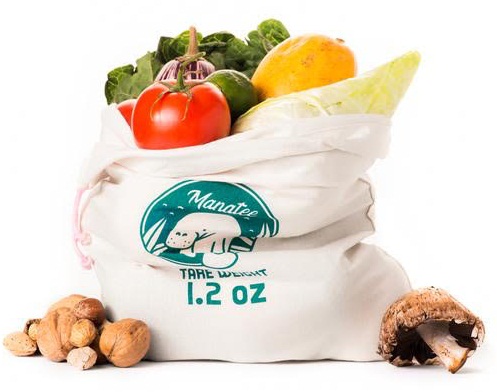 One simple bag for produce shopping and storage. Made from organic cotton and sustainable dyes. French seams, Machine washable.
One simple bag for produce shopping and storage. Made from organic cotton and sustainable dyes. French seams, Machine washable.
WaterCheck
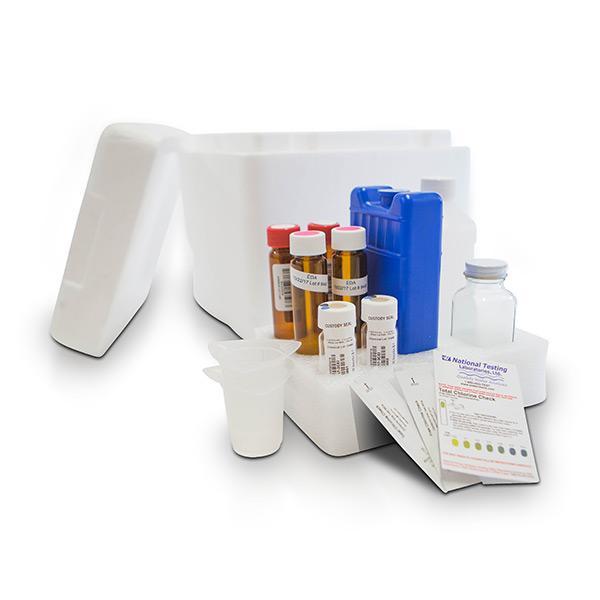 A variety of water test kits for both city and well water. Just choose your kit, send in a water sample, and get your results. NOTE: While it’s always a good idea to know what’s in your water, remember than water tests only show what’s in your water at the moment, and not over time. Because water quality can change, it’s always a good idea to filter your water for a wide spectrum of possible contaminants.
A variety of water test kits for both city and well water. Just choose your kit, send in a water sample, and get your results. NOTE: While it’s always a good idea to know what’s in your water, remember than water tests only show what’s in your water at the moment, and not over time. Because water quality can change, it’s always a good idea to filter your water for a wide spectrum of possible contaminants.
Are Squishies Toxic?
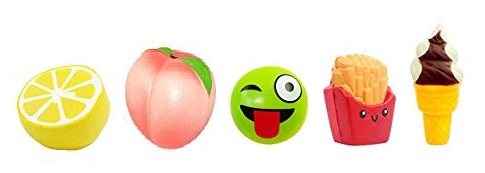
Question from Adrian
Hi Debra,
I was just wondering how safe you think the new kids craze of squishies are? My children really love them! I worked with polyurethane for years and wore air fed respirators but still have sensitivity to it. I can smell the isocyanate in the toys and it gives me an instant headache. What are your thoughts?
Debra’s Answer
Children should NOT be playing with squishes!
It’s interesting that you say you can smell the isocyanate. It’s supposed to completely react and not emit. I’ll look into this more. So just because of that I would say no.
But in addition I see they are SCENTED. So that would be another reason not to play with them or even have them in the house as a decoration.
Tobys Nose Filters
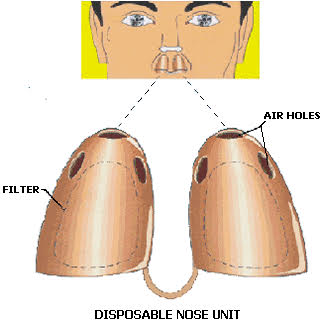 Question from Bonnie Johnson
Question from Bonnie Johnson
Hi Debra,
I was wondering if anyone had tried Toby’s nose filters. I have to use a mask when I go outside because of pollen etc and they are supposed to block it. Kind of like an air purifier in your nose. Debra have you looked at them? Wondering how toxic they are. Thanks
Debra’s Answer
I have no experience with this product. Readers, has anyone used them?
Their website states:
The nose units (and clip) are made of a soft, surgical-grade C-Flex plastic (SDS).
Their white basic particulate filter is made of cellulose and polyester.
Their “dual” white and black filter is made of activated carbon with a polyester backing, which does everything the white filter does, but it’s also effective in reducing odors.
They seem fine to me as far as materials go. I don’t know anything about their effectiveness.
Kid’s Wagon
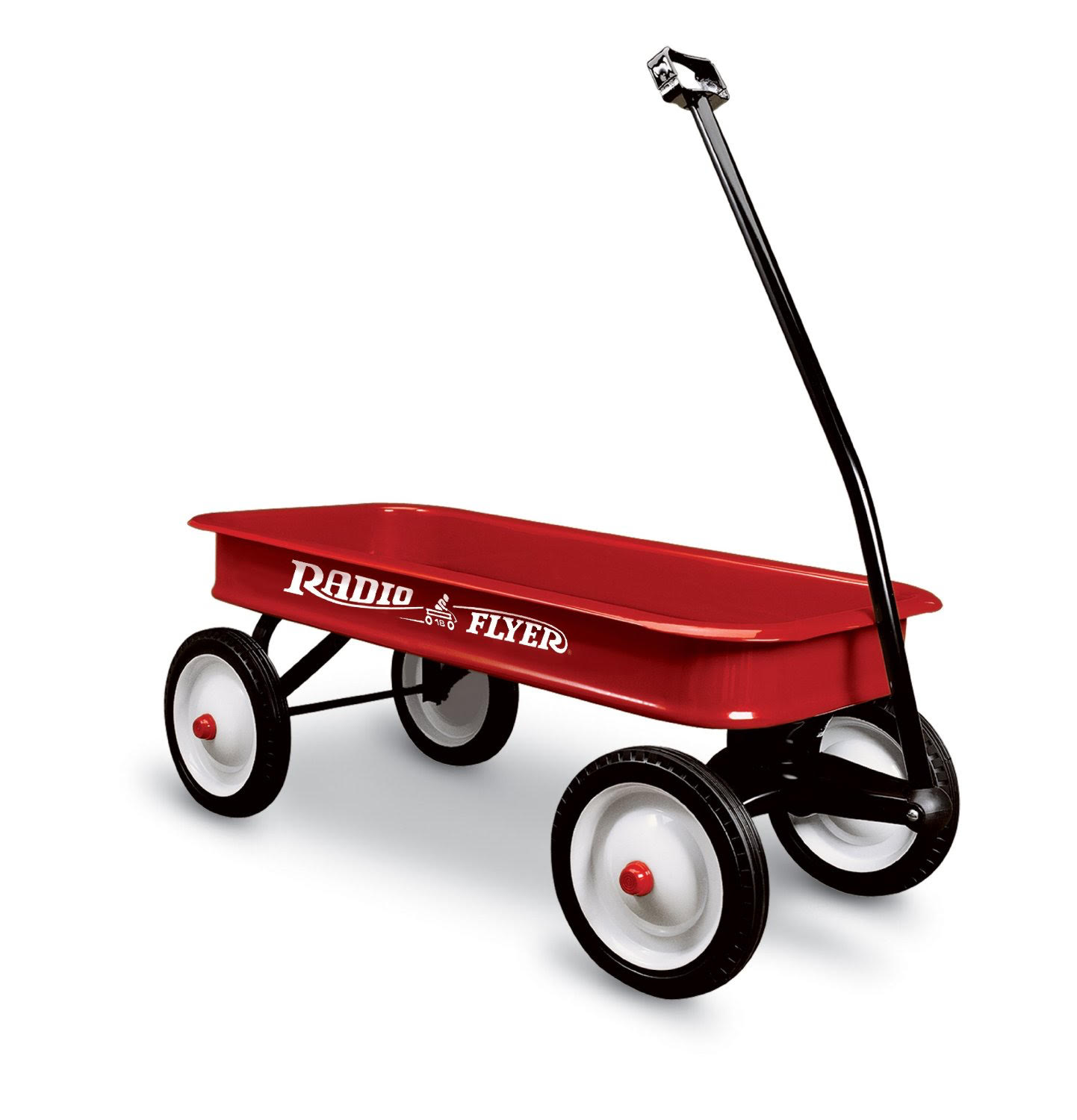
Question from Kristen
Hi Debra,
I am looking for a child’s wagon. There are softer foldable ones that seem toxic, but I am worried about glues/ paint/ finishes on wooden and metal wagons. One review for a wooden wagon said “you could smell it through the box.” Do you have any recommendations?
Debra’s Answer
Debra’s Answer:
Wagons come with all kinds of things these days that just add toxic materials.
Just get a plain old-fashioned Radio Flyer Classic Red Wagon or similar wagon that is all metal with a baked-on finished.
The only problem with this wagon may be the rubber tires on the wheels, but there is no getting around that. These should outgas fairly soon.
Nontoxic Car Seat Covers
Question from Suzie
Hi Debra,
We purchased conversion van yr 2013 Have had the carpets steam cleaned without any fragrances in the van but still smelling some will try the non-toxic in Vairo clean over top…
However the seats are leather and of course treated… I haven’t even been able to ride in the van since we purchased it two years ago. We used sheepskin seat covers and our last fan to help hide the smell of the seats and had to wash them many times to get some of the odor Our. Any recommendations for nontoxic car seat sea covers ?
Appreciate any input thank you!
Debra’s Answer
Yes, actually.
I would make custom seat covers. And these are not as difficult as it sounds.
In fact, when I had my Fiat X 1/9 I took it to a auto upholsterer and had them make new custom seat covers from the cotton canvas I provided. And they were great.
But you could also have an auto upholsterer make COVERS for your seats that you would put over the existing covers.
Plain cotton canvas won’t block outgassing.
But you could put a layer of foil-backed polyethylene plastic that would block, or a layer of carbon felt that would adsorb emissions from the car interior.
Fiesta Dinnerware
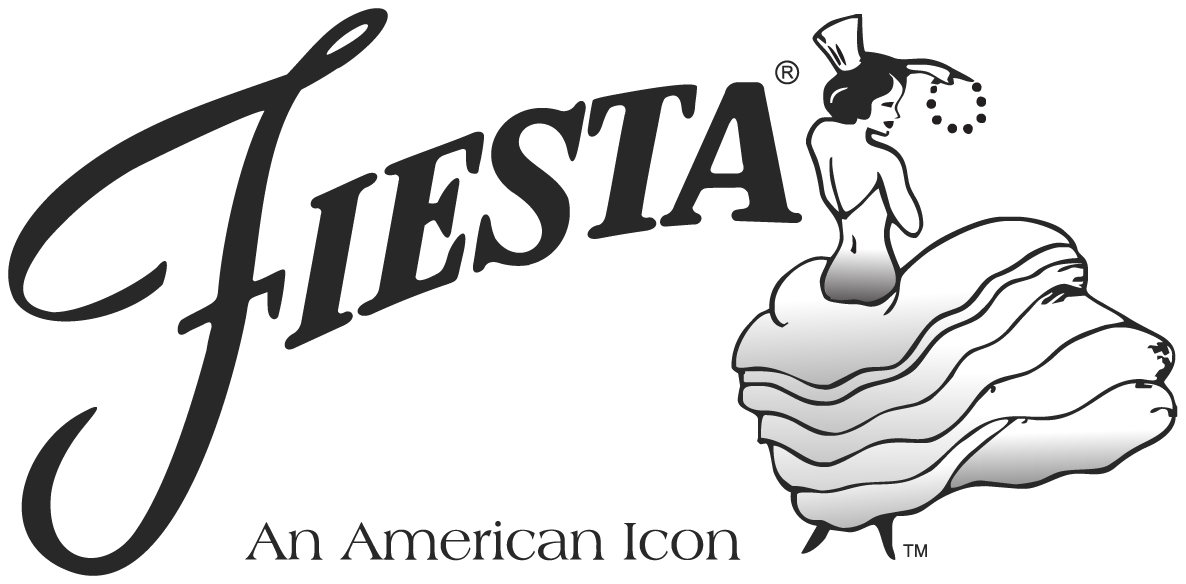 This brightly colored iconic dinnerware is free from lead and some colors are also free from cadmium. Here’s the list of cadmium-free colors (both retired and current): shamrock, chocolate, peacock, turquoise, cinnabar, plum, black, white, heather, lapis, sage, slate, cobalt, claret, mulberry. Statement from the manufacturer about being lead-free.
This brightly colored iconic dinnerware is free from lead and some colors are also free from cadmium. Here’s the list of cadmium-free colors (both retired and current): shamrock, chocolate, peacock, turquoise, cinnabar, plum, black, white, heather, lapis, sage, slate, cobalt, claret, mulberry. Statement from the manufacturer about being lead-free.
Cacoco Drinking Chocolate
 I found this chocolate at my local farmer’s market. It’s different from any other I’ve seen because it’s WHOLE chocolate made from heirloom cacao grown in healthy soil. Virtually all other chocolate is processed and separated and then mixed together again. This chocolate takes the whole cacao beans as they are and grinds them, then “rather than the standard processed cocoa powder, cane sugar, and milk, we add all organic superfood herbs and spices [plus a bit of coconut sugar and Himalayan salt] to our fair trade chocolate blends for an amazing vitality elixir with anti-oxidants, minerals, and essential fatty acids, as well as a pharmacopeia of bliss inducing compounds that are most present in heirloom cacao varietals from healthy soil… CACOCO is the purest form of cacao directly sourced from beyond-organic farms, that not only improve the health of the environment but produce a chocolate that showcases the finer nuances of well maintained soil and cultivation and highlight the terroir of the region…We currently source all of our heirloom cacao from organic and regenerative farms in Ecuador. CACOCO is currently working in tandem with Terra Genesis International (TGI)* to build a regenerative network of businesses committed to rebuilding supply chains based on regenerative principles.” I tasted them all at the farmer’s market and liked the 80% Extra Dark best. This is not a powder, it’s more like a crumble that needs to be well-mixed.
I found this chocolate at my local farmer’s market. It’s different from any other I’ve seen because it’s WHOLE chocolate made from heirloom cacao grown in healthy soil. Virtually all other chocolate is processed and separated and then mixed together again. This chocolate takes the whole cacao beans as they are and grinds them, then “rather than the standard processed cocoa powder, cane sugar, and milk, we add all organic superfood herbs and spices [plus a bit of coconut sugar and Himalayan salt] to our fair trade chocolate blends for an amazing vitality elixir with anti-oxidants, minerals, and essential fatty acids, as well as a pharmacopeia of bliss inducing compounds that are most present in heirloom cacao varietals from healthy soil… CACOCO is the purest form of cacao directly sourced from beyond-organic farms, that not only improve the health of the environment but produce a chocolate that showcases the finer nuances of well maintained soil and cultivation and highlight the terroir of the region…We currently source all of our heirloom cacao from organic and regenerative farms in Ecuador. CACOCO is currently working in tandem with Terra Genesis International (TGI)* to build a regenerative network of businesses committed to rebuilding supply chains based on regenerative principles.” I tasted them all at the farmer’s market and liked the 80% Extra Dark best. This is not a powder, it’s more like a crumble that needs to be well-mixed.
Mayo Clinic Healthy Living Study Doesn’t Mention Toxics

Question from Regina
Hi Debra,
Just wanted to send you this article about a new study from the Mayo Clinic. They found that less than 3 percent of Americans meet the basic qualifications for a “healthy lifestyle.”
The authors of the study defined a “healthy lifestyle” as one that met these four qualifications:
- Moderate or vigorous exercise for at least 150 minutes a week
- A diet score in the top 40 percent on the Healthy Eating Index
- A body fat percentage under 20 percent (for men) or 30 percent (for women)
- Not smoking
No mention of toxic exposures as a factor of health.
You’ve done extraordinary work that’s helped so many of us. And we still have a long way to go in reaching the masses.
THE ATLANTIC: Less Than 3 Percent of Americans Live a ‘Healthy Lifestyle’
Debra’s Answer
Yes, diet and exercise are the major keystones for what is considered a “healthy lifestyle.”
The problem is, you could follow the standard guidelines for food and exercise all you want and still not be healthy if you are not eliminating toxic chemicals from your home and work environment.
Eating the proper number of servings of foods with pesticides is not going to create health, and neither is exercising 150 minutes a week in a toxic gym.
Yes, we do need to exercise, outdoors in clean air.
Yes we do need to eat whole organic foods.
We do need to control body fat.
And we need to not smoke.
But there is so much more to a healthy lifestyle. And so many more people who need to be reached.
The Indoor Generation
The other day a powerful video arrived in my inbox that I want to share with you.
This exceptionally well-done video makes a touching and powerful case for the problems of indoor air quality and how it affects health, yet does not address cleaning up toxics in the home environment at all.
Granted it was made by Velux, a manufacturer of skylights and roof windows. They are promoting the use of openable skylights and roof windows as the solution to get more light indoors and provide ventilation to eliminate the toxic build-up indoors.
How great it would be if they had used this opportunity to give a really good resource list for solving indoor air quality through source reduction. They do give some links on their resource page, but only to energy and green building organizations, that typically don’t address toxics, yet their opening statement is “Indoor air can be five times more polluted than outside air.”
Despite the omission of reducing toxics at the source, it’s encouraging to see that a major mainstream company like Velux is using indoor air pollution as a problem to draw the general public into using their products as a solution. This is an indicator that indoor air quality is being recognized as a problem that the public in general know about and are concerned about. I’m fairly certain they would not have invested the resources into this campaign without doing market research to verify the general public would respond. So this is a very good indicator of awareness of toxics issues moving into the mainstream.
And it’s always good to have anyone and everyone promoting the issue. This video is so well done it should inspire people to be concerned about indoor air quality and seek more information. Hopefully it will be well-distributed.
Thanks, Velux, for making this.
Clean Air at Home

This is the outdoor air I have at my home where I currently live. I’m just a bit more inland
A reader wrote to me this week with some questions about purchasing an EnviroKlenz Mobile Unit. She had some questions about my personal experience using the filter in my home.
I replied, “I actually don’t own an air filter at all. I live in a place with VERY clean air. If I were to purchase an air filter, it would be an EnviroKlenz.”
She was surprised and asked, “I’m just curious- how are you able to have a home with such clean air?”
I replied, “I specifically create homes with nontoxic materials so I don’t need to filter.”
“At the moment I am living with my mother-in-law to help her stay at home and not go to a nursing home. Her house was built 25 years ago so there are no outgassing materials here. Plus I live in the “marine zone” of the Pacific Ocean, which means I live close enough to the coast where the outdoor air is as if I were standing on the beach.”
“That’s how I do it.”
But I will also say that after going through the firestorm last fall, which spread smoke throughout the entire San Francisco Bay Area for a week, I’m considering getting an air filter. Not for everyday, but for emergencies.
Also, chemical smells (and odors like skunks) do occasionally wander over to me on a breeze and I’d like to be able to close up my room and run a filter when that occurs.
Laminate (low-emission rating) Flooring OK?

Question from Hal
Hi Debra,
We’re considering laminate flooring but are also concerned about formaldehyde.
However, “Quick-Step Impressive Ultra” by Pergo quotes an emission value of “less than 0.01 ppm” in their datasheet and is Nordic Swan ecolabelled here in the Scandinavian countries. This is vastly less than the E1 standard of “less than 0.1 ppm” and I hope should make a difference.
I know you don’t recommend laminate in general, but as this seems to be our best alternative for flooring, would you consider it “safe”, or should we rule it out in your opinion?
I’ve also read that having certain plants and airing regularly will help.
Debra’s Answer
One of the difficulties in choosing toxic-free products is determining exactly what is a toxic exposure.
Chemicals, such as formaldehyde, have an inherent toxicity that has been established by the field of toxicology.
But there’s another factor in real life and that is the ability of the person exposed to tolerate the level of exposure. Put a healthy adult man, an adult woman, a senior, a baby, and a person with MCS in a room with this flooring and each of their bodies will respond differently.
It’s difficult for me to make a general recommendation in a situation like this which is borderline.
So here’s what I’ll say.
I wouldn’t put it in my house. I know from personal experience that formaldehyde is one of the major chemicals that make otherwise healthy people into people who are sensitive to all petrochemicals. I’ve seen this over and over. So I just wouldn’t go there. That’s why. It’s just on my personal NO list in big red letters.
Formaldehyde also causes cancer.
And regardless of what studies say, the leading edge of medicine is now acknowledging that you can do all the studies you want, but it all comes down to the individual body and it’s own unique characteristics and environment.
A few nights ago I realized something, after 40 years in this field. I realized that we know some products are outright poisons. But instead of banning them, our society put warning labels on them and established poison control centers to help people who are poisoned. And then we found out that some products—like cigarettes—cause cancer and other illnesses after many years of use. Again, warning labels.
And now there are certifications that say oh it’s OK to use these products because they are “low-emissions.” NO. Low-emissions means there ARE emissions. Emissions can build up in a space into high concentrations.
For me, personally, I will go to any trouble and any cost to have a formaldehyde-free floor. But that’s my choice and priority.
You may decide it’s OK to have a floor that has less formaldehyde. It’s certainly better than a floor with high formaldehyde emissions.
I’ll get off my soapbox now.
About the plants, it actually requires quite a number of plants to do much good.
It’s always better to reduce emissions at the source, rather than relying on plants or even air filters to do the job of removing pollutants from the air pm a regular basis. I’m not saying don’t use filters or plants, I’m saying that it’s more effective to reduce pollutants at the source if you have the option to do that.
Engineered Marble Threshold OK for My Baby?
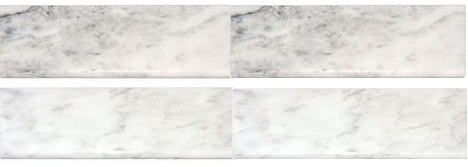
Question from Lex
Hi Debra,
I have already purchased a marble/resin threshold that I can use for an upcoming bathroom renovation. I am having trouble getting more info about the resin from the company in Italy.
I do not have sensitivities, but am just worried about exposing my baby to toxic materials once it is born. I am not installing it and will be out of the house for two weeks when it is being installed.
Is there any reason why I should worry about the marble/resin in a threshold? I see that there are greenguard certified thresholds, but my contractor really wants to use this one.
Debra’s Answer
The technical name for what you are asking about is “engineered marble.” It is different from the “cultured marble” of yesterday, which was made from the dust of various stones, in that engineered stone is made from recycled pieces of marble and stone discarded by quarries.
Using bonded marble allows a manufacturer to make a product that looks and feels like marble, with more uniformity and at much lower cost.
To make engineered marble, pieces of stone from the quarry are crushed, pressed, heated and bound together with just enough polyester resin to form slabs, which are then cut into pieces appropriate for their use. Once cut to the desired size, they are then finished with a protective coat of polyester resin.
Though polyester is typically made from petroleum, in the form of a resin it cures into a hard material that doesn’t outgas. Even if it did outgas, polyester is generally not toxic, except for those who are sensitive to petroleum.
I’m not concerned about engineered marble being a toxic material.
In this case a GREENGUARD certified threshold only means that the company paid for the certification. All engineered marble is pretty much the same.
Dyson Pure Cool LINK
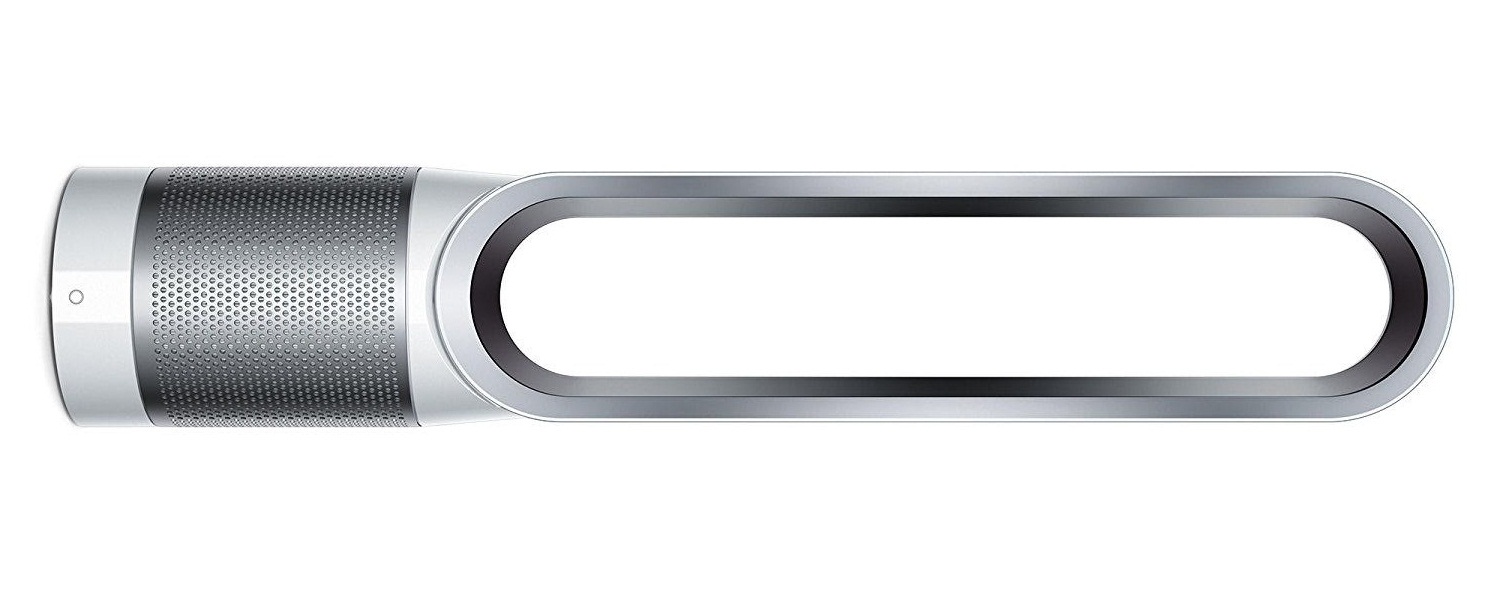
Question from Bonnie Johnson
Hi Debra,
I was watching Tv the other day and the add came on for the Dyson Pure Cool fan and purifier. The idea is the air goes thru the purifier part and comes out the top as a fan. It even has a little remote that measures air quality. Was wondering your opinion on this item.
Debra’s Answer
I took a look at this on the Dyson website.
This is a hard plastic unit that pulls air into the bottom through activated carbon (for gases ) and HEPA (for particles). Then it releases the purified air into the room.
It advertises that it cools the air, but when I talked with Dyson customer service they said it’s not an air conditioner, it’s a fan. It has a heating element in it also, but it’s not a substitute for a heater or an air conditioner.
It also has a nifty wifi-based app that measures air quality. So you can measure your indoor air quality, turn on the app, and see how the air quality is improved. Nice feature, but requires wifi. The newer models have more of a breakdown of the actual pollutants, rather than general categories of particles, gases and humidity.
I’ve been evaluating air filters for almost forty years, so I know something about them.
The primary thing is you need to have sufficient filter media for the space.
The filter part of this unit is a cylinder 8” in diameter and 10” high. It is filled with ordinary activated carbon and wrapped with a special HEPA developed for Dyson. By comparison, dedicated carbon filters made by other companies contain 3-4 times that amount of carbon.
Dyson also does not rate this filter for a particular square footage, as virtually all other filters do. Filters are generally designed to have x amount of filter media that will filter x number of feet of a closed room. Dyson customer service told me they don’t rate their filter for square footage because every building is different. If there is a leaky window, for example, the filter won’t work as well. But this is true of all filters.
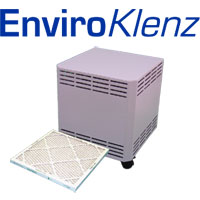 The customer service representative said she just puts hers in her house and it filters the whole house. Then she said it filters 165 sq ft per 30 minutes of use. That’s pretty slow. She did say that the unit is designed to last for 1 year if you run it 24/7 and then y ou need to change the filter cartridge.
The customer service representative said she just puts hers in her house and it filters the whole house. Then she said it filters 165 sq ft per 30 minutes of use. That’s pretty slow. She did say that the unit is designed to last for 1 year if you run it 24/7 and then y ou need to change the filter cartridge.
I would say if you want to keep cool, get an actual fan or air conditioner. If you want to clean the air, get an EnviroKlenz Mobile Unit.
Arctic Air Personal Evaporative Air Cooler

See comments for reasons to NOT buy this product.
I saw this on TV and thought it was a nifty idea, so took a look at it.
It’s basically an old-fashioned “swamp cooler” that cools air through the evaporation of water. The temperature of dry air can be dropped significantly through the evaporation off liquid water to water vapor. This can cool air using much less energy than refrigeration. In extremely dry climates, evaporative cooling of air has the added benefit of adding more moisture, which makes the air more comfortable for building occupants.
This works great in areas like the desert where the air is very hot and dry, and doesn’t work well in places like Florida and the South, where the air is already very humid.
To use the arctic air, you just fill it with water and plug it in. The unit pulls in warm air and produces cool air within a small area around you. Pretty simple. No Freon or other toxic refrigerants. You’ll also save money by cooling the space you are in, rather than the entire house.
My only reservation is that it’s made from plastic. Customer service couldn’t tell me the type of plastic, so I don’t know if it outgassed or not. If anyone has tried one of these, would you comment and let us know?
And a caveat: if you are going to use this, please use purified water as ordinary tap water would evaporate chlorine and other volatile chemicals into the air.
[link not given because even visiting site produces spam]
Need portable air conditioner on wheels for South Florida

Question from Audrey
Hi Debra,
Please post this where appropriate. I am looking for a small portable air conditioner on wheels to put on my enclosed balcony. My washer and dryer are in a closet out there and it is intolerable during the summer months, which is very long here in South Florida. I thought I found a Delonghi on HSN, but when I looked it up on their site, it said the filter was antibacterial. I don’t think that is good with allergies and mcs. I am stumped. Anyone out there have any suggestions? Thank you.
Debra’s Answer
Readers, and ideas for this?
Nontoxic Breathing Devices to Exercise Lungs?

Question from Mor
Hi Debra,
I am looking for a breathing device like a frolov unit, the expand- a-lung, the powerlung, or the Ultrabreathe.
All the units that I’ve found seem to be made of plastic, usually cheap, sometimes described as having “a plastic odor that seems to never go away”.
Is there any breathing device for exercising the lungs that is non-toxic? Or at least tubings and parts which I can try to us to assemble such a unit? Or maybe a unit that is made of medical PVC can be much less irritating and worth trying?
Debra’s Answer
I don’t have any experience with these devices, but I took a look at the description and I am wondering if the same benefit can be achieved without the device?
I’ve actually done a lot of research on breathing in the past so I know there are many breathing exercises that can be done without devices. I used to study singing, so I know a lot about breathing.
I don’t know your specific situation so I don’t know if this will work for you. My suggestion would be to search the internet for breathing exercises you can do without a device that would accomplish the same benefit.
Readers, anyone have any experience using this type of device or any suggestions for this?
Need Some Window Shades

Earthshade Natural Window Fashions
Question from Jodi
Hi Debra,
I need to purchase window treatments for my home, and I see Earth Shades and The Shade Store listed on your site. Have you, or anyone you know, purchased shades from either of these places? I don’t see any comments on your site, and I can’t find many reviews online.
Thanks for your work!
Debra’s Answer
Rowena Finegan at Pine Street Natural Interiors recommends Earth Shades very highly. I saw some samples she has in her shop recently and they were beautiful. Very high quality and totally toxic-free. They also aware of and serve the needs of people with MCS.
I have no personal experience with The Shade Store.
Readers? What are your experiences with either of these shades?
Choosing Materials for a Toxic-Free Sofa at STEM

I’m customizing this “Nein” sofa at STEM.
I just added STEM to Debra’s List last week after a reader asked about it, and now I feel the need to give further guidance after receiving another question from a different reader.
I love your questions because I can see what you don’t know and how much I need to explain so you can get a good result.
And I learned this particular reader couldn’t tell which of all the choices were more or less toxic-free. So I’m going to explain the choices here.
First of all, the folks at STEM have been making less toxic sofas for about ten years, at Viessi. They have been listening to customers. And they know their stuff.
They will send you free samples of the materials so you can look and feel and test them out before you buy.
You can sit on whatever you order for 100 days and they will take it back if you don’t like it, and they will pay the shipping. They finance.
The baseline at STEM is: No fire retardants. No stain repellants. Beyond that, you can adjust the purity and the price by the materials you choose.
The starter price for a sofa is $1750. I’m going to choose this sofa and customize it with different materials and give you prices. This is the “Nein” sofa.
First you are asked to choose a FILLING. Options are:
- Poly Foam Cushions + Fiber Pillows
- Poly Foam Cushions + Down Pillows
- Organic Natural Latex Frame & Cushions + Wool Fiber Pillows
As you choose each option it will tell you the new price, and calculate a new monthly payment. No fill comes with the base price.
- Poly Foam Cushions + Fiber Pillows = $3091
- Poly Foam Cushions + Down Pillows = $2816
- Organic Natural Latex Frame & Cushions + Wool Fiber Pillows = $3454
Next you choose the FABRIC. A variety of polyester fabric are included in the base price. Click +MORE and use the “Eco-Friendly” menu to choose 100% Natural Content or Organic Fibers. There is one choice that comes included in the base cost (hemp and cotton with 15% recycled polyester—sorry, STEM, that’s not 100% natural). Other actually 100% natural options are 100% hemp (+276) or a linen/cotton blend (+480). The organic choices are also linen/cotton and also +$480, so here I would go with the organic linen/cotton. It’s only another $200. But you can save $480 if you’re willing to go non-organic and have that 15% recycled polyester.
So totaling this up, the range is
$2816 for the PolyFoam and Down Pillows with the standard Hemp/Cotton/polyester fabric
$3934 for the Organic Natural Latex Frame & Cushions + Wool Fiber Pillows with organic fabric
About $1000 difference.
Now here’s the difference in toxic exposure.
The big difference is in the filling,
- Poly Foam Cushions + Fiber Pillows = Seat pillows are filled with “CertiPUR-US certified poly foam” That’s regular polyurethane foam. Read more about CertiPUR-US here. Back pillows are filled with polyester.
- Poly Foam Cushions + Down Pillows = Seat pillows are filled with “CertiPUR-US certified poly foam” That’s regular polyurethane foam. Read more about CertiPUR-US here. Back pillows are filled with down feathers that are byproducts of the food industry.
- Organic Natural Latex Frame & Cushions + Wool Fiber Pillows = The entire frame, arms, and seat cushions with certified organic natural latex, made from the sap of rubber trees, with no harsh chemicals. They wrap the latex and fill the back pillows with domestic OEKO-tex certified wool which follows sustainability and cruelty free standards and is free of all chemical additives.
Remember the most toxic chemicals in a sofa are the fire retardants and the stain repellants. They are gone. Period.
Then there is the polyurethane foam fill, which is now only in the seat cushions, so it’s been reduced by half over a conventional sofa.
And then there is a choice of polyester fabric or all-natural or organic.
They do have clearance models, so you might be able to get a lower base price, and the prices also go up based on the design and size of the sofa.
I hope I’ve made this a little clearer and easier to for you to evaluate if this sofa company might be right for you. I do see there are good toxic-free choices here, but you need to choose them carefully.
Reducing Toxic Exposures Via Streamlining

I’ve mentioned in other posts that for the past year the big theme in my life has been streamlining, down-sizing, simplifying, getting to the essence of what is most important and needed in my life, in order to make more time and resources available for relationships, creative projects and other enjoyments of life.
But I also want to make the point that streamlining is a way to reduce toxic exposures as well.
In my response to a comment this week I said to a reader that she wasn’t condemned to toxic exposures from a cheap sofa because she couldn’t afford a natural sofa. I said she always had the choice to have no sofa at all.
While it may sound unusual to not have a sofa, I actually sold my lovely linen-covered, wool-stuffed sofa recently. I had this sofa custom-made about 20 years ago, so it wasn’t a question of it being toxic.
I sold my sofa because the reality was I hardly ever sat on it. It takes up a lot of space, it’s difficult to move, I have to pay storage fees at the moment to keep it, and I really didn’t need it.
I only got a sofa in the first place because of the idea that every home needs a sofa.
But I don’t.
And let me tell you, I feel free. I feel free to have what I need and to not have what I don’t need. Determined by me.
I remember years ago I looked around my house and felt overwhelmed by all the things I had which needed to now be replaced by nontoxic alternatives. But not everything needs to be replaced.
I just want to make the point here that sometimes the toxi-free alternative can be NOTHING.
Confused About Labels on Leather Boots

Duckfeet boots online
Question from Heather
Hi Debra,
I have finally found non toxic GOTS certified sneakers by ETIKO and they are amazing aside from the shipping price. Sandals from Soft Star Shoes work for summer with their sandals. I fit in the kids size of rain boots from Stonz. Now I am hunting for winter boots and stuck. I looked at Duckfeet and feel confused with their wording. I called to get clarification but at times people say “eco friendly” leather and other times vegi tanned. Can you please explain if salt tanning is what is toxic in leather? Is “eco friendly” and “Zero Chrome” leather going to still be toxic free for the most part. Would you endorse Duckfeet?
Debra’s Answer
One of the problems in choosing materials is inconsistent labeling.
This is why it’s best to choose materials based on details rather than buzzwords, unless it’s a brand name, like Hoween Leather , which stands for meeting a certain standard that they have defined.
“Vegetable tanned” leather is the preferred process. And it’s becoming more and more available.
I don’t see any leather called “salt tanned.”
“Zero Chrom” leather might be OK but might contain some chemicals other than chrome.
The Duckfeet website says, “Vegetable-tanned leather midsoles and uppers give feet space to breathe and naturally transport moisture away from the skin. All-natural, shock-absorbing crepe rubber is used for the outsole, which can be re-soled…Each pair of Duckfeet is handcrafted in Europe without the use of synthetic materials.” That seems very clear to me. Vegetable-tanned.
Sounds good to me. Ask if they put any toxic substances on the shoes to waterproof the leather.
“Nontoxic Vinyl Plank Flooring”?????
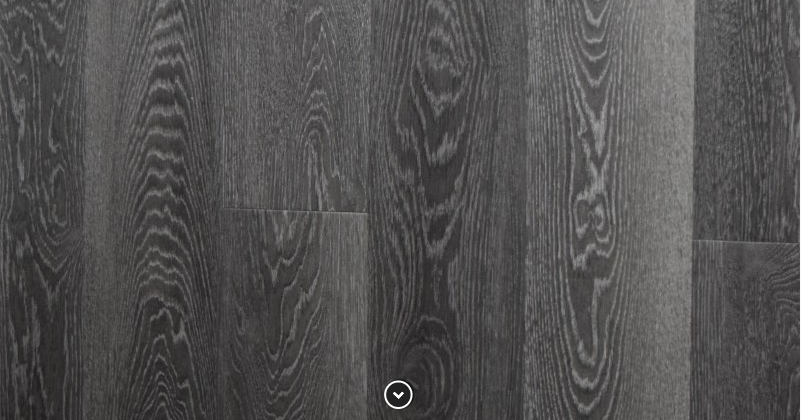
CORRECTION
On 23 January 2018 I published the question and answer below. I have to admit I had all of my attention on the claim of this vinyl flooring being “nontoxic” and so didn’t actually look at the flooring itself.
Another reader contacted me about this same product but asked the question in a different way.
So now I want to give a different answer, which is about the product, instead of the claim that it is nontoxic.
These “vinyl planks” are made from a fairly new material called wood polymer composite (WPC). It is a form of vinyl that combines real wood fibers and PVC to create a flooring material that is dimensionally stable, resilient, and waterproof. I can see the benefits of doing this, as this is much better performance than wood.
It’s a “click” installation, which means it is one piece with a tongue-and-groove interlocking edge and an underlayment.
I called a manufacturer of WPC flooring and the materials are, from top to bottom:
- Polyurethane finish
- PVC top layer
- PVC+wood composite core
- polyurethane foam cushion on the bottom
So it’s all petroleum except for the wood particles.
Now question from the second reader was: it’s vinyl, is it outgassing phthalates?
Well, no. It’s hard vinyl so it wouldn’t have phthalates.
So is it OK to use if it’s not outgassing phthalates?
And that’s the difficult question.
It has long been known that the vinyl chloride monomer itself is hazardous to health. After studies in the 1970s showed that VCM causes cancer, the manufacturing process was completely closed to eliminate worker exposure. But consumers don’t have that same protection. According to the Centers for Disease Control, it is possible for extremely low levels of VCM to remain in PVC and be released from the plastic during use. These levels are considered to be totally harmless by health authorities for exposure through food packaging and beverage bottles. However, food packaging is a single exposure, which is not the same as the repeated exposure that happens from a consumer product (such as vinyl flooring). The current Occupational and Health Administration (OSHA) permissible exposure limit is 1 part vinyl chloride per million parts of air over an 8-hour workshift—an infinitesimal amount.
So it’s within the realm of possibility that enough VCM could outgas over time and be trapped and concentrated within a room or a home that it could be a problem.
But beyond this is my consideration about biocompatibility. And this is actually my #1 concern. Toxicology doesn’t address this. There is an exchange between our bodies and the natural world that happens in ways we aren’t even aware of or understand. But it happens.
Wood feels good to me. Plastic doesn’t. And I just wouldn’t lay 2000 square feet of carcinogenic VCM plastic in my house, regardless of measurable outgassing or not.
So that’s my answer about WPC.
Debra 🙂
This week I received a question from a reader. In the context of asking a completely different question, she said. “We are going to replace the current flooring with non toxic vinyl plank flooring.”
Nontoxic vinyl plank flooring????
I wrote back to her and asked what vinyl flooring she thought was nontoxic and why.
She said, “We are using GoHaus Luxury vinyl planks. They are floorscore certified. Have I been tricked? Is this not a safe product to use?”
And here is my response to her.
 FloorScore is an indoor air quality certification for for hard surface flooring materials, adhesives, and underlayments.
FloorScore is an indoor air quality certification for for hard surface flooring materials, adhesives, and underlayments.
It was developed by Scientific Certification Systems in partnership with the Resilient Floor Covering Institute (RFCI), a leading industry trade association of flooring manufacturers and suppliers. FloorScore qualifies flooring products for many green building programs, including LEED v4, WELL, BREEAM, and CHPS.
Floorscore is administered by the RFCI, with SCS as the exclusive certification body.
Their website says “By testing representative product samples and focusing strictly on the relevant chemicals of concern, we deliver the results you need without excessive testing.” So they are not testing for all chemicals.
The standards for FloorScore are outlined in Indoor Air Quality Product Performance Standard for Building Interiors.
I looked through this document, but could not find any actual standard that tells what chemicals are being tested for and what amounts are allowed. What it says is:
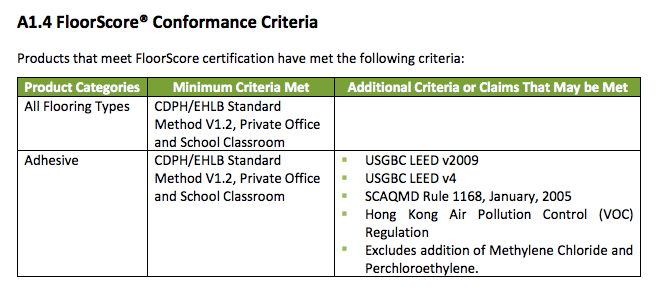
So I found the CDPH/EHLB Standard Method. Version 1.1. I couldn’t find version 1.2 online. Here’s the list of what they test for.
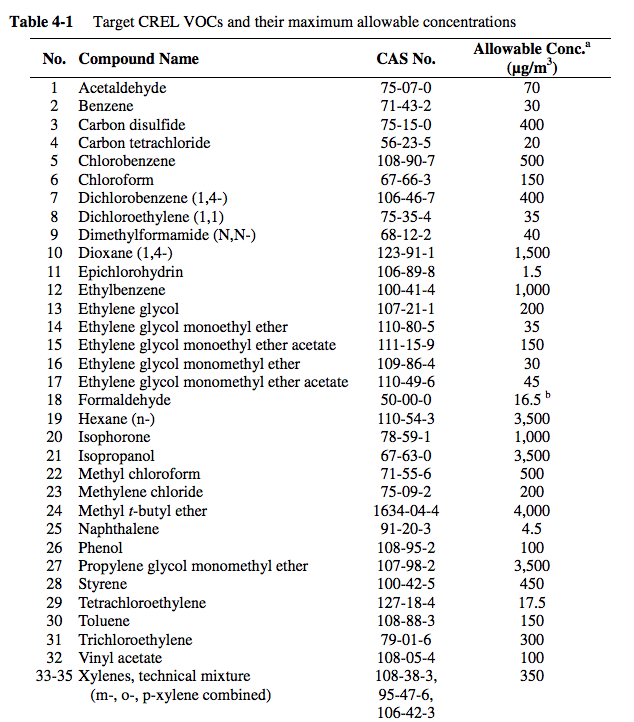
What needs to be tested for PVC vinyl flooring is PHTHALATES. There are no phthalates on this list of chemicals being tested.
So they can certify vinyl flooring that outgasses phthalates to “meet their standard.”
GREENGUARD does the same thing. They certify crib mattresses that outgas phthalates by not testing for them.
So I would not consider this FloorScore certified PVC flooring nontoxic.
This type of certification program where the industry gets together and certifies their products to be acceptable for indoor air quality is suspicious to me. I often see these programs (the carpet industry has one too) certifying products I would not recommend based on research of the toxicity of the materials they are using.
Medley
 Custom sofas built with your choice of materials—made in 4 weeks in Los Angeles. “None of our fabrics have fire retardants or stain finishes and we even offer 100% natural like cotton, hemp and wool, and some certified organic textiles as well..” This is a morph of the custom sofas that used to be at Viesso, by the original founders. “Realizing there is still so much more to do to disrupt the furniture industry, we knew it was time to break off our collection as its own brand.” Like Viesso, Medley lets you customize every aspect of your sofa, which gives you a lot of choice and requires that you make good choices. Standard materials are better than average but not really toxic-free, so skip those and go for the natural latex, organic cottons, They will send samples, and let you live with the finished sofa for 100 days. Free shipping (both ways if you return it). And they finance.
Custom sofas built with your choice of materials—made in 4 weeks in Los Angeles. “None of our fabrics have fire retardants or stain finishes and we even offer 100% natural like cotton, hemp and wool, and some certified organic textiles as well..” This is a morph of the custom sofas that used to be at Viesso, by the original founders. “Realizing there is still so much more to do to disrupt the furniture industry, we knew it was time to break off our collection as its own brand.” Like Viesso, Medley lets you customize every aspect of your sofa, which gives you a lot of choice and requires that you make good choices. Standard materials are better than average but not really toxic-free, so skip those and go for the natural latex, organic cottons, They will send samples, and let you live with the finished sofa for 100 days. Free shipping (both ways if you return it). And they finance.
VOCs from Consumer Products Now Produce more Smog Than Cars
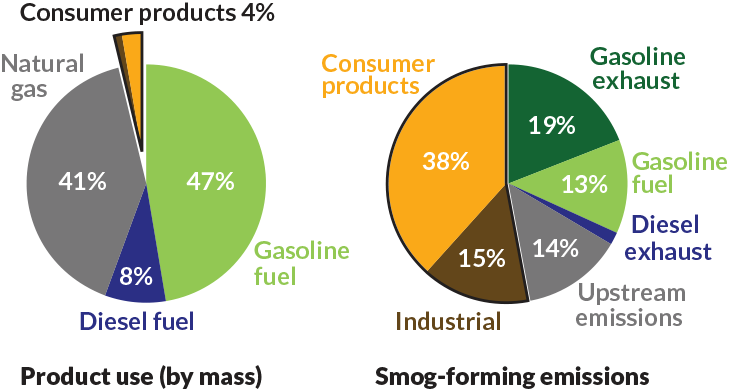
For decades, the focus on the source of outdoor air pollution has been on emissions from burning fuel from automobiles and factories.
But a new study shows “In urban areas, emissions from consumer goods such as paint, cleaning supplies and personal care products now contribute as much to ozone and fine particulate matter in the atmosphere as do emissions from burning gasoline or diesel fuel.”
Apparently programs to reduce pollution from car exhaust has been so successful that researchers are now able to see the impacts of other sources.
The study focused on VOCs that are derived from petroleum. Some VOCs can be harmful when directly inhaled, but they can also react with other molecules in the air to create ozone and other components of smog.
“15 times as much oil and natural gas is used as fuel than ends up in consumer products ranging from soaps, shampoos and deodorants to air fresheners, glues and cleaning sprays. And yet these everyday products were responsible for 38 percent of the VOC emissions, the researchers found, while gasoline and diesel emissions accounted for only 33 percent.”
SCIENCE NEWS: Household products make surprisingly large contributions to outdoor air pollution
Mango Wood

Question from Bonnie Johnson
Hi Debra,
I have been shopping for a new coffee table for my living room. I have noticed a lot of furniture made with mango woods. They are sold at Pier 1 and Cost Plus etc. Are they safe?
Debra’s Answer
Mango woods a new “sustainable” choice for furniture, as an alternative to traditional woods like oak and maple.
Mango trees are abundant in India, Southeast Asia, Mexico, Brazil and Australia, where mango is a popular fruit. In fact, mangoes are actually the most popular fruit in the world. I love them and often eat them myself.
Mango wood is the byproduct of an already thriving industry,
Once the trees get too tall to easily harvest the fruit, or stop bearing fruit altogether, they are harvested for timber and a new generation of trees is planted.
Harvesting wood that was previously burnt or left to break down naturally provides extra income to mango farmers, and gives furniture manufacturers an affordable hardwood that has the strength to bear weight needed for tables and chairs, yet is soft enough to work with easily.
Mango wood also happens to be water resistant.
It requires monthly polishing to avoid cracking due to dehydration.
Some natural ways to protect your mango wood.
Apparently mango wood is other [chemically treated before furniture manufacturing to prevent fungus attack]. Chromiated Copper Arsenate (CCA) and Copper Come Boron (CCB) wood preservatives are used, CB being less toxic.
It’s likely virtually all mango wood is treated and unlikely that they will tell you this at the point of sale.
However, these preservatives are not volatile and the particles could be contained with several coats of a toxic-free wood finish.
Chair Pads with Natural Fill
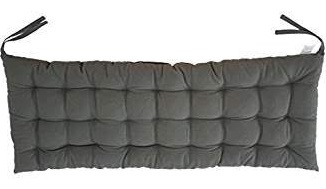
Buy 100% cotton chair and bench pads online.
Question from Stacey
Hi Debra,
I am trying to find affordable chairs for my kitchen table. I have uncomfortable metal chairs now and would like to at least add chair pads. I found some cotton-covered pads, however, the batting is a polyester fill. I cannot find any chair pads with a cotton batting. Would you recommend not using anything with a polyester fill?
Thanks!
Debra’s Answer
I know something about this. I have a metal desk chair and have the same problem.
Before that I had a wood desk chair with the same problem.
Unfortunately you can’t yet go into a store and purchase pillows with natural fill. All they sell is polyester. But online you can get pillows with cotton or wool or kapok fill that are quite comfortable.
I just bought the pillows and then wrapped cotton fabric around them with a design I liked. I didn’t even sew covers.
However, now—and I know this is going to sound funny, but it works—I sit on a folded plush cotton bath rug. It stays in place on the chair better.
You want to look for a “cotton chenille” rug WITHOUT a non-skid backing. Reversable rugs have no backing, just 100% cotton.
You can also just toss them in the washer and wash them and fluff them up in the dryer.
And if you want more plush, just pile them up on your chair until it is “just right.
Now that I said all that, I actually found some seat cushions on amazon with cotton fabric and cotton fill.
Shepherd’s Dream makes an organic wool and cotton Chair Pillow.
White Lotus Home makes their own pillows in many sizes with different organic filling.
And if you don’t find the size you are looking for, the would probably custom make it for you.
So see, there are lots of options.
Consumer Product Safety Commission Bans 5 More Phthalates in Toys and Child Care Products

Effective April 26, a new ruling with ban the use of five more phthalates in toys and child care products. This is in addition to the three phthalates in 2009, bringing to eight the total number of phthalates restricted from use in children’s toys and child care articles in concentrations exceeding 0.1 percent.
Phthalates are a common ingredient in soft vinyl and easily outgassed.
But watch out. Even if you see “phthalate-free” on a children’s product label, that doesn’t mean they contain zero phthalate. This refers only to the eight banned phthalates. There are still at least 18 other phthalates that could be present that have not been banned. All phthalates easily outgas from any plastics that contain them.
Research links phthalates with problems with the endocrine system and the liver, as well as cancer.
Numerous U.S. government agencies including the Centers for Disease Control and Prevention, The U.S. Department of Health, and the U.S. Food and Drug Administration (FDA) have expressed concern about phthalates.
In February 2009, the Consumer Product Safety Commission (CSPC) permanently banned three types of phthalates from crib mattresses, children’s toys, and other child care articles, specifically:
- di-(2-ethylhexyl) phthalate (DEHP)
- dibutyl phthalate (DBP)
- benzyl butyl phthalate (BBP)
At the same time, they placed a ban on an interim basis on three more types of phthalates, specifically:
- diisononyl phthalate (DINP)
- diisobutyl phthalate (DIBP)
- Di-n-octylphthalate (DnOP).
The Consumer Product Safety Improvement Act of 2008 also required the CPSC to appoint a Chronic Hazard Advisory Panel (CHAP) to “review the potential effects on children’s health of all phthalates and phthalate alternatives in children’s toys and childcare articles.” This review included the cumulative effects of exposure to multiple phthalates from all sources.
After nine years of review, the CPSC issued a final rule, effective April 25, 2018, prohibiting children’s toys and child care articles that contain concentrations of more than 0.1 percent on five additional phthalated, specifically:
- diisononyl phthalate (DINP)
- diisobutyl phthalate (DIBP)
- di-n-pentyl phthalate (DPENP)
- di-n-hexyl phthalate (DHEXP)
- dicyclohexyl phthalate (DCHP).
The Congressional prohibition on three phthalate chemicals under the CPSIA remains in full force and effect.
This seems to be the end of the investigation by the CPSC into phthalates. But there are other phthalates that may have similar health effects.
In 2014 the CHAP released “Report to the US Consumer Product Safety Commission by the Chronic Hazard Advisory Panel on Phthalates and Phthalate Alternatives.”
After assessing the risks of 14 phthalates (a list of “the most common phthalates” numbers 25 and there are certainly more) the CHAP found, “Although phthalates cause a wide range of toxicities, the most extensively studied is male developmental toxicity in the rat…specifically referred to as the ‘phthalate syndrome.’” And this “bears a resemblance to the “testicular dysgenesis syndrome” (TDS) in humans, which includes poor semen quality, testis cancer, cryptorchidism {the absence of one or both testes from the scrotum], and hypospadias {a congenital disorder of the urethra where the urinary opening is not at the usual location on the head of the penis], and which is hypothesized to have its origins during fetal life.”
Furthermore, exposure to multiple phthalates “act in an additive fashion in causing effects associated with the phthalate syndrome.”
The CHAP also repeatedly recommended that “the appropriate U.S. agencies obtain the necessary exposure and hazard data to estimate total exposure to the phthalate alternatives and assess the potential health risks.”
One more thing about phthalates: GREENGUARD certifies a number of crib mattresses with vinyl covers to meet their “low emissions” standards. These crib mattresses with vinyl covers pass the test because GREENGUARD does not test for phthalates.
Choose Organic Ice Cream

This morning I received an email from the Organic Consumers Association about Ben & Jerry’s annual Free Cone Day.
“There’s only one problem,” they wrote. “Ben & Jerry’s ice cream is never free—because we all pay for the health and environmental damage caused by Ben & Jerry’s factory farm dairy practices.
Last summer OCA announced their testing of Ben & Jerry’s Ice Cream contained traces of glyphosate.
But there are other choices.
I know here is Northern California we have organic ice cream made by a local dairy. You may have local organic ice cream in your community as well. I can buy it at natural food stores and local independent supermarkets.
Straus Family Creamery has been organic for about 30 years now, maybe longer. I used to live literally, right down the road from them, less than 10 miles away. It’s a long-established family-owned dairy farm. You can go tour the farm if you are in the area. If I remember correctly, they were the first to offer organic milk and cream in stores here, and it came in glass bottles (and still does). They are a good neighbor to the community and ecosystem and their ice cream is super delicious.
Take a look around your community and see what organic ice cream you can find.
Another Problem With Rugs: Shedding Particles

I received an email from Well + Good a few weeks ago asking for an expert quote.
They were doing a story about rugs shedding and wanted to know if particles from shedding rugs could affect your health.
This is something I hadn’t considered before because I’ve had my attention on rugs outgassing toxic chemicals, but apparently the shedding of particles from rugs is bad for your health too.
And apparently this is a big deal because there are A LOT of posts about it on the internet.
A few days ago I received a link to the finished post and learned a few things about rugs shedding and some tips on how to care for your natural fiber area rugs to reduce shedding.
WELL+GOOD: Why Your Rug is Shedding (and How It Could Be Bad for Your Health)
Thoughts about health + illness while lying in bed with the flu
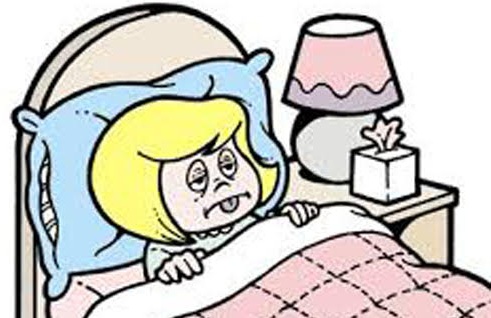
I’m not doing my regular newsletter today because I’ve literally been sick in bed with a flu since I sent the last newsletter.
I rarely get contagious illnesses, and this one was very unusual. It actually started at the beginning of February, but it was so subtle I didn’t recognize it as the flu. What I felt was exhaustion. So much exhaustion I couldn’t get up out of bed in the morning and couldn’t think enough to work unless I drank a cup of coffee (organic, of course!).
Then I started not thinking straight and just forgetting whole sections of time. Like forgetting to enter expenditures in my checking account register (something I routinely do every morning) and not noticing for four days.
And then I started to just feel unbalanced, like my body would just start tipping over when I was standing and I couldn’t walk a straight line.
I went to my Obamacare medical doctor and she just said I needed more sleep. So I slept more hours but the symptoms just kept getting worse and worse over two months until finally last Tuesday my body suddenly burst into aches and fever and coughing and runny nose and sleeping all day and night and can barely get out of bed or eat.
Yesterday was my first day out of bed where I could actually get up and do anything. And my body is no longer exhausted, I can think clearly and walk straight.
But I had some interesting insights.
WHOLEFOOD VITAMIN C
I had the idea I should take a a lot of vitamin C, but I didn’t want to take industrial vitamin C. Instead I kept a big bowl of those baby mandarin oranges by my bed. You know, the kind that are so popular now that are easy to peel and eat, don’t drip and are very sweet. I had just purchased five pound of these, organic, at my local farmer’s market, so I had a great whole food source of vitamin C the was really easy to eat in bed.
THE IMPORTANCE OF PRODUCT PERFORMANCE
Back in 1990, when I was was hired to do research and development for the founding of a green company, we had a formula we used for product development that we found to be true: first make the product work as well or better as the usual product, then make it green. And if you could also give it a competitive price, then it was a green product that would sell.
I also remembered a moment way back in the beginning when I was first coming to terms with the fact that I needed to now live without toxic chemicals to save my life. I didn’t want to give up my favorite things. Like my signature shade of red lipstick that took me so many years to find (ah, what was important to me then!) I made a decision right then that I not only needed to find things that were nontoxic, they also had to be beautiful and pleasurable. Little did I know at that moment that to open the door to the world of things nontoxic was also opening the door to the pleasures of natural fibers against my skin, the deliciousness of organic food and many other delightful experiences of life.
You may remember last week I wrote a post about The Best Toxic Free Toilet Paper. I went to my local independent supermarket and looked on the shelf and purchased two brands that looked similar because they were each made with what looked at first glance to be the same materials from a toxic viewpoint. So I bought a package of each one and brought it home. One turned out to be the best toilet paper I could find. The other turned out to have so many problems I didn’t even include it in the post.
But here’s the kicker for me. The best toilet paper turned out to be soft and lovely to use. The other one was rough and had no consideration of user experience at all.
For me, really, as I pick products I’m looking for products that meet my nontoxic criteria, but they also bring me into living in this whole different delightful world that I love and feel happy in every day. And I don’t tell you that enough.
SOURCES OF SYMPTOMS
In my work I write a lot about the association between symptoms and exposure to toxic chemicals. In this case symptoms are a signal from the body that something has entered the body that it doesn’t like and we need to stop doing that.
But this week in bed with the flue reminded me there are other reasons for symptoms.
The symptoms I was experiencing from the flu virus were actually indicators that my body was hard at work fighting the virus. Symptoms that remove body wastes quickly—like sneezing, coughing, runny nose, diarrhea, vomiting, and the like—are trying to get foreign invaders out of your body so your body can heal. These are symptoms we want to have, which benefit us, and should not be suppressed.
Then there are allergic reactions, which operate in an entirely different way than toxic poisoning. And individual sensitivities.
And finally, symptoms may develop when your body is detoxing to remove toxic chemicals that your body has stored to keep them out of it’s bloodstream. Sleepiness and headaches are often indicators that detox is happening a little too fast.
As uncomfortable as I was, I just waited out my symptoms and let my body do it’s job. And while I could get out of bed today and write this, I’m going to take it easy for the rest of the week so I can full recover and get back to my regular schedule.
ILLNESS AS A TIME OF HEALING AND REST
We tend to think of illness as “something wrong” with our bodies, but this past week, I’ve been realizing how right it has been to be sick right now.
For the past year I’ve been going and going and going from one thing to the next, making major life changes bac-to-back without slowing down for a second.
And my body finally said, “Enough! Rest! Let us heal and restore!”
Our bodies need a balance of activity and rest. It’s during sleep and rest that our bodies repair everything.
THE GIFT OF THIS WEEK’S ILLNESS
The truly amazing part of this experience was to observe that even though my body and mind were being ravaged by this virus, my creative side came out in full force.
I’ve been working on re-imagining my work and designing a new website and while my body was burning up with fever and my mind couldn’t put two sentences together, creative ideas and realizations were coming through just fine day and night. I’ve been keeping a pad of paper next to my bed and it’s full of scribbles and drawings.
It’s like having my body be sick right now is part of the greater creative process, so I can take my attention off everything else I usually do and just have creative time.
I am just getting so much clarity on everything. Wow! I really can’t wait to show this to you.
SEE YOU SOON!
OK, OK, enough for now.
I expect to be back next Tuesday with my usual newsletter and MUCH more very soon.
Pine Street Natural Interiors
 This is the interior design website of my friend Rowena, who I have known for years. She knows absolutely everything about toxics in interior design products and carries only the most natural, organic and pure. “We strive to create beautiful, colorful, and environmentally friendly living spaces using healthy materials that are also socially responsible.” She carries furniture, beds and bedding, area rugs and carpeting, window coverings, upholstery fabrics, accents, lighting, outdoor furniture and accessories, nursery and children’s bedrooms and playroom, and beds and toys for pets. Also home office and storage.
This is the interior design website of my friend Rowena, who I have known for years. She knows absolutely everything about toxics in interior design products and carries only the most natural, organic and pure. “We strive to create beautiful, colorful, and environmentally friendly living spaces using healthy materials that are also socially responsible.” She carries furniture, beds and bedding, area rugs and carpeting, window coverings, upholstery fabrics, accents, lighting, outdoor furniture and accessories, nursery and children’s bedrooms and playroom, and beds and toys for pets. Also home office and storage.
 |
Listen to my interviews with Rowena Finegan, BBEC, Managing Partner and Interior Designer of Pine Street Natural Interiors |
Hnina Gourmet Artisan Chocolatier
 Raw dark chocolate truffles and sprouted nuts & seeds gourmet treats, made by a French woman to address her need for pure, raw, dark chocolate and a gourmet experience. “we use 100% raw organic natural and unprocessed traceable ingredients originating from both local organic farms and the world’s best sources of fair-trade sustainable pure organic fair trade raw cacao, sprouted nuts, sprouted seeds, raw honey, pure maple, dates and pure organic vanilla beans.. The quality of each pure ingredient is the reason for the taste, healthy properties and overall quality of the finished product. We tolerate no GMOs or harmful pesticides; we use no refined processed sugar, soy lecithin or dairy, no colorants or preservatives, no palm oil, vegetable oil, high fructose syrup or corn syrup, no wax or other shining agents, many of which are often present in the most popular, even high end chocolates.
Raw dark chocolate truffles and sprouted nuts & seeds gourmet treats, made by a French woman to address her need for pure, raw, dark chocolate and a gourmet experience. “we use 100% raw organic natural and unprocessed traceable ingredients originating from both local organic farms and the world’s best sources of fair-trade sustainable pure organic fair trade raw cacao, sprouted nuts, sprouted seeds, raw honey, pure maple, dates and pure organic vanilla beans.. The quality of each pure ingredient is the reason for the taste, healthy properties and overall quality of the finished product. We tolerate no GMOs or harmful pesticides; we use no refined processed sugar, soy lecithin or dairy, no colorants or preservatives, no palm oil, vegetable oil, high fructose syrup or corn syrup, no wax or other shining agents, many of which are often present in the most popular, even high end chocolates.
Forces of Nature
 The world’s first USDA Certified Organic, FDA registered, homeopathic medicine. ” We source the purest ingredients from across the planet to bring you all-natural treatments that work.”
The world’s first USDA Certified Organic, FDA registered, homeopathic medicine. ” We source the purest ingredients from across the planet to bring you all-natural treatments that work.”
Oregon Soap Company
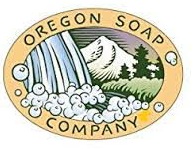 Bar, brick, liquid, and foaming soaps, all certified organic by Oregon Tilth. Many are scented with essential oils, but there are also unscented soaps and soaps that contain ingredients like cinnamon, which have their own aroma. One of their unscented soaps contains oatmeal and honey. Save money by purchasing “Assorted Scraps”—assorted scents and odd shapes, but still organic soap. Also shampoo bars. They even sell organic restroom soap and dispensers for your workplace.
Bar, brick, liquid, and foaming soaps, all certified organic by Oregon Tilth. Many are scented with essential oils, but there are also unscented soaps and soaps that contain ingredients like cinnamon, which have their own aroma. One of their unscented soaps contains oatmeal and honey. Save money by purchasing “Assorted Scraps”—assorted scents and odd shapes, but still organic soap. Also shampoo bars. They even sell organic restroom soap and dispensers for your workplace.
How Long Does it Take for VOCs to Outgas From Paint?

I’ve been working with a client for more than a month on outgassing her apartment using a “bake-out”.
She now says that the paint smell has gone to a point where a normal person wouldn’t smell it, but she still reacts to the apartment after being there for an hour.
She sent me a great blog post I want to share with you INDOOR AIR NERD: How Long Does it take for VOCs to Dissipate?.
The writer of this post, who is a Professional Engineer who does air quality testing, notes that testing shows it can take 2-3 months for air quality to return to normal after painting.
But he also tells of a home where he measured the air quality and after almost seven months there were still VOCs present. His conclusion was that the VOCs still lingered because the house was built to be energy efficient and did not have mechanical ventilation.
To me, this really shows that the construction of the building can make a BIG difference in how long it takes for paint to outgas.
Things that can effect the rate of outgassing include:
- insulation
- “tight” construction (which decreases the natural air exchange found in older buildings)
- mechanical ventilation (air exchanges from HVAC systems)
- natural ventilation from the opening of doors and windows
Less ventilation means less reduction of VOCs. More ventilation means faster outgassing.
But the thing to remember is that the outgassing will continue until the paint or finish is completely CURED.
Paints and finishes go through a process of three phases:
- “liquid” is a mixture of solids and particles and VOCs (if present). This allows you to apply the paint or finish to the surface
- “dry to touch” happens within hours of applying the paint. You can touch it and it won’t come off on your hands and you can apply the next coat. But it is not completely dry all the way through.
- “cured” means that all the liquid and VOCs have volatilized and there is only the solids of the paint left. At this point there should be no more outgassing. During the curing process the solid components in the paint contact and adhere to each other creating a continuous coating. When fully cured, you can wipe or wash the painted surface withoutharm, and the paint is no longer vulnerable to damage by water or chemicals.
Different types of paints take different periods of time to cure. You should find out and consider the cure time for any paint before you apply it. By doing so you will know what to expect in terms of how long it will continue to outgas VOCs or other chemicals.
You can check with the manufacturer of any paint to get the cure time.
I see most latex paints say it takes “up to 30 days for a ‘full cure,’” depending on color choice, humidity, ventilation and temperature.
Here are some tips from ECOS Paints on How to Make Paint Dry Faster
- Keep a fan on. Multiple fans oscillating in the room will speed up the dry time considerably. You want to have a good amount of air circulation, but don’t have the fans on high if the room is dusty because it will ruin your paint finish.
- Apply light coats. If you’re using a thicker nap on your roller sleeve, it might cause you to apply far more paint than what you need, increasing your dry time substantially. Two uniform coats of paint will always look better than one really thick one, so it’s best to apply light coats. You should feel your roller sleeve starting to dry out as you apply light pressure towards the end of a few rolling patterns. If the paint is squishing out of the sleeve when you apply pressure, you still have too much paint in the sleeve and should continue rolling before getting more paint from the tray.
- Keep the room warm. If it’s winter and you’re painting in a space that gets a bit drafty, using a space heater is a good idea. Also, if it’s cold and your windows are leaky, that could affect how long the paint takes to dry near them. Some older homes that aren’t that well insulated can have fairly cold exterior facing walls. It’s still fine to paint them in the winter, but they might dry slower.
- Keep the humidity down. When it’s really muggy in the summer, paint dries more slowly. Actually, just painting in a closed room increases the humidity even on a normal day, so open the windows if you can and get some fresh air in the room.
- Paint one wall at a time. We always recommend this but, it’s easy to forget when you’re cutting in. If you cut in one wall and then paint it before moving on to the next, then that first wall might be dry by the time you finished the other three, so you’ll have no downtime during the project.
- Use a zero-VOC* paint like ECOS Paints. Zero-VOC* paints naturally dry faster. Also, our rich pigments and premium formula cover better, so there’s less tendency to apply coats that are too thick.
Of course the best thing is to choose a paint with the least VOCs you can in the first place.
My favorite wall paint is Old Fashioned Milk Paint, which is made from milk and other natural ingredients, and has no VOCs. It actually smells like a mug of warm milk as you are painting it on the walls. But there are many other low- and zero-VOC paints available now as well.
DIY Toxic Free Pet Bed
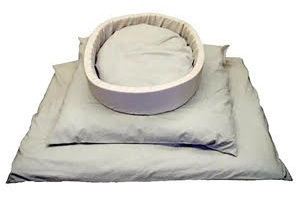
Here’s an organic pet bed for dogs and cats, sold in the USA at Only Natural Pet
Question from Kimberley
Hi Debra,
I have just came across your website and love all your reviews and info on non toxic products!
I am specifically looking for an all natural dog bed for my new puppy and wondered if you had any UK supplier suggestions? I noticed you offered a US company, but I would love to find one closer to home. I’m also happy to do a DIY dog bed if you have any suggestions on this?
I’m not sure you do requests like this, but I thought I’d give it a go on the off chance.
Thanks so much for your time.
Debra’s Answer
I love the UK and would be happy to come there and find all your nontoxic products, but at the moment mu knowledge is limited to the USA.
But since you are willing to make your own, here are my suggestions.
A pet bed is basically a big pillow that you fill with something. So to make a natural pet bed, just use natural materials.
For the cover, choose GOTS certified organic cotton if you can get it. Otherwise any cotton fabric you like that does not have a permanent press finish. Something like a good sturdy canvas would be a good choice.
Here’s a useful post called What Material Is Good to Fill a Dog Bed? . They suggest
- Foam – so I would go with GOLS certified organic latex foam
- Cedar Chips – these smell nice and also repel bugs naturally.
- Old Clothes – my favorite because you can take them out and wash them and wash the cover too and it will be clean, clean, clean.
Take a look at a commercial pet bed made with synthetic materials for design ideas, then make what you like with natural materials.
The Felt Company
 All kinds of felt fabrics, from straight-off-the-sheep wool to dyed wool felt in many colors. Also polyester and recycled felt, so read descriptions carefully.
All kinds of felt fabrics, from straight-off-the-sheep wool to dyed wool felt in many colors. Also polyester and recycled felt, so read descriptions carefully.
Linen Dreams
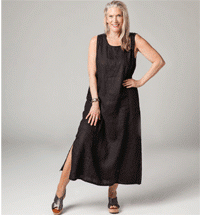 Nightwear for women made mostly of linen, some items made of cotton. Loose-fitting simple designs can be worn to bed or around the house, some even are appropriate to wear elsewhere. Some colors and patterns. Affordable prices for linen.
Nightwear for women made mostly of linen, some items made of cotton. Loose-fitting simple designs can be worn to bed or around the house, some even are appropriate to wear elsewhere. Some colors and patterns. Affordable prices for linen.
4 Legger
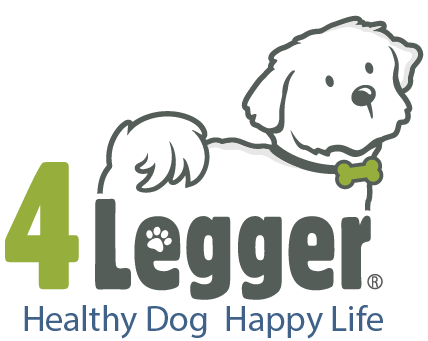 Dog shampoo certified to USDA organic food standards. “We aren’t your typical dog shampoo company. We’re safer and better because for us it is personal. We’re on a mission to change an industry by reducing toxins in pet grooming products and educating pet parents so they can enjoy the company of their best friends for years and years! ”
Dog shampoo certified to USDA organic food standards. “We aren’t your typical dog shampoo company. We’re safer and better because for us it is personal. We’re on a mission to change an industry by reducing toxins in pet grooming products and educating pet parents so they can enjoy the company of their best friends for years and years! ”
Armstrong’s All Natural
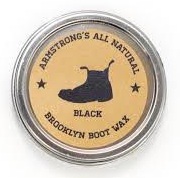 All natural leather care products, including boot wax, boot shine, leather conditioner, leather wax and saddle soap, plus genuine natural wood and horsehair buffing brushes. “ARMSTRONG’S ALL NATURAL products are handmade in small batches in New York, USA. Our mission is to refocus American manufacturing by locally sourcing pure, natural ingredients that support sustainable farming practices in order to produce the highest quality handcrafted, artisanal products possible. We use minimal, high-recyclable-content packaging and we have essentially zero waste. Since we do not use synthetic chemicals, any “waste” is diverted to our garden or compost system, if not recycled. We use certified organic ingredients whenever possible.” Also other interesting leather products and accessories.
All natural leather care products, including boot wax, boot shine, leather conditioner, leather wax and saddle soap, plus genuine natural wood and horsehair buffing brushes. “ARMSTRONG’S ALL NATURAL products are handmade in small batches in New York, USA. Our mission is to refocus American manufacturing by locally sourcing pure, natural ingredients that support sustainable farming practices in order to produce the highest quality handcrafted, artisanal products possible. We use minimal, high-recyclable-content packaging and we have essentially zero waste. Since we do not use synthetic chemicals, any “waste” is diverted to our garden or compost system, if not recycled. We use certified organic ingredients whenever possible.” Also other interesting leather products and accessories.
California Coast Naturals
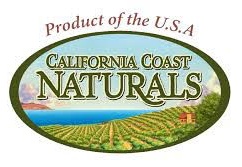 California grown, certified organic black and green olives and olive oil—hand-picked and hand-packed. Plain, stuffed, and flavored (sweet balsamic sundried olives, anyone?). Their Sun Dried Black Olives are the very olives used in the famous Black Olive Brittle & Goat Cheese Ice Cream featured at Salt and Straw.
California grown, certified organic black and green olives and olive oil—hand-picked and hand-packed. Plain, stuffed, and flavored (sweet balsamic sundried olives, anyone?). Their Sun Dried Black Olives are the very olives used in the famous Black Olive Brittle & Goat Cheese Ice Cream featured at Salt and Straw.
Millions Now Known To Have Multiple Chemical Sensitive (MCS)

Anne Steinemann PhD has been a leading researcher studying the health effects of fragrance in consumer products for many years.
Her latest study assesses the prevalence of multiple chemical sensitivities (MCS), its co-occurrence with asthma and fragrance sensitivity, and effects from exposure to fragranced consumer products.
She concluded that the prevalence of diagnosed MCS has increased over 300%, and self-reported chemical sensitivity over 200%, in the past decade. She recommended implementation of fragrance-free policies to reduce adverse health and societal effects.
Results of this study provide evidence that MCS is widespread and increasing in the US population: an estimated 25.6 million adults are diagnosed with MCS, and an estimated 51.8 million adults report chemical sensitivity. Using the same criteria to assess MCS and chemical sensitivity as prior US national prevalence studies, this represents an increase of 300% in diagnosed MCS and 200% in self-reported chemical sensitivity in a little more than 10 years.
In addition, among individuals with MCS, 86.2% report adverse health effects from exposure to fragranced consumer products. Thus, individuals with MCS are proportionally more likely to be fragrance sensitive than individuals without MCS (prevalence odds ratio 16.8; 95% confidence interval 10.3 to 27.5).
As a consequence, individuals with MCS are prevented from accessing restrooms, businesses, workplaces, and public places due to risk of adverse health effects—some potentially disabling—from fragranced consumer products. Notably, exposure to fragranced consumer products is associated with lost workdays or a job, in the past year, for 11.0% of the adult population with MCS or chemical sensitivity, representing an estimated 22 million Americans. While researchers continue to investigate which chemicals or mixtures of chemicals in fragranced consumer products could be associated with adverse effects,18 a practical step in the meantime would be to reduce exposure to the products. For instance, 71.0% of those with MCS would support fragrance-free policies in the workplace, and 82.1% would prefer fragrance-free health care facilities and professionals, as would a majority of the US general population.
You can read other articles on the health effects of frangraced consumer products on Dr Steinneman’s website.
including:
Fragranced consumer products and health effects in America
Air fresheners and indoor air quality
Felted Wool Shepardess Jacket
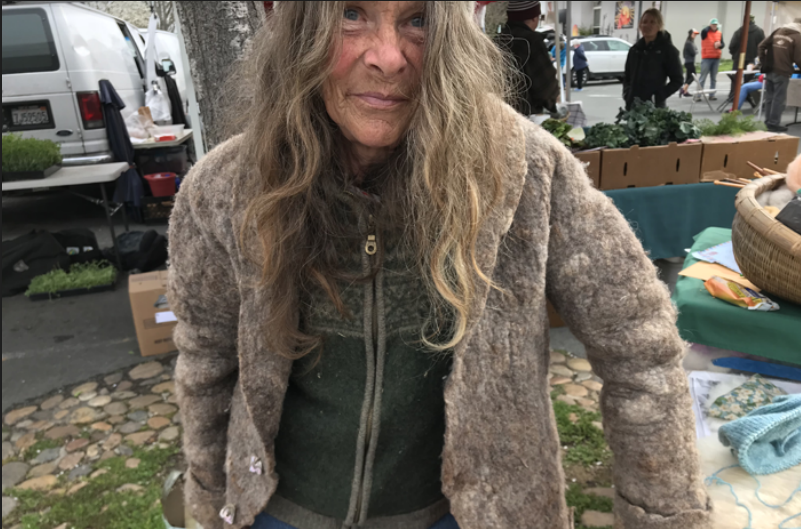
Shepardess Hazel Flett of Bodega Pastures wearing her fleece wool jacket at the Sebastopol Farm Market, handmade from the wool from her sheep.
It’s been cold here in California this week. Cold and rain and more to come.
So one of my favorite vendors at the Sebastopol Farm Market—where Larry and I go every Sunday morning—was wearing her felted wool jacket.
“Stay warm!” I said as we walked by and waved to Hazel.
“I am,” she replied. “The wind doesn’t go through my felted wool jacket.”
Felted wool jacket?!?!?!?!??!?!!
Years ago my friend Eliana, who founded Shepherd’s Dream introduced me to felting. She made a queen-sized felt for my bed and I’ve been sleeping on it since. She now makes whole “mattresses” from layers of wool felts at Heartfelt Collective. When I got my felt for my bed, my first thought was, “I want a felt coat!”
Felting is a process of making a sort of fabric from wet wool, where the coil-like wood fibers wrap around each other.
Hazel’s jacket is made of wool from her own sheep, so it contains all the colors of their wool.
She also pointed out that there are no seams because the entire jacket is pieced together by felting.
Of course, one can’t buy a felted jacket. I have to wait until the woman who teaches felting gives the felted jacket workshop again and then one need’s to felt one’s own, specific to one’s own body.
And of course, I will be at this workshop.
THIS is what we should be wearing.
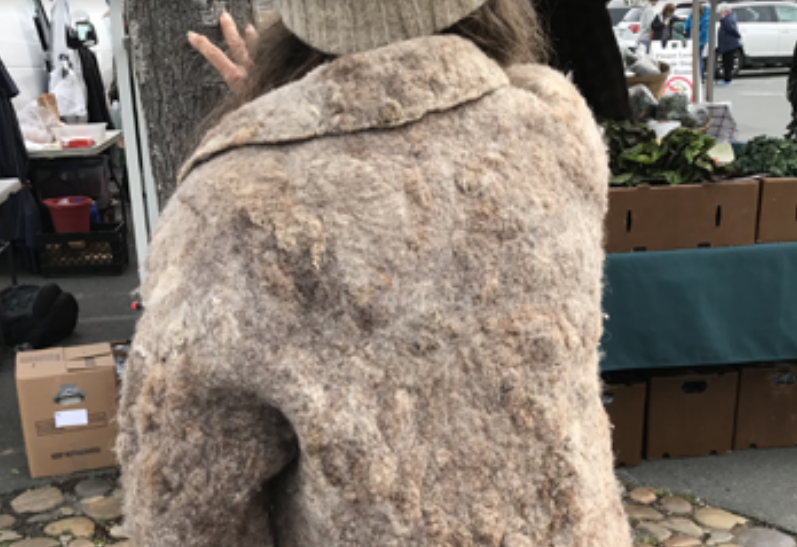 |
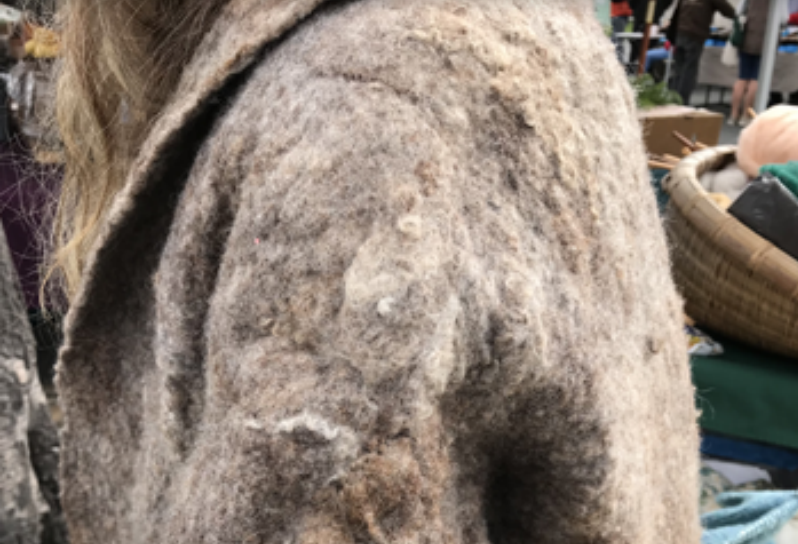 |
* * * * *
Now all that said, I DID find two felted (aka “boiled”) wool coats online. Don’t know anything about them except what’s in the descriptions, so if you explore these, please leave comments.
Peruvian Connection Halden Alpaca Felted Coat
Peruvian Connection Tuileries Baby Alpace Reversible Coat. This one is more like what I think of as a perfect coat—like a big blanket with arms.
Continuing to search I see that there are many coats that come up as “boiled wool” or “felted wool” but then the jacket is made with polyester linings, etc. The above were the only three I could find that were 100% unlined wool.
Good Box Spring

Question from Nick
Hi Debra,
Wanted to know if you know a good non toxic healthy box spring or foundation for under a mattress?
Debra’s Answer
Actually I had never thought about this before.
I bought a wood slat frame for my natural mattress years ago and I think most people do that. These are widely available. The least expensive are those from IKEA, which I have purchased in the past and recommended to readers and clients. Nobody has ever complained to me they didn’t like them. But there are many others. Get unfinished wood and leave unfinished or apply a toxic free finish.
You can also get metal bed frames, also many available online. If you have a spring mattress you can put it right on the metal bed frame. For those of you with futon-type mattresses, you’ll need to get a “bunkie board” which is just the wood slats that you can put in any metal bed frame. Here’s one made of solid wood slats . Read descriptions carefully as some are made from glue laminated wood strips.
I had an assumption that all the natural mattress manufacturers would make box springs, but apparently they don’t.
Here are some box springs made with organic and natural materials:
Here is a very basic metal frame that can be used alone or fit into any bed frame
Classic Brands Hercules Heavy-Duty 14-inch Platform Metal Bed Frame
Allbird Shoes
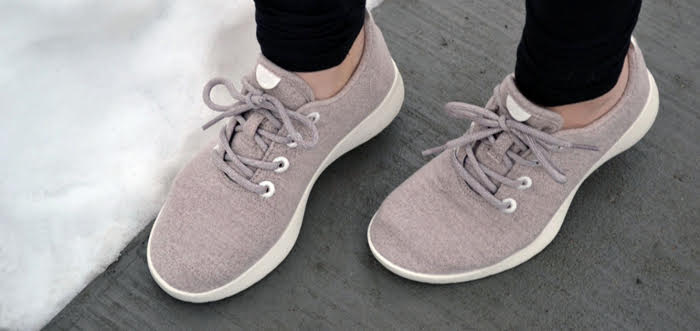
Allbirds advertises their shoes as “wool” but it’s really a proprietary fiber made from wool and undisclosed ingredients.
Question from Heather
Hi Debra,
I am wondering about Allbird shoes and your thoughts? I am desperately trying to find shoes for my kids and elements age boys in Seattle need good shoes. I love Pololo but only found one place in USA that sells them and sizes are slim. What are your thoughts?
Debra’s Answer
First, I see that in addition to this question, you also made some other comments, including that Campers have polyester and polyurethane in them.
As you have found, it’s very difficult to find shoes that are 100% natural and even if you find them, they are often not available or affordable.
Given the state of the market today, some product categories are better than others with regard to having toxic free products available.
Shoes are one of those categories.
You commented specifically that Campers have polyurethane and polyester. Not sure where the polyester is, but I believe the soles are polyurethane. I have a pair of Campers and I wear them almost everyday. I’ve actually been wearing Campers for years and have never had a problem with the release of any kind of odor from these shoes.
In terms of toxic materials used in shoes, I personally will accept polyester and polurethane in a vegetable-tanned shoe rather than wear a pair of shoes made with PVC or chemical-tanned leather which are much more toxic.
But you asked me about Allbirds.
Looking at their website I see that they have shoes made from “Wool” and other shoes made from “Tree.”
On their FAQ page they state that their “Wool” is “proprietary merino fabric…” Proprietary wool fabric. This sounds like wool mixed with some other material. And they are not going to tell you what it is. So it’s not 100% wool. And no information on chemicals that might be used in the raising of the sheep.
Their “Tree’ fiber is TENCEL(tm), a manmade fiber that is made from plant cellulose—in this case from trees—mixed with chemicals. The trees are from responsibly managed forests, but your body doesn’t recognize Tencel as a natural fiber because it isn’t.
So basically you have a company that is making shoes out of wool and tree turned into industrial fibers and marketing them as natural.
On their basic page about the shoe materials they state:
- their laces are 100% recycled polyester.
- insoles are their proprietary merino wool fabric (with undisclosed ingredients)
- the sole is “proprietary low-density foam” (again undisclosed ingredients). It’s pretty likely it’s polyurethane foam. I’m not concerned about the polyurethane, I’m concerned about the chemicals that are used to make it into foam.
I prefer Campers.



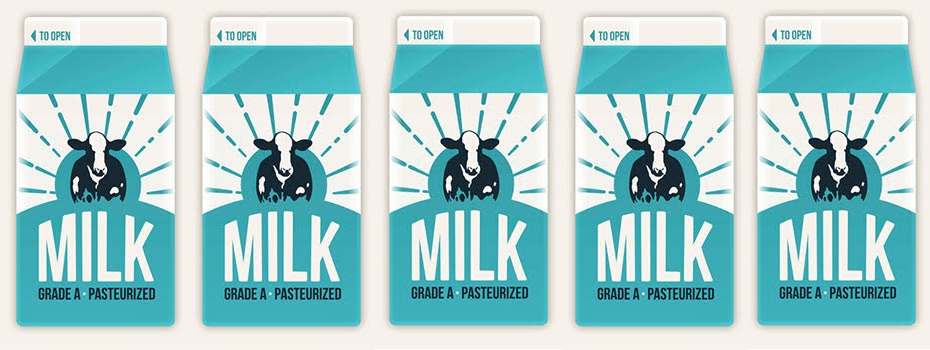

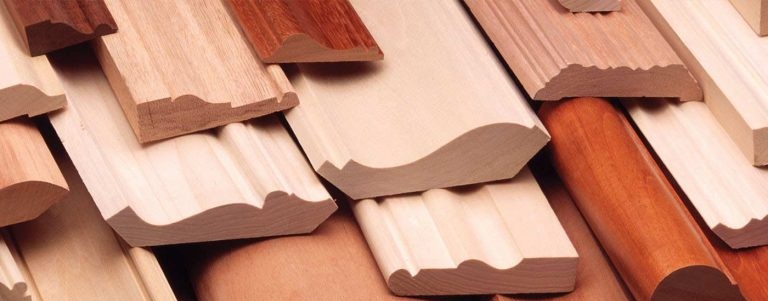
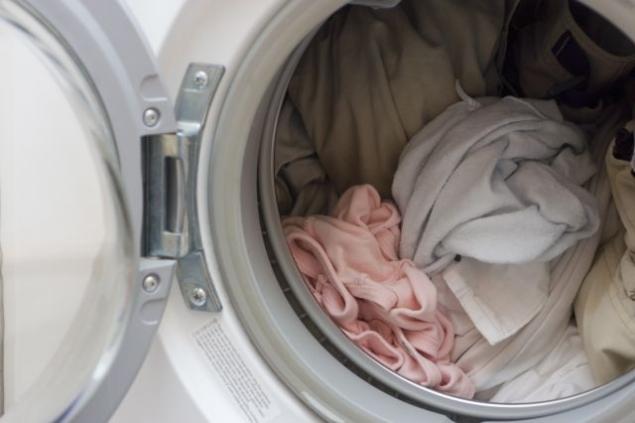
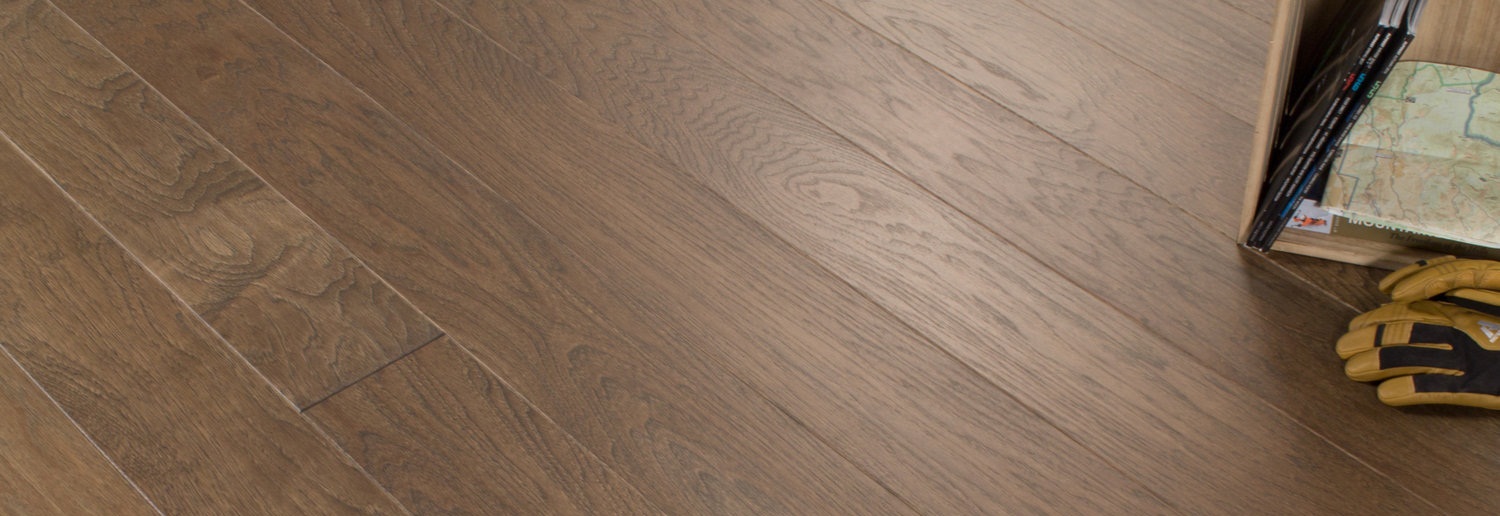
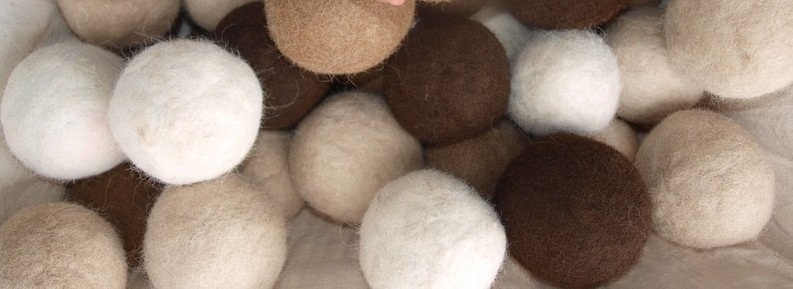


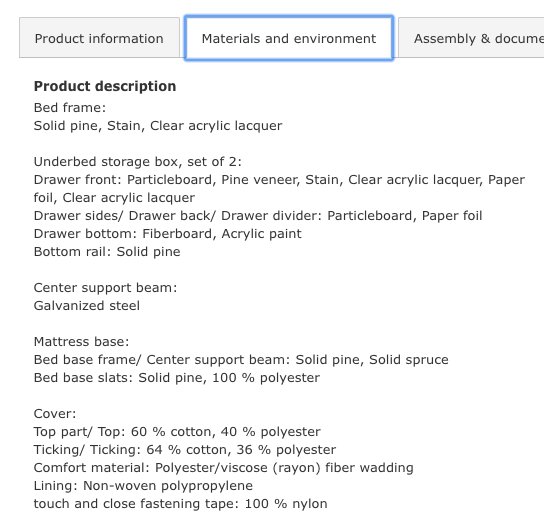
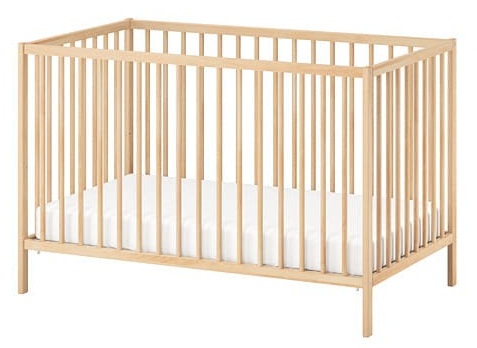

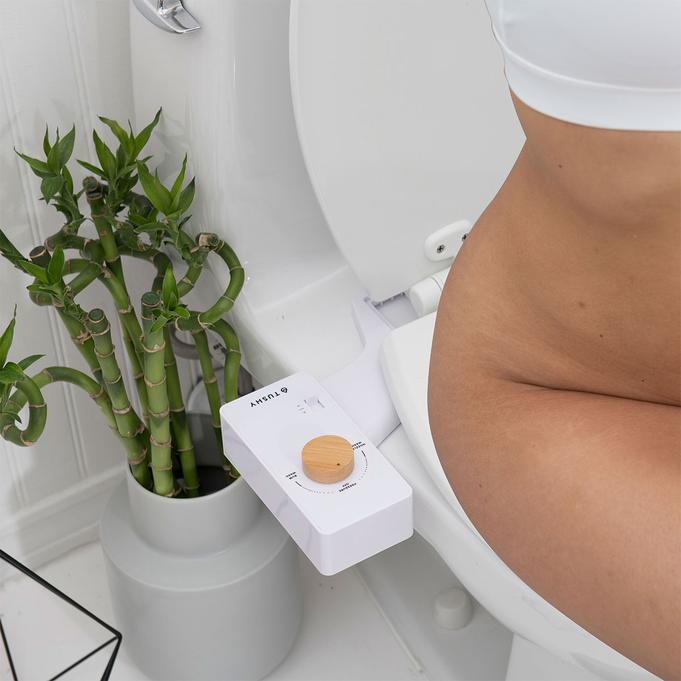
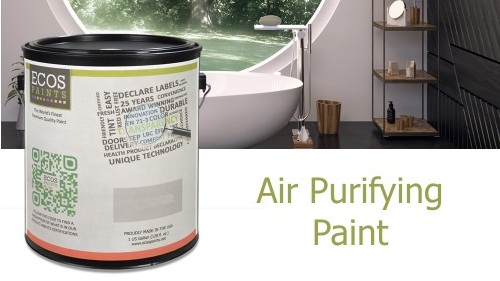
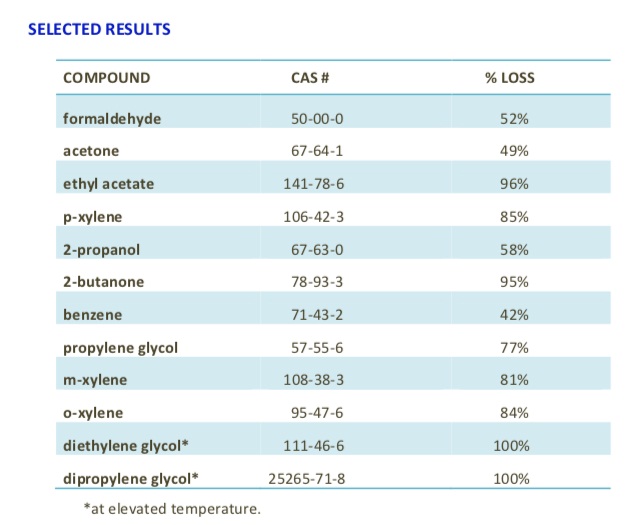
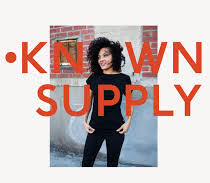


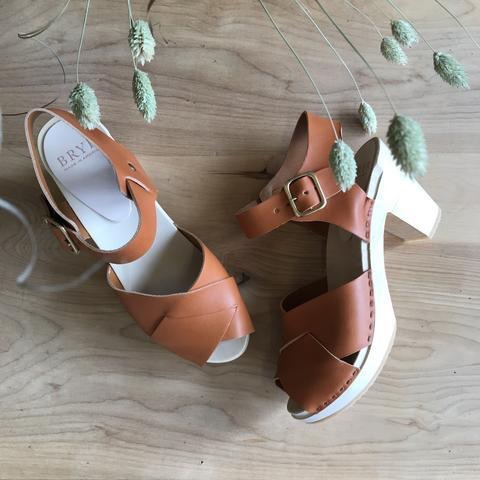
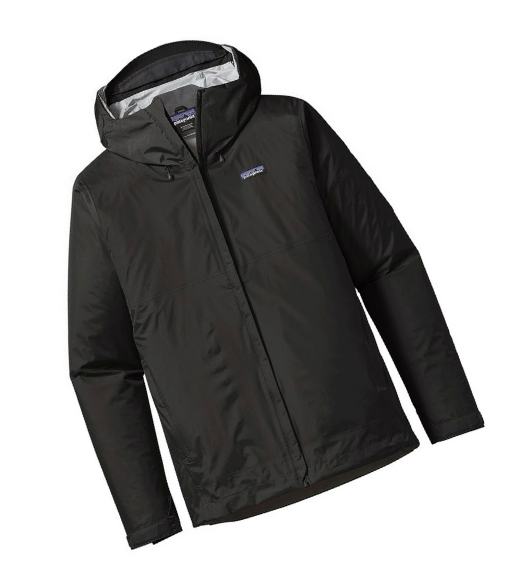

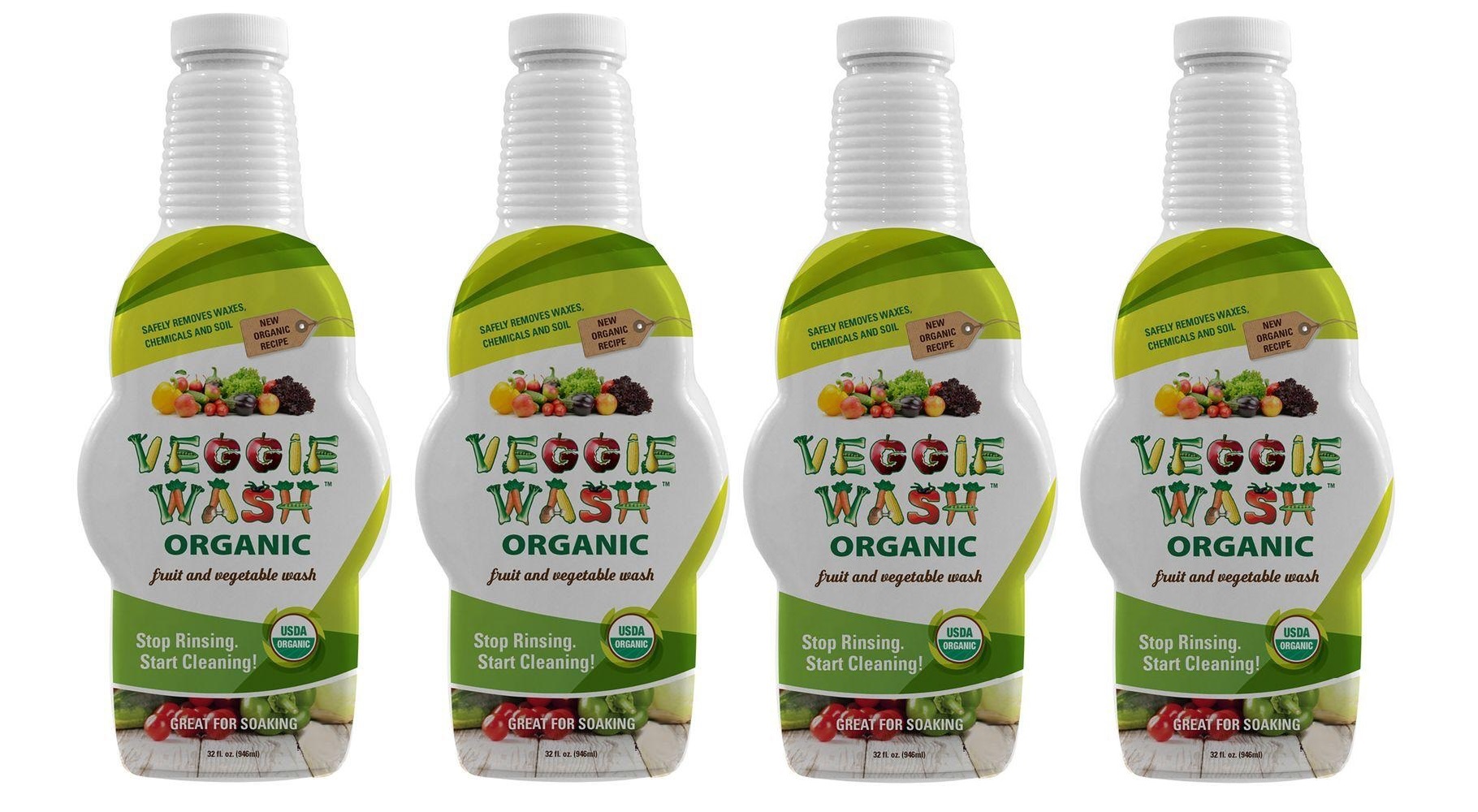

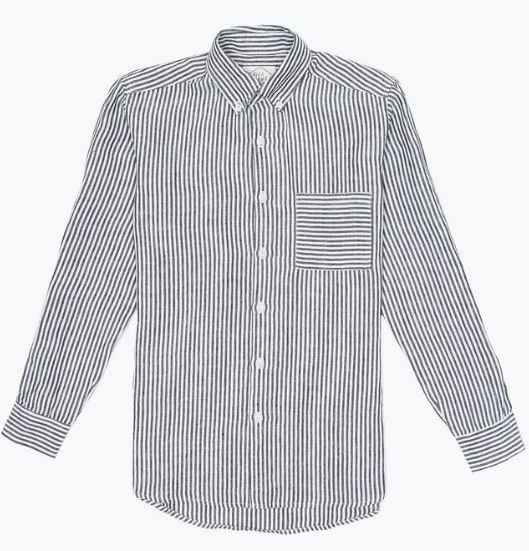

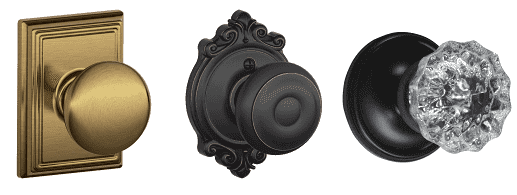
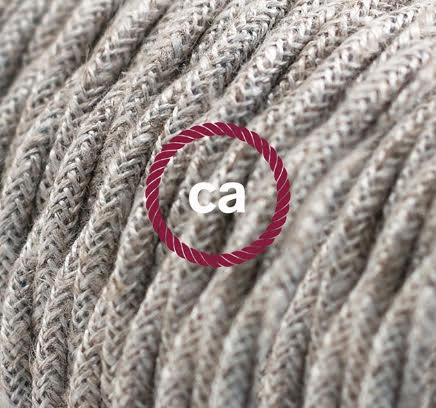
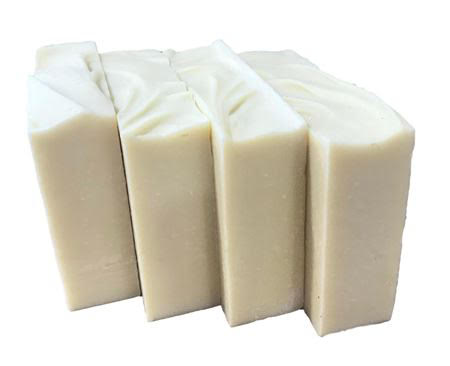
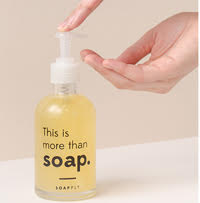
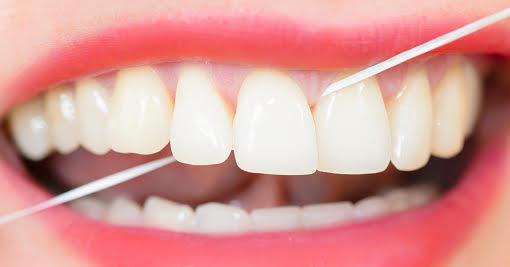
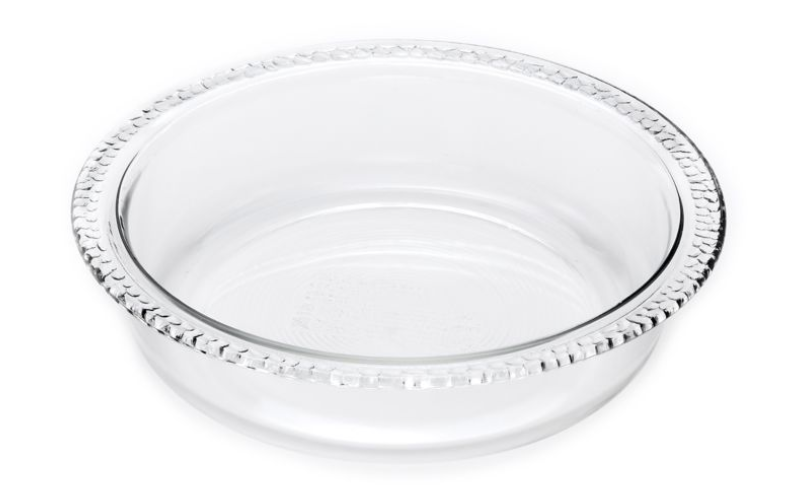









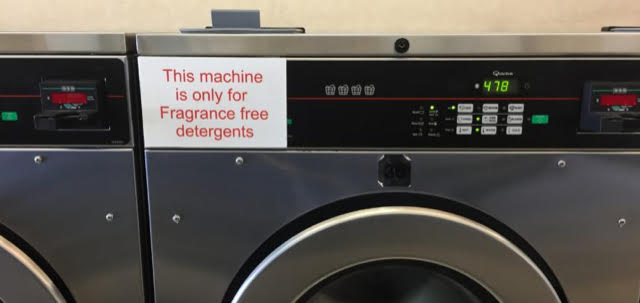






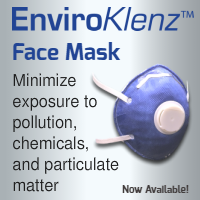
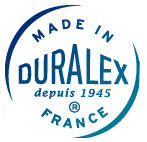 Clear tempered glass tableware made from heat-tempered glass.
Clear tempered glass tableware made from heat-tempered glass. 






